12/31/12
Filed under:
General
Posted by:
site admin @ 10:46 pm
MAY YOU BE EVER HAPPY, WELL AND SECURE !
MAY YOU LIVE LONG !
MAY ALL SENTIENT AND NON-SENTIENT BEINGS BE EVER HAPPY !
MAY YOU EVER HAVE CALM, QUIET, ALERT,ATTENTIVE AND
EQUANIMITY MIND WITH A CLEAR UNDERSTANDING THAT
EVERYTHING IS CHANGING !
After APOLLO 12 , if it was APOLLO 12A
Then after 01-01-2012 will it be 01-01-2012A ?

010113 TUESDAY LESSON 797
from FREE ONLINE eNālāndā Research and
Practice UNIVERSITY through http://sarvajan.ambedkar.org
Majjhima மத்திம Nikāya நடுத்தரமான நீள அளவு திரட்டுகள்
— The discourses of medium length —
[ majjhima: medium ]
மத்திம (நடுத்தரமான) நிகாய (திரட்டுகள்)
புத்தரால்
கொடுக்கப்பட்ட 152 மத்திம ( நடுத்தரமான நீட்சி ) பல்வேறு வகைப்பட்ட
விஷயங்கள் செயல் தொடர்பு உடன் போதனையுரைகள் கொய்சகமாக்கப்பட்டது.
Majjhima
மத்திம Nikāya நடுத்தரமான நீள அளவு திரட்டுகள் புத்தரின் பல்வேறு
வகைப்பட்ட விஷயங்களின் செயல் தொடர்பு உடன் 152 கொய்சகமாக்கப்பட்ட மத்திமநீள
அளவு திரட்டுகள்
>> Tipiṭaka >> Sutta Piṭaka >>
Majjhima Nikāya-மூன்று கூடைகள்— The words of the Buddha புத்தரின்
வார்த்தைகள்—Majjhima மத்திம Nikāya நடுத்தரமான நீள அளவு திரட்டுகள்
MN 2 - (M i 6)
Sabbāsava Sutta
எல்லா களங்கங்களின் நெறி முறைக் கட்டளை ஆணை
புத்தர்
இங்கு மனதை நுரைத்தெழச்செய்து கறைப்படுத்தும் asavas புலனுணர்வை ஆட்கொண்ட
மற்றும் மட்டுமீறிய சிற்றின்ப ஈடுபாடு, வாழ்க்கை பசி வேட்கை, கனவுகள்
நிறைந்த ஊகக் கோட்டை மற்றும் அறிவின்மை போன்ற இகழத்தக்க செய்திகளை விரட்ட
வேறுபட்ட வழிவகைகள் எவை என வெளிப்படுத்தல். இந்த நுலிலிருந்து எடுத்த பகுதி
ஒரு சொற்பொருள் விளக்கம் யாவையும் உட்கொண்டு
பாண்டியத்தியமுள்ள,மெய்யாக,வினாவுள்ள,தகுதியாக, கருதுதல்.
மிக
சுவாரசியமான நெறி முறைக் கட்டளை ஆணை.இங்கு மனதை நுரைத்தெழச்செய்து
கறைப்படுத்தும் asavas புலனுணர்வை ஆட்கொண்ட மற்றும் மட்டுமீறிய சிற்றின்ப
ஈடுபாடு, வாழ்க்கை பசி வேட்கை, கனவுகள் நிறைந்த ஊகக் கோட்டை மற்றும்
அறிவின்மை போன்ற இகழத்தக்க செய்திகளை விரட்ட வேறுபட்ட வழிவகைகள் எவை என
வெளிப்படுத்தல். இந்த நுலிலிருந்து எடுத்த பகுதி ஒரு சொற்பொருள் விளக்கம்
யாவையும் உட்கொண்டு பாண்டியத்தியமுள்ள, மெய்யாக, வினாவுள்ள, தகுதியாக,
கருதுதல்.
நான் இந்த நெறி முறைக் கட்டளை ஆணையை கேட்டேன்:
ஒரு
சமயத்தில் பகவா, சாவத்தி விறாரம், ஜேதவம், அனாதபின்டிகாவின் துறவிமடத்தில்
தங்கியிருந்தார். அங்கே அவர் பிக்குகளுக்கு பேருரையாற்றினார்.
பிக்குகபிக்குகளே
- ஆமாம், பதந்தே, பிக்குகபிக்குகள் பிரதிபலித்தனர்.
பகவா சொற்றார்:
நான்
உங்களுக்கு எல்லா நொதித்தல்களையும் கட்டுப்படுத்தும் ஒழுங்குபட்ட
வழக்கங்களை கற்றுக்கொடுக்கிறேன்,பிக்குகபிக்குகளே, கவனமாக உன்னித்து
கேள்ளுங்கள்.நான் பேசுவேன்.
- உங்கள் கூற்றுபடியே, பந்தே, என பிக்குகபிக்குகள் பிரதிபலித்தனர்.பகவா சொற்றார்:
- நான் உங்களுக்கு கூறுவேன்,
பிக்குகபிக்குகளே, எவர் ஒருவர் அறிந்தும் மற்றும் ஞாதுகிறாரோ நொதித்தல்கள்
முடிவுறும், அறியாத மற்றும் ஞாதுகிறாதவருக்கல்ல. எவற்றை அறிந்து மற்றும்
ஞாதுகிறது? பொருத்தமான கவனம் மற்றும் பொருத்தமற்ற கவனம். ஒரு பிக்கு
பொருத்தமற்ற கவனம் செலுத்தினால் எழும்பாத நொதித்தல்கள் எழும், மற்றும்
எழும்பிய நொதித்தல்கள் அதிகமாகும். ஒரு பிக்கு பொருத்தமான கவனம்
செலுத்தினால் எழும்பாத நொதித்தல்கள் எழும்பாது, மற்றும் எழும்பிய
நொதித்தல்கள் கைவிடப்படுகிறது.
பிக்குகளே, நொதித்தல்களை பார்வையால்
கைவிடப்படவேண்டி இருக்கிறது, சிலதை அடக்கி வைத்து கைவிடப்படவேண்டி
இருக்கிறது, சிலதை கையாளுதலால் கைவிடப்படவேண்டி இருக்கிறது, சிலதை
பொறுத்துக்கொண்டு கைவிடப்படவேண்டி இருக்கிறது, சிலதை அழிப்பால்
கைவிடப்படவேண்டி இருக்கிறது, மற்றும் சிலதை வளர்ச்சியால் கைவிடப்படவேண்டி
இருக்கிறது.
பார்வையால் கைவிடப்படவேண்டிய நொதித்தல்கள்
மற்றும் எந்த நொதித்தல்களை பார்வையால் கைவிடப்படவேண்டி
இருக்கிறது?இது ஓர் அறிவுறுத்தப்படாத நபரின் நேர்வு - மேதக்கவர்களுக்கு
அபிமானம் இல்லாதவர், நேர்மையான மனிதர்ளிடத்து அபிமானம் இல்லாதவர், எந்த
எண்ணத்தையும் நுணுகிக் காண கவனம் செலுத்த அருகதை இருப்பது அல்லது எந்த
எண்ணத்தையும் நுணுகிக் காண கவனம் செலுத்த அருகதை இல்லாதது என அவர்களின்
தம்மாவை நன்குணராத அல்லது கட்டுப்பாடாடற்றவர். இது அப்படி இருத்தல், அவர்
எந்த எண்ணத்தையும் நுணுகிக் காண கவனம் செலுத்த அருகதை இருப்பதை
கவனிப்பதில்லை, மற்றும் எந்த எண்ணத்தையும் நுணுகிக் காண கவனம் செலுத்த
அருகதை இல்லாததில் கவனம் செலுத்துகிறார்.
மற்றும் எந்த, பிக்குகபிக்குகளே, தம்மங்களை மானஸிகாரண்யமற்ற (தகுதியற்ற கவனம்), அவர் அத்தம்மங்களை மானஸிக்கிறார் (கவனம்) செய்கிறார்?
ஏதாகிலும், பிக்குகபிக்குகளே, எத்தம்மங்களை மானஸிக்கிறாரோ (கவனம்) செய்கிறாரோ.
Pāḷi
ஏவங் மே சுத்தங்: ஏவங் சமயங் பகவா
சாவத்தியங் விறாரத்தி ஜேதவனே அனாதபின்டிகஸ்ஸா ஆராமே. தத்ரா கோ பகவா பிக்கு (சீவகர்) ஆமன்தேசி
Evaṃ me sutaṃ: ekaṃ samayaṃ bhagavā sāvatthiyaṃ viharati jetavane anāthapiṇḍikassa ārāme. Tatra kho bhagavā bhikkhū āmantesi:
பிக்குகாவோ’தி
– ‘bhikkhavo’ti.
- பதந்தே’தி தே பிக்கு பகவதோ
பச்சாஸோஸும். பகவா எடதாவோசா:
– ‘Bhadante’ti te bhikkhū bhagavato paccassosuṃ. Bhagavā etadavoca:
- ஸப்பாஸவஸங்வரப்பரியாயங் வோ,
பிக்குகாவே, தெஸஸ்ஸாமி. தங் ஸுனாத,
ஸாதுதங் மனஸி கரோத, பாஸிஸ்ஸாமி’தி
– ‘Sabbāsavasaṃvarapariyāyaṃ vo, bhikkhave, desessāmi. Taṃ suṇātha, sādhukaṃ manasi karotha, bhāsissāmī’ti.
-ஏவங், பந்தே’தி கோ தே பிக்கு பகவதோ
பச்சாஸோஸும். பகவா எடதாவோசா:
– ‘Evaṃ, bhante’ti kho te bhikkhū bhagavato paccassosuṃ. Bhagavā etadavoca:
- ஜானதோ அகம், பிக்காவே,
பஸ்ஸதோ, ஆஸவானங் காயங் வதாமி, நோ அபஸதோ.கின்சா பிக்காவே, ஜானதோ கின்சா
பஸ்ஸதோ ஆஸவானங் காயங் வதாமி? யோனிஸோ சா மானஸிகாரங் அயோனிஸோ சா மானஸிகாரங்.
அயோனிஸோ, பிக்காவே, மானஸிகரோதோ அனுப்பன்னா சேவ ஆஸவா உப்பஜ்ஜன்தி, உப்பன்னா
சா ஆஸவா பவத்தந்தி; யோனிஸோ சா கோ, பிக்காவே, மானஸிகரோதோ அனுப்பன்னா சேவ
ஆஸவா நா உப்பஜ்ஜன்தி, உப்பன்னா சா ஆஸவா பாகியந்தி.
–
Jānato ahaṃ, bhikkhave, passato āsavānaṃ khayaṃ vadāmi, no ajānato no
apassato. Kiñca, bhikkhave, jānato kiñca passato āsavānaṃ khayaṃ vadāmi?
Yoniso ca manasikāraṃ ayoniso ca manasikāraṃ. Ayoniso, bhikkhave,
manasikaroto anuppannā ceva āsavā uppajjanti, uppannā ca āsavā
pavaḍḍhanti; yoniso ca kho, bhikkhave, manasikaroto anuppannā ceva āsavā
na uppajjanti, uppannā ca āsavā pahīyanti.
அத்தி, பிக்காவே, ஆஸவா தஸ்ஸனா பஹாதப்பா,
அத்தி ஆஸவா ஸம்வரா பஹாதப்பா, அத்தி ஆஸவா பட்டிஸேவனா பஹாதப்பா, அத்தி ஆஸவா
அதிவாஸனா பஹாதப்பா, அத்தி ஆஸவா பரிவஜ்ஜனா பஹாதப்பா, அத்தி ஆஸவா வினோதனா
பஹாதப்பா, அத்தி ஆஸவா பாவனா பஹாதப்பா.
Atthi,
bhikkhave, āsavā dassanā pahātabbā, atthi āsavā saṃvarā pahātabbā, atthi
āsavā paṭisevanā pahātabbā, atthi āsavā adhivāsanā pahātabbā, atthi
āsavā parivajjanā pahātabbā, atthi āsavā vinodanā pahātabbā, atthi āsavā
bhāvanā pahātabbā.
தஸ்ஸனா பஹாதப்பாஸவா
(Dassanā pahātabbāsavā)
கதமே சா பிக்காவே, ஆஸவா தஸ்ஸனா பஹாதப்பா? இத பிக்காவே,
அஸுத்தவா புதுஜ்ஜனோ - அரியானம் அதஸ்ஸாவி ஆரியதம்மஸ்ஸா அகோவிதோ ஆரியதம்மே
அவினிதோ, ஸப்புரிஸானம் அதஸ்ஸாவி ஸப்புரிஸதம்மஸ்ஸா அகோவிதோ ஸப்புரிஸதம்மே
அவினிதோ- மானஸிக்காரண்யே தம்மே நப்பஜானதி, அமானிஸிக்காரண்யே தம்மே
அப்பஜானதோ, ஏ தம்மா நா மானஸிக்காரண்யா, தே தம்மே மானஸி கரோதி, ஏ தம்மா
மானஸிக்காரண்யா தே தம்மே மானஸி கரோதி.Katame
ca, bhikkhave, āsavā dassanā pahātabbā? Idha, bhikkhave, assutavā
puthujjano – ariyānaṃ adassāvī ariyadhammassa akovido ariyadhamme
avinīto, sappurisānaṃ adassāvī sappurisadhammassa akovido
sappurisadhamme avinīto – manasikaraṇīye dhamme nappajānāti,
amanasikaraṇīye dhamme nappajānāti. So manasikaraṇīye dhamme appajānanto
amanasikaraṇīye dhamme appajānanto, ye dhammā na manasikaraṇīyā, te
dhamme manasi karoti, ye dhammā manasikaraṇīyā te dhamme na manasi
karoti.
கதமே
சா பிக்காவே தம்மா நா மானஸிகாரண்யா யே தம்மே மானஸி கரோதி ? யஸ்ஸா,
பிக்காவே, தம்மே மனானஸிகரோதோ அனுப்பன்னோ வா காமஸவோ உப்பஜ்ஜாதி, உபன்னோ வா
காமஸவோ பவத்ததி; அனுப்பன்னோ வா பவாஸவோ உப்பஜ்ஜாதி, உபன்னோ வா பவாஸவோ
பவத்ததி; அனுப்பன்னோ வா அவிஜ்ஜாஸவோ உப்பஜ்ஜாதி, உபன்னோ வா அவிஜ்ஜாஸவோ
பவத்ததி. இமே தம்மா நா மானஸிகாரண்யா யே தம்மே மானஸி கரோதி.
Katame ca, bhikkhave, dhammā na
manasikaraṇīyā ye dhamme manasi karoti? Yassa, bhikkhave, dhamme
manasikaroto anuppanno vā kāmāsavo uppajjati, uppanno vā kāmāsavo
pavaḍḍhati; anuppanno vā bhavāsavo uppajjati, uppanno vā bhavāsavo
pavaḍḍhati; anuppanno vā avijjāsavo uppajjati, uppanno vā avijjāsavo
pavaḍḍhati. Ime dhammā na manasikaraṇīyā ye dhamme manasi karoti.
— All fermentations —
[sabba+āsava]
Sabbāsava Sutta (MN 2) {excerpt} - plain texts
The
Buddha exposes here the different ways by which the āsavas,
fermentating defilements of the mind, are dispelled. This excerpt
contains a definition of what is yoniso and a-yoniso manasikāra.
Note: infobubbles on English words in italic
Very interesting sutta, where the different ways by which the āsavas, fermentating defilements of the mind, are dispelled.
Note: infobubbles on English words in italic
http://www.buddha-vacana.org/sutta/majjhima/mn002.html
English
I
have heard that on one occasion the Blessed One was staying at
Savatthi, in Jeta’s Grove, Anathapindika’s monastery. There he addressed
the monks:
– Monks!
– Yes, lord, the monks responded. The Blessed One said:
– Monks, I will teach you the method for the restraint of all fermentations. Listen & pay close attention. I will speak.
– As you say, sir, the monks replied. The Blessed One said:
–
Monks, the ending of the fermentations is for one who knows & sees,
I tell you, not for one who does not know & does not see. For one
who knows what & sees what? Appropriate attention &
inappropriate attention. When a monk attends inappropriately, unarisen
fermentations arise, and arisen fermentations increase. When a monk
attends appropriately, unarisen fermentations do not arise, and arisen
fermentations are abandoned.
There are fermentations to be
abandoned by seeing, those to be abandoned by restraining, those to be
abandoned by using, those to be abandoned by tolerating, those to be
abandoned by avoiding, those to be abandoned by destroying, and those to
be abandoned by developing.
(Fermentations to be abandoned by seeing)
And
what are the fermentations to be abandoned by seeing? There is the case
where an uninstructed, run-of-the-mill person — who has no regard for
noble ones, is not well-versed or disciplined in their Dhamma, who has
no regard for men of integrity, is not well-versed or disciplined in
their Dhamma — does not discern what ideas are fit for attention or what
ideas are unfit for attention. This being so, he does not attend to
ideas fit for attention and attends [instead] to ideas unfit for
attention.
And what are the ideas unfit
for attention that he attends to? Whatever ideas such that, when he
attends to them, the unarisen fermentation of sensuality arises in him,
and the arisen fermentation of sensuality increases; the unarisen
fermentation of becoming arises in him, and arisen fermentation of
becoming increases; the unarisen fermentation of ignorance arises in
him, and the arisen fermentation of ignorance increases. These are the
ideas unfit for attention that he attends to.

“We believe that no matter who
your are or where you come from. every person can fulfill their
god-given potential, just as an Scheduled Caste( Untouchable) like
Dr.Ambedkar could lift himself up and pen the words of the Constitution
that protect the rights of all Indians.”Obama’s speech text. sent by
Gopinath BSP Karnataka


President Barack Obama Meets With the Dalai Lama, February 2010.
These
three things, monks, are conducted in secret, not openly. What three?
Affairs with women, the mantras of the brahmins, and wrong view.
“But
these three things monks, shine openly, not in secret. what three? The
moon, the sun and the Dhamma and Decipline proclaimed by the Tathagata.”

















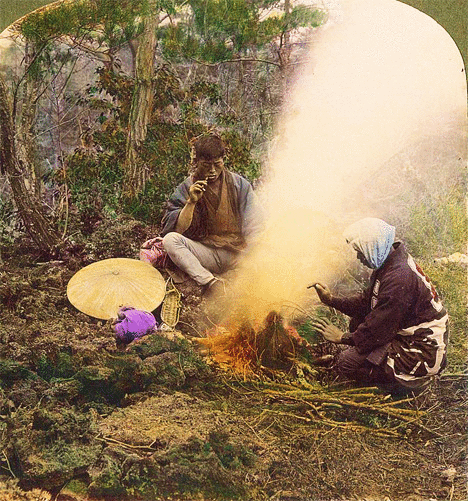












 Up effect
Up effect  Down effect
Down effect Left effect
Left effect Right
Right








Out of Curiosity and Enthusiasm comes
everything - JC
12/30/12
Filed under:
General
Posted by:
site admin @ 6:32 pm
MAY YOU BE EVER HAPPY, WELL AND SECURE !
MAY YOU LIVE LONG !
MAY ALL SENTIENT AND NON-SENTIENT BEINGS BE EVER HAPPY !
MAY YOU EVER HAVE CALM, QUIET, ALERT,ATTENTIVE AND
EQUANIMITY MIND WITH A CLEAR UNDERSTANDING THAT
EVERYTHING IS CHANGING !
After APOLLO 12 , if it was APOLLO 12A
Then after 01-01-2012 will it be 01-01-2012A ?

311212 SUNDAY LESSON 796
from FREE ONLINE eNālāndā Research and
Practice UNIVERSITY through http://sarvajan.ambedkar.org

தமிழ்
E4. மார்க சத்தியத்தை விளக்கிக்காட்டுதல்
மற்றும் எது, பிக்குகளே, dukkha·nirodha·gāminī
paṭipadā ariyasacca துக்கம் முடிவுறுகிற மார்க வழிகாட்டும் மேதக்க
மெய்ம்மை சத்திய பண்பு? அது சும்மா இந்த ariya aṭṭhaṅgika magga
எண்வகுப்பான மேதக்க மெய்ம்மை சத்திய மார்கம், என்று சொல்லப்படுகிற,
sammādiṭṭhi திருஷ்டி நேரான நோக்கு, sammāsaṅkappo நேரான
உட்கருத்து/எண்ணம், sammāvācā நேரான பேச்சு, sammākammanto நேரான வினையாற்
றுதல், sammā-ājīvo நேரான ஜீவனோபாயம், sammāvāyāmo நேரான பிரயத்தனம்,
sammāsati நேரான விழிப்பு நிலை மற்றும் sammāsamādhi நேரான ஒருமுக சிந்தனை.
மற்றும் எது, பிக்குகளே, sammādiṭṭhi திருஷ்டி
நேரான நோக்கு? அது, பிக்குகளே, இந்த ñāṇa of dukkha, துக்க ஞானம், ñāṇa of
dukkha-samudaya, இந்த துக்க மரபுமூல ஞானம், ñāṇa of dukkha-nirodha
இந்த துக்க இடைநிறுத்த ஞானம், மற்றும் ñāṇa of dukkha-nirodha-gāmini
paṭipada இந்த துக்க முடிவுறுகிற மார்க வழிகாட்டும் ஞானம்,அது, பிக்குகளே,
sammādiṭṭhi திருஷ்டி நேரான நோக்கு என்று அழைக்கபடுகிறது.
மற்றும் எது, பிக்குகளே, sammāsaṅkappo நேரான
உட்கருத்து/எண்ணம்? அவை , பிக்குகளே, saṅkappas of nekkhamma உலகப்பற்று
துறவு சிந்தனா சக்தி,saṅkappas of abyāpāda வைராக்கியம் இன்மை சிந்தனா
சக்தி, saṅkappas of avihiṃsā வன்முறை இன்மை சிந்தனா சக்தி, அது,
பிக்குகளே, sammāsaṅkappo நேரான உட்கருத்து/எண்ணம், என்று அழைக்கபடுகிறது
மற்றும் எது, பிக்குகளே, sammā-ājīva நேரான பேச்சு?
அது, பிக்குகளே, musāvādā பொய் தவிர்வு pisuṇa vācā கெடு நோக்கான
பேச்சு தவிர்வு pharusa vācā கடுமையான பேச்சு தவிர்வு மற்றும்
samphappalāpa அற்பப்பொழுதுபோக்கான உரையாடல் தவிர்வு அது, பிக்குகளே, நேரான
பேச்சு, என்று அழைக்கபடுகிறது.
மற்றும் எது, பிக்குகளே, sammā-kammanta நேரான
வினையாற் றுதல்? அது, பிக்குகளே, pāṇātipāta பிராண நாசம் தவிர்வு
adinnādāna கொடுக்கப்படாத யாவையும் எடுத்தல் தவிர்வு abrahmacariya தூய
வாழ்க்கைவாழ்க்கைக்கு எதிர் நிலையான பாலுறவு தவிர்வு, அது, பிக்குகளே,
sammā-kammanta நேரான வினையாற் றுதல் என்று அழைக்கபடுகிறது.
மற்றும் எது, பிக்குகளே, sammā-ājīva நேரான
ஜீவனோபாயம்? இங்கு பிக்குகளே, ஒரு மேதக்க சீடர், பிழையான ஜீவனோபாயம்
கைவிடப்பட்ட உடையவராயிருத்தல், அவருடைய வாழ்க்கை நேர்மை வழிவகை ஜீவனோபாயம்
ஆதரவுடன் வாழ்கிறார், அது, பிக்குகளே, sammā-ājīva நேரான ஜீவனோபாயம்
என்று அழைக்கபடுகிறது.
மற்றும் எது, பிக்குகளே, sammāvāyāma நேரான
பிரயத்தனம்? இங்கு பிக்குகளே, ஒரு பிக்கு, எழும்பாத pāpaka பாவம்
மற்றும் akusala பாதகமான/தகாத குணம்/உடல் நலத்திற்கு
ஒவ்வாத/ஒழுக்கக்கெட்ட/பயிற்சித் திறமையற்ற dhammas தம்மங்கள்
எழும்பாதிருக்கும்போது chanda உத்வேகம் தோற்றுவி தோற்றுவிக்கிறார், அவர்
தானே தீவிரமாக ஈடுபடுத்திக்கொள்கிறார், viriya,அவருடைய
விறுவிறுப்பு/ஆற்றல்/கடுமுயற்சி/சளைக்காத குணத்தை எழுப்புகிறார், பலம்
பொருந்திய சக்தி வாய்ந்த அவருடைய cittaசித்தம் உள்ளத்தை உபயோகிக்கிறார்
மற்றும் கடுமுயற்சி செய்கிறார்; pāpaka பாவம் மற்றும் akusala பாதகமான/தகாத
குணம்/உடல் நலத்திற்கு ஒவ்வாத/ஒழுக்கக்கெட்ட/பயிற்சித் திறமையற்ற
dhammas எழும்பாதிருக்கும்போது அதை கைவிட chanda உத்வேகம் தோற்றுவி
தோற்றுவிக்கிறார், அவர் தானே தீவிரமாக ஈடுபடுத்திக்கொள்கிறார்,
viriya,அவருடைய விறுவிறுப்பு/ஆற்றல்/கடுமுயற்சி/சளைக்காத குணத்தை
எழுப்புகிறார், பலம் பொருந்திய சக்தி வாய்ந்த அவருடைய cittaசித்தம்
உள்ளத்தை உபயோகிக்கிறார் மற்றும் கடுமுயற்சி செய்கிறார்; எழும்பும் pāpaka
பாவம் மற்றும் akusala பாதகமான/தகாத குணம்/உடல் நலத்திற்கு
ஒவ்வாத/ஒழுக்கக்கெட்ட/பயிற்சித் திறமையற்ற dhammas தம்மங்கள்
எழும்பாதிருக்கும்போது chanda உத்வேகம் தோற்றுவி தோற்றுவிக்கிறார், அவர்
தானே தீவிரமாக ஈடுபடுத்திக்கொள்கிறார், viriya,அவருடைய
விறுவிறுப்பு/ஆற்றல்/கடுமுயற்சி/சளைக்காத குணத்தை எழுப்புகிறார், பலம்
பொருந்திய சக்தி வாய்ந்த அவருடைய cittaசித்தம் உள்ளத்தை உபயோகிக்கிறார்
மற்றும் கடுமுயற்சி செய்கிறார்; தண்டாமை kusala dhammas,பாராட்டுத்
திறனுடைய தம்மங்கள் அவற்றினுடைய குழப்புதல் இராமை, அவற்றினுடைய
மிகுதிப்பாடு, அவற்றினுடைய மேம்பாடு, அவற்றினுடைய நய மேம்பாடு மற்றும்
அவற்றினுடைய முழுமையான நிலை, அவர் தானே தீவிரமாக ஈடுபடுத்திக்கொள்கிறார்,
viriya,அவருடைய விறுவிறுப்பு/ஆற்றல்/கடுமுயற்சி/சளைக்காத குணத்தை
எழுப்புகிறார், பலம் பொருந்திய சக்தி வாய்ந்த அவருடைய cittaசித்தம்
உள்ளத்தை உபயோகிக்கிறார் மற்றும் கடுமுயற்சி செய்கிறார், அது, பிக்குகளே,
sammāvāyāma நேரான பிரயத்தனம் என்று அழைக்கபடுகிறது.
மற்றும் எது, பிக்குகளே,sammāsati நேரான விழிப்பு
நிலை? இங்கு பிக்குகளே, ஒரு பிக்கு, kāya in kāyaகாயாவை காயாவில் உடம்பில்
உடம்பை,ātāpī sampajāno, satimā, abhijjhā-domanassa இந்த உலகம் நோக்கி
ஏகாந்தமாயிருக்க உடையவராயிருத்தல் கவனித்து வாசம் செய்கிறார். vedanā in
vedanāவேதனையில் வேதனையாக உறுதலுணர்ச்சியில் உறுதலுணர்ச்சியாக ātāpī
sampajāno, satimā, abhijjhā-domanassa இந்த உலகம் நோக்கி ஏகாந்தமாயிருக்க
உடையவராயிருத்தல் கவனித்து வாசம் செய்கிறார். citta in
cittaசித்தத்தில் சித்தமாக மனதில் மனமாக , ātāpī sampajāno, satimā,
abhijjhā-domanassa இந்த உலகம் நோக்கி ஏகாந்தமாயிருக்க உடையவராயிருத்தல்
கவனித்து வாசம் செய்கிறார். அது, பிக்குகளே, sammāsati நேரான விழிப்பு
நிலை என்று அழைக்கபடுகிறது.
மற்றும் எது, பிக்குகளே, sammāsamādhi நேரான ஒருமுக
சிந்தனை? இங்கு பிக்குகளே, ஒரு பிக்கு,kāma காமத்திலிருந்து புலனுணர்வு
மட்டுமேபற்றிய ஆர்வ வேட்கையிலிருந்து தனிப்பாட்டு akusala பாதகமான/தகாத
குணம்/உடல் நலத்திற்கு ஒவ்வாத/ஒழுக்கக்கெட்ட/பயிற்சித் திறமையற்ற dhammas
தம்மங்கள் தனிப்பாட்டு,முதலாவது jhāna ஒருமுக சிந்தனையான தியானத்தில்
ஈடுபட உள்ளே பிரவேசித்து உட்கிரகித்த உடையவராயிருத்தல், vitakka and
vicāra எண்ணம்/எதிரொளி மற்றும் ஒரு விஷயம் முடியும் முன்பே மற்றொரு
விஷயத்திற்கு மாறுகி எண்ணம் அவ்விடத்தில் உறுதியாக உடன் இருந்து, உடனாக
with pīti மற்றும் sukha இல் பிறந்த தொடர்பற்ற தன்மை, உடனாக vitakka-vicāra
எண்ணம்/எதிரொளி மற்றும் ஒரு விஷயம் முடியும் முன்பே மற்றொரு விஷயத்திற்கு
மாறுகி எண்ணம் மிடாவடை,இரண்டாவதான jhāna ஒருமுக சிந்தனையான தியானத்தில்
ஈடுபட உள்ளே பிரவேசித்து உட்கிரகித்த உடையவராயிருத்தல், அவ்விடத்தில்
உட்புறமான உள அமைதியூக்கி அத்துடன் citta சித்தமாக மனதில் ஒன்றுபடுத்தல்,
vitakka and vicāra எண்ணம்/எதிரொளி மற்றும் ஒரு விஷயம் முடியும் முன்பே
மற்றொரு விஷயத்திற்கு மாறுகி எண்ணம் அவ்விடத்தில் உறுதியாக உடன் இருந்து,
உடனாக with pīti கழிபேருவகை மற்றும் sukha சுகம் இன்றி அத்துடன் பிறந்த
மனம் ஒருமுக சிந்தனையில் குறிவைத்து அதனுடைய ஒன்றுபடுத்தல் மற்றும்
ஒருப்படுத்து இல் மற்றும் உடனாக அக்கறையின்மை pīti கழிபேருவகை நோக்கி,
அவர் upekkha உள்ளச்சமநிலை, sato சிந்தனையுள்ள மற்றும் sampajāno மாறா நிலை
பகுத்தறிதல் உடைய அநித்தியம் கூட உரித்தாக்கு ஒத்துப்போ, அவர் kāya the
sukha காயாவில் உடம்பில் சுகம் அகவுணர்வு நிலைகள் எதனை ariyas
மேதக்கவர்கள் விரித்துரை: ‘யார் ஒருவர் உள்ளச்சமநிலை மற்றும்
எச்சரிக்கையுடன் இருக்கிற இந்த sukha சுகம் வாசம் செய்’, மூன்றாவது jhāna
ஒருமுக சிந்தனையான தியானத்தில் ஈடுபட உள்ளே பிரவேசித்து உட்கிரகித்த
உடையவராயிருத்தல், அவ்விடத்தில் கைவிடப்பட்ட sukha சுகம் மற்றும்
கைவிடப்பட்ட dukkha துக்கம், somanassa மனத்தால் இயக்கப்படுகிற இனிமை
மற்றும் domanassa மனத்தால் இனிமையன்மை முன்பாக மறைந்துபோ இன்றி
உடையவராயிருத்தல் sukha சுகம் இல்லாததாக dukkha துக்கம், தூய்மை உடன்
upekkha உள்ளச்சமநிலை மற்றும் sati விழிப்புணர்வு, நான்காவதான jhāna
ஒருமுக சிந்தனையான தியானத்தில் ஈடுபட உள்ளே பிரவேசித்து உட்கிரகித்த
உடையவராயிருத்தல். அது, பிக்குகளே, sammāsamādhi நேரான ஒருமுக சிந்தனை
என்று அழைக்கபடுகிறது.
அது, பிக்குகளே, dukkha·nirodha·gāminī paṭipadā
ariyasacca. இந்த துக்க முடிவுறுகிற வழிகாட்டும் மார்க ஞான மேதக்க மெய்ம்மை
என்று அழைக்கபடுகிறது.
இவ்வாறு அவர் dhammas சட்டத்துக்கு அடிப்படையான அற
முறைகளில் சட்டத்துக்கு அடிப்படையான அற முறைகளூடன்
கூர்ந்து கவனித்து
வாசம் செய்கிரார், அல்லது சட்டத்துக்கு அடிப்படையான அற முறைகளில்
சட்டத்துக்கு அடிப்படையான அற முறைகளூடன் வெளியே கூர்ந்த கவனித்து வாசம்
செய்கிரார்;samudaya of phenomena புலன்களால் உணரத்தக்க தோற்றம் அதனுடைய
அகநிலையில் கூர்ந்து கவனித்து வாசம் செய்கிரார், புலன்களால் உணரத்தக்க
கழிதல் அதனுடைய அகநிலையில் கூர்ந்து கவனித்து வாசம் செய்கிரார், samudaya
and passing away of phenomena புலன்களால் உணரத்தக்க தோற்றம் மற்றும்
கழிதல் அதனுடைய அகநிலையில் கூர்ந்து கவனித்து வாசம் செய்கிரார்,
இல்லாவிடில் “இது dhammas சட்டத்துக்கு அடிப்படையான அற முறைகளில்
சட்டத்துக்கு அடிப்படையான அற முறைகளூடன் ” என உணர்ந்து, sati விழிப்பு
நிலை அவருக்குள் வந்திருக்கிறது, சும்மா வெறும் ñāṇa ஓர்அளவு ஞானம்
மற்றும் ஓர்அளவு paṭissati என எண்ணி பற்றறு வாசம் செய்கிரார். மற்றும்
உலகத்தில் சிறிதளவாவது பற்றிக்கொள்ளாது,அவ்வாறாக பிக்குக்களுக்களே, ஒரு
பிக்கு, dhammas சட்டத்துக்கு அடிப்படையான அற முறைகளில் சட்டத்துக்கு
அடிப்படையான அற முறைகளூடன் நான்கு ariya·saccas மேதக்க மெய்ம்மை கூர்ந்த
கவனிப்புடன் வாசம் செய்கிரார்.
விழிப்பு நிலை பழக்கம் இருத்தலான பலன்கள்
எவராகிலும், பிக்குகளே, இவை நான்கு விழிப்பு
நிலைகளை விரும்பி, இவ்வழி ஏழு ஆண்டுகள் பழகினால், இரண்டு முடிவுகளில் ஒன்று
எதிர்பார்க்கக் கூடும்: இரண்டிலொன்றாக முழு நிறைவான ஞானம் காணக்கூடிய
புலனுணர்வாதம், அல்லது ஒருவேளை அங்கே சிறிது பற்றிக்கொள்ளுதல் மிச்சம்
இருந்தால் anāgāmita ஒருவருக்கு திரும்புகை இல்லாத நிலை.
ஏழு ஆண்டுகள் விடுங்கள் பிக்குகளே, இவை நான்கு
விழிப்பு நிலைகளை விரும்பி, இவ்வழி ஆறு ஆண்டுகள் பழகினால், இரண்டு
முடிவுகளில் ஒன்று எதிர்பார்க்கக் கூடும்: இரண்டிலொன்றாக முழு நிறைவான
ஞானம் காணக்கூடிய புலனுணர்வாதம், அல்லது ஒருவேளை அங்கே சிறிது
பற்றிக்கொள்ளுதல் மிச்சம் இருந்தால் anāgāmita ஒருவருக்கு திரும்புகை
இல்லாத நிலை.
ஆறு ஆண்டுகள் விடுங்கள் பிக்குகளே, இவை நான்கு
விழிப்பு நிலைகளை விரும்பி, இவ்வழி ஐந்து ஆண்டுகள் பழகினால், இரண்டு
முடிவுகளில் ஒன்று எதிர்பார்க்கக் கூடும்: இரண்டிலொன்றாக முழு நிறைவான
ஞானம் காணக்கூடிய புலனுணர்வாதம், அல்லது ஒருவேளை அங்கே சிறிது
பற்றிக்கொள்ளுதல் மிச்சம் இருந்தால் anāgāmita ஒருவருக்கு திரும்புகை
இல்லாத நிலை.
ஐந்து ஆண்டுகள் விடுங்கள் பிக்குகளே, இவை நான்கு
விழிப்பு நிலைகளை விரும்பி, இவ்வழி நான்கு ஆண்டுகள் பழகினால், இரண்டு
முடிவுகளில் ஒன்று எதிர்பார்க்கக் கூடும்: இரண்டிலொன்றாக முழு நிறைவான
ஞானம் காணக்கூடிய புலனுணர்வாதம், அல்லது ஒருவேளை அங்கே சிறிது
பற்றிக்கொள்ளுதல் மிச்சம் இருந்தால் anāgāmita ஒருவருக்கு திரும்புகை
இல்லாத நிலை.
நான்கு ஆண்டுகள் விடுங்கள் பிக்குகளே, இவை நான்கு
விழிப்பு நிலைகளை விரும்பி, இவ்வழி மூன்று ஆண்டுகள் பழகினால், இரண்டு
முடிவுகளில் ஒன்று எதிர்பார்க்கக் கூடும்: இரண்டிலொன்றாக முழு நிறைவான
ஞானம் காணக்கூடிய புலனுணர்வாதம், அல்லது ஒருவேளை அங்கே சிறிது
பற்றிக்கொள்ளுதல் மிச்சம் இருந்தால் anāgāmita ஒருவருக்கு திரும்புகை
இல்லாத நிலை.
மூன்று ஆண்டுகள் விடுங்கள் பிக்குகளே, இவை நான்கு
விழிப்பு நிலைகளை விரும்பி, இவ்வழி இரண்டு ஆண்டுகள் பழகினால், இரண்டு
முடிவுகளில் ஒன்று எதிர்பார்க்கக் கூடும்: இரண்டிலொன்றாக முழு நிறைவான
ஞானம் காணக்கூடிய புலனுணர்வாதம், அல்லது ஒருவேளை அங்கே சிறிது
பற்றிக்கொள்ளுதல் மிச்சம் இருந்தால் anāgāmita ஒருவருக்கு திரும்புகை
இல்லாத நிலை.
இரண்டு ஆண்டுகள் விடுங்கள், பிக்குகளே, இவை நான்கு
விழிப்பு நிலைகளை விரும்பி, இவ்வழி ஒரு ஆண்டு பழகினால், இரண்டு
முடிவுகளில் ஒன்று எதிர்பார்க்கக் கூடும்: இரண்டிலொன்றாக முழு நிறைவான
ஞானம் காணக்கூடிய புலனுணர்வாதம், அல்லது ஒருவேளை அங்கே சிறிது
பற்றிக்கொள்ளுதல் மிச்சம் இருந்தால் anāgāmita ஒருவருக்கு திரும்புகை
இல்லாத நிலை.
ஒரு ஆண்டு விடுங்கள், பிக்குகளே, இவை நான்கு
விழிப்பு நிலைகளை விரும்பி, இவ்வழி ஏழு மாதகாலம் பழகினால், இரண்டு
முடிவுகளில் ஒன்று எதிர்பார்க்கக் கூடும்: இரண்டிலொன்றாக முழு நிறைவான
ஞானம் காணக்கூடிய புலனுணர்வாதம், அல்லது ஒருவேளை அங்கே சிறிது
பற்றிக்கொள்ளுதல் மிச்சம் இருந்தால் anāgāmita ஒருவருக்கு திரும்புகை
இல்லாத நிலை.
ஏழு மாதகாலம் விடுங்கள், பிக்குகளே, இவை நான்கு
விழிப்பு நிலைகளை விரும்பி, இவ்வழி ஆறு மாதகாலம் பழகினால், இரண்டு
முடிவுகளில் ஒன்று எதிர்பார்க்கக் கூடும்: இரண்டிலொன்றாக முழு நிறைவான
ஞானம் காணக்கூடிய புலனுணர்வாதம், அல்லது ஒருவேளை அங்கே சிறிது
பற்றிக்கொள்ளுதல் மிச்சம் இருந்தால் anāgāmita ஒருவருக்கு திரும்புகை
இல்லாத நிலை.
ஆறு மாதகாலம் விடுங்கள், பிக்குகளே, இவை நான்கு
விழிப்பு நிலைகளை விரும்பி, இவ்வழி ஐந்து மாதகாலம் பழகினால், இரண்டு
முடிவுகளில் ஒன்று எதிர்பார்க்கக் கூடும்: இரண்டிலொன்றாக முழு நிறைவான
ஞானம் காணக்கூடிய புலனுணர்வாதம், அல்லது ஒருவேளை அங்கே சிறிது
பற்றிக்கொள்ளுதல் மிச்சம் இருந்தால் anāgāmita ஒருவருக்கு திரும்புகை
இல்லாத நிலை.
ஐந்து மாதகாலம் விடுங்கள், பிக்குகளே, இவை நான்கு
விழிப்பு நிலைகளை விரும்பி, இவ்வழி நான்கு மாதகாலம் பழகினால், இரண்டு
முடிவுகளில் ஒன்று எதிர்பார்க்கக் கூடும்: இரண்டிலொன்றாக முழு நிறைவான
ஞானம் காணக்கூடிய புலனுணர்வாதம், அல்லது ஒருவேளை அங்கே சிறிது
பற்றிக்கொள்ளுதல் மிச்சம் இருந்தால் anāgāmita ஒருவருக்கு திரும்புகை
இல்லாத நிலை.
நான்கு மாதகாலம் விடுங்கள், பிக்குகளே, இவை நான்கு
விழிப்பு நிலைகளை விரும்பி, இவ்வழி மூன்று மாதகாலம் பழகினால், இரண்டு
முடிவுகளில் ஒன்று எதிர்பார்க்கக் கூடும்: இரண்டிலொன்றாக முழு நிறைவான
ஞானம் காணக்கூடிய புலனுணர்வாதம், அல்லது ஒருவேளை அங்கே சிறிது
பற்றிக்கொள்ளுதல் மிச்சம் இருந்தால் anāgāmita ஒருவருக்கு திரும்புகை
இல்லாத நிலை.
மூன்று மாதகாலம் விடுங்கள், பிக்குகளே, இவை நான்கு
விழிப்பு நிலைகளை விரும்பி, இவ்வழி இரண்டு மாதகாலம் பழகினால், இரண்டு
முடிவுகளில் ஒன்று எதிர்பார்க்கக் கூடும்: இரண்டிலொன்றாக முழு நிறைவான
ஞானம் காணக்கூடிய புலனுணர்வாதம், அல்லது ஒருவேளை அங்கே சிறிது
பற்றிக்கொள்ளுதல் மிச்சம் இருந்தால் anāgāmita ஒருவருக்கு திரும்புகை
இல்லாத நிலை.
இரண்டு மாதகாலம் விடுங்கள், பிக்குகளே, இவை நான்கு
விழிப்பு நிலைகளை விரும்பி, இவ்வழி ஒரு மாதகாலம் பழகினால், இரண்டு
முடிவுகளில் ஒன்று எதிர்பார்க்கக் கூடும்: இரண்டிலொன்றாக முழு நிறைவான
ஞானம் காணக்கூடிய புலனுணர்வாதம், அல்லது ஒருவேளை அங்கே சிறிது
பற்றிக்கொள்ளுதல் மிச்சம் இருந்தால் anāgāmita ஒருவருக்கு திரும்புகை
இல்லாத நிலை.
ஒரு மாதகாலம் விடுங்கள், பிக்குகளே, இவை நான்கு
விழிப்பு நிலைகளை விரும்பி, இவ்வழி அரை மாதகாலம் பழகினால், இரண்டு
முடிவுகளில் ஒன்று எதிர்பார்க்கக் கூடும்: இரண்டிலொன்றாக முழு நிறைவான
ஞானம் காணக்கூடிய புலனுணர்வாதம், அல்லது ஒருவேளை அங்கே சிறிது
பற்றிக்கொள்ளுதல் மிச்சம் இருந்தால் anāgāmita ஒருவருக்கு திரும்புகை
இல்லாத நிலை.
அரை மாதகாலம் விடுங்கள், பிக்குகளே, இவை நான்கு
விழிப்பு நிலைகளை விரும்பி, இவ்வழி ஒரு வாரகாலம் பழகினால், இரண்டு
முடிவுகளில் ஒன்று எதிர்பார்க்கக் கூடும்: இரண்டிலொன்றாக முழு நிறைவான
ஞானம் காணக்கூடிய புலனுணர்வாதம், அல்லது ஒருவேளை அங்கே சிறிது
பற்றிக்கொள்ளுதல் மிச்சம் இருந்தால் anāgāmita ஒருவருக்கு திரும்புகை
இல்லாத நிலை.
“இது, பிக்குகளே, இனங்களை வெறும் ஆனால் அந்த வழி வகு
தூய்மைப்பாடு பாதை, மனத்துயரம் மற்றும் புலம்புற விஞ்சி,dukkha-domanassa, மனம் சார்ந்த துக்கம் அல்லல்கள் மறைவு, செந்நெறி
முயற்சியால் அடைதல்,Nibbāna முடிவான குறிக்கோளாக அமைகிற மெய்யாகக் காண்டல் நிலை.
இவ்வாறாக ஞானானந்த வணங்கத்தக்க பகவா போதித்தார். அகமகிழ்வுடன், பிக்குகள் பகவாவின் வார்த்தைகளை வரவேற்றனர்.
ltimate Goal fot (Eternal Bliss) Sublime truth, Noble truth.
E4. Exposition of Maggasacca
And what, bhikkhus, is the dukkha·nirodha·gāminī (Cessation of suffering, nibbāṇa (ultimate goal of Eternal Bliss)paṭipadā (Ingress, access, way, step, course, progress,
practice, conduct; the first day of a lunar fortnight, especially that
of the moon’s increase)ariyasacca (Sublime truth, Noble truth)?
And what, bhikkhus, is sammādiṭṭhi(The pin of a yoke Fully, thoroughly, accurately, rightly, properly,
well, really, truly; sammadakkhāto i.e., well preached, sammadaññhā,
perfect knowledge)? That, bhikkhus, which is the ñāṇa(Knowledge) of dukkha( Cessation of suffering, nibbāṇa(Ultimate Goal for Eternal Bliss)), the ñāṇa(Knowledge) of dukkha-samudaya, the ñāṇa(Knowledge) of dukkha-nirodha( Cessation of suffering, nibbāṇa(Ultimate Goal for Eternal Bliss)) and the ñāṇa(Knowledge) of dukkha-nirodha-gāmini paṭipada( Cessation of suffering, nibbāṇa(Ultimate Goal for Eternal Bliss Step by step, in due order), that is called, bhikkhus, sammādiṭṭhi(The pin of a yoke Fully, thoroughly, accurately, rightly, properly,
well, really, truly; sammadakkhāto i.e., well preached, sammadaññhā,
perfect knowledge).
And what, bhikkhus, are sammāsaṅkappas(Recollection; active state of mind, fixing the mind
strongly upon any subject, attention, attentiveness, thought,
reflection, consciousness)? Those, bhikkhus, which are saṅkappas(To will, determine, arrange) of nekkhamma, saṅkappas(To will, determine, arrange) of abyāpāda, saṅkappas(To will, determine, arrange) of avihiṃsā, those are called, bhikkhus, sammāsaṅkappas(Recollection; active state of mind, fixing the mind
strongly upon any subject, attention, attentiveness, thought,
reflection, consciousness).
And what, bhikkhus, is sammāvācā(The pin of a yoke Fully, thoroughly,
accurately, rightly, properly, well, really, truly; sammadakkhāto i.e.,
well preached, sammadaññhā, perfect knowledge)? That, bhikkhus, which is abstaining from musāvādā(Speaking falsely, lying), abstaining from pisuṇa vācā(Backbiting, calumnious, malicious a tale-bearer, informer, traitor Word, saying, speech), abstaining from pharusa vācā(Harsh, unkind, fierce, savage; rough, rugged; severe, cruel Word, saying, speech), and abstaining from samphappalāpa(Frivolous talk, idle talk), that is called, bhikkhus, sammāvācā(The pin of a yoke Fully, thoroughly,
accurately, rightly, properly, well, really, truly; sammadakkhāto i.e.,
well preached, sammadaññhā, perfect knowledge).
And what, bhikkhus, is sammā-kammanta(The pin of a yoke Fully, thoroughly,
accurately, rightly, properly, well, really, truly; sammadakkhāto i.e.,
well preached, sammadaññhā, perfect knowledge)? That, bhikkhus, which is abstaining from pāṇātipāta(Killing) , abstaining from adinnādāna(Taking what is not given, appropriation, theft), abstaining from abrahmacariya(Foul-mouthed, scurrilous, obscenely abusive), that is called, bhikkhus, sammā-kammanta(The pin of a yoke Fully, thoroughly,
accurately, rightly, properly, well, really, truly; sammadakkhāto i.e.,
well preached, sammadaññhā, perfect knowledge).
And what, bhikkhus, is sammā-ājīva(The pin of a yoke Fully, thoroughly,
accurately, rightly, properly, well, really, truly; sammadakkhāto i.e.,
well preached, sammadaññhā, perfect knowledge)?
Here, bhikkhus, a noble disciple, having abandonned wrong livelihood,
supports his life by right means of livelihood, that is called,
bhikkhus, sammā-ājīva(The pin of a yoke Fully, thoroughly,
accurately, rightly, properly, well, really, truly; sammadakkhāto i.e.,
well preached, sammadaññhā, perfect knowledge).
And what, bhikkhus, is sammāvāyāma(The pin of a yoke Fully, thoroughly,
accurately, rightly, properly, well, really, truly; sammadakkhāto i.e.,
well preached, sammadaññhā, perfect knowledge)? Here, bhikkhus, a bhikkhu generates his chanda( Conversant with the Vedas, a brahmin) for the non-arising of unarisen pāpaka(Bad, evil, wicked, sinful) and akusala dhammas(Unwholesome action, evil action, bad works, demerit, sin Name of the first book of the Abhidhamma piṭaka and (dhammaṃ)Nature/ condition/ quality/ property/
characteristic; function/ practice/ duty; object/ thing/ idea/
phenomenon; doctrine; law; virtue/ piety; justice; the law or Truth of
the Buddha; the Buddhist scriptures; religion) , he exerts himself, rouses his viriya( Strength, vigour, energy, fortitude, effort, exertion; dignity, influence), applies vigorously his citta(The heart; the mind; a thought, an idea; will, intention) and strives; he generates his chanda( Conversant with the Vedas, a brahmin) for the forsaking of arisen pāpaka(Bad, evil, wicked, sinful) and akusala dhammas, he exerts himself, rouses his viriya, applies vigorously his citta(The heart; the mind; a thought, an idea; will, intention) and strives; he generates his chanda( Conversant with the Vedas, a brahmin) for the arising of unarisen kusala dhammas, he exerts himself, rouses his viriya( Strength, vigour, energy, fortitude, effort, exertion; dignity, influence), applies vigorously his citta(The heart; the mind; a thought, an idea; will, intention) and strives; he generates his chanda( Conversant with the Vedas, a brahmin) for the steadfastness of arisen kusala dhammas,
for their absence of confusion, for their increase, their development,
their cultivation and their completion, he exerts himself, rouses his viriya( Strength, vigour, energy, fortitude, effort, exertion; dignity, influence), applies vigorously his citta(The heart; the mind; a thought, an idea; will, intention) and strives. This is called, bhikkhus, sammāvāyāma(The pin of a yoke Fully, thoroughly,
accurately, rightly, properly, well, really, truly; sammadakkhāto i.e.,
well preached, sammadaññhā, perfect knowledge).
An what, bhikkhus, is sammāsati? Here, bhikkhus, a bhikkhu dwells observing kāya in kāya(Referring to the body in body), ātāpī(Ardent, zealous, strenuous, active ) sampajāno(Knowing, understanding, conscious), satimā(Of retentive memory or active mind, thoughtful, reflecting), having given up abhijjhā-domanassa(Covetousness) towards the world. He dwells observing vedanā in vedanā( Feeling, sensation, perception; pain, suffering in Feeling, sensation, perception; pain, suffering), ātāpī(Ardent, zealous, strenuous, active ) sampajāno(Knowing, understanding, conscious), satimā(Of retentive memory or active mind, thoughtful, reflecting), having given up abhijjhā-domanassa(Covetousness) towards the world. He dwells observing citta in citta(The heart; the mind; a thought, an idea; will, intention in The heart; the mind; a thought, an idea; will, intention), ātāpī (Ardent, zealous, strenuous, active )sampajāno(Knowing, understanding, conscious), satimā(Of retentive memory or active mind, thoughtful, reflecting), having given up abhijjhā-domanassa(Covetousness) towards the world. He dwells observing dhamma·s in dhamma·s(Name of the first book of the Abhidhamma piṭaka and (dhammaṃ)Nature/ condition/ quality/ property/
characteristic; function/ practice/ duty; object/ thing/ idea/
phenomenon; doctrine; law; virtue/ piety; justice; the law or Truth of
the Buddha; the Buddhist scriptures; religion in threshold of Name of the first book of the Abhidhamma piṭaka and (dhammaṃ)Nature/ condition/ quality/ property/
characteristic; function/ practice/ duty; object/ thing/ idea/
phenomenon; doctrine; law; virtue/ piety; justice; the law or Truth of
the Buddha; the Buddhist scriptures; religion), ātāpī(Ardent, zealous, strenuous, active ) sampajāno(Knowing, understanding, conscious), satimā(Of retentive memory or active mind, thoughtful, reflecting), having given up abhijjhā-domanassa(Covetousness) towards the world. This is called, bhikkhus, sammāsati.
And what, bhikkhus, is sammāsamādhi? Here, bhikkhus, a
bhikkhu, detached from kāma, detached from akusala dhammas, having
entered in the first jhāna, abides therein, with vitakka and vicāra,
with pīti and sukha born of detachment. With
the stilling of vitakka-vicāra, having entered in the second jhāna, he
abides therein with inner tanquilization, unification of citta, without
vitakka nor vicāra, with pīti and sukha born of samādhi. And
with indifference towards pīti, he abides in upekkha, sato and
sampajāno, he experiences in kāya the sukha which the ariyas describe:
‘one who is equanimous and mindful dwells in [this] sukha’, having
entered in the third jhāna, he abides therein. Abandoning
sukha and abandoning dukkha, somanassa and domanassa having previously
disappeared, without sukha nor dukkha, with the purity of upekkha and
sati, having entered in the fourth jhāna, he abides therein. This is called, bhikkhus, sammāsamādhi.
And what, bhikkhus, is sammāsamādhi(Recollection; active state of mind, fixing the mind
strongly upon any subject, attention, attentiveness, thought,
reflection, consciousness)? Here, bhikkhus, a
bhikkhu, detached from kāma(Fond or desirous of sensual pleasure), detached from akusala dhammas(Unwholesome action, evil action, bad works, demerit, sin Name of the first book of the Abhidhamma piṭaka and (dhammaṃ)Nature/ condition/ quality/ property/
characteristic; function/ practice/ duty; object/ thing/ idea/
phenomenon; doctrine; law; virtue/ piety; justice; the law or Truth of
the Buddha; the Buddhist scriptures; religion), having
entered in the first jhāna( Meditation, contemplation; religious meditation or abstraction of the mind, mystic or abstract meditation, ecstasy, trance), abides therein, with vitakka(Reasoning) and vicāra(One who investigates, a judge),
with pīti(Drinking) and sukha( Having a feeling of ease or serenity) born of detachment. With
the stilling of vitakka-vicāra(Reasoning-One who investigates, a judge), having entered in the second jhāna( Meditation, contemplation; religious meditation or abstraction of the mind, mystic or abstract meditation, ecstasy, trance), he
abides therein with inner tanquilization, unification of citta, withoutvitakka(Reasoning) nor vicāra(One who investigates, a judge) , with pīti((Drinking) and sukha born of samādhi(Agreement, peace, reconciliation; tranquillity, self-concentration, calm). And
with indifference towards pīti, he abides in upekkha(Resigned, patient), sato(Recollecting, mindful, attentive, thoughtful, conscious) and
sampajāno(Knowing, understanding, conscious), he experiences in kāya(Referring to the body) the sukha( Having a feeling of ease or serenity) which the ariyas( Sublime truth, Noble truth) describe:
‘one who is equanimous and mindful dwells in [this] sukha( Having a feeling of ease or serenity)‘, having
entered in the third jhāna( Meditation, contemplation; religious meditation or abstraction of the mind, mystic or abstract meditation, ecstasy, trance), he abides therein. Abandoning
sukha and abandoning dukkha(Cessation of suffering, nibbāṇa(Ultimate Goal for Eternal Bliss), somanassa(Satisfaction, enjoyment, joy) and domanassa(Dejection, gloom, melancholy) having previously
disappeared, without sukha( Having a feeling of ease or serenity) nor dukkha(Ultimate Goal for Eternal Bliss), with the purity of upekkha(Resigned, patient) and
sati(Recollection; active state of mind, fixing the mind
strongly upon any subject, attention, attentiveness, thought,
reflection, consciousness), having entered in the fourth jhāna( Meditation, contemplation; religious meditation or abstraction of the mind, mystic or abstract meditation, ecstasy, trance), he abides therein. This is called, bhikkhus, sammāsamādhi(Recollection; active state of mind, fixing the mind
strongly upon any subject, attention, attentiveness, thought,
reflection, consciousness).
This is called, bhikkhus, the dukkha·nirodha·gāminī paṭipadā ariyasacca(Cessation of suffering, nibbāṇa(Ultimate Goal for Eternal Bliss) Ingress, access, way, step, course,
progress, practice, conduct; the first day of a lunar fortnight,
especially that of the moon’s increase Sublime truth, Noble truth)).
Thus he dwells observing dhammas in dhammas(Name of the first book of the Abhidhamma piṭaka and (dhammaṃ)Nature/ condition/ quality/ property/
characteristic; function/ practice/ duty; object/ thing/ idea/
phenomenon; doctrine; law; virtue/ piety; justice; the law or Truth of
the Buddha; the Buddhist scriptures; religion in threshold of Name of the first book of the Abhidhamma piṭaka and (dhammaṃ)Nature/ condition/ quality/ property/
characteristic; function/ practice/ duty; object/ thing/ idea/
phenomenon; doctrine; law; virtue/ piety; justice; the law or Truth of
the Buddha; the Buddhist scriptures; religion) internally, or he dwells observing dhammas in dhammas externally, or he dwells observing dhammas in dhammas(Name of the first book of the Abhidhamma piṭaka and (dhammaṃ)Nature/ condition/ quality/ property/
characteristic; function/ practice/ duty; object/ thing/ idea/
phenomenon; doctrine; law; virtue/ piety; justice; the law or Truth of
the Buddha; the Buddhist scriptures; religion in threshold of Name of the first book of the Abhidhamma piṭaka and (dhammaṃ)Nature/ condition/ quality/ property/
characteristic; function/ practice/ duty; object/ thing/ idea/
phenomenon; doctrine; law; virtue/ piety; justice; the law or Truth of
the Buddha; the Buddhist scriptures; religion) internally and externally; he dwells observing the samudaya(Rise, origin, commencement; origination, cause; multitude) of phenomena(sapindus detergens) in dhammas(Name of the first book of the Abhidhamma piṭaka and (dhammaṃ)Nature/ condition/ quality/ property/
characteristic; function/ practice/ duty; object/ thing/ idea/
phenomenon; doctrine; law; virtue/ piety; justice; the law or Truth of
the Buddha; the Buddhist scriptures; religion), or he dwells observing the passing away of phenomena(sapindus detergens) in dhammas(Name of the first book of the Abhidhamma piṭaka and (dhammaṃ)Nature/ condition/ quality/ property/
characteristic; function/ practice/ duty; object/ thing/ idea/
phenomenon; doctrine; law; virtue/ piety; justice; the law or Truth of
the Buddha; the Buddhist scriptures; religion), or he dwells observing the samudaya(Rise, origin, commencement; origination, cause; multitude) and passing away of phenomena in dhammas(Name of the first book of the Abhidhamma piṭaka and (dhammaṃ)Nature/ condition/ quality/ property/
characteristic; function/ practice/ duty; object/ thing/ idea/
phenomenon; doctrine; law; virtue/ piety; justice; the law or Truth of
the Buddha; the Buddhist scriptures; religion); or else, [realizing:] “these are dhammas(Name of the first book of the Abhidhamma piṭaka and (dhammaṃ)Nature/ condition/ quality/ property/
characteristic; function/ practice/ duty; object/ thing/ idea/
phenomenon; doctrine; law; virtue/ piety; justice; the law or Truth of
the Buddha; the Buddhist scriptures; religion)!” sati(Recollection; active state of mind, fixing the mind
strongly upon any subject, attention, attentiveness, thought,
reflection, consciousness) is present in him, just to the extent of mere ñāṇa(Knowledge) and mere paṭissati(Assent, promise), he dwells detached, and does not cling to anything in the world. Thus, bhikkhus, a bhikkhu dwells observing dhammas in dhammas(Name of the first book of the Abhidhamma piṭaka and (dhammaṃ)Nature/ condition/ quality/ property/
characteristic; function/ practice/ duty; object/ thing/ idea/
phenomenon; doctrine; law; virtue/ piety; justice; the law or Truth of
the Buddha; the Buddhist scriptures; religion in threshold of Name of the first book of the Abhidhamma piṭaka and (dhammaṃ)Nature/ condition/ quality/ property/
characteristic; function/ practice/ duty; object/ thing/ idea/
phenomenon; doctrine; law; virtue/ piety; justice; the law or Truth of
the Buddha; the Buddhist scriptures; religion), with reference to the four ariya·saccas(Aryan as opposed to milakkha truths).
The benefits of practicing the Satipaṭṭhānas(Fixing the attention, earnest meditation)
For whoever, bhikkhus, would practice these four satipaṭṭhānas(Fixing the attention, earnest meditation)
in this way for seven years, one of two results may be expected: either
[perfect] knowledge in visible phenomena, or if there is some clinging
left, anāgāmita(Fruition of the state of anāgāmī).
Let alone seven years, bhikkhus. For whoever, bhikkhus, would practice these four satipaṭṭhānas(Fixing the attention, earnest meditation)
in this way for six years, one of two results may be expected: either
[perfect] knowledge in visible phenomena, or if there is some clinging
left, anāgāmita(Fruition of the state of anāgāmī).
Let alone six years, bhikkhus. For whoever, bhikkhus, would practice these four satipaṭṭhānas(Fixing the attention, earnest meditation)
in this way for five years, one of two results may be expected: either
[perfect] knowledge in visible phenomena, or if there is some clinging
left, anāgāmita(Fruition of the state of anāgāmī)..
Let alone five years, bhikkhus. For whoever, bhikkhus, would practice these four satipaṭṭhānas(Fixing the attention, earnest meditation)
in this way for four years, one of two results may be expected: either
[perfect] knowledge in visible phenomena, or if there is some clinging
left, anāgāmita(Fruition of the state of anāgāmī)..
Let alone four years, bhikkhus. For whoever, bhikkhus, would practice these four satipaṭṭhānas(Fixing the attention, earnest meditation)
in this way for three years, one of two results may be expected: either
[perfect] knowledge in visible phenomena, or if there is some clinging
left, anāgāmita(Fruition of the state of anāgāmī)..
Let alone three years, bhikkhus. For whoever, bhikkhus, would practice these four satipaṭṭhānas(Fixing the attention, earnest meditation)
in this way for two years, one of two results may be expected: either
[perfect] knowledge in visible phenomena, or if there is some clinging
left, anāgāmita(Fruition of the state of anāgāmī)..
Let alone two years, bhikkhus. For whoever, bhikkhus, would practice these four satipaṭṭhānas(Fixing the attention, earnest meditation)
in this way for one year, one of two results may be expected: either
[perfect] knowledge in visible phenomena, or if there is some clinging
left, anāgāmita(Fruition of the state of anāgāmī)..
Let alone one year, bhikkhus. For whoever, bhikkhus, would practice these four satipaṭṭhānas(Fixing the attention, earnest meditation)
in this way for seven months, one of two results may be expected:
either [perfect] knowledge in visible phenomena, or if there is some
clinging left, anāgāmita(Fruition of the state of anāgāmī)..
Let alone seven months, bhikkhus. For whoever, bhikkhus, would practice these four satipaṭṭhānas(Fixing the attention, earnest meditation)
in this way for six months, one of two results may be expected: either
[perfect] knowledge in visible phenomena, or if there is some clinging
left, anāgāmita(Fruition of the state of anāgāmī)..
Let alone six months, bhikkhus. For whoever, bhikkhus, would practice these four satipaṭṭhānas(Fixing the attention, earnest meditation)
in this way for five months, one of two results may be expected: either
[perfect] knowledge in visible phenomena, or if there is some clinging
left, anāgāmita(Fruition of the state of anāgāmī)..
Let alone five months, bhikkhus. For whoever, bhikkhus, would practice these four satipaṭṭhānas(Fixing the attention, earnest meditation)
in this way for four months, one of two results may be expected: either
[perfect] knowledge in visible phenomena, or if there is some clinging
left, anāgāmita(Fruition of the state of anāgāmī)..
Let alone four months, bhikkhus. For whoever, bhikkhus, would practice these four satipaṭṭhānas(Fixing the attention, earnest meditation)
in this way for three months, one of two results may be expected:
either [perfect] knowledge in visible phenomena, or if there is some
clinging left, anāgāmita(Fruition of the state of anāgāmī)..
Let alone three months, bhikkhus. For whoever, bhikkhus, would practice these four satipaṭṭhānas(Fixing the attention, earnest meditation)
in this way for two months, one of two results may be expected: either
[perfect] knowledge in visible phenomena, or if there is some clinging
left, anāgāmita(Fruition of the state of anāgāmī)..
Let alone two months, bhikkhus. For whoever, bhikkhus, would practice these four satipaṭṭhānas(Fixing the attention, earnest meditation)
in this way for one month, one of two results may be expected: either
[perfect] knowledge in visible phenomena, or if there is some clinging
left, anāgāmita(Fruition of the state of anāgāmī)..
Let alone one month, bhikkhus. For whoever, bhikkhus, would practice these four satipaṭṭhānas(Fixing the attention, earnest meditation)
in this way for half a month, one of two results may be expected:
either [perfect] knowledge in visible phenomena, or if there is some
clinging left, anāgāmita(Fruition of the state of anāgāmī)..
Let alone half a month, bhikkhus. For whoever, bhikkhus, would practice these four satipaṭṭhānas(Fixing the attention, earnest meditation)
in this way for a week, one of two results may be expected: either
[perfect] knowledge in visible phenomena, or if there is some clinging
left, anāgāmita(Fruition of the state of anāgāmī).
“This, bhikkhus, is the path that leads to nothing but the purification
of beings, the overcoming of sorrow and lamentation, the disappearance
of dukkha-domanassa(Cessation of suffering, nibbāṇa(Ultimate Goal for Eternal Bliss), the attainment of the right way, the realization of Nibbāna(Extinction; destruction, annihilation; annihilation of
being, nibbāṇa(Ultimate Goal for Eternal Bliss); annihilation of human passion, arhatship or final
sanctification), that is to say the four satipaṭṭhānas(Fixing the attention, earnest meditation).” Thus has it been said, and on the basis of all this has it been said.
Thus spoke the Bhagavā(Worshipful, venerable, blessed, holy. This word is generally used as an epithet or name of a Buddha, in particular, Sākyamuni). Delighted, the bhikkhus welcomed the words of the Bhagavā(Worshipful, venerable, blessed, holy. This word is generally used as an epithet or name of a Buddha, in particular, Sākyamuni).
E4. Maggasacca Niddesa
Katamaṃ ca, bhikkhave, dukkha·nirodha·gāminī paṭipadā ariya·saccaṃ? Ayam·eva ariyo aṭṭhaṅgiko maggo, seyyathidaṃ sammādiṭṭhi, sammāsaṅkappo, sammāvācā, sammākammanto, sammā-ājīvo, sammāvāyāmo, sammāsati, sammāsamādhi.
|
E4. Exposition of Maggasacca
And what, bhikkhus, is the dukkha·nirodha·gāminī paṭipadā ariyasacca? It is just this ariya aṭṭhaṅgika magga, that is to say sammādiṭṭhi, sammāsaṅkappo, sammāvācā, sammākammanto, sammā-ājīvo, sammāvāyāmo, sammāsati and sammāsamādhi.
|
|
Katamā ca, bhikkhave, sammādiṭṭhi? Yaṃ kho, bhikkhave, dukkhe ñāṇaṃ, dukkha-samudaye ñāṇaṃ , dukkha-nirodhe ñāṇaṃ, dukkha-nirodha-gāminiyā paṭipadāya ñāṇaṃ ayaṃ vuccati, bhikkhave, sammādiṭṭhi.
|
And what, bhikkhus, is sammādiṭṭhi? That, bhikkhus, which is the ñāṇa of dukkha, the ñāṇa of dukkha-samudaya, the ñāṇa of dukkha-nirodha and the ñāṇa of dukkha-nirodha-gāmini paṭipada, that is called, bhikkhus, sammādiṭṭhi.
|
|
Katamo ca, bhikkhave, sammāsaṅkappo? Yo kho, bhikkhave, nekkhamma-saṅkappo , abyāpāda-saṅkappo, avihiṃsā-saṅkappo ayaṃ vuccati, bhikkhave, sammāsaṅkappo.
|
And what, bhikkhus, are sammāsaṅkappas? Those, bhikkhus, which are saṅkappas of nekkhamma, saṅkappas of abyāpāda, saṅkappas of avihiṃsā, those are called, bhikkhus, sammāsaṅkappas.
|
|
Katamā ca, bhikkhave, sammāvācā? Yā kho, bhikkhave, musāvādā veramaṇī, pisuṇāya vācāya veramaṇī, pharusāya vācāya veramaṇī, samphappalāpā veramaṇī ayaṃ vuccati, bhikkhave, sammāvācā.
|
And what, bhikkhus, is sammāvācā? That, bhikkhus, which is abstaining from musāvādā, abstaining from pisuṇa vācā, abstaining from pharusa vācā, and abstaining from samphappalāpa, that is called, bhikkhus, sammāvācā.
|
|
Katamo ca, bhikkhave, sammā-kammanto? Yā kho, bhikkhave, pāṇātipātā veramaṇī, adinnādānā veramaṇī, abrahmacariyā veramaṇī ayaṃ vuccati, bhikkhave, sammā-kammanto.
|
And what, bhikkhus, is sammā-kammanta? That, bhikkhus, which is abstaining from pāṇātipāta , abstaining from adinnādāna, abstaining from abrahmacariya, that is called, bhikkhus, sammā-kammanta.
|
|
Katamo ca, bhikkhave, sammā-ājīvo? Idha, bhikkhave, ariya-sāvako micchā-ājīvaṃ pahāya sammā-ājīvena jīvitaṃ kappeti ayaṃ vuccati, bhikkhave, sammā-ājīvo.
|
And what, bhikkhus, is sammā-ājīva?
Here, bhikkhus, a noble disciple, having abandonned wrong livelihood,
supports his life by right means of livelihood, that is called,
bhikkhus, sammā-ājīva.
|
|
Katamo ca, bhikkhave, sammāvāyāmo? Idha, bhikkhave, bhikkhu anuppannānaṃ pāpakānaṃ akusalānaṃ dhammānaṃ anuppādāya chandaṃ janeti vāyamati vīriyaṃ ārabhati cittaṃ paggaṇhāti padahati; uppannānaṃ pāpakānaṃ akusalānaṃ dhammānaṃ pahānāya chandaṃ janeti vāyamati vīriyaṃ ārabhati cittaṃ paggaṇhāti padahati; anuppannānaṃ kusalānaṃ dhammānaṃ uppādāya chandaṃ janeti vāyamati vīriyaṃ ārabhati cittaṃ paggaṇhāti padahati; uppannānaṃ kusalānaṃ dhammānaṃ ṭhitiyā asammosāya bhiyyobhāvāya vepullāya bhāvanāya pāripūriyā chandaṃ janeti vāyamati vīriyaṃ ārabhati cittaṃ paggaṇhāti padahati. Ayaṃ vuccati, bhikkhave, sammāvāyāmo.
|
And what, bhikkhus, is sammāvāyāma? Here, bhikkhus, a bhikkhu generates his chanda for the non-arising of unarisen pāpaka and akusala dhammas, he exerts himself, rouses his viriya, applies vigorously his citta and strives; he generates his chanda for the forsaking of arisen pāpaka and akusala dhammas, he exerts himself, rouses his viriya, applies vigorously his citta and strives; he generates his chanda for the arising of unarisen kusala dhammas, he exerts himself, rouses his viriya, applies vigorously his citta and strives; he generates his chanda for the steadfastness of arisen kusala dhammas,
for their absence of confusion, for their increase, their development,
their cultivation and their completion, he exerts himself, rouses his viriya, applies vigorously his citta and strives. This is called, bhikkhus, sammāvāyāma.
|
|
Katamā ca, bhikkhave, sammāsati? Idha, bhikkhave, bhikkhu kāye kāyānupassī viharati ātāpī sampajāno satimā, vineyya loke abhijjhā-domanassaṃ. Vedanāsu vedanānupassī viharati ātāpī sampajāno satimā, vineyya loke abhijjhā-domanassaṃ. Citte cittānupassī viharati ātāpī sampajāno satimā, vineyya loke abhijjhā-domanassaṃ. Dhammesu dhammānupassī viharati ātāpī sampajāno satimā, vineyya loke abhijjhā-domanassaṃ. Ayaṃ vuccati, bhikkhave, sammāsati.
|
An what, bhikkhus, is sammāsati? Here, bhikkhus, a bhikkhu dwells observing kāya in kāya, ātāpī sampajāno, satimā, having given up abhijjhā-domanassa towards the world. He dwells observing vedanā in vedanā, ātāpī sampajāno, satimā, having given up abhijjhā-domanassa towards the world. He dwells observing citta in citta, ātāpī sampajāno, satimā, having given up abhijjhā-domanassa towards the world. He dwells observing dhamma·s in dhamma·s, ātāpī sampajāno, satimā, having given up abhijjhā-domanassa towards the world. This is called, bhikkhus, sammāsati.
|
|
Katamo ca, bhikkhave, sammāsamādhi? Idha, bhikkhave, bhikkhu vivicceva kāmehi vivicca akusalehi dhammehi savitakkaṃ savicāraṃ vivekajaṃ pītisukhaṃ paṭhamaṃ jhānaṃ upasampajja viharati. Vitakkavicārānaṃ vūpasamā ajjhattaṃ sampasādanaṃ cetaso ekodibhāvaṃ avitakkaṃ avicāraṃ samādhijaṃ pītisukhaṃ dutiyaṃ jhānaṃ upasampajja viharati. Pītiyā ca virāgā upekkhako ca viharati sato ca sampajāno, sukhañca kāyena paṭisaṃvedeti yaṃ taṃ ariyā ācikkhanti: ‘upekkhako satimā sukhavihārī’ti tatiyaṃ jhānaṃ upasampajja viharati. Sukhassa ca pahānā dukkhassa ca pahānā pubbeva somanassa-domanassānaṃ atthaṅgamā adukkham-asukhaṃ upekkhā-sati-pārisuddhiṃ catutthaṃ jhānaṃ upasampajja viharati. Ayaṃ vuccati, bhikkhave, sammāsamādhi ti.
|
And what, bhikkhus, is sammāsamādhi? Here, bhikkhus, a
bhikkhu, detached from kāma, detached from akusala dhammas, having
entered in the first jhāna, abides therein, with vitakka and vicāra,
with pīti and sukha born of detachment. With
the stilling of vitakka-vicāra, having entered in the second jhāna, he
abides therein with inner tanquilization, unification of citta, without
vitakka nor vicāra, with pīti and sukha born of samādhi. And
with indifference towards pīti, he abides in upekkha, sato and
sampajāno, he experiences in kāya the sukha which the ariyas describe:
‘one who is equanimous and mindful dwells in [this] sukha’, having
entered in the third jhāna, he abides therein. Abandoning
sukha and abandoning dukkha, somanassa and domanassa having previously
disappeared, without sukha nor dukkha, with the purity of upekkha and
sati, having entered in the fourth jhāna, he abides therein. This is called, bhikkhus, sammāsamādhi.
|
|
Idaṃ vuccati, bhikkhave, dukkha·nirodha·gāminī paṭipadā ariya·saccaṃ.
|
This is called, bhikkhus, the dukkha·nirodha·gāminī paṭipadā ariyasacca.
|
|
Iti ajjhattaṃ vā dhammesu dhammānupassī viharati, bahiddhā vā dhammesu dhammānupassī viharati, ajjhatta-bahiddhā vā dhammesu dhammānupassī viharati; samudaya-dhamm·ānupassī vā dhammesu viharati, vaya-dhamm·ānupassī vā dhammesu viharati, samudaya-vaya-dhamm·ānupassī vā dhammesu viharati; ‘atthi dhammā’ ti vā pan·assa sati paccupaṭṭhitā hoti, yāvadeva ñāṇa·mattāya paṭissati·mattāya, a·nissito ca viharati, na ca kiñci loke upādiyati. Evam·pi kho, bhikkhave, bhikkhu dhammesu dhammānupassī viharati, catūsu ariyasaccesu.
Satipaṭṭhānabhāvanā Nisaṃsa
Yo hi koci, bhikkhave, ime cattāro satipaṭṭhāne evaṃ bhāveyya satta·vassāni, tassa dvinnaṃ phalānaṃ aññataraṃ phalaṃ pāṭikaṅkhaṃ: diṭṭheva dhamme aññā, sati vā upādisese anāgāmitā.
|
The benefits of practicing the Satipaṭṭhānas
For whoever, bhikkhus, would practice these four satipaṭṭhānas
in this way for seven years, one of two results may be expected: either
[perfect] knowledge in visible phenomena, or if there is some clinging
left, anāgāmita.
|
|
Tiṭṭhantu, bhikkhave, satta·vassāni. Yo hi koci, bhikkhave, ime cattāro satipaṭṭhāne evaṃ bhāveyya cha vassāni, tassa dvinnaṃ phalānaṃ aññataraṃ phalaṃ pāṭikaṅkhaṃ: diṭṭheva dhamme aññā, atthi vā upādisese anāgāmitā.
|
Let alone seven years, bhikkhus. For whoever, bhikkhus, would practice these four satipaṭṭhānas
in this way for six years, one of two results may be expected: either
[perfect] knowledge in visible phenomena, or if there is some clinging
left, anāgāmita.
|
|
Tiṭṭhantu, bhikkhave, cha vassāni. Yo hi koci, bhikkhave, ime cattāro satipaṭṭhāne evaṃ bhāveyya pañca vassāni, tassa dvinnaṃ phalānaṃ aññataraṃ phalaṃ pāṭikaṅkhaṃ: diṭṭheva dhamme aññā, atthi vā upādisese anāgāmitā.
|
Let alone six years, bhikkhus. For whoever, bhikkhus, would practice these four satipaṭṭhānas
in this way for five years, one of two results may be expected: either
[perfect] knowledge in visible phenomena, or if there is some clinging
left, anāgāmita.
|
|
Tiṭṭhantu, bhikkhave, pañca vassāni. Yo hi koci, bhikkhave, ime cattāro satipaṭṭhāne evaṃ bhāveyya cattāri vassāni, tassa dvinnaṃ phalānaṃ aññataraṃ phalaṃ pāṭikaṅkhaṃ: diṭṭheva dhamme aññā, atthi vā upādisese anāgāmitā.
|
Let alone five years, bhikkhus. For whoever, bhikkhus, would practice these four satipaṭṭhānas
in this way for four years, one of two results may be expected: either
[perfect] knowledge in visible phenomena, or if there is some clinging
left, anāgāmita.
|
|
Tiṭṭhantu, bhikkhave, cattāri vassāni. Yo hi koci, bhikkhave, ime cattāro satipaṭṭhāne evaṃ bhāveyya tīṇī vassāni, tassa dvinnaṃ phalānaṃ aññataraṃ phalaṃ pāṭikaṅkhaṃ: diṭṭheva dhamme aññā, atthi vā upādisese anāgāmitā.
|
Let alone four years, bhikkhus. For whoever, bhikkhus, would practice these four satipaṭṭhānas
in this way for three years, one of two results may be expected: either
[perfect] knowledge in visible phenomena, or if there is some clinging
left, anāgāmita.
|
|
Tiṭṭhantu, bhikkhave, tīṇī vassāni. Yo hi koci, bhikkhave, ime cattāro satipaṭṭhāne evaṃ bhāveyya dve vassāni, tassa dvinnaṃ phalānaṃ aññataraṃ phalaṃ pāṭikaṅkhaṃ: diṭṭheva dhamme aññā, atthi vā upādisese anāgāmitā.
|
Let alone three years, bhikkhus. For whoever, bhikkhus, would practice these four satipaṭṭhānas
in this way for two years, one of two results may be expected: either
[perfect] knowledge in visible phenomena, or if there is some clinging
left, anāgāmita.
|
|
Tiṭṭhantu, bhikkhave, dve vassāni. Yo hi koci, bhikkhave, ime cattāro satipaṭṭhāne evaṃ bhāveyya ekaṃ vassaṃ, tassa dvinnaṃ phalānaṃ aññataraṃ phalaṃ pāṭikaṅkhaṃ: diṭṭheva dhamme aññā, atthi vā upādisese anāgāmitā.
|
Let alone two years, bhikkhus. For whoever, bhikkhus, would practice these four satipaṭṭhānas
in this way for one year, one of two results may be expected: either
[perfect] knowledge in visible phenomena, or if there is some clinging
left, anāgāmita.
|
|
Tiṭṭhantu, bhikkhave, ekaṃ vassaṃ. Yo hi koci, bhikkhave, ime cattāro satipaṭṭhāne evaṃ bhāveyya satta māsāni, tassa dvinnaṃ phalānaṃ aññataraṃ phalaṃ pāṭikaṅkhaṃ: diṭṭheva dhamme aññā, atthi vā upādisese anāgāmitā.
|
Let alone one year, bhikkhus. For whoever, bhikkhus, would practice these four satipaṭṭhānas
in this way for seven months, one of two results may be expected:
either [perfect] knowledge in visible phenomena, or if there is some
clinging left, anāgāmita.
|
|
Tiṭṭhantu, bhikkhave, satta māsāni. Yo hi koci, bhikkhave, ime cattāro satipaṭṭhāne evaṃ bhāveyya cha māsāni, tassa dvinnaṃ phalānaṃ aññataraṃ phalaṃ pāṭikaṅkhaṃ: diṭṭheva dhamme aññā, atthi vā upādisese anāgāmitā.
|
Let alone seven months, bhikkhus. For whoever, bhikkhus, would practice these four satipaṭṭhānas
in this way for six months, one of two results may be expected: either
[perfect] knowledge in visible phenomena, or if there is some clinging
left, anāgāmita.
|
|
Tiṭṭhantu, bhikkhave, cha māsāni. Yo hi koci, bhikkhave, ime cattāro satipaṭṭhāne evaṃ bhāveyya pañca māsāni, tassa dvinnaṃ phalānaṃ aññataraṃ phalaṃ pāṭikaṅkhaṃ: diṭṭheva dhamme aññā, atthi vā upādisese anāgāmitā.
|
Let alone six months, bhikkhus. For whoever, bhikkhus, would practice these four satipaṭṭhānas
in this way for five months, one of two results may be expected: either
[perfect] knowledge in visible phenomena, or if there is some clinging
left, anāgāmita.
|
|
Tiṭṭhantu, bhikkhave, pañca māsāni. Yo hi koci, bhikkhave, ime cattāro satipaṭṭhāne evaṃ bhāveyya cattāri māsāni, tassa dvinnaṃ phalānaṃ aññataraṃ phalaṃ pāṭikaṅkhaṃ: diṭṭheva dhamme aññā, atthi vā upādisese anāgāmitā.
|
Let alone five months, bhikkhus. For whoever, bhikkhus, would practice these four satipaṭṭhānas
in this way for four months, one of two results may be expected: either
[perfect] knowledge in visible phenomena, or if there is some clinging
left, anāgāmita.
|
|
Tiṭṭhantu, bhikkhave, cattāri māsāni. Yo hi koci, bhikkhave, ime cattāro satipaṭṭhāne evaṃ bhāveyya tīṇi māsāni, tassa dvinnaṃ phalānaṃ aññataraṃ phalaṃ pāṭikaṅkhaṃ: diṭṭheva dhamme aññā, atthi vā upādisese anāgāmitā.
|
Let alone four months, bhikkhus. For whoever, bhikkhus, would practice these four satipaṭṭhānas
in this way for three months, one of two results may be expected:
either [perfect] knowledge in visible phenomena, or if there is some
clinging left, anāgāmita.
|
|
Tiṭṭhantu, bhikkhave, tīṇi māsāni. Yo hi koci, bhikkhave, ime cattāro satipaṭṭhāne evaṃ bhāveyya dvi māsāni, tassa dvinnaṃ phalānaṃ aññataraṃ phalaṃ pāṭikaṅkhaṃ: diṭṭheva dhamme aññā, atthi vā upādisese anāgāmitā.
|
Let alone three months, bhikkhus. For whoever, bhikkhus, would practice these four satipaṭṭhānas
in this way for two months, one of two results may be expected: either
[perfect] knowledge in visible phenomena, or if there is some clinging
left, anāgāmita.
|
|
Tiṭṭhantu, bhikkhave, dve māsāni. Yo hi koci, bhikkhave, ime cattāro satipaṭṭhāne evaṃ bhāveyya ekaṃ māsaṃ, tassa dvinnaṃ phalānaṃ aññataraṃ phalaṃ pāṭikaṅkhaṃ: diṭṭheva dhamme aññā, atthi vā upādisese anāgāmitā.
|
Let alone two months, bhikkhus. For whoever, bhikkhus, would practice these four satipaṭṭhānas
in this way for one month, one of two results may be expected: either
[perfect] knowledge in visible phenomena, or if there is some clinging
left, anāgāmita.
|
|
Tiṭṭhantu, bhikkhave, ekaṃ māsaṃ. Yo hi koci, bhikkhave, ime cattāro satipaṭṭhāne evaṃ bhāveyya aḍḍha·māsaṃ, tassa dvinnaṃ phalānaṃ aññataraṃ phalaṃ pāṭikaṅkhaṃ: diṭṭheva dhamme aññā, atthi vā upādisese anāgāmitā.
|
Let alone one month, bhikkhus. For whoever, bhikkhus, would practice these four satipaṭṭhānas
in this way for half a month, one of two results may be expected:
either [perfect] knowledge in visible phenomena, or if there is some
clinging left, anāgāmita.
|
|
Tiṭṭhantu, bhikkhave, aḍḍha·māso. Yo hi koci, bhikkhave, ime cattāro satipaṭṭhāne evaṃ bhāveyya sattāhaṃ, tassa dvinnaṃ phalānaṃ aññataraṃ phalaṃ pāṭikaṅkhaṃ: diṭṭheva dhamme aññā, atthi vā upādisese anāgāmitā.
|
Let alone half a month, bhikkhus. For whoever, bhikkhus, would practice these four satipaṭṭhānas
in this way for a week, one of two results may be expected: either
[perfect] knowledge in visible phenomena, or if there is some clinging
left, anāgāmita.
|
|
‘Ekāyano ayaṃ, bhikkhave, maggo sattānaṃ visuddhiyā, soka-paridevānaṃ samatikkamāya, dukkha-domanassānaṃ atthaṅgamāya, ñāyassa adhigamāya, nibbānassa sacchikiriyāya, yadidaṃ cattāro satipaṭṭhānā’ ti. Iti yaṃ taṃ vuttaṃ, idam·etaṃ paṭicca vuttaṃ ti.
|
“This, bhikkhus, is the path that leads to nothing but the purification
of beings, the overcoming of sorrow and lamentation, the disappearance
of dukkha-domanassa, the attainment of the right way, the realization of Nibbāna, that is to say the four satipaṭṭhānas.” Thus has it been said, and on the basis of all this has it been said.
|
|
Idam·avoca bhagavā. Attamanā te bhikkhū bhagavato bhāsitaṃ abhinanduṃ ti.
|
Thus spoke the Bhagavā. Delighted, the bhikkhus welcomed the words of the Bhagavā.
|
|
Thus he dwells observing dhammas in dhammas internally, or he dwells observing dhammas in dhammas externally, or he dwells observing dhammas in dhammas internally and externally; he dwells observing the samudaya of phenomena in dhammas, or he dwells observing the passing away of phenomena in dhammas, or he dwells observing the samudaya and passing away of phenomena in dhammas; or else, [realizing:] “these are dhammas!” sati is present in him, just to the extent of mere ñāṇa and mere paṭissati, he dwells detached, and does not cling to anything in the world. Thus, bhikkhus, a bhikkhu dwells observing dhammas in dhammas, with reference to the four ariya·saccas.
Following videos found in youtube of Buddhist Funeral Chanting may be used.
http://www.youtube.com/watch?v=Wh-ayfzsaP0
for
http://www.youtube.com/watch?v=oYWJ2Kc81FQ -23:51 mins.
for
Abhidhamma 7 Verse Incantation Thai Buddhist Funeral Chanting
Published on Apr 27, 2012
The
Seven Books of Abhidhamma (Pra Apitam 7 Bot) - The Heart Mantra of the
Abhidhamma is “Sang Wi Taa Bu Ga Ya Ba” and refers to Seven ways of
Categorizing the Buddhist Canon, and is also a Syllable for Syllable
Invocation of Each verse of Dhamma Expounded. Believed to be a Chant to
release the recently Deceased from their Attachment and Send them to the
Next World, It is Actually a teaching of Impermanence, Suffering, that
which Is, and that Which is Not (Non-Self). Intended to Alleviate the
Suffering of those relatives and Friends who are still Alive. This is
Contrary to what most Thai Folk actually Believe about this particular
Buddhist Chant which is performed at every Thai Buddhist Funeral
Ceremony.
More Kata Tutorials and Infos on
http://www.thailand-amulets.net/?page_id=268
The Seven Books of
Abhidhamma The Abhidhamma Pitaka is made up of seven treatises: (i) The
Dhammasangani contains detailed enumeration of all phenomena. The second
part of this introduction gives a more detailed description of it. (ii)
Vibhanga consists of eighteen separate sections which give a detailed
analysis of phenomena quite distinct from that of Dhammasangani. (iii)
Dhatukatha is a treatise which studies the dhammas analysed in
Dhammasahgani and Vibhanga, in fourteen ways of analytical
investigation. (iv) Puggalapannatti means the designation of
individuals. In the first three books of Abhidhamma conventional terms
are used to denote ultimate realities. Here in this book conventional
terms are used not only to denote ultimate realities but also to denote
things which do not exist in an ultimate sense. This is because the use
of conventional terms is necessary for human communication. (v)
Kathavatthu is a series of dialectical discussions between the
proponents of the orthodox Theravada school and those of the dissentient
schools. For instance, One of the controversies involves arguments
whether there are or there are not separate entities which may be termed
individuals in a real sense. This involves a distinction between the
truth of conventional usage (samuti sacca) and the truth of ultimate
realities (paramattha sacca). Both the orthodox school and the
dissentient schools quote from the Pali Canon in support of their
opinions. The views of the dissentient schools were refuted. These
discussions with final refutations were recited at the Third Buddhist
Synod as part of the Abhidhamma Pitaka. The treatise uses the method of
exposition as laid down by the Buddha in anticipation of the
controversies that would arise and so it is accepted as expounded by the
Buddha. (vi) Yamaka is a treatise which deals with ten subjects such as
khandhas, ayatanas, dhatus. The method of treating these subjects is by
means of questions in pairs such as questions in straight order and
reverse order, questions of positive type and negative type. The main
object of this treatise is to show inter-relationship between the three
lokas (worlds), namely, satta loka (the world of beings), okasa loka
(the 31 planes of existence) and sankharaloka (the world of conditioned)
phenomena such as physical and mental aggregates sense-bases, elements.
(vii) Pathana deals exhaustively with the conditions which help bring
about the arising of physical and mental phenomena. There are 24 such
conditional relations which are expounded by way of tikas (triads) and
dukas (dyads) as shown in Dhammasangani. The exposition is done in so
comprehensive and detailed a manner that the book is called
Mahapakarana, the Great Treatise.
Source;
http://www.abhidhamma.org/dhammasangani.htm
PLUS
Learning Suttas - MAHA KAMMAVIBHANGA SUTTA in English [1/2] 16:26 Mins
http://www.youtube.com/watch?v=X1_dB11sGGY
Learning Suttas - MAHA KAMMAVIBHANGA SUTTA in English [2/2] 14:01 Mins
Published on Sep 21, 2012
Learning
the MAHA KAMMAVIBHANGA SUTTA [THE GREAT EXPOSITION OF KAMMA] in
Majjhima Nikaya [MN 136] from the Tipitaka (Pāli Canon) in English.
In
the second part of this sutta, the Buddha explains the Great Exposition
of Kamma.
Kamma [Pāli] or Karma [Sanskrit] means “intentional action”
and refers to the universal law of cause and effect. Karma is created
not only by physical action but also by thoughts and words. The total
effect of a person’s actions and conduct during the successive phases of
the person’s existence, regarded as determining the person’s
destiny.
The Majjhima Nikaya, or “Middle-length Discourses” of the
Buddha, is the second of the five nikayas (collections) of the Sutta
Pitaka.This nikaya consists of 152 discourses by the Buddha and his
chief disciples, which together constitute a comprehensive body of
teaching concerning all aspects of the Buddha’s teachings. ~
accesstoinsight.org
[For source of above excerpt, please go to:-
http://www.accesstoinsight.org/tipitaka/mn/mn.136.nymo.html]
[An
acknowledgment of appreciation and thanks to Venerable Ñanamoli Thera
and “accesstoinsight.org” for the availability of text].
[strictly for
free distribution only]
[I do not claim ownership of the texts &
images contained herein]
Sabbadanam dhammadanam jinati
”The Gift of
Dhamma excels all gifts”
- Buddha
May all be well, happy and peaceful
with the blessings of the Triple Gem.
Provenance:
©1993 Buddhist
Publication Society.
From The Buddha’s Words on Kamma: Four Discourses
from the Middle Length Collection (WH 248), edited by Khantipalo Bhikkhu
(Kandy: Buddhist Publication Society, 1993). Copyright © 1993 Buddhist
Publication Society. Used with permission.
This Access to Insight
edition is ©1993–2012.
Terms of use: You may copy, reformat, reprint,
republish, and redistribute this work in any medium whatsoever, provided
that: (1) you only make such copies, etc. available free of charge and,
in the case of reprinting, only in quantities of no more than 50
copies; (2) you clearly indicate that any derivatives of this work
(including translations) are derived from this source document; and (3)
you include the full text of this license in any copies or derivatives
of this work. Otherwise, all rights reserved.
|
12/29/12
Filed under:
General
Posted by:
site admin @ 7:09 pm
12/28/12
Filed under:
General
Posted by:
site admin @ 7:21 pm

291212 SATURDAY LESSON 795
from FREE ONLINE eNālāndā Research and
Practice UNIVERSITY through http://sarvajan.ambedkar.org




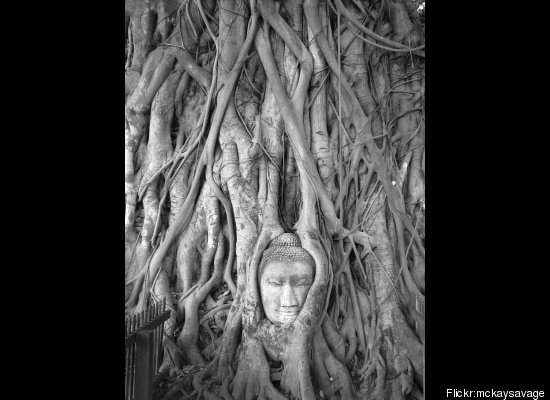

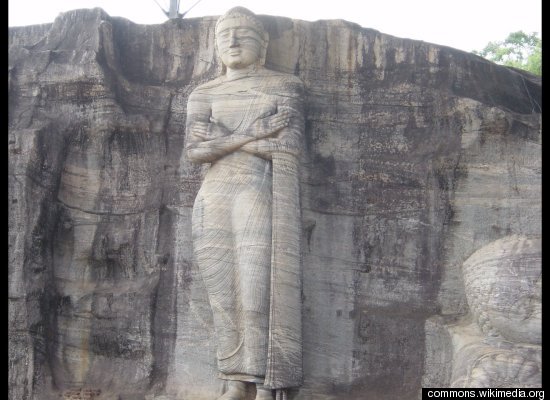
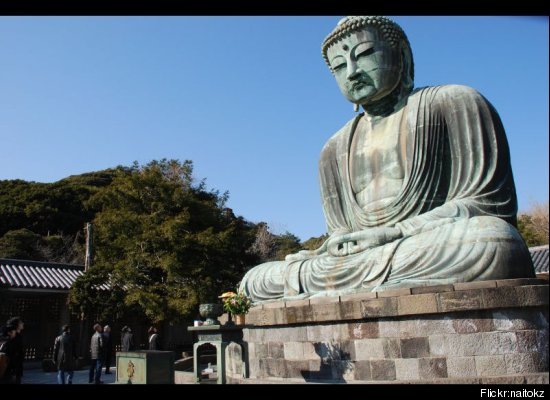
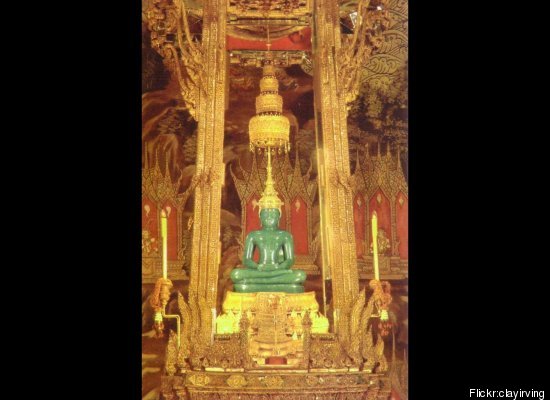


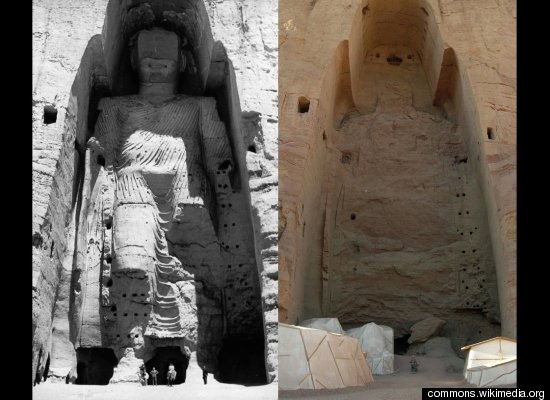
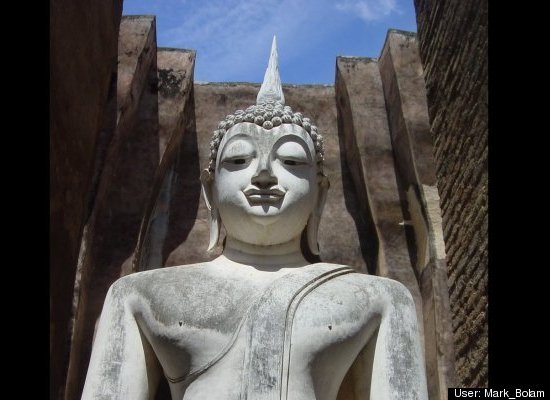


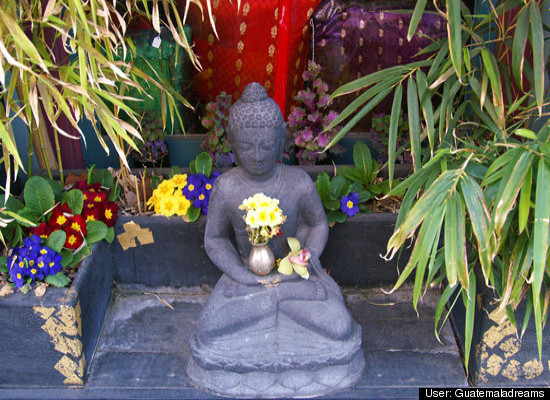
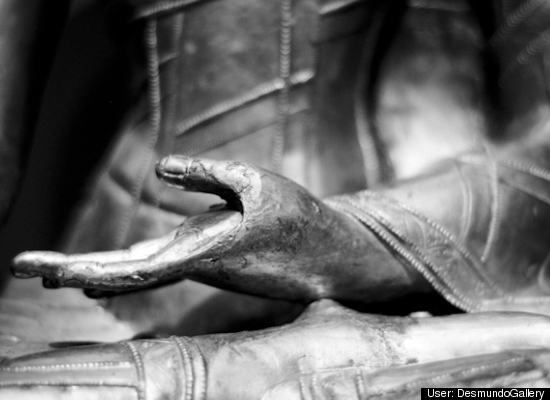

E2. சமுதயசத்தியத்தை(தோற்ற ஸத்தியத்தை) விளக்கிக்காட்டுதல்
மற்றும் எது, பிக்குளே,
dukkha-samudaya ariyasacca துக்கத்தின் மூலக்காரணமான மேதக்க மெய்ம்மை ?
அது இந்த, மறுபிறப்பிற்கு வழிகாட்டும் அடக்க முடியாத ஆசை/இச்சை/தாகம்/தகாச்
சிற்றின்பவேட்கை, அத்துடன் இணைக்கப்பட்ட ஆர்வ வேட்கை மற்றும் இன்பம்
நுகர்தல், இங்கும் அங்குமாக களிப்பூட்டு காண்டல், அதை வாக்காட: kāma-taṇhā,
bhava-taṇhā and vibhava-taṇhā புலனுணர்வுக்கு ஆட்பட்ட சபல இச்சை, மறுமுறை
தொடர்ந்து உயிர் வாழ அடக்க முடியாத ஆசை மற்றும் மறுமுறை தொடர்ந்து உயிர்
வாழாதிருக்க அடக்க முடியாத ஆசை. ஆனால் இந்த taṇhā அடக்க முடியாத
ஆசை/இச்சை/தாகம்/தகாச் சிற்றின்பவேட்கை, பிக்குளே, எழும்பும் நேரத்தில்,
அது எங்கே யெழும்புகிறது, தானே நிலைகொள்கிற நேரத்தில், அது எங்கே
நிலைகொள்கிறது? அங்கே இந்த உலகத்தினுள்ளே எவை மகிழ்வளிக்கிற மற்றும்
ஒத்துக்கொள்கிறதாகக் காணப்படுகிற , அங்கே தான் taṇhā அடக்க முடியாத
ஆசை/இச்சை/தாகம்/தகாச் சிற்றின்பவேட்கை, எழும்பும் நேரத்தில், அது எங்கே
யெழும்புகிறது, தானே நிலைகொள்கிற நேரத்தில், அது எங்கே நிலைகொள்கிறது.
மற்றும் எது இந்த உலகத்தினுள்ளே
எவை மகிழ்வளிக்கிற மற்றும் ஒத்துக்கொள்கிறதாகக் காணப்படுகிறது? இந்த கண்கள்
உலகத்தினுள்ளே மகிழ்வளிக்கிற மற்றும் ஒத்துக்கொள்கிறதாகக் காணப்படுகிறது,
அங்கே தான் taṇhā அடக்க முடியாத ஆசை/இச்சை/தாகம்/தகாச் சிற்றின்பவேட்கை ,
எழும்பும் நேரத்தில், அது எங்கே யெழும்புகிறது, தானே நிலைகொள்கிற
நேரத்தில், அது எங்கே நிலைகொள்கிறது,இந்த காது உலகத்தினுள்ளே
மகிழ்வளிக்கிற மற்றும் ஒத்துக்கொள்கிறதாகக் காணப்படுகிறது, அங்கே தான்
taṇhā அடக்க முடியாத ஆசை/இச்சை/தாகம்/தகாச் சிற்றின்பவேட்கை, எழும்பும்
நேரத்தில், அது எங்கே யெழும்புகிறது, தானே நிலைகொள்கிற நேரத்தில், அது
எங்கே நிலைகொள்கிறது. இந்த மூக்கு உலகத்தினுள்ளே மகிழ்வளிக்கிற மற்றும்
ஒத்துக்கொள்கிறதாகக் காணப்படுகிறது, அங்கே தான் taṇhā அடக்க முடியாத
ஆசை/இச்சை/தாகம்/தகாச் சிற்றின்பவேட்கை, எழும்பும் நேரத்தில், அது எங்கே
யெழும்புகிறது, தானே நிலைகொள்கிற நேரத்தில், அது எங்கே நிலைகொள்கிறது.
இந்த நாக்கு உலகத்தினுள்ளே மகிழ்வளிக்கிற மற்றும் ஒத்துக்கொள்கிறதாகக்
காணப்படுகிறது, அங்கே தான் taṇhā அடக்க முடியாத ஆசை/இச்சை/தாகம்/தகாச்
சிற்றின்பவேட்கை, எழும்பும் நேரத்தில், அது எங்கே யெழும்புகிறது, தானே
நிலைகொள்கிற நேரத்தில், அது எங்கே நிலைகொள்கிறது. இந்த Kāya காயம் உடல்
உலகத்தினுள்ளே மகிழ்வளிக்கிற மற்றும் ஒத்துக்கொள்கிறதாகக் காணப்படுகிறது,
அங்கே தான் taṇhā அடக்க முடியாத ஆசை/இச்சை/தாகம்/தகாச் சிற்றின்பவேட்கை,
எழும்பும் நேரத்தில், அது எங்கே யெழும்புகிறது, தானே நிலைகொள்கிற
நேரத்தில், அது எங்கே நிலைகொள்கிறது. இந்த Mana மனம் உலகத்தினுள்ளே
மகிழ்வளிக்கிற மற்றும் ஒத்துக்கொள்கிறதாகக் காணப்படுகிறது, அங்கே தான்
taṇhā அடக்க முடியாத ஆசை/இச்சை/தாகம்/தகாச் சிற்றின்பவேட்கை, எழும்பும்
நேரத்தில், அது எங்கே யெழும்புகிறது, தானே நிலைகொள்கிற நேரத்தில், அது
எங்கே நிலைகொள்கிறது.
கண்ணுக்கு
தெரிகிற படிவங்கள் இந்த உலகத்தினுள்ளே எவை மகிழ்வளிக்கிற மற்றும்
ஒத்துக்கொள்கிறதாகக் காணப்படுகிறதோ, அங்கே தான் taṇhā அடக்க முடியாத
ஆசை/இச்சை/தாகம்/தகாச் சிற்றின்பவேட்கை, எழும்பும் நேரத்தில், அது எங்கே
யெழும்புகிறது, தானே நிலைகொள்கிற நேரத்தில், அது எங்கே நிலைகொள்கிறது.
ஒலிகள், இந்த உலகத்தினுள்ளே எவை மகிழ்வளிக்கிற மற்றும் ஒத்துக்கொள்கிறதாகக்
காணப்படுகிறதோ, அங்கே தான் taṇhā அடக்க முடியாத ஆசை/இச்சை/தாகம்/தகாச்
சிற்றின்பவேட்கை, எழும்பும் நேரத்தில், அது எங்கே யெழும்புகிறது, தானே
நிலைகொள்கிற நேரத்தில், அது எங்கே நிலைகொள்கிறது. வாசனைகள், இந்த
உலகத்தினுள்ளே எவை மகிழ்வளிக்கிற மற்றும் ஒத்துக்கொள்கிறதாகக்
காணப்படுகிறதோ, அங்கே தான் taṇhā அடக்க முடியாத ஆசை/இச்சை/தாகம்/தகாச்
சிற்றின்பவேட்கை, எழும்பும் நேரத்தில், அது எங்கே யெழும்புகிறது, தானே
நிலைகொள்கிற நேரத்தில், அது எங்கே நிலைகொள்கிறது. சுவைகள் இந்த
உலகத்தினுள்ளே எவை மகிழ்வளிக்கிற மற்றும் ஒத்துக்கொள்கிறதாகக்
காணப்படுகிறதோ, அங்கே தான் taṇhā அடக்க முடியாத ஆசை/இச்சை/தாகம்/தகாச்
சிற்றின்பவேட்கை, எழும்பும் நேரத்தில், அது எங்கே யெழும்புகிறது, தானே
நிலைகொள்கிற நேரத்தில், அது எங்கே நிலைகொள்கிறது.உடலியல்பான
புலனுணர்வாதம் இந்த உலகத்தினுள்ளே எவை மகிழ்வளிக்கிற மற்றும்
ஒத்துக்கொள்கிறதாகக் காணப்படுகிறதோ, அங்கே தான் taṇhā அடக்க முடியாத
ஆசை/இச்சை/தாகம்/தகாச் சிற்றின்பவேட்கை, எழும்பும் நேரத்தில், அது எங்கே
யெழும்புகிறது, தானே நிலைகொள்கிற நேரத்தில், அது எங்கே நிலைகொள்கிறது.
Dhammas
தம்மங்கள் யாவுங் கடந்த மெய்யாகக் காண்டல் கட்டம் இந்த உலகத்தினுள்ளே எவை
மகிழ்வளிக்கிற மற்றும் ஒத்துக்கொள்கிறதாகக் காணப்படுகிறதோ, அங்கே தான்
taṇhā அடக்க முடியாத ஆசை/இச்சை/தாகம்/தகாச் சிற்றின்பவேட்கை, எழும்பும்
நேரத்தில், அது எங்கே யெழும்புகிறது, தானே நிலைகொள்கிற நேரத்தில், அது
எங்கே நிலைகொள்கிறது.
இந்த eye-viññāṇa கண்-விழிப்புணர்வுநிலை இந்த உலகத்தினுள்ளே எவை
மகிழ்வளிக்கிற மற்றும் ஒத்துக்கொள்கிறதாகக் காணப்படுகிறதோ, அங்கே தான்
taṇhā அடக்க முடியாத ஆசை/இச்சை/தாகம்/தகாச் சிற்றின்பவேட்கை, எழும்பும்
நேரத்தில், அது எங்கே யெழும்புகிறது, தானே நிலைகொள்கிற நேரத்தில், அது
எங்கே நிலைகொள்கிறது.இந்த ear-viññāṇa காது-விழிப்புணர்வுநிலை இந்த
உலகத்தினுள்ளே எவை மகிழ்வளிக்கிற மற்றும் ஒத்துக்கொள்கிறதாகக்
காணப்படுகிறதோ, அங்கே தான் taṇhā அடக்க முடியாத ஆசை/இச்சை/தாகம்/தகாச்
சிற்றின்பவேட்கை, எழும்பும் நேரத்தில், அது எங்கே யெழும்புகிறது, தானே
நிலைகொள்கிற நேரத்தில், அது எங்கே நிலைகொள்கிறது.இந்த nose-viññāṇa
மூக்கு-விழிப்புணர்வுநிலை இந்த உலகத்தினுள்ளே எவை மகிழ்வளிக்கிற மற்றும்
ஒத்துக்கொள்கிறதாகக் காணப்படுகிறதோ, அங்கே தான் taṇhā அடக்க முடியாத
ஆசை/இச்சை/தாகம்/தகாச் சிற்றின்பவேட்கை, எழும்பும் நேரத்தில், அது எங்கே
யெழும்புகிறது, தானே நிலைகொள்கிற நேரத்தில், அது எங்கே நிலைகொள்கிறது.
இந்த tongue-viññāṇa நாக்கு-விழிப்புணர்வுநிலை இந்த உலகத்தினுள்ளே எவை
மகிழ்வளிக்கிற மற்றும் ஒத்துக்கொள்கிறதாகக் காணப்படுகிறதோ, அங்கே தான்
taṇhā அடக்க முடியாத ஆசை/இச்சை/தாகம்/தகாச் சிற்றின்பவேட்கை, எழும்பும்
நேரத்தில், அது எங்கே யெழும்புகிறது, தானே நிலைகொள்கிற நேரத்தில், அது
எங்கே நிலைகொள்கிறது. இந்த Kāyaகாயம் -viññāṇa உடம்பு-விழிப்புணர்வுநிலை
இந்த உலகத்தினுள்ளே எவை மகிழ்வளிக்கிற மற்றும் ஒத்துக்கொள்கிறதாகக்
காணப்படுகிறதோ, அங்கே தான் taṇhā அடக்க முடியாத ஆசை/இச்சை/தாகம்/தகாச்
சிற்றின்பவேட்கை, எழும்பும் நேரத்தில், அது எங்கே யெழும்புகிறது, தானே
நிலைகொள்கிற நேரத்தில், அது எங்கே நிலைகொள்கிறது.
இந்த Mana-viññāṇa
மனம்-விழிப்புணர்வுநிலை இந்த உலகத்தினுள்ளே எவை மகிழ்வளிக்கிற மற்றும்
ஒத்துக்கொள்கிறதாகக் காணப்படுகிறதோ, அங்கே தான் taṇhā அடக்க முடியாத
ஆசை/இச்சை/தாகம்/தகாச் சிற்றின்பவேட்கை, எழும்பும் நேரத்தில், அது எங்கே
யெழும்புகிறது, தானே நிலைகொள்கிற நேரத்தில், அது எங்கே நிலைகொள்கிறது.
இந்த eye-samphassa கண்-தொடர்பு இந்த உலகத்தினுள்ளே எவை மகிழ்வளிக்கிற
மற்றும் ஒத்துக்கொள்கிறதாகக் காணப்படுகிறதோ, அங்கே தான் taṇhā அடக்க
முடியாத ஆசை/இச்சை/தாகம்/தகாச் சிற்றின்பவேட்கை, எழும்பும் நேரத்தில்,
அது எங்கே யெழும்புகிறது, தானே நிலைகொள்கிற நேரத்தில், அது எங்கே
நிலைகொள்கிறது.இந்த ear-samphassa காது-தொடர்பு இந்த உலகத்தினுள்ளே எவை
மகிழ்வளிக்கிற மற்றும் ஒத்துக்கொள்கிறதாகக் காணப்படுகிறதோ, அங்கே தான்
taṇhā அடக்க முடியாத ஆசை/இச்சை/தாகம்/தகாச் சிற்றின்பவேட்கை, எழும்பும்
நேரத்தில், அது எங்கே யெழும்புகிறது, தானே நிலைகொள்கிற நேரத்தில், அது
எங்கே நிலைகொள்கிறது.இந்த nose-samphassa மூக்கு-தொடர்பு இந்த
உலகத்தினுள்ளே எவை மகிழ்வளிக்கிற மற்றும் ஒத்துக்கொள்கிறதாகக்
காணப்படுகிறதோ, அங்கே தான் taṇhā அடக்க முடியாத ஆசை/இச்சை/தாகம்/தகாச்
சிற்றின்பவேட்கை, எழும்பும் நேரத்தில், அது எங்கே யெழும்புகிறது, தானே
நிலைகொள்கிற நேரத்தில், அது எங்கே நிலைகொள்கிறது. இந்த tongue-samphassa
நாக்கு-தொடர்பு இந்த உலகத்தினுள்ளே எவை மகிழ்வளிக்கிற மற்றும்
ஒத்துக்கொள்கிறதாகக் காணப்படுகிறதோ, அங்கே தான் taṇhā அடக்க முடியாத
ஆசை/இச்சை/தாகம்/தகாச் சிற்றின்பவேட்கை, எழும்பும் நேரத்தில், அது எங்கே
யெழும்புகிறது, தானே நிலைகொள்கிற நேரத்தில், அது எங்கே நிலைகொள்கிறது.
இந்த Kāyaகாயம் -samphassa உடம்பு-தொடர்பு இந்த உலகத்தினுள்ளே எவை
மகிழ்வளிக்கிற மற்றும் ஒத்துக்கொள்கிறதாகக் காணப்படுகிறதோ, அங்கே தான்
taṇhā அடக்க முடியாத ஆசை/இச்சை/தாகம்/தகாச் சிற்றின்பவேட்கை, எழும்பும்
நேரத்தில், அது எங்கே யெழும்புகிறது, தானே நிலைகொள்கிற நேரத்தில், அது
எங்கே நிலைகொள்கிறது. இந்த Mana-samphassa மனம்-தொடர்பு இந்த
உலகத்தினுள்ளே எவை மகிழ்வளிக்கிற மற்றும் ஒத்துக்கொள்கிறதாகக்
காணப்படுகிறதோ, அங்கே தான் taṇhā அடக்க முடியாத ஆசை/இச்சை/தாகம்/தகாச்
சிற்றின்பவேட்கை, எழும்பும் நேரத்தில், அது எங்கே யெழும்புகிறது, தானே
நிலைகொள்கிற நேரத்தில், அது எங்கே நிலைகொள்கிறது.
The vedanāவேதனையால் பிறந்த இந்த eye-samphassa கண்-தொடர்பு இந்த
உலகத்தினுள்ளே எவை மகிழ்வளிக்கிற மற்றும் ஒத்துக்கொள்கிறதாகக்
காணப்படுகிறதோ, அங்கே தான் taṇhā அடக்க முடியாத ஆசை/இச்சை/தாகம்/தகாச்
சிற்றின்பவேட்கை, எழும்பும் நேரத்தில், அது எங்கே யெழும்புகிறது, தானே
நிலைகொள்கிற நேரத்தில், அது எங்கே நிலைகொள்கிறது.இந்த ear-samphassa
காது-தொடர்பு இந்த உலகத்தினுள்ளே எவை மகிழ்வளிக்கிற மற்றும்
ஒத்துக்கொள்கிறதாகக் காணப்படுகிறதோ, அங்கே தான் taṇhā அடக்க முடியாத
ஆசை/இச்சை/தாகம்/தகாச் சிற்றின்பவேட்கை, எழும்பும் நேரத்தில், அது எங்கே
யெழும்புகிறது, தானே நிலைகொள்கிற நேரத்தில், அது எங்கே நிலைகொள்கிறது.இந்த
nose-samphassa மூக்கு-தொடர்பு இந்த உலகத்தினுள்ளே எவை மகிழ்வளிக்கிற
மற்றும் ஒத்துக்கொள்கிறதாகக் காணப்படுகிறதோ, அங்கே தான் taṇhā அடக்க
முடியாத ஆசை/இச்சை/தாகம்/தகாச் சிற்றின்பவேட்கை, எழும்பும் நேரத்தில்,
அது எங்கே யெழும்புகிறது, தானே நிலைகொள்கிற நேரத்தில், அது எங்கே
நிலைகொள்கிறது. இந்த tongue-samphassa நாக்கு-தொடர்பு இந்த
உலகத்தினுள்ளே எவை மகிழ்வளிக்கிற மற்றும் ஒத்துக்கொள்கிறதாகக்
காணப்படுகிறதோ, அங்கே தான் taṇhā அடக்க முடியாத ஆசை/இச்சை/தாகம்/தகாச்
சிற்றின்பவேட்கை, எழும்பும் நேரத்தில், அது எங்கே யெழும்புகிறது, தானே
நிலைகொள்கிற நேரத்தில், அது எங்கே நிலைகொள்கிறது.
இந்த Kāyaகாயம்
-samphassa உடம்பு-தொடர்பு இந்த உலகத்தினுள்ளே எவை மகிழ்வளிக்கிற மற்றும்
ஒத்துக்கொள்கிறதாகக் காணப்படுகிறதோ, அங்கே தான் taṇhā அடக்க முடியாத
ஆசை/இச்சை/தாகம்/தகாச் சிற்றின்பவேட்கை, எழும்பும் நேரத்தில், அது எங்கே
யெழும்புகிறது, தானே நிலைகொள்கிற நேரத்தில், அது எங்கே
நிலைகொள்கிறது.
இந்த Mana-samphassa மனம்-தொடர்பு இந்த உலகத்தினுள்ளே எவை
மகிழ்வளிக்கிற மற்றும் ஒத்துக்கொள்கிறதாகக் காணப்படுகிறதோ, அங்கே தான்
taṇhā அடக்க முடியாத ஆசை/இச்சை/தாகம்/தகாச் சிற்றின்பவேட்கை, எழும்பும்
நேரத்தில், அது எங்கே யெழும்புகிறது, தானே நிலைகொள்கிற நேரத்தில், அது
எங்கே நிலைகொள்கிறது.
இந்த saññā புலனுணர்வு கண்ணுக்கு தெரிகிற படிவங்கள் இந்த உலகத்தினுள்ளே எவை
மகிழ்வளிக்கிற மற்றும் ஒத்துக்கொள்கிறதாகக் காணப்படுகிறதோ, அங்கே தான்
taṇhā அடக்க முடியாத ஆசை/இச்சை/தாகம்/தகாச் சிற்றின்பவேட்கை, எழும்பும்
நேரத்தில், அது எங்கே யெழும்புகிறது, தானே நிலைகொள்கிற நேரத்தில், அது
எங்கே நிலைகொள்கிறது. saññā புலனுணர்வு ஒலிகள், இந்த உலகத்தினுள்ளே எவை
மகிழ்வளிக்கிற மற்றும் ஒத்துக்கொள்கிறதாகக் காணப்படுகிறதோ, அங்கே தான்
taṇhā அடக்க முடியாத ஆசை/இச்சை/தாகம்/தகாச் சிற்றின்பவேட்கை, எழும்பும்
நேரத்தில், அது எங்கே யெழும்புகிறது, தானே நிலைகொள்கிற நேரத்தில், அது
எங்கே நிலைகொள்கிறது. saññā புலனுணர்வு வாசனைகள், இந்த உலகத்தினுள்ளே எவை
மகிழ்வளிக்கிற மற்றும் ஒத்துக்கொள்கிறதாகக் காணப்படுகிறதோ, அங்கே தான்
taṇhā அடக்க முடியாத ஆசை/இச்சை/தாகம்/தகாச் சிற்றின்பவேட்கை, எழும்பும்
நேரத்தில், அது எங்கே யெழும்புகிறது, தானே நிலைகொள்கிற நேரத்தில், அது
எங்கே நிலைகொள்கிறது. saññā புலனுணர்வு சுவைகள் இந்த உலகத்தினுள்ளே எவை
மகிழ்வளிக்கிற மற்றும் ஒத்துக்கொள்கிறதாகக் காணப்படுகிறதோ, அங்கே தான்
taṇhā அடக்க முடியாத ஆசை/இச்சை/தாகம்/தகாச் சிற்றின்பவேட்கை, எழும்பும்
நேரத்தில், அது எங்கே யெழும்புகிறது, தானே நிலைகொள்கிற நேரத்தில், அது
எங்கே நிலைகொள்கிறது.
saññā புலனுணர்வு உடலியல்பான புலனுணர்வாதம் இந்த உலகத்தினுள்ளே எவை
மகிழ்வளிக்கிற மற்றும் ஒத்துக்கொள்கிறதாகக் காணப்படுகிறதோ, அங்கே தான்
taṇhā அடக்க முடியாத ஆசை/இச்சை/தாகம்/தகாச் சிற்றின்பவேட்கை, எழும்பும்
நேரத்தில், அது எங்கே யெழும்புகிறது, தானே நிலைகொள்கிற நேரத்தில், அது
எங்கே நிலைகொள்கிறது.
saññā புலனுணர்வு Dhammas தம்மங்கள் யாவுங் கடந்த மெய்யாகக் காண்டல் கட்டம்
இந்த உலகத்தினுள்ளே எவை மகிழ்வளிக்கிற மற்றும் ஒத்துக்கொள்கிறதாகக்
காணப்படுகிறதோ, அங்கே தான் taṇhā அடக்க முடியாத ஆசை/இச்சை/தாகம்/தகாச்
சிற்றின்பவேட்கை, எழும்பும் நேரத்தில், அது எங்கே யெழும்புகிறது, தானே
நிலைகொள்கிற நேரத்தில், அது எங்கே நிலைகொள்கிறது.
இந்த புலனுணர்வு தொகுத்த பொதுக் கருத்துப்படிவம் தொடர்புடைய கண்ணுக்கு
தெரிகிற படிவங்கள் இந்த உலகத்தினுள்ளே எவை மகிழ்வளிக்கிற மற்றும்
ஒத்துக்கொள்கிறதாகக் காணப்படுகிறதோ, அங்கே தான் taṇhā அடக்க முடியாத
ஆசை/இச்சை/தாகம்/தகாச் சிற்றின்பவேட்கை, எழும்பும் நேரத்தில், அது எங்கே
யெழும்புகிறது, தானே நிலைகொள்கிற நேரத்தில், அது எங்கே நிலைகொள்கிறது.
ஒலிகள், இந்த உலகத்தினுள்ளே எவை மகிழ்வளிக்கிற மற்றும் ஒத்துக்கொள்கிறதாகக்
காணப்படுகிறதோ, அங்கே தான் taṇhā அடக்க முடியாத ஆசை/இச்சை/தாகம்/தகாச்
சிற்றின்பவேட்கை, எழும்பும் நேரத்தில், அது எங்கே யெழும்புகிறது, தானே
நிலைகொள்கிற நேரத்தில், அது எங்கே நிலைகொள்கிறது. வாசனைகள், இந்த
உலகத்தினுள்ளே எவை மகிழ்வளிக்கிற மற்றும் ஒத்துக்கொள்கிறதாகக்
காணப்படுகிறதோ, அங்கே தான் taṇhā அடக்க முடியாத ஆசை/இச்சை/தாகம்/தகாச்
சிற்றின்பவேட்கை, எழும்பும் நேரத்தில், அது எங்கே யெழும்புகிறது, தானே
நிலைகொள்கிற நேரத்தில், அது எங்கே நிலைகொள்கிறது. சுவைகள் இந்த
உலகத்தினுள்ளே எவை மகிழ்வளிக்கிற மற்றும் ஒத்துக்கொள்கிறதாகக்
காணப்படுகிறதோ, அங்கே தான் taṇhā அடக்க முடியாத ஆசை/இச்சை/தாகம்/தகாச்
சிற்றின்பவேட்கை, எழும்பும் நேரத்தில், அது எங்கே யெழும்புகிறது, தானே
நிலைகொள்கிற நேரத்தில், அது எங்கே நிலைகொள்கிறது. உடலியல்பான
புலனுணர்வாதம் இந்த உலகத்தினுள்ளே எவை மகிழ்வளிக்கிற மற்றும்
ஒத்துக்கொள்கிறதாகக் காணப்படுகிறதோ, அங்கே தான் taṇhā அடக்க முடியாத
ஆசை/இச்சை/தாகம்/தகாச் சிற்றின்பவேட்கை, எழும்பும் நேரத்தில், அது எங்கே
யெழும்புகிறது, தானே நிலைகொள்கிற நேரத்தில், அது எங்கே நிலைகொள்கிறது. Dhammas
தம்மங்கள் யாவுங் கடந்த மெய்யாகக் காண்டல் கட்டம் இந்த உலகத்தினுள்ளே எவை
மகிழ்வளிக்கிற மற்றும் ஒத்துக்கொள்கிறதாகக் காணப்படுகிறதோ, அங்கே தான்
taṇhā அடக்க முடியாத ஆசை/இச்சை/தாகம்/தகாச் சிற்றின்பவேட்கை, எழும்பும்
நேரத்தில், அது எங்கே யெழும்புகிறது, தானே நிலைகொள்கிற நேரத்தில், அது
எங்கே நிலைகொள்கிறது.
இந்த taṇhā அடக்க முடியாத ஆசை/இச்சை/தாகம்/தகாச் சிற்றின்பவேட்கை,
கண்ணுக்கு தெரிகிற படிவங்கள் இந்த உலகத்தினுள்ளே எவை மகிழ்வளிக்கிற மற்றும்
ஒத்துக்கொள்கிறதாகக் காணப்படுகிறதோ, அங்கே தான் taṇhā அடக்க முடியாத
ஆசை/இச்சை/தாகம்/தகாச் சிற்றின்பவேட்கை, எழும்பும் நேரத்தில், அது எங்கே
யெழும்புகிறது, தானே நிலைகொள்கிற நேரத்தில், அது எங்கே நிலைகொள்கிறது.
ஒலிகள், இந்த உலகத்தினுள்ளே எவை மகிழ்வளிக்கிற மற்றும் ஒத்துக்கொள்கிறதாகக்
காணப்படுகிறதோ, அங்கே தான் taṇhā அடக்க முடியாத ஆசை/இச்சை/தாகம்/தகாச்
சிற்றின்பவேட்கை, எழும்பும் நேரத்தில், அது எங்கே யெழும்புகிறது, தானே
நிலைகொள்கிற நேரத்தில், அது எங்கே நிலைகொள்கிறது. வாசனைகள், இந்த
உலகத்தினுள்ளே எவை மகிழ்வளிக்கிற மற்றும் ஒத்துக்கொள்கிறதாகக்
காணப்படுகிறதோ, அங்கே தான் taṇhā அடக்க முடியாத ஆசை/இச்சை/தாகம்/தகாச்
சிற்றின்பவேட்கை, எழும்பும் நேரத்தில், அது எங்கே யெழும்புகிறது, தானே
நிலைகொள்கிற நேரத்தில், அது எங்கே நிலைகொள்கிறது. சுவைகள் இந்த
உலகத்தினுள்ளே எவை மகிழ்வளிக்கிற மற்றும் ஒத்துக்கொள்கிறதாகக்
காணப்படுகிறதோ, அங்கே தான் taṇhā அடக்க முடியாத ஆசை/இச்சை/தாகம்/தகாச்
சிற்றின்பவேட்கை, எழும்பும் நேரத்தில், அது எங்கே யெழும்புகிறது, தானே
நிலைகொள்கிற நேரத்தில், அது எங்கே நிலைகொள்கிறது.
உடலியல்பான
புலனுணர்வாதம் இந்த உலகத்தினுள்ளே எவை மகிழ்வளிக்கிற மற்றும்
ஒத்துக்கொள்கிறதாகக் காணப்படுகிறதோ, அங்கே தான் taṇhā அடக்க முடியாத
ஆசை/இச்சை/தாகம்/தகாச் சிற்றின்பவேட்கை, எழும்பும் நேரத்தில், அது எங்கே
யெழும்புகிறது, தானே நிலைகொள்கிற நேரத்தில், அது எங்கே
நிலைகொள்கிறது.
Dhammas தம்மங்கள் யாவுங் கடந்த மெய்யாகக் காண்டல் கட்டம்
இந்த உலகத்தினுள்ளே எவை மகிழ்வளிக்கிற மற்றும் ஒத்துக்கொள்கிறதாகக்
காணப்படுகிறதோ, அங்கே தான் taṇhā அடக்க முடியாத ஆசை/இச்சை/தாகம்/தகாச்
சிற்றின்பவேட்கை, எழும்பும் நேரத்தில், அது எங்கே யெழும்புகிறது, தானே
நிலைகொள்கிற நேரத்தில், அது எங்கே நிலைகொள்கிறது.
இந்த vitakka எண்ணம்/எதிரொளி கண்ணுக்கு தெரிகிற படிவங்கள் இந்த
உலகத்தினுள்ளே எவை மகிழ்வளிக்கிற மற்றும் ஒத்துக்கொள்கிறதாகக்
காணப்படுகிறதோ, அங்கே தான் taṇhā அடக்க முடியாத ஆசை/இச்சை/தாகம்/தகாச்
சிற்றின்பவேட்கை, எழும்பும் நேரத்தில், அது எங்கே யெழும்புகிறது, தானே
நிலைகொள்கிற நேரத்தில், அது எங்கே நிலைகொள்கிறது. ஒலிகள், இந்த
உலகத்தினுள்ளே எவை மகிழ்வளிக்கிற மற்றும் ஒத்துக்கொள்கிறதாகக்
காணப்படுகிறதோ, அங்கே தான் taṇhā அடக்க முடியாத ஆசை/இச்சை/தாகம்/தகாச்
சிற்றின்பவேட்கை, எழும்பும் நேரத்தில், அது எங்கே யெழும்புகிறது, தானே
நிலைகொள்கிற நேரத்தில், அது எங்கே நிலைகொள்கிறது. வாசனைகள், இந்த
உலகத்தினுள்ளே எவை மகிழ்வளிக்கிற மற்றும் ஒத்துக்கொள்கிறதாகக்
காணப்படுகிறதோ, அங்கே தான் taṇhā அடக்க முடியாத ஆசை/இச்சை/தாகம்/தகாச்
சிற்றின்பவேட்கை, எழும்பும் நேரத்தில், அது எங்கே யெழும்புகிறது, தானே
நிலைகொள்கிற நேரத்தில், அது எங்கே நிலைகொள்கிறது. சுவைகள் இந்த
உலகத்தினுள்ளே எவை மகிழ்வளிக்கிற மற்றும் ஒத்துக்கொள்கிறதாகக்
காணப்படுகிறதோ, அங்கே தான் taṇhā அடக்க முடியாத ஆசை/இச்சை/தாகம்/தகாச்
சிற்றின்பவேட்கை, எழும்பும் நேரத்தில், அது எங்கே யெழும்புகிறது, தானே
நிலைகொள்கிற நேரத்தில், அது எங்கே நிலைகொள்கிறது.
உடலியல்பான
புலனுணர்வாதம் இந்த உலகத்தினுள்ளே எவை மகிழ்வளிக்கிற மற்றும்
ஒத்துக்கொள்கிறதாகக் காணப்படுகிறதோ, அங்கே தான் taṇhā அடக்க முடியாத
ஆசை/இச்சை/தாகம்/தகாச் சிற்றின்பவேட்கை, எழும்பும் நேரத்தில், அது எங்கே
யெழும்புகிறது, தானே நிலைகொள்கிற நேரத்தில், அது எங்கே
நிலைகொள்கிறது.
Dhammas தம்மங்கள் யாவுங் கடந்த மெய்யாகக் காண்டல் கட்டம்
இந்த உலகத்தினுள்ளே எவை மகிழ்வளிக்கிற மற்றும் ஒத்துக்கொள்கிறதாகக்
காணப்படுகிறதோ, அங்கே தான் taṇhā அடக்க முடியாத ஆசை/இச்சை/தாகம்/தகாச்
சிற்றின்பவேட்கை, எழும்பும் நேரத்தில், அது எங்கே யெழும்புகிறது, தானே
நிலைகொள்கிற நேரத்தில், அது எங்கே நிலைகொள்கிறது.
இந்த vicāra ஒரு விஷயம் முடியும் முன்பே மற்றொரு விஷயத்திற்கு மாறுகி
எண்ணம் கண்ணுக்கு தெரிகிற படிவங்கள் இந்த உலகத்தினுள்ளே எவை மகிழ்வளிக்கிற
மற்றும் ஒத்துக்கொள்கிறதாகக் காணப்படுகிறதோ, அங்கே தான் taṇhā அடக்க
முடியாத ஆசை/இச்சை/தாகம்/தகாச் சிற்றின்பவேட்கை, எழும்பும் நேரத்தில்,
அது எங்கே யெழும்புகிறது, தானே நிலைகொள்கிற நேரத்தில், அது எங்கே
நிலைகொள்கிறது. ஒலிகள், இந்த உலகத்தினுள்ளே எவை மகிழ்வளிக்கிற மற்றும்
ஒத்துக்கொள்கிறதாகக் காணப்படுகிறதோ, அங்கே தான் taṇhā அடக்க முடியாத
ஆசை/இச்சை/தாகம்/தகாச் சிற்றின்பவேட்கை, எழும்பும் நேரத்தில், அது எங்கே
யெழும்புகிறது, தானே நிலைகொள்கிற நேரத்தில், அது எங்கே நிலைகொள்கிறது.
வாசனைகள், இந்த உலகத்தினுள்ளே எவை மகிழ்வளிக்கிற மற்றும்
ஒத்துக்கொள்கிறதாகக் காணப்படுகிறதோ, அங்கே தான் taṇhā அடக்க முடியாத
ஆசை/இச்சை/தாகம்/தகாச் சிற்றின்பவேட்கை, எழும்பும் நேரத்தில், அது எங்கே
யெழும்புகிறது, தானே நிலைகொள்கிற நேரத்தில், அது எங்கே நிலைகொள்கிறது.
சுவைகள் இந்த உலகத்தினுள்ளே எவை மகிழ்வளிக்கிற மற்றும் ஒத்துக்கொள்கிறதாகக்
காணப்படுகிறதோ, அங்கே தான் taṇhā அடக்க முடியாத ஆசை/இச்சை/தாகம்/தகாச்
சிற்றின்பவேட்கை, எழும்பும் நேரத்தில், அது எங்கே யெழும்புகிறது, தானே
நிலைகொள்கிற நேரத்தில், அது எங்கே நிலைகொள்கிறது.
உடலியல்பான
புலனுணர்வாதம் இந்த உலகத்தினுள்ளே எவை மகிழ்வளிக்கிற மற்றும்
ஒத்துக்கொள்கிறதாகக் காணப்படுகிறதோ, அங்கே தான் taṇhā அடக்க முடியாத
ஆசை/இச்சை/தாகம்/தகாச் சிற்றின்பவேட்கை, எழும்பும் நேரத்தில், அது எங்கே
யெழும்புகிறது, தானே நிலைகொள்கிற நேரத்தில், அது எங்கே
நிலைகொள்கிறது.
Dhammas தம்மங்கள் யாவுங் கடந்த மெய்யாகக் காண்டல் கட்டம்
இந்த உலகத்தினுள்ளே எவை மகிழ்வளிக்கிற மற்றும் ஒத்துக்கொள்கிறதாகக்
காணப்படுகிறதோ, அங்கே தான் taṇhā அடக்க முடியாத ஆசை/இச்சை/தாகம்/தகாச்
சிற்றின்பவேட்கை, எழும்பும் நேரத்தில், அது எங்கே யெழும்புகிறது, தானே
நிலைகொள்கிற நேரத்தில், அது எங்கே நிலைகொள்கிறது.
E2. சமுதாயஸச்ச நித்தேசஸ
Katamaṃ ca, bhikkhave, dukkha·samudayaṃ ariya·saccaṃ? Y·āyaṃ taṇhā ponobbhavikā nandi·rāga·sahagatā tatra·tatr·ābhinandinī, seyyathidaṃ: kāma-taṇhā, bhava-taṇhā, vibhava-taṇhā. Sā kho pan·esā, bhikkhave, taṇhā kattha uppajjamānā uppajjati, kattha nivisamānā nivisati? Yaṃ loke piya·rūpaṃ sāta·rūpaṃ etthesā taṇhā uppajjamānā uppajjati, ettha nivisamānā nivisati.
.
Kiñca loke piya·rūpaṃ sāta·rūpaṃ? Cakkhu loke piya·rūpaṃ sāta·rūpaṃ etthesā taṇhā uppajjamānā uppajjati, ettha nivisamānā nivisati. Sotaṃ loke piya·rūpaṃ sāta·rūpaṃ etthesā taṇhā uppajjamānā uppajjati, ettha nivisamānā nivisati. Ghānaṃ loke piya·rūpaṃ sāta·rūpaṃ etthesā taṇhā uppajjamānā uppajjati, ettha nivisamānā nivisati. Jivhā loke piya·rūpaṃ sāta·rūpaṃ etthesā taṇhā uppajjamānā uppajjati, ettha nivisamānā nivisati. Kayo loke piya·rūpaṃ sāta·rūpaṃ etthesā taṇhā uppajjamānā uppajjati, ettha nivisamānā nivisati. Mano loke piya·rūpaṃ sāta·rūpaṃ etthesā taṇhā uppajjamānā uppajjati, ettha nivisamānā nivisati.
Rūpā loke piya·rūpaṃ sāta·rūpaṃ etthesā taṇhā uppajjamānā uppajjati, ettha nivisamānā nivisati. Saddā loke piya·rūpaṃ sāta·rūpaṃ etthesā taṇhā uppajjamānā uppajjati, ettha nivisamānā nivisati. Gandhā loke piya·rūpaṃ sāta·rūpaṃ etthesā taṇhā uppajjamānā uppajjati, ettha nivisamānā nivisati. Rasā loke piya·rūpaṃ sāta·rūpaṃ etthesā taṇhā uppajjamānā uppajjati, ettha nivisamānā nivisati. Phoṭṭhabbā loke piya·rūpaṃ sāta·rūpaṃ etthesā taṇhā uppajjamānā uppajjati, ettha nivisamānā nivisati. Dhammā loke piya·rūpaṃ sāta·rūpaṃ etthesā taṇhā uppajjamānā uppajjati, ettha nivisamānā nivisati
Cakkhu·viññāṇaṃ loke piya·rūpaṃ sāta·rūpaṃ etthesā taṇhā uppajjamānā uppajjati, ettha nivisamānā nivisati. Sota·viññāṇaṃ loke piya·rūpaṃ sāta·rūpaṃ etthesā taṇhā uppajjamānā uppajjati, ettha nivisamānā nivisati. Ghāna·viññāṇaṃ loke piya·rūpaṃ sāta·rūpaṃ etthesā taṇhā uppajjamānā uppajjati, ettha nivisamānā nivisati. Jivhā·viññāṇaṃ loke piya·rūpaṃ sāta·rūpaṃ etthesā taṇhā uppajjamānā uppajjati, ettha nivisamānā nivisati. Kāya·viññāṇaṃ loke piya·rūpaṃ sāta·rūpaṃ etthesā taṇhā uppajjamānā uppajjati, ettha nivisamānā nivisati. Mano·viññāṇaṃ loke piya·rūpaṃ sāta·rūpaṃ etthesā taṇhā uppajjamānā uppajjati, ettha nivisamānā nivisati.
Cakkhu·samphasso loke piya·rūpaṃ sāta·rūpaṃ etthesā taṇhā uppajjamānā uppajjati, ettha nivisamānā nivisati. Sota·samphasso loke piya·rūpaṃ sāta·rūpaṃ etthesā taṇhā uppajjamānā uppajjati, ettha nivisamānā nivisati. Ghāna·samphasso loke piya·rūpaṃ sāta·rūpaṃ etthesā taṇhā uppajjamānā uppajjati, ettha nivisamānā nivisati. Jivhā·samphasso loke piya·rūpaṃ sāta·rūpaṃ etthesā taṇhā uppajjamānā uppajjati, ettha nivisamānā nivisati. Kāya·samphasso loke piya·rūpaṃ sāta·rūpaṃ etthesā taṇhā uppajjamānā uppajjati, ettha nivisamānā nivisati. Mano·samphasso loke piya·rūpaṃ sāta·rūpaṃ etthesā taṇhā uppajjamānā uppajjati, ettha nivisamānā nivisati.
Cakkhu·samphassa·jā vedanā loke piya·rūpaṃ sāta·rūpaṃ etthesā taṇhā uppajjamānā uppajjati, ettha nivisamānā nivisati. Sota·samphassa·jā vedanā loke piya·rūpaṃ sāta·rūpaṃ etthesā taṇhā uppajjamānā uppajjati, ettha nivisamānā nivisati. Ghāna·samphassa·jā vedanā loke piya·rūpaṃ sāta·rūpaṃ etthesā taṇhā uppajjamānā uppajjati, ettha nivisamānā nivisati. Jivhā·samphassa·jā vedanā loke piya·rūpaṃ sāta·rūpaṃ etthesā taṇhā uppajjamānā uppajjati, ettha nivisamānā nivisati. Kāya·samphassa·jā vedanā loke piya·rūpaṃ sāta·rūpaṃ etthesā taṇhā uppajjamānā uppajjati, ettha nivisamānā nivisati. Mano·samphassa·jā vedanā loke piya·rūpaṃ sāta·rūpaṃ etthesā taṇhā uppajjamānā uppajjati, ettha nivisamānā nivisati.
Rūpā·saññā loke piya·rūpaṃ sāta·rūpaṃ etthesā taṇhā uppajjamānā uppajjati, ettha nivisamānā nivisati. Sadda·saññā loke piya·rūpaṃ sāta·rūpaṃ etthesā taṇhā uppajjamānā uppajjati, ettha nivisamānā nivisati. Gandha·saññā loke piya·rūpaṃ sāta·rūpaṃ etthesā taṇhā uppajjamānā uppajjati, ettha nivisamānā nivisati. Rasa·saññā loke piya·rūpaṃ sāta·rūpaṃ etthesā taṇhā uppajjamānā uppajjati, ettha nivisamānā nivisati. Phoṭṭhabba·saññā loke piya·rūpaṃ sāta·rūpaṃ etthesā taṇhā uppajjamānā uppajjati, ettha nivisamānā nivisati. Dhamma·saññā loke piya·rūpaṃ sāta·rūpaṃ etthesā taṇhā uppajjamānā uppajjati, ettha nivisamānā nivisati.
Rūpā·sañcetanā loke piya·rūpaṃ sāta·rūpaṃ etthesā taṇhā uppajjamānā uppajjati, ettha nivisamānā nivisati. Sadda·sañcetanā loke piya·rūpaṃ sāta·rūpaṃ etthesā taṇhā uppajjamānā uppajjati, ettha nivisamānā nivisati. Gandha·sañcetanā loke piya·rūpaṃ sāta·rūpaṃ etthesā taṇhā uppajjamānā uppajjati, ettha nivisamānā nivisati. Rasa·sañcetanā loke piya·rūpaṃ sāta·rūpaṃ etthesā taṇhā uppajjamānā uppajjati, ettha nivisamānā nivisati. Phoṭṭhabba·sañcetanā loke piya·rūpaṃ sāta·rūpaṃ etthesā taṇhā uppajjamānā uppajjati, ettha nivisamānā nivisati. Dhamma·sañcetanā loke piya·rūpaṃ sāta·rūpaṃ etthesā taṇhā uppajjamānā uppajjati, ettha nivisamānā nivisati.
Rūpā·taṇhā loke piya·rūpaṃ sāta·rūpaṃ etthesā taṇhā uppajjamānā uppajjati, ettha nivisamānā nivisati. Sadda·taṇhā loke piya·rūpaṃ sāta·rūpaṃ etthesā taṇhā uppajjamānā uppajjati, ettha nivisamānā nivisati. Gandha·taṇhā loke piya·rūpaṃ sāta·rūpaṃ etthesā taṇhā uppajjamānā uppajjati, ettha nivisamānā nivisati. Rasa·taṇhā loke piya·rūpaṃ sāta·rūpaṃ etthesā taṇhā uppajjamānā uppajjati, ettha nivisamānā nivisati. Phoṭṭhabba·taṇhā loke piya·rūpaṃ sāta·rūpaṃ etthesā taṇhā uppajjamānā uppajjati, ettha nivisamānā nivisati. Dhamma·taṇhā loke piya·rūpaṃ sāta·rūpaṃ etthesā taṇhā uppajjamānā uppajjati, ettha nivisamānā nivisati.
Rūpā·vitakko loke piya·rūpaṃ sāta·rūpaṃ etthesā taṇhā uppajjamānā uppajjati, ettha nivisamānā nivisati. Sadda·vitakko loke piya·rūpaṃ sāta·rūpaṃ etthesā taṇhā uppajjamānā uppajjati, ettha nivisamānā nivisati. Gandha·vitakko loke piya·rūpaṃ sāta·rūpaṃ etthesā taṇhā uppajjamānā uppajjati, ettha nivisamānā nivisati. Rasa·vitakko loke piya·rūpaṃ sāta·rūpaṃ etthesā taṇhā uppajjamānā uppajjati, ettha nivisamānā nivisati. Phoṭṭhabba·vitakko loke piya·rūpaṃ sāta·rūpaṃ etthesā taṇhā uppajjamānā uppajjati, ettha nivisamānā nivisati. Dhamma·vitakko loke piya·rūpaṃ sāta·rūpaṃ etthesā taṇhā uppajjamānā uppajjati, ettha nivisamānā nivisati.
Rūpā·vicāro loke piya·rūpaṃ sāta·rūpaṃ etthesā taṇhā uppajjamānā uppajjati, ettha nivisamānā nivisati. Sadda·vicāro loke piya·rūpaṃ sāta·rūpaṃ etthesā taṇhā uppajjamānā uppajjati, ettha nivisamānā nivisati. Gandha·vicāro loke piya·rūpaṃ sāta·rūpaṃ etthesā taṇhā uppajjamānā uppajjati, ettha nivisamānā nivisati. Rasa·vicāro loke piya·rūpaṃ sāta·rūpaṃ etthesā taṇhā uppajjamānā uppajjati, ettha nivisamānā nivisati. Phoṭṭhabba·vicāro loke piya·rūpaṃ sāta·rūpaṃ etthesā taṇhā uppajjamānā uppajjati, ettha nivisamānā nivisati. Dhamma·vicāro loke piya·rūpaṃ sāta·rūpaṃ etthesā taṇhā uppajjamānā uppajjati, ettha nivisamānā nivisati. Idaṃ vuccati, bhikkhave, dukkha·samudayaṃ ariyasaccaṃ.
E2. Exposition of Samudayasacca
And what, bhikkhus, is the dukkha-samudaya ariyasacca( Cessation of suffering, nibbāṇa(Ultimate Goal of Eternal Bliss)Sublime truth, Noble truth)? It is this taṇhā(Lust, desire, human passion. Taṇhā is a technical
termthat is found in Buddhist philosophy, and is one of the links of the
paṭiccasamuppāda. The three taṇhās are kāmataṇhā, rūpat., arūpat.,
desire for rebirth in the three forms of existence) leading to rebirth, connected with desire and enjoyment, finding delight here or there, that is to say: kāma-taṇhā(Fond or desirous of sensual pleasure), bhava-taṇhā( Lord, Sir) and vibhava-taṇhā(Power, prosperity, majesty, splendour; property, wealth). But this taṇhā(Lust, desire, human passion. Taṇhā is a technical
termthat is found in Buddhist philosophy, and is one of the links of the
paṭiccasamuppāda. The three taṇhās are kāmataṇhā, rūpat., arūpat.,
desire for rebirth in the three forms of existence),
bhikkhus, when arising, where does it arise, and when settling
[itself], where does it settle? In that in the world which seems
pleasant and agreeable, that is where taṇhā(Lust, desire, human passion. Taṇhā is a technical
termthat is found in Buddhist philosophy, and is one of the links of the
paṭiccasamuppāda. The three taṇhās are kāmataṇhā, rūpat., arūpat.,
desire for rebirth in the three forms of existence), when arising, arises, where when settling, it settles.
And what in the world is pleasant and agreeable? The eye in the world is pleasant and agreeable, there taṇhā(Lust, desire, human passion. Taṇhā is a technical
termthat is found in Buddhist philosophy, and is one of the links of the
paṭiccasamuppāda. The three taṇhās are kāmataṇhā, rūpat., arūpat.,
desire for rebirth in the three forms of existence), when arising, arises, there when settling, it settles. The ear in the world is pleasant and agreeable, there taṇhā(Lust, desire, human passion. Taṇhā is a technical
termthat is found in Buddhist philosophy, and is one of the links of the
paṭiccasamuppāda. The three taṇhās are kāmataṇhā, rūpat., arūpat.,
desire for rebirth in the three forms of existence), when arising, arises, there when settling, it settles. The nose in the world is pleasant and agreeable, there taṇhā(Lust, desire, human passion. Taṇhā is a technical
termthat is found in Buddhist philosophy, and is one of the links of the
paṭiccasamuppāda. The three taṇhās are kāmataṇhā, rūpat., arūpat.,
desire for rebirth in the three forms of existence), when arising, arises, there when settling, it settles. The tongue in the world is pleasant and agreeable, there taṇhā(Lust, desire, human passion. Taṇhā is a technical
termthat is found in Buddhist philosophy, and is one of the links of the
paṭiccasamuppāda. The three taṇhās are kāmataṇhā, rūpat., arūpat.,
desire for rebirth in the three forms of existence), when arising, arises, there when settling, it settles. Kāya(Referring to the body) in the world is pleasant and agreeable, there taṇhā(Lust, desire, human passion. Taṇhā is a technical
termthat is found in Buddhist philosophy, and is one of the links of the
paṭiccasamuppāda. The three taṇhās are kāmataṇhā, rūpat., arūpat.,
desire for rebirth in the three forms of existence), when arising, arises, there when settling, it settles. Mana(and (manaṃ)The mind, the intellect, the thoughts, the heart) in the world is pleasant and agreeable, there taṇhā(Lust, desire, human passion. Taṇhā is a technical
termthat is found in Buddhist philosophy, and is one of the links of the
paṭiccasamuppāda. The three taṇhās are kāmataṇhā, rūpat., arūpat.,
desire for rebirth in the three forms of existence), when arising, arises, there when settling, it settles.
Visible forms in the world are pleasant and agreeable, there taṇhā(Lust, desire, human passion. Taṇhā is a technical
termthat is found in Buddhist philosophy, and is one of the links of the
paṭiccasamuppāda. The three taṇhās are kāmataṇhā, rūpat., arūpat.,
desire for rebirth in the three forms of existence), when arising, arises, there when settling, it settles. Sounds in the world are pleasant and agreeable, there taṇhā(Lust, desire, human passion. Taṇhā is a technical
termthat is found in Buddhist philosophy, and is one of the links of the
paṭiccasamuppāda. The three taṇhās are kāmataṇhā, rūpat., arūpat.,
desire for rebirth in the three forms of existence), when arising, arises, there when settling, it settles. Smells in the world are pleasant and agreeable, there taṇhā(Lust, desire, human passion. Taṇhā is a technical
termthat is found in Buddhist philosophy, and is one of the links of the
paṭiccasamuppāda. The three taṇhās are kāmataṇhā, rūpat., arūpat.,
desire for rebirth in the three forms of existence), when arising, arises, there when settling, it settles. Tastes in the world are pleasant and agreeable, there taṇhā(Lust, desire, human passion. Taṇhā is a technical
termthat is found in Buddhist philosophy, and is one of the links of the
paṭiccasamuppāda. The three taṇhās are kāmataṇhā, rūpat., arūpat.,
desire for rebirth in the three forms of existence), when arising, arises, there when settling, it settles. Bodily phenomena in the world are pleasant and agreeable, there taṇhā(Lust, desire, human passion. Taṇhā is a technical
termthat is found in Buddhist philosophy, and is one of the links of the
paṭiccasamuppāda. The three taṇhās are kāmataṇhā, rūpat., arūpat.,
desire for rebirth in the three forms of existence), when arising, arises, there when settling, it settles. Dhammas(Name of the first book of the Abhidhamma piṭaka and (dhammaṃ)Nature/ condition/ quality/ property/
characteristic; function/ practice/ duty; object/ thing/ idea/
phenomenon; doctrine; law; virtue/ piety; justice; the law or Truth of
the Buddha; the Buddhist scriptures; religion) in the world are pleasant and agreeable, there taṇhā(Lust, desire, human passion. Taṇhā is a technical
termthat is found in Buddhist philosophy, and is one of the links of the
paṭiccasamuppāda. The three taṇhās are kāmataṇhā, rūpat., arūpat.,
desire for rebirth in the three forms of existence), when arising, arises, there when settling, it settles.
The eye-viññāṇa(Intelligence, knowledge; consciousness; thought, mind) in the world is pleasant and agreeable, there taṇhā(Lust, desire, human passion. Taṇhā is a technical
termthat is found in Buddhist philosophy, and is one of the links of the
paṭiccasamuppāda. The three taṇhās are kāmataṇhā, rūpat., arūpat.,
desire for rebirth in the three forms of existence), when arising, arises, there when settling, it settles. The ear-viññāṇa in the world is pleasant and agreeable, there taṇhā(Lust, desire, human passion. Taṇhā is a technical
termthat is found in Buddhist philosophy, and is one of the links of the
paṭiccasamuppāda. The three taṇhās are kāmataṇhā, rūpat., arūpat.,
desire for rebirth in the three forms of existence), when arising, arises, there when settling, it settles. The nose-viññāṇa(Intelligence, knowledge; consciousness; thought, mind) in the world is pleasant and agreeable, there taṇhā(Lust, desire, human passion. Taṇhā is a technical
termthat is found in Buddhist philosophy, and is one of the links of the
paṭiccasamuppāda. The three taṇhās are kāmataṇhā, rūpat., arūpat.,
desire for rebirth in the three forms of existence), when arising, arises, there when settling, it settles. The tongue-viññāṇa(Intelligence, knowledge; consciousness; thought, mind) in the world is pleasant and agreeable, there taṇhā(Lust, desire, human passion. Taṇhā is a technical
termthat is found in Buddhist philosophy, and is one of the links of the
paṭiccasamuppāda. The three taṇhās are kāmataṇhā, rūpat., arūpat.,
desire for rebirth in the three forms of existence), when arising, arises, there when settling, it settles. Kāya-viññāṇa in the world is pleasant and agreeable, there taṇhā(Lust, desire, human passion. Taṇhā is a technical
termthat is found in Buddhist philosophy, and is one of the links of the
paṭiccasamuppāda. The three taṇhās are kāmataṇhā, rūpat., arūpat.,
desire for rebirth in the three forms of existence), when arising, arises, there when settling, it settles. Mana-viññāṇa(Intelligence, knowledge; consciousness; thought, mind) in the world is pleasant and agreeable, there taṇhā(Lust, desire, human passion. Taṇhā is a technical
termthat is found in Buddhist philosophy, and is one of the links of the
paṭiccasamuppāda. The three taṇhās are kāmataṇhā, rūpat., arūpat.,
desire for rebirth in the three forms of existence), when arising, arises, there when settling, it settles.
The eye-samphassa(Contact) in the world is pleasant and agreeable, there taṇhā(Lust, desire, human passion. Taṇhā is a technical
termthat is found in Buddhist philosophy, and is one of the links of the
paṭiccasamuppāda. The three taṇhās are kāmataṇhā, rūpat., arūpat.,
desire for rebirth in the three forms of existence), when arising, arises, there when settling, it settles. The ear-samphassa(Contact) in the world is pleasant and agreeable, there taṇhā(Lust, desire, human passion. Taṇhā is a technical
termthat is found in Buddhist philosophy, and is one of the links of the
paṭiccasamuppāda. The three taṇhās are kāmataṇhā, rūpat., arūpat.,
desire for rebirth in the three forms of existence), when arising, arises, there when settling, it settles. The nose-samphassa(Contact) in the world is pleasant and agreeable, there taṇhā(Lust, desire, human passion. Taṇhā is a technical
termthat is found in Buddhist philosophy, and is one of the links of the
paṭiccasamuppāda. The three taṇhās are kāmataṇhā, rūpat., arūpat.,
desire for rebirth in the three forms of existence), when arising, arises, there when settling, it settles. The tongue-samphassa(Contact) in the world is pleasant and agreeable, there taṇhā(Lust, desire, human passion. Taṇhā is a technical
termthat is found in Buddhist philosophy, and is one of the links of the
paṭiccasamuppāda. The three taṇhās are kāmataṇhā, rūpat., arūpat.,
desire for rebirth in the three forms of existence), when arising, arises, there when settling, it settles. Kāya-samphassa(Contact) in the world is pleasant and agreeable, there taṇhā(Lust, desire, human passion. Taṇhā is a technical
termthat is found in Buddhist philosophy, and is one of the links of the
paṭiccasamuppāda. The three taṇhās are kāmataṇhā, rūpat., arūpat.,
desire for rebirth in the three forms of existence), when arising, arises, there when settling, it settles. Mana-samphassa in the world is pleasant and agreeable, there taṇhā(Lust, desire, human passion. Taṇhā is a technical
termthat is found in Buddhist philosophy, and is one of the links of the
paṭiccasamuppāda. The three taṇhās are kāmataṇhā, rūpat., arūpat.,
desire for rebirth in the three forms of existence), when arising, arises, there when settling, it settles.
The vedanā born of eye-samphassa(Contact) in the world is pleasant and agreeable, there taṇhā(Lust, desire, human passion. Taṇhā is a technical
termthat is found in Buddhist philosophy, and is one of the links of the
paṭiccasamuppāda. The three taṇhās are kāmataṇhā, rūpat., arūpat.,
desire for rebirth in the three forms of existence), when arising, arises, there when settling, it settles. The vedanā born of ear-samphassa(Contact) in the world is pleasant and agreeable, there taṇhā(Lust, desire, human passion. Taṇhā is a technical
termthat is found in Buddhist philosophy, and is one of the links of the
paṭiccasamuppāda. The three taṇhās are kāmataṇhā, rūpat., arūpat.,
desire for rebirth in the three forms of existence), when arising, arises, there when settling, it settles. The vedanā born of nose-samphassa(Contact) in the world is pleasant and agreeable, there taṇhā(Lust, desire, human passion. Taṇhā is a technical
termthat is found in Buddhist philosophy, and is one of the links of the
paṭiccasamuppāda. The three taṇhās are kāmataṇhā, rūpat., arūpat.,
desire for rebirth in the three forms of existence), when arising, arises, there when settling, it settles. The vedanā born of tongue-samphassa(Contact) in the world is pleasant and agreeable, there taṇhā(Lust, desire, human passion. Taṇhā is a technical
termthat is found in Buddhist philosophy, and is one of the links of the
paṭiccasamuppāda. The three taṇhās are kāmataṇhā, rūpat., arūpat.,
desire for rebirth in the three forms of existence), when arising, arises, there when settling, it settles. The vedanā born of kāya-samphassa(Contact) in the world is pleasant and agreeable, there taṇhā(Lust, desire, human passion. Taṇhā is a technical
termthat is found in Buddhist philosophy, and is one of the links of the
paṭiccasamuppāda. The three taṇhās are kāmataṇhā, rūpat., arūpat.,
desire for rebirth in the three forms of existence), when arising, arises, there when settling, it settles. The vedanā born of mana-samphassa(Contact) in the world is pleasant and agreeable, there taṇhā(Lust, desire, human passion. Taṇhā is a technical
termthat is found in Buddhist philosophy, and is one of the links of the
paṭiccasamuppāda. The three taṇhās are kāmataṇhā, rūpat., arūpat.,
desire for rebirth in the three forms of existence), when arising, arises, there when settling, it settles.
The saññā( Sense, consciousness, perception; intellect, thought; sign, gesture; name) of visible forms in the world is pleasant and agreeable, there taṇhā(Lust, desire, human passion. Taṇhā is a technical
termthat is found in Buddhist philosophy, and is one of the links of the
paṭiccasamuppāda. The three taṇhās are kāmataṇhā, rūpat., arūpat.,
desire for rebirth in the three forms of existence), when arising, arises, there when settling, it settles. The saññā of sounds in the world is pleasant and agreeable, there taṇhā(Lust, desire, human passion. Taṇhā is a technical
termthat is found in Buddhist philosophy, and is one of the links of the
paṭiccasamuppāda. The three taṇhās are kāmataṇhā, rūpat., arūpat.,
desire for rebirth in the three forms of existence), when arising, arises, there when settling, it settles. The saññā( Sense, consciousness, perception; intellect, thought; sign, gesture; name) of smells in the world is pleasant and agreeable, there taṇhā(Lust, desire, human passion. Taṇhā is a technical
termthat is found in Buddhist philosophy, and is one of the links of the
paṭiccasamuppāda. The three taṇhās are kāmataṇhā, rūpat., arūpat.,
desire for rebirth in the three forms of existence), when arising, arises, there when settling, it settles. The saññā( Sense, consciousness, perception; intellect, thought; sign, gesture; name) of tastes in the world is pleasant and agreeable, there taṇhā(Lust, desire, human passion. Taṇhā is a technical
termthat is found in Buddhist philosophy, and is one of the links of the
paṭiccasamuppāda. The three taṇhās are kāmataṇhā, rūpat., arūpat.,
desire for rebirth in the three forms of existence), when arising, arises, there when settling, it settles. The saññā( Sense, consciousness, perception; intellect, thought; sign, gesture; name) of bodily phenomena in the world is pleasant and agreeable, there taṇhā(Lust, desire, human passion. Taṇhā is a technical
termthat is found in Buddhist philosophy, and is one of the links of the
paṭiccasamuppāda. The three taṇhās are kāmataṇhā, rūpat., arūpat.,
desire for rebirth in the three forms of existence), when arising, arises, there when settling, it settles. The saññā( Sense, consciousness, perception; intellect, thought; sign, gesture; name) of Dhammas(Name of the first book of the Abhidhamma piṭaka and (dhammaṃ)Nature/ condition/ quality/ property/
characteristic; function/ practice/ duty; object/ thing/ idea/
phenomenon; doctrine; law; virtue/ piety; justice; the law or Truth of
the Buddha; the Buddhist scriptures; religion) in the world is pleasant and agreeable, there taṇhā(Lust, desire, human passion. Taṇhā is a technical
termthat is found in Buddhist philosophy, and is one of the links of the
paṭiccasamuppāda. The three taṇhās are kāmataṇhā, rūpat., arūpat.,
desire for rebirth in the three forms of existence), when arising, arises, there when settling, it settles.
The intention [related to] visible forms in the world is pleasant and agreeable, there taṇhā(Lust, desire, human passion. Taṇhā is a technical
termthat is found in Buddhist philosophy, and is one of the links of the
paṭiccasamuppāda. The three taṇhās are kāmataṇhā, rūpat., arūpat.,
desire for rebirth in the three forms of existence),
when arising, arises, there when settling, it settles. The intention
[related to] sounds in the world is pleasant and agreeable, there taṇhā(Lust, desire, human passion. Taṇhā is a technical
termthat is found in Buddhist philosophy, and is one of the links of the
paṭiccasamuppāda. The three taṇhās are kāmataṇhā, rūpat., arūpat.,
desire for rebirth in the three forms of existence),
when arising, arises, there when settling, it settles. The intention
[related to] smells in the world is pleasant and agreeable, there taṇhā(Lust, desire, human passion. Taṇhā is a technical
termthat is found in Buddhist philosophy, and is one of the links of the
paṭiccasamuppāda. The three taṇhās are kāmataṇhā, rūpat., arūpat.,
desire for rebirth in the three forms of existence),
when arising, arises, there when settling, it settles. The intention
[related to] tastes in the world is pleasant and agreeable, there taṇhā(Lust, desire, human passion. Taṇhā is a technical
termthat is found in Buddhist philosophy, and is one of the links of the
paṭiccasamuppāda. The three taṇhās are kāmataṇhā, rūpat., arūpat.,
desire for rebirth in the three forms of existence),
when arising, arises, there when settling, it settles. The intention
[related to] bodily phenomena in the world is pleasant and agreeable,
there taṇhā(Lust, desire, human passion. Taṇhā is a technical
termthat is found in Buddhist philosophy, and is one of the links of the
paṭiccasamuppāda. The three taṇhās are kāmataṇhā, rūpat., arūpat.,
desire for rebirth in the three forms of existence), when arising, arises, there when settling, it settles. The intention [related to] dhammas in the world is pleasant and agreeable, there taṇhā(Lust, desire, human passion. Taṇhā is a technical
termthat is found in Buddhist philosophy, and is one of the links of the
paṭiccasamuppāda. The three taṇhās are kāmataṇhā, rūpat., arūpat.,
desire for rebirth in the three forms of existence), when arising, arises, there when settling, it settles.
The taṇhā(Lust, desire, human passion. Taṇhā is a technical
termthat is found in Buddhist philosophy, and is one of the links of the
paṭiccasamuppāda. The three taṇhās are kāmataṇhā, rūpat., arūpat.,
desire for rebirth in the three forms of existence) for visible forms in the world is pleasant and agreeable, there taṇhā(Lust, desire, human passion. Taṇhā is a technical
termthat is found in Buddhist philosophy, and is one of the links of the
paṭiccasamuppāda. The three taṇhās are kāmataṇhā, rūpat., arūpat.,
desire for rebirth in the three forms of existence), when arising, arises, there when settling, it settles. The taṇhā(Lust, desire, human passion. Taṇhā is a technical
termthat is found in Buddhist philosophy, and is one of the links of the
paṭiccasamuppāda. The three taṇhās are kāmataṇhā, rūpat., arūpat.,
desire for rebirth in the three forms of existence) for sounds in the world is pleasant and agreeable, there taṇhā(Lust, desire, human passion. Taṇhā is a technical
termthat is found in Buddhist philosophy, and is one of the links of the
paṭiccasamuppāda. The three taṇhās are kāmataṇhā, rūpat., arūpat.,
desire for rebirth in the three forms of existence), when arising, arises, there when settling, it settles. The taṇhā(Lust, desire, human passion. Taṇhā is a technical
termthat is found in Buddhist philosophy, and is one of the links of the
paṭiccasamuppāda. The three taṇhās are kāmataṇhā, rūpat., arūpat.,
desire for rebirth in the three forms of existence) for smells in the world is pleasant and agreeable, there taṇhā(Lust, desire, human passion. Taṇhā is a technical
termthat is found in Buddhist philosophy, and is one of the links of the
paṭiccasamuppāda. The three taṇhās are kāmataṇhā, rūpat., arūpat.,
desire for rebirth in the three forms of existence), when arising, arises, there when settling, it settles. The taṇhā(Lust, desire, human passion. Taṇhā is a technical
termthat is found in Buddhist philosophy, and is one of the links of the
paṭiccasamuppāda. The three taṇhās are kāmataṇhā, rūpat., arūpat.,
desire for rebirth in the three forms of existence) for tastes in the world is pleasant and agreeable, there taṇhā(Lust, desire, human passion. Taṇhā is a technical
termthat is found in Buddhist philosophy, and is one of the links of the
paṭiccasamuppāda. The three taṇhās are kāmataṇhā, rūpat., arūpat.,
desire for rebirth in the three forms of existence), when arising, arises, there when settling, it settles. The taṇhā(Lust, desire, human passion. Taṇhā is a technical
termthat is found in Buddhist philosophy, and is one of the links of the
paṭiccasamuppāda. The three taṇhās are kāmataṇhā, rūpat., arūpat.,
desire for rebirth in the three forms of existence) for bodily phenomena in the world is pleasant and agreeable, there taṇhā(Lust, desire, human passion. Taṇhā is a technical
termthat is found in Buddhist philosophy, and is one of the links of the
paṭiccasamuppāda. The three taṇhās are kāmataṇhā, rūpat., arūpat.,
desire for rebirth in the three forms of existence), when arising, arises, there when settling, it settles. The taṇhā(Lust, desire, human passion. Taṇhā is a technical
termthat is found in Buddhist philosophy, and is one of the links of the
paṭiccasamuppāda. The three taṇhās are kāmataṇhā, rūpat., arūpat.,
desire for rebirth in the three forms of existence) for dhammas(Name of the first book of the Abhidhamma piṭaka and (dhammaṃ)Nature/ condition/ quality/ property/
characteristic; function/ practice/ duty; object/ thing/ idea/
phenomenon; doctrine; law; virtue/ piety; justice; the law or Truth of
the Buddha; the Buddhist scriptures; religion) in the world is pleasant and agreeable, there taṇhā(Lust, desire, human passion. Taṇhā is a technical
termthat is found in Buddhist philosophy, and is one of the links of the
paṭiccasamuppāda. The three taṇhās are kāmataṇhā, rūpat., arūpat.,
desire for rebirth in the three forms of existence), when arising, arises, there when settling, it settles.
The vitakka(Reasoning) of visible forms in the world is pleasant and agreeable, there taṇhā(Lust, desire, human passion. Taṇhā is a technical
termthat is found in Buddhist philosophy, and is one of the links of the
paṭiccasamuppāda. The three taṇhās are kāmataṇhā, rūpat., arūpat.,
desire for rebirth in the three forms of existence), when arising, arises, there when settling, it settles. The vitakka(Reasoning) of sounds in the world is pleasant and agreeable, there taṇhā(Lust, desire, human passion. Taṇhā is a technical
termthat is found in Buddhist philosophy, and is one of the links of the
paṭiccasamuppāda. The three taṇhās are kāmataṇhā, rūpat., arūpat.,
desire for rebirth in the three forms of existence), when arising, arises, there when settling, it settles. The vitakka(Reasoning) of smells in the world is pleasant and agreeable, there taṇhā(Lust, desire, human passion. Taṇhā is a technical
termthat is found in Buddhist philosophy, and is one of the links of the
paṭiccasamuppāda. The three taṇhās are kāmataṇhā, rūpat., arūpat.,
desire for rebirth in the three forms of existence), when arising, arises, there when settling, it settles. The vitakka(Reasoning) of tastes in the world is pleasant and agreeable, there taṇhā(Lust, desire, human passion. Taṇhā is a technical
termthat is found in Buddhist philosophy, and is one of the links of the
paṭiccasamuppāda. The three taṇhās are kāmataṇhā, rūpat., arūpat.,
desire for rebirth in the three forms of existence), when arising, arises, there when settling, it settles. The vitakka(Reasoning) of bodily phenomena in the world is pleasant and agreeable, there taṇhā(Lust, desire, human passion. Taṇhā is a technical
termthat is found in Buddhist philosophy, and is one of the links of the
paṭiccasamuppāda. The three taṇhās are kāmataṇhā, rūpat., arūpat.,
desire for rebirth in the three forms of existence), when arising, arises, there when settling, it settles. The vitakka(Reasoning) of dhammas(Name of the first book of the Abhidhamma piṭaka and (dhammaṃ)Nature/ condition/ quality/ property/
characteristic; function/ practice/ duty; object/ thing/ idea/
phenomenon; doctrine; law; virtue/ piety; justice; the law or Truth of
the Buddha; the Buddhist scriptures; religion) in the world is pleasant and agreeable, there taṇhā(Lust, desire, human passion. Taṇhā is a technical
termthat is found in Buddhist philosophy, and is one of the links of the
paṭiccasamuppāda. The three taṇhās are kāmataṇhā, rūpat., arūpat.,
desire for rebirth in the three forms of existence), when arising, arises, there when settling, it settles.
Please Watch:
http://io9.com/buddhism/
http://www.youtube.com/watch?v=EwuQRUuZ76w&feature=player_embedded -10:09 Mins
for
Monkey meets Buddha
One of the classic kids’ anime shows that made its way across the Pacific was Monkey Magic,
and it was full of fighting, jokes . . . and very deep lessons about
philosophy and ethics. I love this one in particular, where Monkey meets
Buddha, and learns that he is but a puny dot in the universe occupied
by Buddha, and that selfishness causes pain to others. Complete with
trippy animations as Monkey dives deep into Buddha’s mind and makes
terrifying discoveries about the nature of being. The best part is that
the whole thing is based on an actual Buddhist story.
Here’s the bouncy opening credit sequence to this seriously weird (and tragically forgotten) show.

12/27/12
Filed under:
General
Posted by:
site admin @ 3:11 pm

281212 FRIDAY LESSON 794
from FREE ONLINE eNālāndā Research and
Practice UNIVERSITY through http://sarvajan.ambedkar.org

தமிழ்
E. சத்தியம் மேல் ஆன பகுதி
மற்றும்
இன்னமும், எவ்வாறு ஒரு பிக்கு, dhammas in dhammas சட்டத்துக்கு
அடிப்படையான அற முறைகளில் சட்டத்துக்கு அடிப்படையான அற முறைகளூடன்
ariya·saccas மேதக்க மெய்ம்மை பற்றிய வகையில் வாசம் செய்கிரார்?
மற்றும்
இன்னமும், பிக்குளே, ஒரு பிக்கு, dhammas in dhammas சட்டத்துக்கு
அடிப்படையான அற முறைகளில் சட்டத்துக்கு அடிப்படையான அற முறைகளூடன் நான்கு
ariya·saccas மேதக்க மெய்ம்மை பற்றிய வகையில் வாசம் செய்கிரார்.
E1. Dukkhasacca துக்கச்சத்தியம் விளக்கிக்காட்டுதல்
மற்றும் என்ன, பிக்குகளே, (துக்க ஆரியஸச்ச) துக்க மேதக்க மெய்ம்மை என்பது?(ஜாதி என்பது துக்கம்) பிறப்பு என்பது துக்கம், மூப்படைதல் என்பது துக்கம் (நோய்நிலை
என்பது துக்கம் )(மரண) மரணம் என்பது துக்கம், மனத்துயரம், புலம்பல்,
துக்கம், (தொம்மனஸ) மனதிற்குரிய கவலை சச்சரவு நோய் மற்றும் இடுக்கண் என்பது
துக்கம், எது வெறுப்புடன் கூட்டமைகிரதோ கிடைக்காவிடில் எது வெறுப்புடன்
கூட்டமைகிரதில்லையோ அது துக்கம், ஒருவருக்கு தேவைகள் கிடைக்காவிடில் அது
துக்கம், சுருக்கம்,ஐந்து (உபாதான கந்தாஸ்)பற்றாசைகளின் ஒன்று சேர்க்கை
என்பவை துக்கம்.
மற்றும் என்ன,பிக்குகளே, (ஜாதி) பிறப்பு என்பது? பல்வேறு
வகைப்பட்ட உயிருரு களுக்கு பல்வேறு வகைப்பட்ட வர்க்கம்,(ஜாதி) பிறப்பு, இந்த
பரம்பரை [கருப்பைக்குள்ளே] இந்த (கந்தாஸ்) மொத்தை கற்பனையுருவ தோற்ற
குவியல், (ஆயத்தனஸ்) புலனுணர்வின் கோள வடிவத்தை கையகப்படுத்தல், இது,
பிக்குளே, (ஜாதி) பிறப்பு என்பது.
மற்றும் என்ன, பிக்குகளே, (ஜாரா)முதுமை என்பது? பல்வேறு
வகைப்பட்ட உயிருருகளுக்கு பல்வேறு வகைப்பட்ட வர்க்கம், (ஜாரா) பாழாகு நிலை
உடைந்த பற்கள் உடையவராயிருத்தல், நரைமயிர் உடையவராயிருத்தல், திரைவிழ,
சீவத்துவ இறக்கச்சரிவு,(இந்திரியாஸ்)இயல்பான உளச் செயல், கட்டுப்பாட்டு விதி, வழிகாட்டும் கோட்பாடுகள் வலிமை அழுகுதல்,இது, பிக்குளே, (ஜாரா) முதுமை என்பது.
மற்றும் என்ன, பிக்குகளே, (மரண) மரணம் என்பது? பல்வேறு
வகைப்பட்ட உயிருருகளுக்கு பல்வேறு வகைப்பட்ட வர்க்கம், இந்த சாவு, இந்த
நடமாடும் நிலை, [வாழ்க்கைக்கு வெளியே ]இந்த கலைந்து செல்,இந்த மறைவு, இந்த
சாதல், (மரண) மரணம், இந்த கழிதல், இந்த (கந்தா) மொத்தை கற்பனையுருவ தோற்ற
குவியல் கூறு கூறாக்கு, இந்த உயிரற்ற மனித உடல் கீழ் நோக்கி கிடப்பது:
இது, பிக்குளே, (மரண) மரணம் என்பது.
மற்றும் என்ன, பிக்குகளே, மனத்துயரம் என்பது? ஒன்றில்,
பிக்குளே, பல்வேறு வகைப்பட்ட இணைக்கப்பட்ட இடர்ப்பாடு வகைகள், பல்வேறு
வகைப்பட்ட (துக்க தம்மா) துக்க தம்மா, இணைக்கப்பட்ட மனம் நெகிழவைத்தல், இந்த
மனத்துயரம், இந்த துயருறுதல், இந்த ஆழ்ந்த மனத்துன்ப நிலை, இந்த உட்புறமான
மனத்துயரம், இந்த உட்புறமான அபார மனத்துயரம்:இது, பிக்குளே, மனத்துயரம்
என்பது.
மற்றும் என்ன, பிக்குகளே, புலம்பல் என்பது? ஒன்றில்,
பிக்குளே, பல்வேறு வகைப்பட்ட இணைக்கப்பட்ட இடர்ப்பாடு வகைகள், பல்வேறு
வகைப்பட்ட (துக்க தம்மா) துக்க தம்மா, இணைக்கப்பட்ட மனம் நெகிழவைத்தல்,
இந்த
மனத்துயரம், இந்த துயருறுதல், இந்த ஆழ்ந்த மனத்துன்ப நிலை, இந்த உட்புறமான
மனத்துயரம், இந்த உட்புறமான அபார மனத்துயரம்: இது, பிக்குளே, புலம்பல்
என்பது.
மற்றும் என்ன,பிக்குகளே, (துக்க) துக்கம் என்பது?
என்னவாயினும் பிக்குளே, உடலைச் சார்ந்த துக்கம், உடலைச் சார்ந்த சச்சரவு, (துக்க) துக்கம் உடலைச் சார்ந்த தொடர்பான சுவேதசம், வெறுப்பு விளைக்கிற (வேதயித) உறுதலுணர்ச்சி அனுபவம்: இது, பிக்குளே, (துக்க) துக்கம் என்பது.
மற்றும் என்ன, பிக்குகளே, நம்பிக்கையின்மை என்பது? ஒன்றில்,
பிக்குளே, பல்வேறு வகைப்பட்ட இணைக்கப்பட்ட இடர்ப்பாடு வகைகள், பல்வேறு
வகைப்பட்ட (துக்க தம்மா) துக்க தம்மா, இணைக்கப்பட்ட மனம்
நெகிழவைத்தல்,இந்த நம்பிக்கையின்மை, இந்த துயருறுதல், இந்த ஆழ்ந்த
மனத்துன்ப நிலை, இந்த உட்புறமான நம்பிக்கையின்மை, இந்த உட்புறமான அபார
மனத்துயரம்:இது, பிக்குளே, நம்பிக்கையின்மை என்பது.
மற்றும் என்ன, பிக்குகளே, (துக்க) துக்கத்துடன் இணைக்கப்பட்ட
மனத்துக்கொவ்வாதது? இங்கு, படிவங்கள் படி, ஒலிகள், சுவைகள், வாசனைகள்,
உடலைச் சார்ந்த புலனுணர்வாதம் மற்றும் மன ஊன புலனுணர்வாதம், அங்கே எவை
மகிழ்வில்லாதது இருக்கிரதோ, மகிழ்ச்சிகரமாக இல்லாத, வெறுப்பு
உண்டாக்கு-கிற, இல்லாவிடில் யாரோ ஒருவரின் பாதகத்தால் ஆர்வ வேட்கை
கொள்கிராரோ, ஒருவரின் நஷ்டத்தால் ஆர்வ வேட்கை கொள்கிராரோ, ஒருவரின்
உடல்நலமின்மையால் ஆர்வ வேட்கை கொள்கிராரோ, ஒருவரின் மனப்பற்றிலிருந்து
விடுதலையாக ஆர்வ வேட்கை கொள்கிராரோ, பொழுதுபோக்கு-களியாட்டம் முதலியவற்றின்
குழுமம், இணைக்கப்பட்டு இருத்தல், ஒன்று சேர்ந்து இருத்தல், அவைகளை
எதிர்த்து நில்லுதல்: இது, பிக்குளே, இணைக்கப்பட்ட மனத்துக்கொவ்வாத dukkha
துக்கம் என்பது.
மற்றும் என்ன,பிக்குகளே, (துக்க) துக்கத்துடன் இணைக்கப்படாத
மனத்துக்கொவ்வுவது? இங்கு, படிவங்கள் படி, ஒலிகள், சுவைகள், வாசனைகள்,
உடலைச் சார்ந்த புலனுணர்வாதம் மற்றும் மன ஊன புலனுணர்வாதம், அங்கே எவை
மகிழ்வில்லாதது இருக்கிரதோ, மகிழ்ச்சிகரமாக இல்லாத, வெறுப்பு
உண்டாக்கு-கிற, இல்லாவிடில் யாரோ ஒருவரின் பாதகத்தால் ஆர்வ வேட்கை
கொள்கிராரோ, ஒருவரின் நஷ்டத்தால் ஆர்வ வேட்கை கொள்கிராரோ, ஒருவரின்
உடல்நலமின்மையால் ஆர்வ வேட்கை கொள்கிராரோ, ஒருவரின் மனப்பற்றிலிருந்து
விடுதலையாக ஆர்வ வேட்கை கொள்கிராரோ, பொழுதுபோக்கு-களியாட்டம் முதலியவற்றின்
குழுமம், இணைக்கப்பட்டு இருத்தல், ஒன்று சேர்ந்து இருத்தல், அவைகளை
எதிர்த்து நில்லுதல்: இது, பிக்குளே, இணைக்கப்படாத மனத்துக்கொவ்வும் (துக்க) துக்கம் என்பது.
மற்றும் எது, பிக்குகளே, ஒருவருக்கு விருப்பப்பட்ட பொருள்
பலன் தராததால் (துக்க) துக்கம்? இனங்களில், பிக்குளே, இந்த சென்மிப்பு என்ற
சிறப்பியல்பு உடையவராயிருப்பதால், இது போன்ற ஒரு இச்சை எழும்புகிறது: “ஓ!!
மெய்யாக, அங்கே எங்களுக்கு (ஜாதி) பிறப்பு இன்றி இருக்கட்டும், மற்றும்
மெய்யாக நாங்கள் (ஜாதி) பிறக்க வராமல் இருக்கட்டும்.”ஆனால் இது
விரும்புகிறதால் எய்தப் பெற முடியாது. ஒருவருக்கு விருப்பப்பட்ட பொருள்
பலன் தராததால் ஏற்படும் (துக்க) துக்கம்.
இனங்களில், பிக்குகளே, இந்த முதுமை என்ற சிறப்பியல்பு
உடையவராயிருப்பதால், இது போன்ற ஒரு இச்சை எழும்புகிறது: “ஓ!! மெய்யாக,
அங்கே எங்களுக்கு jarā முதுமை இன்றி இருக்கட்டும், மற்றும் மெய்யாக
எங்களுக்கு jarā முதுமை வராமல் இருக்கட்டும்.”ஆனால் இது விரும்புகிறதால்
எய்தப் பெற முடியாது. ஒருவருக்கு விருப்பப்பட்ட பொருள் பலன் தராததால்
ஏற்படும் (துக்க) துக்கம்.
இனங்களில், பிக்குகளே, இந்த நோய் என்ற சிறப்பியல்பு
உடையவராயிருப்பதால், இது போன்ற ஒரு இச்சை எழும்புகிறது: “ஓ!! மெய்யாக,
அங்கே எங்களுக்கு நோய் இன்றி இருக்கட்டும், மற்றும் மெய்யாக எங்களுக்கு
நோய் வராமல் இருக்கட்டும்.”ஆனால் இது விரும்புகிறதால் எய்தப் பெற முடியாது.
ஒருவருக்கு விருப்பப்பட்ட பொருள் பலன் தராததால் ஏற்படும் (துக்க)
துக்கம்.
இனங்களில், பிக்குகளே, இந்த முதுமை என்ற சிறப்பியல்பு
உடையவராயிருப்பதால், இது போன்ற ஒரு இச்சை எழும்புகிறது: “ஓ!! மெய்யாக,
அங்கே எங்களுக்கு (மரண) மரணம் இன்றி இருக்கட்டும், மற்றும் மெய்யாக
எங்களுக்கு (மரண) மரணம் வராமல் இருக்கட்டும்.”ஆனால் இது விரும்புகிறதால்
எய்தப் பெற முடியாது. ஒருவருக்கு விருப்பப்பட்ட பொருள் பலன் தராததால்
ஏற்படும் (துக்க) துக்கம்.
இனங்களில், பிக்குகளே, இந்த அங்கலாய்ப்பு,புலம்பல், (துக்க), (தொம்மனஸ) துக்கம் மனதிற்குரிய கவலை சச்சரவு நோய் மற்றும் இடுக்கண்
மற்றும் கடுந்துன்பம் என்ற சிறப்பியல்பு உடையவராயிருப்பதால், இது போன்ற ஒரு
இச்சை எழும்புகிறது: “ஓ!! மெய்யாக, அங்கே எங்களுக்கு இந்த
அங்கலாய்ப்பு,புலம்பல், (துக்க), (தொம்மனஸ) துக்கம் மனதிற்குரிய கவலை
சச்சரவு நோய் மற்றும் இடுக்கண் மற்றும் கடுந்துன்பம் இன்றி இருக்கட்டும்,
மற்றும் மெய்யாக எங்களுக்கு இந்த அங்கலாய்ப்பு,புலம்பல், (துக்க), (தொம்மனஸ) துக்கம் மனதிற்குரிய கவலை சச்சரவு நோய் மற்றும் இடுக்கண்
மற்றும் கடுந்துன்பம் வராமல் இருக்கட்டும்.”ஆனால் இது விரும்புகிறதால்
எய்தப் பெற முடியாது. ஒருவருக்கு விருப்பப்பட்ட பொருள் பலன் தராததால்
ஏற்படும் (துக்க) துக்கம்.
மற்றும் எது, பிக்குகளே, சுருக்கமாக ஐம்புலன் என்ற இந்த
ஐந்து (உபாதானகந்த). அங்கே ஐந்து ஐக்கியப்படுத்தும் பற்றாசை எவை? அவை
வருமாறு: இந்த (ரூப உபாதானகந்த) சடப்பொருள் ஐக்கியப்படுத்தும் பற்றாசை,
இந்த (வேதன உபாதானகந்த) வேதனை உறுதலுணர்ச்சி புலன்றிவு அனுபவம்
ஐக்கியப்படுத்தும் பற்றாசை, இந்த (ஸஞ்யா உபாதானகந்த)விவேக
வாயிற்காட்சி விழிப்புணர்வுநிலையை ஐக்கியப்படுத்தும் பற்றாசை, இந்த (ஸங்கார உபாதானகந்த), வரையறுக்கப்பட்ட புலனுணர்வாதம்/மனதிற்குரிய
கட்டுமானங்கள்/மனதிற்குரிய கற்பனை/இச்சா சக்தி விருப்பம் உருவாக்குதல்
ஐக்கியப்படுத்தும் பற்றாசை, இந்த (விஞ்ஞான உபாதானகந்த).
விழிப்புணர்வுநிலை/மனதை உணர்விற்கொள்ளும் பகுதி ஐக்கியப்படுத்தும்
பற்றாசை. இவை சுருக்கமாக, பிக்குளே, ஐம்புலன் என்ற இந்த ஐந்து (உபாதானகந்த) என்பது.
இது, பிக்குகளே, இந்த (துக்க ஆரியஸச்ச) துக்க மேதக்க மெய்ம்மை என அழைக்கபடுகிறது.
E. ஸச்சா பப்ப
புன ச பரங், பிக்காவெ பிக்கு தம்மேஸு தம்மானுபஸ்ஸி விஹாரதி, சதூஸு ஆரிய ஸச்சேஸு. கதங் ச பன
பிக்காவெ பிக்கு தம்மேஸு தம்மானுபஸ்ஸி விஹாரதி, சதூஸு ஆரிய ஸச்சேஸு ?
இத, பிக்காவெ, பிக்கு ‘ இதங் துக்கங்,தி யத.பூதங் பஜானதி, அயங் துக்க-ஸமுதாயொ’தி யத.பூதங் பஜானதி, அயங் துக்க-நிரோதொ’தி யத.பூதங் பஜானதி, அயங் துக்க-நிரோத.காமினி பதிபதா’தி யத.பூதங் பஜானதி.
E1. துக்கஸச்ச நித்தேஸ
Katamaṃ ca, bhikkhave,
dukkhaṃ ariya·saccaṃ? Jāti-pi dukkhā, jarā-pi dukkhā (byādhi-pi dukkho)
maraṇam-pi dukkhaṃ, soka·parideva·dukkha·domanass·upāyāsā pi dukkhā,
a·p·piyehi sampayogo dukkho, piyehi vippayogo dukkho, yampicchaṃ na
labhati tam·pi dukkhaṃ; saṅkhittena pañc’upādāna·k·khandhā dukkhā.
கதமங் ச பிக்காவெ, துக்கங் ஆரிய ஸச்சங் ? ஜாதி-பி துக்கா, -பி துக்கா
Katamā ca, bhikkhave, jāti? Yā tesaṃ tesaṃ sattānaṃ tamhi
tamhi satta-nikāye jāti sañjāti okkanti nibbatti abhinibbatti
khandhānaṃ pātubhāvo āyatanānaṃ paṭilābho. Ayaṃ vuccati, bhikkhave,
jāti.
Katamā ca, bhikkhave, jarā? Yā tesaṃ tesaṃ sattānaṃ
tamhi tamhi satta-nikāye jarā jīraṇatā khaṇḍiccaṃ pāliccaṃ valittacatā
āyuno saṃhāni indriyānaṃ paripāko: ayaṃ vuccati, bhikkhave, jarā.
E. Section on the Truths
Katamaṃ ca, bhikkhave, maraṇaṃ? Yā tesaṃ tesaṃ sattānaṃ
tamhi tamhi satta-nikāyā cuti cavanatā bhedo antaradhānaṃ maccu maraṇaṃ
kālakiriyā khandhānaṃ bhedo kaḷevarassa nikkhepo, idaṃ vuccati,
bhikkhave, maraṇaṃ.
Katamo ca, bhikkhave, soko? Yo kho, bhikkhave,
aññatar·aññatarena byasanena samannāgatassa aññatar·aññatarena
dukkha·dhammena phuṭṭhassa soko socanā socita·ttaṃ anto·soko
anto·parisoko, ayaṃ vuccati, bhikkhave, soko.
Katamo ca, bhikkhave, paridevo? Yo kho, bhikkhave,
aññatar·aññatarena byasanena samannāgatassa aññatar·aññatarena
dukkha·dhammena phuṭṭhassa ādevo paridevo ādevanā paridevanā ādevitattaṃ
paridevitattaṃ, ayaṃ vuccati, bhikkhave, paridevo.
Katamaṃ ca, bhikkhave, dukkhaṃ? Yaṃ kho, bhikkhave,
kāyikaṃ dukkhaṃ kāyikaṃ a·sātaṃ kāya·samphassa·jaṃ dukkhaṃ a·sātaṃ
vedayitaṃ, idaṃ vuccati, bhikkhave, dukkhaṃ.
Katamaṃ ca, bhikkhave, domanassaṃ? Yaṃ kho,
bhikkhave, cetasikaṃ dukkhaṃ cetasikaṃ a·sātaṃ mano·samphassa·jaṃ
dukkhaṃ a·sātaṃ vedayitaṃ, idaṃ vuccati, bhikkhave, domanassaṃ.
Katamo ca, bhikkhave, upāyāso? Yo kho, bhikkhave,
aññatar·aññatarena byasanena samannāgatassa aññatar·aññatarena
dukkha·dhammena phuṭṭhassa āyāso upāyāso āyāsitattaṃ upāyāsitattaṃ, ayaṃ
vuccati, bhikkhave, upāyāso.
Katamo ca, bhikkhave, a·p·piyehi sampayogo dukkho?
Idha yassa te honti an·iṭṭhā a·kantā a·manāpā rūpā saddā gandhā rasā
phoṭṭhabbā dhammā, ye vā pan·assa te honti an·attha·kāmā a·hita·kāmā
a·phāsuka·kāmā a·yoga·k·khema·kāmā, yā tehi saddhiṃ saṅgati samāgamo
samodhānaṃ missībhāvo, ayaṃ vuccati, bhikkhave, a·p·piyehi sampayogo
dukkho.
Katamo ca, bhikkhave, piyehi vippayogo dukkho?
Idha yassa te honti iṭṭhā kantā manāpā rūpā saddā gandhā rasā phoṭṭhabbā
dhammā, ye vā pan·assa te honti attha·kāmā hita·kāmā phāsuka·kāmā
yoga·k·khema·kāmā mātā vā pitā vā bhātā vā bhaginī vā mittā vā amaccā vā
ñāti·sālohitā vā, yā tehi saddhiṃ a·saṅgati a·samāgamo a·samodhānaṃ
a·missībhāvo, ayaṃ vuccati, bhikkhave, piyehi vippayogo dukkho.
Katamaṃ ca, bhikkhave, yampicchaṃ na labhati tam·pi
dukkhaṃ? Jāti·dhammānaṃ, bhikkhave, sattānaṃ evaṃ icchā uppajjati: ‘aho
vata mayaṃ na jāti·dhammā assāma na ca vata no jāti āgaccheyyā’ ti. Na
kho pan·etaṃ icchāya pattabbaṃ. Idaṃ pi yampicchaṃ na labhati tam·pi
dukkhaṃ.
Jarā·dhammānaṃ, bhikkhave, sattānaṃ evaṃ icchā
uppajjati: ‘aho vata mayaṃ na jarā·dhammā assāma na ca vata no jarā
āgaccheyyā’ ti. Na kho pan·etaṃ icchāya pattabbaṃ. Idaṃ pi yampicchaṃ na
labhati tam·pi dukkhaṃ.
Byādhi·dhammānaṃ, bhikkhave, sattānaṃ evaṃ icchā
uppajjati: ‘aho vata mayaṃ na byādhi·dhammā assāma na ca vata no byādhi
āgaccheyyā’ ti. Na kho pan·etaṃ icchāya pattabbaṃ. Idaṃ pi yampicchaṃ na
labhati tam·pi dukkhaṃ.
Maraṇa·dhammānaṃ, bhikkhave, sattānaṃ evaṃ icchā
uppajjati: ‘aho vata mayaṃ na maraṇa·dhammā assāma na ca vata no maraṇa
āgaccheyyā’ ti. Na kho pan·etaṃ icchāya pattabbaṃ. Idaṃ pi yampicchaṃ na
labhati tam·pi dukkhaṃ.
Soka·parideva·dukkha·domanass·upāyāsa·dhammānaṃ,
bhikkhave, sattānaṃ evaṃ icchā uppajjati: ‘aho vata mayaṃ na
soka·parideva·dukkha·domanass·upāyāsa·dhammā assāma na ca vata no
soka·parideva·dukkha·domanass·upāyāsa·dhammā āgaccheyyuṃ’ ti. Na kho
pan·etaṃ icchāya pattabbaṃ. Idaṃ pi yampicchaṃ na labhati tam·pi
dukkhaṃ.
Katame ca, bhikkhave, saṅkhittena pañc’upādāna·k·khandhā
dukkhā? Seyyathidaṃ: rūp·upādānakkhandho vedan·upādānakkhandho
saññ·upādānakkhandho saṅkhār·upādānakkhandho viññāṇ·upādānakkhandho. Ime
vuccanti, bhikkhave, saṅkhittena pañc’upādāna·k·khandhā dukkhā.
Idaṃ vuccati, bhikkhave, dukkhaṃ ariyasaccaṃ.
E. Section on the Truths
And furthermore, bhikkhus, a bhikkhu dwells observing
dhammas in dhammas(Name of the first book of the Abhidhamma piṭaka and (dhammaṃ)Nature/ condition/ quality/ property/
characteristic; function/ practice/ duty; object/ thing/ idea/
phenomenon; doctrine; law; virtue/ piety; justice; the law or Truth of
the Buddha; the Buddhist scriptures; religion in threshold of Name of the first book of the Abhidhamma piṭaka and (dhammaṃ)Nature/ condition/ quality/ property/
characteristic; function/ practice/ duty; object/ thing/ idea/
phenomenon; doctrine; law; virtue/ piety; justice; the law or Truth of
the Buddha; the Buddhist scriptures; religion) with reference to the four ariya·saccas (Sublime truth, Noble truths). And furthermore, bhikkhus, how does a bhikkhu dwell observing dhammas in dhammas(Name of the first book of the Abhidhamma piṭaka and (dhammaṃ)Nature/ condition/ quality/ property/
characteristic; function/ practice/ duty; object/ thing/ idea/
phenomenon; doctrine; law; virtue/ piety; justice; the law or Truth of
the Buddha; the Buddhist scriptures; religion in threshold of Name of the first book of the Abhidhamma piṭaka and (dhammaṃ)Nature/ condition/ quality/ property/
characteristic; function/ practice/ duty; object/ thing/ idea/
phenomenon; doctrine; law; virtue/ piety; justice; the law or Truth of
the Buddha; the Buddhist scriptures; religion) with reference to the four ariya·saccas (Sublime truth, Noble truths)?
E1. Exposition of Dukkhasacca (Cessation of suffering, nibbāṇa(Ultimate Goal for Eternal Bliss)Sublime truth, Noble truth))
And what, bhikkhus, is the dukkha ariyasacca (Cessation of suffering, nibbāṇa(Ultimate Goal for Eternal Bliss)Sublime truth, Noble truth))? Jāti(Birth; a birth or existence in the Buddhist sense, re-birth, renewed existence; lineage, family, caste; sort, kind, variety) is dukkha(Cessation of suffering, nibbāṇa(Ultimate Goal for Eternal Bliss)Sublime truth, Noble truth), aging is dukkha(Cessation of suffering, nibbāṇa(Ultimate Goal for Eternal Bliss)Sublime truth, Noble truth) (sickness is dukkha(Cessation of suffering, nibbāṇa(Ultimate Goal for Eternal Bliss)Sublime truth, Noble truth)) maraṇa(Dying, death) is dukkha(Cessation of suffering, nibbāṇa(Ultimate Goal for Eternal Bliss)Sublime truth, Noble truth), sorrow, lamentation, dukkha(Cessation of suffering, nibbāṇa(Ultimate Goal for Eternal Bliss)Sublime truth, Noble truth), domanassa(Dejection, gloom, melancholy) and distress is dukkha(Cessation of suffering, nibbāṇa(Ultimate Goal for Eternal Bliss)Sublime truth, Noble truth), association with what is disliked is dukkha(Cessation of suffering, nibbāṇa(Ultimate Goal for Eternal Bliss)Sublime truth, Noble truth), dissociation from what is liked is dukkha(Cessation of suffering, nibbāṇa(Ultimate Goal for Eternal Bliss)Sublime truth, Noble truth), not to get what one wants is dukkha(Cessation of suffering, nibbāṇa(Ultimate Goal for Eternal Bliss)Sublime truth, Noble truth); in short, the five upādāna·k·khandhas(Firewood, fuel; clinging to existence, attachment) are dukkha(Cessation of suffering, nibbāṇa(Ultimate Goal for Eternal Bliss)Sublime truth, Noble truth).
And what, bhikkhus, is jāti(Birth; a birth or existence in the Buddhist sense, re-birth, renewed existence; lineage, family, caste; sort, kind, variety)? For the various beings in the various classes of beings, jāti(Birth; a birth or existence in the Buddhist sense, re-birth, renewed existence; lineage, family, caste; sort, kind, variety), the birth, the descent [into the womb], the arising [in the world], the appearance, the apparition of the khandhas(own), the acquisition of the āyatanas(Place, dwelling-place, abode, home, seat, rendezvous,
haunt, receptacle, mine; altar, shrine; place of origin, source, fount,
cause, origin). This, bhikkhus, is called jāti(Birth; a birth or existence in the Buddhist sense, re-birth, renewed existence; lineage, family, caste; sort, kind, variety).
And what, bhikkhus, is jarā(Old age, decrepitude, decay)? For the various beings in the various classes of beings, jarā(Old age, decrepitude, decay),
the state of being decayed, of having broken [teeth], of having grey
hair, of being wrinkled, the decline of vitality, the decay of the indriyas( Restraint or subjugation of the senses): this, bhikkhus, is called jarā(Old age, decrepitude, decay).
And what, bhikkhus, is maraṇa(Dying, death)?
For the various beings in the various classes of beings, the decease,
the state of shifting [out of existence], the break up, the
disappearance, the death, maraṇa(Dying, death), the passing away, the break up of the khandhas(own), the laying down of the corpse: this, bhikkhus, is called maraṇa(Dying, death).
And what, bhikkhus, is sorrow? In one, bhikkhus, associated with various kinds of misfortune, touched by various kinds of dukkha dhammas(Cessation of suffering, nibbāṇa(Ultimate Goal for Eternal Bliss)(Name of the first book of the Abhidhamma piṭaka and (dhammaṃ)Nature/ condition/ quality/ property/
characteristic; function/ practice/ duty; object/ thing/ idea/
phenomenon; doctrine; law; virtue/ piety; justice; the law or Truth of
the Buddha; the Buddhist scriptures; religion)), the sorrrow, the mourning, the state of grief, the inner sorrow, the inner great sorrow: this, bhikkhus, is called sorrow.
And what, bhikkhus, is lamentation? In one, bhikkhus, associated with various kinds of misfortune, touched by various kinds of dukkha dhammas(Cessation of suffering, nibbāṇa(Ultimate Goal for Eternal Bliss)(Name of the first book of the Abhidhamma piṭaka and (dhammaṃ)Nature/ condition/ quality/ property/
characteristic; function/ practice/ duty; object/ thing/ idea/
phenomenon; doctrine; law; virtue/ piety; justice; the law or Truth of
the Buddha; the Buddhist scriptures; religion)),
the cries, the lamentations, the weeping, the wailing, the state of
crying, the state of lamentating: this, bhikkhus, is called lamentation.
And what, bhikkhus, is dukkhaCessation of suffering, nibbāṇa(Ultimate Goal for Eternal Bliss)? Whatever, bhikkhus, bodily dukkha(Cessation of suffering, nibbāṇa(Ultimate Goal for Eternal Bliss), bodily unpleasantness, dukkha(Cessation of suffering, nibbāṇa(Ultimate Goal for Eternal Bliss) engendered by bodily contact, unpleasant vedayitas(To know, ascertain): this, bhikkhus, is called dukkha(Cessation of suffering, nibbāṇa(Ultimate Goal for Eternal Bliss).
And what, bhikkhus, is domanassa(Dejection, gloom, melancholy)? Whatever, bhikkhus, mental dukkha(Cessation of suffering, nibbāṇa(Ultimate Goal for Eternal Bliss),, mental unpleasantness, dukkha(Cessation of suffering, nibbāṇa(Ultimate Goal for Eternal Bliss), engendered by mental contact, unpleasant vedayitas(To know, ascertain): this, bhikkhus, is called domanassa(Dejection, gloom, melancholy).
And what, bhikkhus, is despair? In one, bhikkhus, associated with various kinds of misfortune, touched by various kinds of dukkha dhammas(Cessation of suffering, nibbāṇa(Ultimate Goal for Eternal Bliss)(Name of the first book of the Abhidhamma piṭaka and (dhammaṃ)Nature/ condition/ quality/ property/
characteristic; function/ practice/ duty; object/ thing/ idea/
phenomenon; doctrine; law; virtue/ piety; justice; the law or Truth of
the Buddha; the Buddhist scriptures; religion)),, the trouble, the despair, the state of being in trouble, the state of being in despair: this, bhikkhus, is called despair.
And what, bhikkhus, is the dukkha(Cessation of suffering, nibbāṇa(Ultimate Goal for Eternal Bliss)
of being associated with what is disagreeable? Here, as to the forms,
sounds, tastes, smells, bodily phenomena and mental phenomena there are
which are unpleasing, not enjoyable, unpleasant, or else those who
desire one’s disadvantage, those who desire one’s loss, those who desire
one’s discomfort, those who desire one’s non-liberation from
attachment, meeting, being associated, being together, encountering
them: this, bhikkhus, is called the dukkha(Cessation of suffering, nibbāṇa(Ultimate Goal for Eternal Bliss) of being associated with what is disagreeable.
And what, bhikkhus, is the dukkha(Cessation of suffering, nibbāṇa(Ultimate Goal for Eternal Bliss)
of being dissociated from what is agreeable? Here, as to the forms,
sounds, tastes, smells, bodily phenomena and mental phenomena there are
which are pleasing, enjoyable, pleasant, or else those who desire one’s
advantage, those who desire one’s benefit, those who desire one’s
comfort, those who desire one’s liberation from attachment, not meeting,
not being associated, not being together, not encountering them: this,
bhikkhus, is called the dukkha(Cessation of suffering, nibbāṇa(Ultimate Goal for Eternal Bliss) of being dissociated from what is agreeable.
And what, bhikkhus, is the dukkha(Cessation of suffering, nibbāṇa(Ultimate Goal for Eternal Bliss)
of not getting what one wants? In beings, bhikkhus, having the
characteristic of being born, such a wish arises: “oh really, may there
not be jāti(Birth; a birth or existence in the Buddhist sense, re-birth, renewed existence; lineage, family, caste; sort, kind, variety) for us, and really, may we not come to jāti(Birth; a birth or existence in the Buddhist sense, re-birth, renewed existence; lineage, family, caste; sort, kind, variety).” But this is not to be achieved by wishing. This is the dukkha(Cessation of suffering, nibbāṇa(Ultimate Goal for Eternal Bliss) of not getting what one wants.
In beings, bhikkhus, having the characteristic of getting old, such a wish arises: “oh really, may there not be jarā(Old age, decrepitude, decay) for us, and really, may we not come to jarā(Old age, decrepitude, decay).” But this is not to be achieved by wishing. This is the dukkha(Cessation of suffering, nibbāṇa(Ultimate Goal for Eternal Bliss) of not getting what one wants.
In beings, bhikkhus, having the characteristic of getting sick, such a
wish arises: “oh really, may there not be sickness for us, and really,
may we not come to sickness.” But this is not to be achieved by wishing.
This is the dukkha(Cessation of suffering, nibbāṇa(Ultimate Goal for Eternal Bliss) of not getting what one wants.
In beings, bhikkhus, having the characteristic of getting old, such a wish arises: “oh really, may there not be maraṇa(Dying, death) for us, and really, may we not come to maraṇa(Dying, death).” But this is not to be achieved by wishing. This is the dukkha(Cessation of suffering, nibbāṇa(Ultimate Goal for Eternal Bliss) of not getting what one wants.
In beings, bhikkhus, having the characteristic of sorrow, lamentation, dukkha(Cessation of suffering, nibbāṇa(Ultimate Goal for Eternal Bliss), domanassa and distress, such a wish arises: “oh really, may there not be sorrow, lamentation, dukkha(Cessation of suffering, nibbāṇa(Ultimate Goal for Eternal Bliss), domanassa(Dejection, gloom, melancholy) and distress for us, and really, may we not come to sorrow, lamentation, dukkha(Cessation of suffering, nibbāṇa(Ultimate Goal for Eternal Bliss), domanassa(Dejection, gloom, melancholy) and distress.” But this is not to be achieved by wishing. This is the dukkha(Cessation of suffering, nibbāṇa(Ultimate Goal for Eternal Bliss) of not getting what one wants.
And what, bhikkhus, are in short the five upādānakkhandhas (Firewood, fuel; clinging to existence, attachment)? They are: the rūpa(Form, figure, shape; image, representation; the body; in gram. a verbal or nominal form; beauty; natural state; characteristic) upādānakkhandha (Firewood, fuel; clinging to existence, attachment), the vedanā(Feeling, sensation, perception; pain, suffering) upādānakkhandha(Firewood, fuel; clinging to existence, attachment), the saññā( Sense, consciousness, perception; intellect, thought; sign, gesture; name) upādānakkhandha(Firewood, fuel; clinging to existence, attachment), the saṅkhāra( Constructing, preparing, perfecting, embellishing; aggregation; matter; karma; the skandhas) upādānakkhandha (Firewood, fuel; clinging to existence, attachment), the viññāṇa( Intelligence, knowledge; consciousness; thought, mind) upādānakkhandha (Firewood, fuel; clinging to existence, attachment). These are called in short, bhikkhus, the five upādānakkhandhas (Firewood, fuel; clinging to existence, attachment).
This is called, bhikkhus, the dukkha ariyasacca (Cessation of suffering, nibbāṇa(Ultimate Goal for Eternal Bliss)Sublime truth, Noble truth))
PLEASE VISIT:
http://www.youtube.com/watch?v=R96vx8QVlgE
for
RATANA SUTTA (1/4) THE DHARMA LECTURE by Bhikkhu Bodhi -1:09:52
Published on Nov 22, 2012
THE DHARMA LECTURE, RATANA SUTTA 1 by Bhikkhu Bodhi
Bio: Bhikkhu Bodhi was born in New York City in 1944. He received a B.A. in philosophy from Brooklyn College (1966) and a Ph.D. in philosophy from Claremont Graduate School (1972). In late 1972 he went to Sri Lanka, where he was ordained as a Buddhist monk under the late Ven. Balangoda Ananda Maitreya Mahanayaka Thera. Since 1984 he has been editor of the Buddhist Publication Society in Kandy, and since 1988 its President. He is the author, translator, and editor of many books on Theravada Buddhism. http://www.sobhana.net/audio/english/bodhi/index.htm
The Sutta Pali Tipitaka Vinaya Pitaka Sutta Pitaka Abhidhamma Pitaka Buddha Dhamma Dharma Buddhism Sangha Monks Buddhist Monks Lao Buddhist Cambodian Buddhism Khmer Buddhist Thai Buddhist Sri Lankian Buddhist Myanmar Buddhist Burmese Buddhism American Buddhism Malaysian Buddhism Singaporian Buddhism Chinese Buddhism Tibetan Buddhism Dhamma Talk Dharma Teaching The Discourse Mangala Sutta Meditation Samadhi Vipassana Karaniya Metta Sutta Pali Canon Four Noble Truths Bhikkhu Bodhi Thanissaro Bhikkhu Meditation Music Relaxing Music Wholesome Unwholesome Karma Kamma Ratana Sutta
http://www.youtube.com/watch?v=B0mtGoFU59k
for
RATANA SUTTA (2/4) THE DHARMA LECTURE by Bhikkhu Bodhi - 1:01:27 - part 2/4
http://www.youtube.com/watch?v=dXWz9ugecgQ
for
RATANA SUTTA (3/4) THE DHARMA LECTURE by Bhikkhu Bodhi - 1:03:16 part 3/4
http://www.youtube.com/watch?v=n1cbVp6P0Ag
for
RATANA SUTTA (4/4) THE DHARMA LECTURE by Bhikkhu Bodhi - 1:02:13 part 4/4
TIPITAKA is being translated to Tamil along with Pali and English by Free Online E-Nalanda Research and Practice University through http://sarvajan.ambedkar.org. Attempt is made to create short story videos of all the Suttas for the peace, welfare and happiness of entire society in general and children in particular as a moral Science.Your kind guidance and support is requested. - chandrasekhara.tipitaka@gmail.com
|
|
http://www.sobhana.net/audio/english/bodhi/index.htm
Bhikkhu Bodhi
Right-click on the link and click ’save target as…’ to download the audio files.

Bhikkhu Bodhi was born in New York City in 1944. He received a B.A. in philosophy from Brooklyn College (1966) and a Ph.D. in philosophy from Claremont Graduate School (1972). In late 1972 he went to Sri Lanka, where he was ordained as a Buddhist monk under the late Ven. Balangoda Ananda Maitreya Mahanayaka Thera. Since 1984 he has been editor of the Buddhist Publication Society in Kandy, and since 1988 its President. He is the author, translator, and editor of many books on Theravada Buddhism.
Wikipedia: Bhikkhu Bodhi
bo001a
The Buddha (a)
40min., ©Washington Buddhist Vihara
bo001b
The Buddha (b)
40min., ©Washington Buddhist Vihara
bo002a
The Four Noble Truths (a)
40min., ©Washington Buddhist Vihara
bo002b
The Four Noble Truths (b)
40min., ©Washington Buddhist Vihara
bo003a
The True Nature of Existence (a)
40min., ©Washington Buddhist Vihara
bo003b
The True Nature of Existence (b)
40min., ©Washington Buddhist Vihara
bo004a
Paticcasamupada - Dependent Arising (a)
40min., ©Washington Buddhist Vihara
bo004b
Paticcasamupada - Dependent Arising (b)
40min., ©Washington Buddhist Vihara
bo005a
Rebirth and Kamma (a)
40min., ©Washington Buddhist Vihara
bo005b
Rebirth and Kamma (b)
40min., ©Washington Buddhist Vihara
bo006a
Nibbana (a)
40min., ©Washington Buddhist Vihara
bo006b
Nibbana (b)
40min., ©Washington Buddhist Vihara
bo007a
The Noble Eightfold Path (a)
40min., ©Washington Buddhist Vihara
bo007b
The Noble Eightfold Path (b)
40min., ©Washington Buddhist Vihara
bo008a
Meditation (a)
40min., ©Washington Buddhist Vihara
bo008b
Meditation (b)
40min., ©Washington Buddhist Vihara
bo009a
The Social Dimension of the Buddha’s Teaching (a)
40min., ©Washington Buddhist Vihara
bo009b
The Social Dimension of the Buddha’s Teaching (b)
40min., ©Washington Buddhist Vihara
bo010a
The Sangha (a)
40min., ©Washington Buddhist Vihara
bo010b
The Sangha (b)
40min., ©Washington Buddhist Vihara
bo011a
Ratana Sutta 1
1h., ©Bodhimonastery
bo011b
Ratana Sutta 2
1h., ©Bodhimonastery
bo011c
Ratana Sutta 3
1h., ©Bodhimonastery
bo011d
Ratana Sutta 4
1h., ©Bodhimonastery
bo012a
Mangala Sutta 1
1h., ©Bodhimonastery
bo012b
Mangala Sutta 2
1h., ©Bodhimonastery
bo012c
Mangala Sutta 3
45min., ©Bodhimonastery
bo012d
Mangala Sutta 4
1h., ©Bodhimonastery
bo012e
Mangala Sutta 5
1h., ©Bodhimonastery
bo012f
Mangala Sutta 6
1h., ©Bodhimonastery
bo013a
Metta Sutta 1
1h. 15min., ©Bodhimonastery
bo013b
Metta Sutta 2
1h. 30min., ©Bodhimonastery
bo014a
1. The Simile of the Cloth (M.7-1a)
45min., ©BPS
bo014b
1. The Simile of the Cloth (M.7-1b)
45min., ©BPS
bo014c
1. The Simile of the Cloth (M.7-2a)
45min., ©BPS
bo014d
1. The Simile of the Cloth (M.7-2b)
45min., ©BPS
bo014e
1. The Simile of the Cloth (M.7-3a)
45min., ©BPS
bo014f
1. The Simile of the Cloth (M.7-3b)
40min., ©BPS
bo014g
1. The Simile of the Cloth (M.7-4a)
45min., ©BPS
bo014h
1. The Simile of the Cloth (M.7-4b)
10min., ©BPS
bo015a
2. The Discourse on Effacement (M.8-1a)
45min., ©BPS
bo015b
2. The Discourse on Effacement (M.8-1b)
10min., ©BPS
bo015c
2. The Discourse on Effacement (M.8-2a)
45min., ©BPS
bo015d
2. The Discourse on Effacement (M.8-2b)
20min., ©BPS
bo015e
2. The Discourse on Effacement (M.8-3a)
45min., ©BPS
bo015f
2. The Discourse on Effacement (M.8-3b)
20min., ©BPS
bo016a
3. The Discourse on Right View (M.9-1a)
45min., ©BPS
bo016b
3. The Discourse on Right View (M.9-1b)
45min., ©BPS
bo016c
3. The Discourse on Right View (M.9-2a)
45min., ©BPS
bo016d
3. The Discourse on Right View (M.9-2b)
45min., ©BPS
bo016e
3. The Discourse on Right View (M.9-3a)
45min., ©BPS
bo016f
3. The Discourse on Right View (M.9-3b)
45min., ©BPS
bo016g
3. The Discourse on Right View (M.9-4a)
40min., ©BPS
bo016h
3. The Discourse on Right View (M.9-4b)
45min., ©BPS
bo016i
3. The Discourse on Right View (M.9-5a)
45min., ©BPS
bo016j
3. The Discourse on Right View (M.9-5b)
15min., ©BPS
bo017a
4. The Foundations of Mindfulness (M.10-1a)
45min., ©BPS
bo017b
4. The Foundations of Mindfulness (M.10-1b)
45min., ©BPS
bo017c
4. The Foundations of Mindfulness (M.10-2a)
45min., ©BPS
bo017d
4. The Foundations of Mindfulness (M.10-2b)
35min., ©BPS
bo017e
4. The Foundations of Mindfulness (M.10-3a)
45min., ©BPS
bo017f
4. The Foundations of Mindfulness (M.10-3b)
15min., ©BPS
bo017g
4. The Foundations of Mindfulness (M.10-4a)
45min., ©BPS
bo017h
4. The Foundations of Mindfulness (M.10-4b)
15min., ©BPS
bo017i
4. The Foundations of Mindfulness (M.10-5)
50min., ©BPS
bo017j
4. The Foundations of Mindfulness (M.10-6a)
45min., ©BPS
bo017k
4. The Foundations of Mindfulness (M.10-6b)
30min., ©BPS
bo017l
4. The Foundations of Mindfulness (M.10-7a)
45min., ©BPS
bo017m
4. The Foundations of Mindfulness (M.10-7b)
25min., ©BPS
bo017n
4. The Foundations of Mindfulness (M.10-8a)
45min., ©BPS
bo017o
4. The Foundations of Mindfulness (M.10-8b)
15min., ©BPS
bo017p
4. The Foundations of Mindfulness (M.10-9a)
45min., ©BPS
bo017q
4. The Foundations of Mindfulness (M.10-9b)
30min., ©BPS
bo017r
4. The Foundations of Mindfulness (M.10-10a)
45min., ©BPS
bo017s
4. The Foundations of Mindfulness (M.10-10b)
30min., ©BPS
bo017t
4. The Foundations of Mindfulness (M.10-11a)
45min., ©BPS
bo017u
4. The Foundations of Mindfulness (M.10-11b)
10min., ©BPS
bo017v
4. The Foundations of Mindfulness (M.10-12a)
45min., ©BPS
bo017w
4. The Foundations of Mindfulness (M.10-12b)
10min., ©BPS
bo017x
4. The Foundations of Mindfulness (M.10-13a)
45min., ©BPS
bo017y
4. The Foundations of Mindfulness (M.10-13b)
10min., ©BPS
bo017z
4. The Foundations of Mindfulness (M.10-17a)
1h., ©BPS
bo018a
5. Shorter Discourse on the Lion’s Roar (M.11-1a)
45min., ©BPS
bo018b
5. Shorter Discourse on the Lion’s Roar (M.11-1b)
45min., ©BPS
bo018c
5. Shorter Discourse on the Lion’s Roar (M.11-2a)
30min., ©BPS
bo018d
5. Shorter Discourse on the Lion’s Roar (M.11-2b)
15min., ©BPS
bo018e
5. Shorter Discourse on the Lion’s Roar (M.11-3a)
45min., ©BPS
bo018f
5. Shorter Discourse on the Lion’s Roar (M.11-3b)
45min., ©BPS
bo018g
5. Shorter Discourse on the Lion’s Roar (M.11-4)
50min., ©BPS
bo018h
5. Shorter Discourse on the Lion’s Roar (M.11-5)
45min., ©BPS
bo019a
6. The Greater Discourse on the Lion’s Roar (M.12-1a)
45min., ©BPS
bo019b
6. The Greater Discourse on the Lion’s Roar (M.12-1b)
15min., ©BPS
bo019c
6. The Greater Discourse on the Lion’s Roar (M.12-2a)
45min., ©BPS
bo019d
6. The Greater Discourse on the Lion’s Roar (M.12-2b)
15min., ©BPS
bo019e
6. The Greater Discourse on the Lion’s Roar (M.12-3a)
45min., ©BPS
bo019f
6. The Greater Discourse on the Lion’s Roar (M.12-3b)
25min., ©BPS
bo019g
6. The Greater Discourse on the Lion’s Roar (M.12-4a)
45min., ©BPS
bo019h
6. The Greater Discourse on the Lion’s Roar (M.12-4b)
10min., ©BPS
bo019i
missing - 6. The Greater Discourse on the Lion’s Roar (M.12-5a)
bo019j
missing - 6. The Greater Discourse on the Lion’s Roar (M.12-5b)
bo019k
missing - 6. The Greater Discourse on the Lion’s Roar (M.12-6a)
bo019l
missing - 6. The Greater Discourse on the Lion’s Roar (M.12-6b)
bo020a
7. The Greater Discourse on the Mass of Suffering (M.13-1a)
30min., ©BPS
bo020b
7. The Greater Discourse on the Mass of Suffering (M.13-1b)
25min., ©BPS
bo020c
7. The Greater Discourse on the Mass of Suffering (M.13-2a)
30min., ©BPS
bo020d
7. The Greater Discourse on the Mass of Suffering (M.13-2b)
25min., ©BPS
bo020e
7. The Greater Discourse on the Mass of Suffering (M.13-3a)
30min., ©BPS
bo020f
7. The Greater Discourse on the Mass of Suffering (M.13-3b)
30min., ©BPS
bo021a
8. The Snake Simile (M.22-1a)
45min., ©BPS
bo021b
8. The Snake Simile (M.22-1b)
25min., ©BPS
bo021c
8. The Snake Simile (M.22-2)
50min., ©BPS
bo021d
8. The Snake Simile (M.22-3)
50min., ©BPS
bo021e
8. The Snake Simile (M.22-4a)
45min., ©BPS
bo021f
8. The Snake Simile (M.22-4b)
20min., ©BPS
bo021g
8. The Snake Simile (M.22-5a)
45min., ©BPS
bo021h
8. The Snake Simile (M.22-5b)
35min., ©BPS
bo022a
9. The Greater Discourse to Saccaka (M.36-1a)
30min., ©BPS
bo022b
9. The Greater Discourse to Saccaka (M.36-1b)
20min., ©BPS
bo022c
9. The Greater Discourse to Saccaka (M.36-2a)
30min., ©BPS
bo022d
9. The Greater Discourse to Saccaka (M.36-2b)
30min., ©BPS
bo022e
9. The Greater Discourse to Saccaka (M.36-3a)
30min., ©BPS
bo022f
9. The Greater Discourse to Saccaka (M.36-3b)
15min., ©BPS
bo022g
9. The Greater Discourse to Saccaka (M.36-4)
1h., ©BPS
bo023a
10. The Greater Discourse on the Destruction of Craving (M.38-1a)
30min., ©BPS
bo023b
10. The Greater Discourse on the Destruction of Craving (M.38-1b)
30min., ©BPS
bo023c
10. The Greater Discourse on the Destruction of Craving (M.38-2a)
30min., ©BPS
bo023d
10. The Greater Discourse on the Destruction of Craving (M.38-2b)
25min., ©BPS
bo023e
10. The Greater Discourse on the Destruction of Craving (M.38-3a)
30min., ©BPS
bo023f
10. The Greater Discourse on the Destruction of Craving (M.38-3b)
30min., ©BPS
bo023g
10. The Greater Discourse on the Destruction of Craving (M.38-4a)
30min., ©BPS
bo023h
10. The Greater Discourse on the Destruction of Craving (M.38-4b)
25min., ©BPS
bo023i
10. The Greater Discourse on the Destruction of Craving (M.38-5a)
30min., ©BPS
bo023j
10. The Greater Discourse on the Destruction of Craving (M.38-5b)
30min., ©BPS
bo023k
10. The Greater Discourse on the Destruction of Craving (M.38-6a)
30min., ©BPS
bo023l
10. The Greater Discourse on the Destruction of Craving (M.38-6b)
20min., ©BPS
bo023m
10. The Greater Discourse on the Destruction of Craving (M.38-7a)
30min., ©BPS
bo023n
10. The Greater Discourse on the Destruction of Craving (M.38-7b)
30min., ©BPS
bo023o
10. The Greater Discourse on the Destruction of Craving (M.38-8a)
30min., ©BPS
bo023p
10. The Greater Discourse on the Destruction of Craving (M.38-8b)
30min., ©BPS
bo024a
11. The Greater Discourse at Assapura (M.39-1a)
30min., ©BPS
bo024b
11. The Greater Discourse at Assapura (M.39-1b)
30min., ©BPS
bo024c
11. The Greater Discourse at Assapura (M.39-2a)
25min., ©BPS
bo024d
11. The Greater Discourse at Assapura (M.39-2b)
30min., ©BPS
bo024e
11. The Greater Discourse at Assapura (M.39-3a)
30min., ©BPS
bo024f
missing - 11. The Greater Discourse at Assapura (M.39-3b)
bo024g
11. The Greater Discourse at Assapura (M.39-4a)
30min., ©BPS
bo024h
11. The Greater Discourse at Assapura (M.39-4b)
25min., ©BPS
bo024i
11. The Greater Discourse at Assapura (M.39-5a)
30min., ©BPS
bo024j
11. The Greater Discourse at Assapura (M.39-5b)
25min., ©BPS
bo024k
11. The Greater Discourse at Assapura (M.39-6a)
30min., ©BPS
bo024l
11. The Greater Discourse at Assapura (M.39-6b)
20min., ©BPS
bo024m
11. The Greater Discourse at Assapura (M.39-7a)
30min., ©BPS
bo024n
11. The Greater Discourse at Assapura (M.39-7b)
30min., ©BPS
bo024o
11. The Greater Discourse at Assapura (M.39-8a)
30min., ©BP
bo024p
11. The Greater Discourse at Assapura (M.39-8b)
30min., ©BPS
bo025a
12. Discourse on the Four Kinds of Personality (M.51-1a)
45min., ©BPS
bo025b
12. Discourse on the Four Kinds of Personality (M.51-1b)
45min., ©BPS
bo025c
12. Discourse on the Four Kinds of Personality (M.51-2a)
45min., ©BPS
bo025d
12. Discourse on the Four Kinds of Personality (M.51-2b)
45min., ©BPS
bo025e
12. Discourse on the Four Kinds of Personality (M.51-3a)
45min., ©BPS
bo025f
12. Discourse on the Four Kinds of Personality (M.51-3b)
45min., ©BPS
bo025g
12. Discourse on the Four Kinds of Personality (M.51-4a)
45min., ©BPS
bo025h
12. Discourse on the Four Kinds of Personality (M.51-4b)
30min., ©BPS
bo026a
13. The Discourse on Two Kinds of Thought (M.19-1a)
30min., ©BPS
bo026b
13. The Discourse on Two Kinds of Thought (M.19-1b)
20min., ©BPS
bo026c
13. The Discourse on Two Kinds of Thought (M.19-2a)
30min., ©BPS
bo026d
13. The Discourse on Two Kinds of Thought (M.19-2b)
20min., ©BPS
bo026e
13. The Discourse on Two Kinds of Thought (M.19-3a)
45min., ©BPS
bo026f
13. The Discourse on Two Kinds of Thought (M.19-3b)
25min., ©BPS
bo027a
14. The Simile of the Saw (M.21-1a)
30min., ©BPS
bo027b
14. The Simile of the Saw (M.21-1b)
30min., ©BPS
bo027c
14. The Simile of the Saw (M.21-2a)
30min., ©BPS
bo027d
14. The Simile of the Saw (M.21-2b)
30min., ©BPS
bo028a
15. The Shorter Discourse in Gosingha (M.31-1a)
30min., ©BPS
bo028b
15. The Shorter Discourse in Gosingha (M.31-1b)
25min., ©BPS
bo028c
15. The Shorter Discourse in Gosingha (M.31-2a)
30min., ©BPS
bo028d
15. The Shorter Discourse in Gosingha (M.31-2b)
25min., ©BPS
bo029a
16. The Greater Discourse in Gosingha (M.32-1a)
30min., ©BPS
bo029b
16. The Greater Discourse in Gosingha (M.32-1b)
30min., ©BPS
bo029c
16. The Greater Discourse in Gosingha (M.32-2a)
45min., ©BPS
bo029d
16. The Greater Discourse in Gosingha (M.32-2b)
20min., ©BPS
bo029e
16. The Greater Discourse in Gosingha (M.32-3a)
30min., ©BPS
bo029f
16. The Greater Discourse in Gosingha (M.32-3b)
20min., ©BPS
bo030a
17. The Shorter Discourse to Saccaka (M.35-1a)
30min., ©BPS
bo030b
missing - 17. The Shorter Discourse to Saccaka (M.35-1b)
bo030c
missing - 17. The Shorter Discourse to Saccaka (M.35-2a)
bo030d
missing - 17. The Shorter Discourse to Saccaka (M.35-2b)
bo030e
17. The Shorter Discourse to Saccaka (M.35-3a)
45min., ©BPS
bo030f
17. The Shorter Discourse to Saccaka (M.35-3b)
30min., ©BPS
bo031a
18. The Fire Sermon (S.22-1a)
45min., ©BPS
bo031b
18. The Fire Sermon (S.22-1b)
20min., ©BPS
bo031c
18. The Fire Sermon (S.22-2a)
45min., ©BPS
bo031d
18. The Fire Sermon (S.22-2b)
25min., ©BPS
bo031e
18. The Fire Sermon (S.22-3a)
45min., ©BPS
bo031f
18. The Fire Sermon (S.22-3b)
15min., ©BPS
bo031g
18. The Fire Sermon (S.22-4a)
25min., ©BPS
bo031h
18. The Fire Sermon (S.22-4b)
20min., ©BPS
bo031i
18. The Fire Sermon (S.22-4c)
20min., ©BPS
bo032a
19. The Sermon on the Not-Self Characteristic (S.35-1a)
45min., ©BPS
bo032b
19. The Sermon on the Not-Self Characteristic (S.35-1b)
30min., ©BPS
bo033a
20. Setting the Wheel of Dhamma in Motion (S.56-1a)
45min., ©BPS
bo033b
20. Setting the Wheel of Dhamma in Motion (S.56-1b)
20min., ©BPS
bo033c
20. Setting the Wheel of Dhamma in Motion (S.56-2a)
45min., ©BPS
bo033d
20. Setting the Wheel of Dhamma in Motion (S.56-2b)
45min., ©BPS
bo033e
20. Setting the Wheel of Dhamma in Motion (S.56-3a)
45min., ©BPS
bo033f
20. Setting the Wheel of Dhamma in Motion (S.56-3b)
30min., ©BPS
The Sutta Pali Tipitaka Vinaya Pitaka Sutta Pitaka Abhidhamma Pitaka Buddha Dhamma Dharma Buddhism Sangha Monks Buddhist Monks Lao Buddhist Cambodian Buddhism Khmer Buddhist Thai Buddhist Sri Lankian Buddhist Myanmar Buddhist Burmese Buddhism American Buddhism Malaysian Buddhism Singaporian Buddhism Chinese Buddhism Tibetan Buddhism Dhamma Talk Dharma Teaching The Discourse Mangala Sutta Meditation Samadhi Vipassana Karaniya Metta Sutta Pali Canon Four Noble Truths Bhikkhu Bodhi Thanissaro Bhikkhu Meditation Music Relaxing Music Wholesome Unwholesome Karma Kamma Ratana Sutta
TIPITAKA is being translated to Tamil along with Pali and English by Free Online E-Nalanda Research and Practice University through http://sarvajan.ambedkar.org. Attempt is made to create short story videos of all the Suttas for the peace, welfare and happiness of entire society in general and children in particular as a moral Science.Your kind guidance and support is requested. - chandrasekhara.tipitaka@gmail.com
http://www.vimuttisukha.com/2010_02_01_archive.html
for
၀ိမုတၱိသုခ (The Bliss Of Emancipation)
Mahasatipatthana Sutta (9)
IV. Dhammanupassana (Contemplation on Dhammas)
v. Sacca Pabba (Section on Noble Truths)
d. Maggasacca Pabba
(Section on the Noble Truth of the Path leading to the cessation of Dukkha)
And what, bhikkhus, is the Noble Truth of the path leading to the cessation of dukkha?
It is the Noble Eightfold Path, namely, Right View (Samma-ditthi), Right Thought (Samma-sankappa), Right Speech (Samma-vaca), Right Action (Samma-kammanta), Right Livelihood (Samma-ajiva), Right Effort (Samma-vayama), Right Mindfulness (Samma-sati), and Right Concentration (Samma-samadhi).
And what, bhikkhus, is Right View? The understanding of dukkha; the understanding of the cause of dukkha; the understanding of the cessation of dukkha; the understanding of the path leading to the cessation of dukkha. This, bhikkhus, is called Right View.note104
And what, bhikkhus, is Right Thought? Thoughts directed to liberation from sensuality; thoughts free from ill-will; and thoughts free from cruelty. This, bhikkhus, is called Right Thought.note105
And what, bhikkhus, is Right Speech? Abstaining from lying, from tale-bearing,note106 from abusive speech, and from vain and unbeneficial talk.note107 This, bhikkhus, is called Right Speech.
And what, bhikkhus, is Right Action? Abstaining from killing living beings,note108 from stealingnote109 and from wrongful indulgence in sense pleasures.note110 This, bhikkhus, is called Right Action.
And what, bhikkhus, is Right Livelihood? Here (in this teaching), bhikkhus, the noble disciple completely abstains from a wrong way of livelihood and makes his living by a right means of livelihood. This, bhikkhus, is called Right Livelihood.note111
And what, bhikkhus, is Right Effort? Here (in this teaching), bhikkhus, a bhikkhu generates an intention, makes effort, rouses energy, applies his mind, and strives ardently to prevent the arising of evil, unwholesome states of mind that have not yet arisen. He generates an intention, makes effort, rouses energy, applies his mind, and strives ardently to abandon evil, unwholesome states of mind that have arisen. He generates an intention, makes effort, rouses energy, applies his mind, and strives ardently to attain wholesome states of mind that have not yet arisen. He generates an intention, makes effort, rouses energy, applies his mind, and strives ardently to maintain the wholesome states of mind that have arisen, to prevent their lapsing, to increase them, to cause them to grow, and to completely develop them. This, bhikkhus, is called Right Effort.
And what, bhikkhus, is Right Mindfulness? Here (in this teaching), bhikkhus, a bhikkhu dwells perceiving again and again the body as just the body with diligence, clear understanding, and mindfulness, thus keeping away covetousness and mental pain in the world; he dwells perceiving again and again feelings as just feelings with diligence, clear understanding and mindfulness, thus keeping away covetousness and mental pain in the world, he dwells perceiving again and again the mind as just the mind with diligence, clear understanding, and mindfulness, thus keeping away covetousness and mental pain in the world; he dwells perceiving again and again dhammas as just dhammas with diligence, clear understanding and mindfulness, thus keeping away covetousness and mental pain in the world. This, bhikkhus, is called Right Mindfulness.
And what, bhikkhus, is Right Concentration? Here (in this teaching), bhikkhus, a bhikkhu being detached from sensual desire and unwholesome states attains and dwells in the first jhana which has vitakka and vicara; and rapture (piti) and sukha born of detachment (from the hindrances).note112 With the subsiding of vitakka and vicara, a bhikkhu attains and dwells in the second jhana, with internal tranquility and one-pointedness of mind, without vitakka and vicara, but with rapture and sukha born of concentration. Being without rapture, a bhikkhu dwells in equanimity with mindfulness and clear understanding, and experiences sukha in mind and body. He attains and dwells in the third jhana; that which causes a person who attains it to be praised by the Noble Ones note113 as one who has equanimity and mindfulness, one who abides in sukha. By becoming detached from both sukha and dukkha and by the previous cessation of gladness and mental pain, a bhikkhu attains and dwells in the fourth jhana, a state of pure mindfulness born of equanimity. This, bhikkhus, is called Right Concentration.
This, bhikkhus, is called the Noble Truth of the path leading to the cessation of dukkha.
Thus he dwells perceiving again and again dhammas as just dhammas (not mine, not I, not self, but just as phenomena) in himself; or he dwells perceiving again and again dhammas as just dhammas in others; or he dwells perceiving again and again dhammas as just dhammas in both himself and in others. He dwells perceiving again and again the cause and the actual appearing of dhammas; or he dwells perceiving again and again the cause and the actual dissolution of dhammas; or he dwells perceiving again and again both the actual appearing and dissolution of dhammas with their causes.note114
To summarize, he is firmly mindful of the fact that only dhammas exist (not a soul, a self or I). That mindfulness is just for gaining insight (vipassana) and mindfulness progressively. Being detached from craving and wrong views he dwells without clinging to anything in the world. Thus, bhikkhus, in this way a bhikkhu dwells perceiving again and again the Four Noble Truths as just the Four Noble Truths.
Indeed, bhikkhus, whosoever practises these four satipatthanas in this manner for seven years, one of two results is to be expected in him: Arahatship in this very existence, or if there yet be any trace of clinging, the state of an Anagami.note115
Let alone seven years, bhikkhus, whosoever practises these four satipatthanas in this manner for six years, five years, four years, three years, two years, or one year.
Let alone one year, bhikkhus, whosoever practises these four satipatthanas in this manner for seven months, one of two results is to be expected in him: Arahatship in this very existence, or if there yet be any trace of clinging, the state of an Anagami.
Let alone seven months, bhikkhus, whosoever practises these four satipatthanas in this manner for six months, five months, four months, three months, two months, one month, or half a month.
Let alone half a month, bhikkhus, whosoever practises these four satipatthanas in this manner for seven days, one of two results is to be expected in him: Arahatship in this very existence or if there yet be any trace of clinging, the state of an Anagami.
This is what I meant when I said: “Bhikkhus, this is the one and the only way for the purification (of the minds) of beings, for overcoming sorrow and lamentation, for the cessation of physical and mental pain, for attainment of the Noble Paths, and for the realization of Nibbana. That only way is the four satipatthanas”.
This is what the Bhagava said. Delighted, the bhikkhus rejoice at the Bhagava’s words.
Sadhu! Sadhu! Sadhu!
= = = = = = = = = = = = = = = = = = = =
Notes
104. Right View (samma ditthi) develops through several stages. At first one understands that good actions produce good results, and that bad actions produce bad results. Next, one understands the impermanent, unsatisfactory and soulless nature of conditioned phenomena which deepens the understanding of cause and effect so that only cause and effect are seen. The last stage is to understand the Four Noble Truths and to see that if the cause (craving) ceases the result (dukkha) will also cease.
105. If one has Right View then depending on that Right Thought (samma sankappa) will arise. Also if one has Right Thought then Right Speech (samma vaca) and Right Action (samma kammanta) will arise because one’s actions are dependent on one’s thoughts.
106. Tale bearing refers to taking stories from one person to another in order to create a split between those two people and also to make oneself liked by the second person, e.g. person A hears person B saying bad things about person C. Then A goes to C and tells him what B has said in order to create discord between B and C and to make C like A.
107. This refers to idle chatter or gossip that is of no benefit to anyone. Nowadays it is worth considering if this applies to reading and writing certain types of books.
108. Only the intentional killing of living beings is meant here and not unintentional killing such as accidentally stepping on an insect. Something is called a living being if it possesses consciousness and does not include plants, bacteria, amoebae, and viruses which according to Buddhism are without consciousness.
109. Stealing does not just mean simple theft but also includes smuggling, tax evasion, and using false weights or measures.
110. This refers to sexual misconduct (i.e. adultery, rape), drinking alcohol, and taking drugs.
111. This refers to obtaining one’s livelihood by wrong speech or wrong action. It includes trading in weapons, in animals for slaughter, in slaves, in liquor, in drugs, and in poisons.
112. The word jhana comes from the root jha = to stare. Here it is used to refer to a degree of concentration in which the mind stares at an object with such concentration that one is unaware of sights, sounds, smells, tastes, or tactile objects. There are four types of jhanas mentioned here which are characterized or differentiated by the mental concomitants present in each. As mental concomitants of jhana, vitakka and vicara refer to the initial and sustained application of the mind to a single object. Just like a man first puts his hand on a shaking object and then keeps his hand on the shaking object, vitakka puts the mind on the object and vicara keeps the mind there. At this stage the mind is still not perfectly calm. In the second jhana the mind is so still that it stays on one object without any vitakka and vicara. Rapture (piti) is the same as the enlightenment factor of rapture (see Note 88). Sukha refers to ease and comfort of body and mind.
113. The Buddha and his enlightened disciples are Noble Ones (ariya).
114. The causes of the appearing of dukkha are ignorance of the Four Noble Truths, craving and kamma. The cause of the dissolution of dukkha is the Eightfold Noble Path. The cause of the appearing of craving is Feeling. The cause of the dissolution of craving is the Eightfold Noble Path. The cessation of dukkha, which is Nibbana, has no arising or passing away and is therefore not included here.
The path leading to the cessation of dukkha is of two kinds: supramundane (lokuttara) and mundane (lokiya). Both appear due to the four factors of stream entry. (i.e. associating with virtuous men, hearing the true Dhamma, wisely considering the Dhammas one has heard, and practising in accordance with that Dhamma). The lokuttara path cannot pass away once it has been attained but the lokiya path can pass away due to not wisely considering the Dhamma one has heard and not practising in accordance with that Dhamma.
115. An Anagami is an enlightened individual who has eradicated ditthi, vicikiccha, silabbataparamasa, issa, macchariya, kamaraga and patigha (see Note 82) and consequently at death will be reborn in the Pure Abode (Suddhavasa) where he will attain Arahatship. He is called a Non-returner because he will never be reborn again in the sensuous realm (kamaloka). This last section is meant to encourage the meditator with the knowledge that if he practises in a really diligent and consistent way in accordance with this sutta he can expect to attain the total eradication of greed, hatred and delusion, in this very life.
Sadhu! Sadhu! Sadhu!
U Jotika and U Dhamminda
Migadavun Monastery
Ye Chan Oh Village
Maymyo, Burma
ဆက္လက္ဖတ္ရႈရန္
Posted by The Bliss Of Emancipation at 12:35 AM 0 comments Links to this post
Labels: Dhamma Ebooks, Mahasatipatthana Sutta, U Dhamminda, U Jotika
Mahasatipatthana Sutta (8)
IV. Dhammanupassana (Contemplation on Dhammas)
v. Sacca Pabba (Section on Noble Truths)
c. Nirodhasacca Pabba (Section on the Noble Truth of the Cessation of Dukkha)
And what, bhikkhus, is the Noble Truth of the cessation of dukkha? It is the complete extinction and cessation of this very craving, its abandoning and discarding, the liberation and detachment from it. Bhikkhus, when this craving is abandoned, where is it abandoned? When it ceases, where does it cease? When this craving is abandoned or ceases it does so in the delightful and pleasurable characteristics of the world.note103
What are the delightful and pleasurable characteristics of the world? In the world, the eye has the characteristic of being delightful and pleasurable. When this craving is abandoned, it is abandoned there (i.e. in the eyes); when it ceases, it ceases there. In the world, the ear…. In the world, the nose…. In the world, the tongue…. In the world, the body…. In the world, the mind has the characteristic of being delightful and pleasurable. When this craving is abandoned it is abandoned there; when it ceases, it ceases there.
In the world, visible objects…. In the world, sounds…. In the world, odours…. In the world, tastes…. In the world, tactile objects…. In the world, dhammas have the characteristic of being delightful and pleasurable. When this craving is abandoned, it is abandoned there; when it ceases, it ceases there.
In the world, eye-consciousness…. In the world, ear-consciousness…. In the world, nose-consciousness…. In the world, tongue-consciousness…. In the world, body-consciousness…. In the world, mind-consciousness has the characteristic of being delightful and pleasurable. When this craving is abandoned, it is abandoned there; when it ceases, it ceases there.
In the world, eye-contact…. In the world, ear-contact…. In the world, nose-contact…. In the world, tongue-contact…. In the world, body-contact…. In the world, mind-contact has the characteristic of being delightful and pleasurable. When this craving is abandoned, it is abandoned there; when it ceases, it ceases there.
In the world, the feeling born of eye-contact…. In the world, the feeling born of ear-contact…. In the world, the feeling born of nose-contact…. In the world, the feeling born of tongue-contact…. In the world, the feeling born of mind-contact has the characteristic of being delightful and pleasurable.
When this craving is abandoned, it is abandoned there; when it ceases, it ceases there.
In the world, the perception of visible objects…. In the world, the perception of sounds…. In the world, the perception of odours…. In the world, the perception of tastes…. In the world, the perception of tactile objects…. In the world, the perception of dhammas has the characteristic of being delightful and pleasurable. When this craving is abandoned, it is abandoned there; when it ceases, it ceases there.
In the world, the volition towards visible objects…. In the world, the volition towards sounds…. In the world, the volition towards odours…. In the world, the volition towards tastes…. In the world, the volition towards tactile objects…. in the world, the volition towards dhammas has the characteristic of being delightful and pleasurable. When this craving is abandoned, it is abandoned there; when it ceases, it ceases there.
In the world, the craving for visible objects…. In the world, the craving for sounds…. In the world, the craving for tastes…. In the world, the craving for tactile objects…. In the world, the craving for dhammas has the characteristic of being delightful and pleasurable. When this craving is abandoned, it is abandoned there; when it ceases, it ceases there.
In the world, the initial thinking about visible objects…. In the world, the initial thinking about sounds…. In the world, the initial thinking about odours…. In the world, the initial thinking about tastes…. In the world. the initial thinking about tactile objects…. In the world, the initial thinking about dhammas has the characteristic of being delightful and pleasurable. When this craving is abandoned, it is abandoned there; when it ceases, it ceases there.
In the world, the continued thinking about visible objects…. In the world, the continued thinking about sounds…. In the world, the continued thinking about odours…. In the world, the continued thinking about tastes…. In the world, the continued thinking about dhammas has the characteristic of being delightful and pleasurable. When this craving is abandoned, it is abandoned there; when it ceases, it ceases there.
This, bhikkhus, is the Noble Truth of the cessation of dukkha.
= = = = = = = == = = = = =
Notes
103. It is important to note that craving arises and is discarded in the same place and that craving is removed by mindfully observing each object as it arises at one of the six sense doors and not by mere intellectual understanding.
ဆက္လက္ဖတ္ရႈရန္
Posted by The Bliss Of Emancipation at 12:29 AM 0 comments Links to this post
Labels: Dhamma Ebooks, Mahasatipatthana Sutta, U Dhamminda, U Jotika
Mahasatipatthana Sutta (7)
IV. Dhammanupassana (Contemplation on Dhammas)
v. Sacca Pabba (Section on Noble Truths)
b. Samudayasacca Pabba (Section on the Noble Truth of the Cause of Dukkha)
And what, bhikkhus, is the Noble Truth of the cause of dukkha? It is that craving which gives rise to fresh rebirth; and which together with delight and clinging, (accepts, enjoys, and) finds great delight in this or that (existence or sense pleasure that happens to arise). Namely, craving for sense pleasures (kamatanha), craving for (better) existences (bhavatanha), and craving for non-existence (vibhavatanha).note97
When this craving arises, bhikkhus, where does it arise? When it establishes itself,note98 where does it establish itself? When this craving arises and establishes itself, it does so in the delightful and pleasurable characteristics of the world.note99
What are the delightful and pleasurable characteristics of the world? In the world, the eye has the characteristic of being delightful and pleasurable. When this craving arises, it arises there (i.e. in the eye); when it establishes itself, it establishes itself there. In the world, the ear…. In the world, the nose…. In the world, the tongue…. In the world, the body…. In the world, the mind has the characteristic of being delightful and pleasurable. When this craving arises it arises there; when it establishes itself, it establishes itself there.
In the world, visible objects…. In the world, sounds…. In the world, odours…. In the world, tastes…. In the world, tactile objects…. In the world, dhammas have the characteristic of being delightful and pleasurable. When this craving arises it arises there; when it establishes itself, it establishes itself there.
In the world, eye-consciousness…. In the world, ear-consciousness…. In the world, nose-consciousness…. In the world, tongue-consciousness…. In the world, body-consciousness…. In the world, mind-consciousness has the characteristic of being delightful and pleasurable. When this craving arises it arises there; when it establishes itself, it establishes itself there.
In the world, eye-contact…. In the world, ear-contact…. In the world, nose-contact…. In the world, tongue-contact…. In the world, body-contact…. In the world, mind-contact has the characteristic of being delightful and pleasurable. When this craving arises it arises there; when it establishes itself, it establishes itself there.note100
In the world, the feeling born of eye-contact…. In the world, the feeling born of ear-contact…. In the world, the feeling born of nose-contact…. In the world, the feeling born of tongue-contact…. In the world, the feeling born of body-contact…. In the world, the feeling born of mind-contact has the characteristic of being delightful and pleasurable. When this craving arises it arises there; when it establishes itself, it establishes itself there.
In the world, the perception of visible objects…. In the world, the perception of sounds…. In the world, the perception of odours…. In the world, the perception of tastes…. In the world, the perception of tactile objects…. In the world, the perception of dhammas has the characteristic of being delightful and pleasurable. Then this craving arises it arises there, when it establishes itself, it establishes itself there.
In the world, the volition towards visible objects…. In the world, the volition towards sounds…. In the world, the volition towards odours…. In the world, the volition towards tastes…. In the world, the volition towards tactile objects…. In the world, the volition towards dhammas has the characteristic of being delightful and pleasurable. When this craving arises it arises there; when it establishes itself, it establishes itself there.note101
In the world, the craving for visible objects…. In the world, the craving for sounds…. In the world, the craving for odours…. In the world, the craving for tastes…. In the world, the craving for tactile objects….
In the world, the craving for dhammas has the characteristic of being delightful and pleasurable. When this craving arises it arises there; when it establishes itself, it establishes itself there.
In the world, the initial thinking about visible objects…. In the world, the initial thinking about sounds…. In the world, the initial thinking about odours…. In the world, the initial thinking about tastes…. In the world, the initial thinking about tactile objects…. In the world, the initial thinking about dhammas has the characteristic of being delightful and pleasurable. When this craving arises it arises there; when it establishes itself, it establishes itself there.note102
In the world, the continued thinking about visible objects…. In the world, the continued thinking about sounds…. In the world, the continued thinking about odours…. In the world, the continued thinking about tastes…. In the world, the continued thinking about tactile objects…. In the world, the continued thinking about dhammas has the characteristic of being delightful and pleasurable. When this craving arises it arises there; when it establishes itself, it establishes itself there.
This, bhikkhus, is called the Noble Truth of the cause of dukkha.
= = = = = = = = = = == = = = = = =
Notes
97. The craving for pleasurable sights, sounds, smells, tastes and tactile objects is kamatanha. The craving to be born in any sensual; rupa or arupa worlds, and the attachment to rupa or arupa jhanas, and the craving associated with the belief in an eternal and indestructible Self or Soul are all included in the term bhavatanha. The craving that associated with the wrong view that at death one is annihilated and hence that there is no rebirth or results of good or bad actions is vibhavatanha.
98. The word establishes (nivisati) has two aspects. Firstly, the craving arises at that place and secondly because of happening again and again it establishes itself there so that it arises habitually whenever the same object is met or thought about.
99. The world (loka) refers to the five aggregates of clinging.
100. Contact (phassa) refers not to the contact of an object with the body but to the contact of an object with the mind. Thus, when an object, a sense base and consciousness appear together it is called contact.
101. Volition (cetana) is the mental concomitant that causes actions of body, speech, and mind.
102. Initial thinking (vitakka) searches for, introduces, and moves towards a new sensual object. Continued thinking (vicara) stays with the same object and repeatedly thinks about, ponders, and examines that object in greater detail. They have different meanings when they are associated with the jhanas, which are all free from craving.
ဆက္လက္ဖတ္ရႈရန္
Posted by The Bliss Of Emancipation at 12:19 AM 0 comments Links to this post
Labels: Dhamma Ebooks, Mahasatipatthana Sutta, U Dhamminda, U Jotika
Wednesday, February 24, 2010
Mahasatipatthana Sutta (6)
IV. Dhammanupassana (Contemplation on Dhammas)
v. Sacca Pabba (Section on Noble Truths)
And again, bhikkhus, a bhikkhu dwells perceiving again and again the Four Noble Truths as just the Four Noble Truths (not mine, not I, not self, but just as phenomena). And how, bhikkhus, does a bhikkhu dwell perceiving again and again the Four Noble Truths as just the Four Noble Truths? Here, (in this teaching), bhikkhus, a bhikkhu knows as it really is, “This is dukkha”; he knows as it really is, “This is the cause of dukkha”; he knows as it really is, “This is the cessation of dukkha”; he knows as it really is, “This is the path leading to the cessation of dukkha.'’
a. Dukkhasacca Pabba (Section on the Noble Truth of Dukkha)
And what, bhikkhus, is the Noble Truth of dukkha? Birth note93 is dukkha, ageing is also dukkha, death is also dukkha; sorrow, lamentation, physical pain, mental pain and anguish are also dukkha; to have to associate with those (persons or things) one dislikes is also dukkha; to be separated from those one loves or likes is also dukkha; wishing for what one cannot get is also dukkha; in short, the five aggregates of clinging are dukkha.note94
And what, bhikkhus, is birth (jati)? The birth, the being born, the origination, the conception, the springing into existence, the manifestation of the aggregates, and the acquisition of the sense-bases of beings in this or that class of beings - this, bhikkhus, is called birth.
And what, bhikkhus, is ageing (jara)? It is the ageing, the getting frail, the loss of teeth, the greying of hair, the wrinkling of skin; the failing of the vital force, the wearing out of the sense faculties of beings in this or that class of beings - this, bhikkhus, is called ageing.
And what, bhikkhus, is death (marana)? The departing and vanishing, the destruction, the disappearance, the death, the completion of the life span, the dissolution of the aggregates (khandha), the discarding of the body, and the destruction of the physical life-force of beings in this or that class of beings - this, bhikkhus, is called death.
And what, bhikkhus, is sorrow (soka)?note95 The sorrow, the act of sorrowing, the sorrowful state of mind, the inward sorrow and the inward overpowering sorrow that arise because of this or that loss (of relatives, or possessions) or this or that painful state that one experiences - this, bhikkhus, is called sorrow.
And what, bhikkhus is lamentation (parideva)? The crying and lamenting, the act of crying and lamenting, and the state of crying and lamentation that arises because of this or that loss (of relatives, or possessions) or this or that painful state that one experiences - this bhikkhus, is called lamentation.
And what, bhikkhus, is physical pain (dukkha)? The bodily pain and bodily unpleasantness, the painful and unpleasant feeling produced by bodily contact - this, bhikkhus, is called physical pain.
And what, bhikkhus, is mental pain (domanassa)? The pain in the mind and the unpleasantness in the mind, the painful and unpleasant feeling produced by mental contact - this, bhikkhus, is called mental pain.
And what, bhikkhus, is anguish (upayasa)? The distress and anguish and the state of distress and anguish that arises because of this or that loss (of relatives, or possessions) or this or that painful state that one experiences - this, bhikkhus, is called anguish.
And what, bhikkhus, is the dukkha of having to associate with those (persons or things) one dislikes (appiyehi sampayogo dukkho)?
Having to meet, remain with, be in close contact, or intermingle, with sights, sounds, odours, tastes, tactile objects, and dhammas in this world which are undesirable, unpleasant or unenjoyable, or with those who desire one’s disadvantage, loss, discomfort, or association with danger - this, bhikkhus, is called the dukkha of having to associate with those (persons or things) one dislikes.
And, bhikkhus, what is the dukkha of being separated from those one loves or likes (piyehi vippayogo dukkho)? Not being able to meet, remain with, be in close contact, or intermingle, with sights, sounds, odours, tastes, tactile objects, and dhammas in this world which are desirable, pleasant or enjoyable, or with mother or father or brothers or sisters or friends or companions or maternal and paternal relatives who desire one’s advantage, benefit, comfort or freedom from danger - this, bhikkhus, is called the dukkha of being separated from those one loves or likes.
And what, bhikkhus, is the dukkha of wishing for what one cannot get? Bhikkhus, in beings subject to birth and rebirth the wish arises: “Oh that we were not subject to birth and rebirth! Oh that birth and rebirth would not happen to us!” But this cannot happen by merely wishing. This is the dukkha of wishing for what one cannot get. Bhikkhus, in beings subject to ageing the wish arises: “Oh that we were not subject to ageing! Oh that ageing would not happen to us! ” But this cannot happen merely by wishing. This also is the dukkha of wishing for what one cannot get. Bhikkhus, in beings subject to illness the wish arises: “Oh that we were not subject to illness! Oh that illness would not happen to us!” But this cannot happen merely by wishing. This also is the dukkha of wishing for what one cannot get. Bhikkhus, in beings subject to death the wish arises: “Oh that we were not subject to death! Oh that death would not happen to us!”, But this cannot happen merely by wishing. This also is the dukkha of wishing for what one cannot get. Bhikkhus, in beings subject to sorrow, lamentation, physical pain, mental pain and anguish the wish arises: “Oh that we were not subject to sorrow, lamentation, physical pain, mental pain and anguish! Oh that sorrow, lamentation, physical pain, mental pain, and anguish would not happen to us!” But this cannot happen merely by wishing. This also is the dukkha of wishing for what one cannot get.note96
And what, bhikkhus, is (meant by) “In short, the five aggregates of clinging are dukkha”? They are the aggregate of corporeality, the aggregate of feeling, the aggregate of perception, the aggregate of mental formations, and the aggregate of consciousness. These, bhikkhus, are what is meant by “In short, the five aggregates of clinging are dukkha.'’
Bhikkhus, this is called the Noble Truth of dukkha.
= = = = = = = = = = = = =
Notes
93. Birth (jati) refers to both birth and repeated rebirth.
94. Here dukkha does not just refer to painful feelings but has a wide range of meaning. Birth, ageing and death are dukkha because they are painful. Pleasant feelings are dukkha because they are subject to change. The rest of the five aggregates of clinging are dukkha because they are oppressed by ceaseless arising and dissolution.
95. Sorrow, lamentation and anguish are different intensities of mental pain that arise due to loss or painful states such as loss of a good reputation, the passing away of relatives or the loss of possessions through fire, flood, or theft. Sorrow is the weakest and is felt internally with little outward expression. Lamentation is more intense and results in outbursts of wailing and crying. Anguish is the most intense and although one cries and wails there is still deep inexpressible pain that makes one look exhausted and hopeless.
96. These things cannot be gained by wishing or prayer. They can only be gained by attaining the Noble Paths.
ဆက္လက္ဖတ္ရႈရန္
Posted by The Bliss Of Emancipation at 9:17 AM 0 comments Links to this post
Labels: Dhamma Ebooks, Mahasatipatthana Sutta, U Dhamminda, U Jotika
Mahasatipatthana Sutta (5)
IV. Dhammanupassana (Contemplation on Dhammas)
i. Nivarana Pabba (Section on Hindrances)
And how, bhikkhus, does a bhikkhu dwell perceiving again and again dhammas as just dhammas (not mine, not I, not self, but just as phenomena)? Here (in this teaching), bhikkhus, a bhikkhu dwells perceiving again and again the five hindrances (nivarana dhamma) as just the five hindrances note71 (not mine, not I, not self, but just as phenomena).
And how, bhikkhus, does a bhikkhu dwell perceiving again and again the five hindrances as just the five hindrances? Here (in this teaching), bhikkhus, while sense-desire (kamachanda) is present in him, a bhikkhu knows, “There is sense-desire present in me”; or while sense-desire is not present in him, he knows, “There is no sense-desire present in me”. He also knows how the sense-desire which has not yet arisen comes to arise; he knows how the sense-desire that has arisen comes to be discarded; and he knows how the discarded sense-desire will not arise in the future.note72
While ill-will (byapada) is present in him he knows, “There is ill-will present in me”; or while ill-will is not present in him, he knows, “There is no ill-will present in me.” He also knows how the ill-will which has not yet arisen comes to arise; he knows how the ill-will which has arisen comes to be discarded; and he knows how the discarded ill-will will not arise in the future.note73
While sloth and torpor are present in him, he knows, “There are sloth and torpor present in me”; or while sloth and torpor are not present in him, he knows “There is no sloth and torpor present in me.” He also knows how the sloth and torpor which has not yet arisen comes to arise; he knows how the sloth and torpor that has arisen comes to be discarded; and he knows how the discarded sloth and torpor will not arise in the future.note74
While distraction and worry (uddhacca-kukkucca) are present in him, he knows, “There are distraction and worry present in me”; or while distraction and worry are not present in him, he knows, “There are no distraction and worry present in me.” He knows how the distraction and worry which has not yet arisen comes to arise, he knows how the distraction and worry that has arisen comes to be discarded; and he knows how the discarded distraction and worry will not arise in the future.note75
While doubt or wavering of the mind (vicikiccha) is present in him, he knows, “There is doubt or wavering of the mind present in me”; or while doubt or wavering of the mind is not present in him, he knows, “There is no doubt or wavering of mind present in me.” He also knows how the doubt or wavering of mind which has not yet arisen comes to arise; he knows how the doubt or wavering of mind that has arisen comes to be discarded; and he knows how the discarded doubt or wavering of mind will not arise in the future.note76
Thus he dwells perceiving again and again dhammas as just dhammas (not mine, not I, not self, but just as phenomena) in himself; or he dwells perceiving again and again dhammas as just dhammas in others; or he dwells perceiving again and again dhammas as just dhammas in both himself and in others. He dwells perceiving again and again the cause and the actual appearing of dhammas; or he dwells perceiving again and again the cause and the actual dissolution of dhammas; or he dwells perceiving again and again both the actual appearing and dissolution of dhammas with their causes.note77
To summarize, he is firmly mindful of the fact that only dhammas exist (not a soul, a self or I). That mindfulness is just for gaining insight (vipassana) and mindfulness progressively. Being detached from craving and wrong views he dwells without clinging to anything in the world. Thus, bhikkhus, in this way a bhikkhu dwells perceiving again and again the five hindrances as just the five hindrances.
ii. Khanda Pabba (Section on Aggregates)
And again, bhikkhus, a bhikkhu dwells perceiving again and again the five aggregates of clinging (upadanakkhandha)note78 as just the five aggregates of clinging (not mine, not I, not self but just as phenomena).
And how, bhikkhus, does a bhikkhu dwell perceiving again and again the five aggregates of clinging as just the five aggregates of clinging?
Here (in this teaching), bhikkhus, a bhikkhu perceives thus: “This is the corporeal body (rupa); this is the cause and the actual appearing of the corporeal body; this is the cause and the actual dissolution of the corporeal body. This is feeling (vedana) this is the cause and the actual appearing of feeling; this is the cause and the actual dissolution of feeling. This is perception (sanna); this is the cause and the actual appearing of perception; this is the cause and the actual dissolution of perception. These are mental formations (sankhara); this is the cause and the actual appearing of mental formations; this is the cause and the actual dissolution of mental formations. This is consciousness (vinnana); this is the cause and the actual appearing of consciousness; this is the cause and the actual dissolution of consciousness.”note79
Thus he dwells perceiving again and again dhammas as just dhammas (not mine, not I, not self, but just as phenomena) in himself; or he dwells perceiving again and again dhammas as just dhammas in others; or he dwells perceiving again and again dhammas as just dhammas in both himself and others. He dwells perceiving again and again the cause and the actual appearing of dhammas; or he dwells perceiving again and again the cause and the actual dissolution of dhammas; or he dwells perceiving again and again both the actual appearing and dissolution of dhammas with their causes.note80
To summarize, he is firmly mindful of the fact that only dhammas exist (not a soul, a self or I). That mindfulness is just for gaining insight (vipassana) and mindfulness progressively. Being detached from craving and wrong views he dwells without clinging to anything in the world. Thus, bhikkhus, in this way a bhikkhu dwells perceiving again and again the five aggregates of clinging as just the five aggregates of clinging.
iii. Ayatana Pabba (Section on Sense Bases)
And again, bhikkhus, a bhikkhu dwells perceiving again and again the six internal and external sense bases (ayatana)note81 as just the six internal and external sense bases (not mine, not I, not self, but just as phenomena). And how, bhikkhus, does a bhikkhu dwell perceiving again and again the six internal and external sense bases as just the six internal and external sense bases?
Here (in this teaching), bhikkhus, a bhikkhu knows the eye and the visible objects and the fetter that arises dependent on both. He also knows how the fetter which has not yet arisen comes to arise; he knows how the fetter that has arisen comes to be discarded; and he knows how the discarded fetter that has arisen comes to be discarded; and he knows how the discarded fetter will not arise in the future.note82
He knows the ear and sounds and the fetter that arises dependent on both. He also knows how the fetter which has not yet arisen comes to arise; he knows how the fetter that has arisen comes to be discarded; and he knows how the discarded fetter will not arise in the future.
He knows the nose and odours and the fetter that arises dependent on both. He also knows how the fetter which has not yet arisen comes to arise; he knows how the fetter that has arisen comes to be discarded; and he knows how the discarded fetter will not arise in the future.
He knows the tongue and tastes and the fetter that arises dependent on both. He also knows how the fetter which has not yet arisen comes to arise; he knows how the fetter that has arisen comes to be discarded; and he knows how the discarded fetter will not arise in the future.
He knows the body and tactile objects and the fetter that arises dependent on both. He also knows how the fetter which has not yet arisen comes to arise; he knows how the fetter that has arisen comes to be discarded; and he knows how the discarded fetter will not arise in the future.
He knows the mind and mind objects (dhamma) and the fetter that arises dependent on both. He also knows how the fetter which has not yet arisen comes to arise; he knows how the fetter that has arisen comes to be discarded; and he knows how the discarded fetter will not arise in the future.
Thus he dwells perceiving again and again dhammas as just dhammas (not mine, not I, not self, but just as phenomena) in himself note83…. Being detached from craving and wrong views he dwells without clinging to anything in the world. Thus, bhikkhus, in this way a bhikkhu dwells perceiving again and again the six internal and external sense bases as just the six internal and external sense bases.
iv. Bojjhanga Pabba (Section on Enlightenment Factors)
And again, bhikkhus, a bhikkhu dwells perceiving again and again the seven factors of enlightenment (bhojjanga) as just the seven factors of enlightenment (not mine, not I, not self, but just as phenomena). And how, bhikkhus, does a bhikkhu dwell perceiving again and again the seven factors of enlightenment as just the seven factors of enlightenment?
Here (in this teaching), bhikkhus, while the enlightenment factor of mindfulness (sati-sambojjhanga) note84 is present in him, a bhikkhu knows, “The enlightenment factor of mindfulness is present in me”; or while the enlightenment factor of mindfulness is not present in him, he knows, “The enlightenment factor of mindfulness is not present in me.” He also knows how the enlightenment factor of mindfulness which has not yet arisen comes to arise; and he knows how the complete fulfillment in developing the arisen enlightenment factor of mindfulness comes to be.note85
While the enlightenment factor of investigation of phenomena (dhammavicaya-bhojjanga)note86 is present in him, he knows, “The enlightenment factor of investigation of phenomena is present in me”; or while the enlightenment factor of investigation of phenomena is not present in him, he knows, “The enlightenment factor of investigation of phenomena is not present in me.” He also knows how the enlightenment factor of investigation of phenomena which has not yet arisen comes to arise; and he knows how the complete fulfillment in developing the arisen enlightenment factor of investigation of phenomena comes to be.
While the enlightenment factor of effort (viriya-sambojjhanga)note87 is present in him, he knows, “The enlightenment factor of effort is present in me”, or while the enlightenment factor of effort is not present in him, he knows, “The enlightenment factor of effort is not present in me.” He also knows how the enlightenment factor of effort which has not yet arisen comes to arise; and he knows how the complete fulfillment in developing the arisen enlightenment factor of effort comes to be.
While the enlightenment factor of rapture (piti-sambojjhanga)note88 is present in him, he knows, “The enlightenment factor of rapture is present in me”; or while the enlightenment factor of rapture is not present in him, he knows, “The enlightenment factor of rapture is not present in me.” He also knows how the enlightenment factor of rapture which has not yet arisen comes to arise; and he knows how the complete fulfillment in developing the arisen enlightenment factor of rapture comes to be.
While the enlightenment factor of tranquility (passadhi-sambojjhanga)note89 is present in him, he knows, “The enlightenment factor of tranquility is present in me”; or while the enlightenment factor of tranquility is not present in him, he knows, “The enlightenment factor of tranquility is not present in me.” He also knows how the enlightenment factor of tranquility which has not yet arisen comes to arise; and he knows how the complete fulfillment in developing the arisen enlightenment factor of tranquility comes to be.
While the enlightenment factor of concentration (samadhi-sambojjhanga)note90 is present in him, he knows, “The enlightenment factor of concentration is present in me”; or while the enlightenment factor of concentration is not present in him, he knows, “The enlightenment factor of concentration is not present in me.” He also knows how the enlightenment factor of concentration which has not yet arisen comes to arise; and he knows how the complete fulfillment in developing the arisen enlightenment factor of concentration comes to be.
While the enlightenment factor of equanimity (upekkha-sambojjhanga)note91 is present in him, he knows, “The enlightenment factor of equanimity is present in me”; or while the enlightenment factor of equanimity is not present in him, he knows, “The enlightenment factor of equanimity is not present in me.” He also knows how the enlightenment factor of equanimity which has not yet arisen comes to arise; and he knows how the complete fulfilment in developing the arisen enlightenment factor of equanimity comes to be.
Thus he dwells perceiving again and again dhammas as just dhammas (not mine, not I, not self, but just as phenomena) in himselfnote92…. Being detached from craving and wrong views he dwells without clinging to anything in the world. Thus, bhikkhus, in this way a bhikkhu dwells perceiving again and again the seven factors of enlightenment as just the seven factors of enlightenment.
= = = = = = = = = = = = = = = = = = =
Notes
71. The five hindrances are unwholesome mental concomitants that confuse the mind and obstruct it from achieving wholesome states such as insight or jhana.
72. Sense desire is the craving for any of the five types of sense-objects (i.e. sights, sounds, smells, tastes and tactile objects). It arises due to unwise attention to the pleasant aspect of an object. It is discarded due to the wise attention to the perception of either impermanence, unsatisfactoriness or soullessness or to the unpleasant aspect of an object. It is totally eradicated by the path of an Anagami (anagami magga).
73. Ill-will is the same as anger (see Note 57). It arises due to the unwise attention to the unpleasant aspect of an object. It is discarded due to wise attention to the perception of either impermanence, unsatisfactoriness, or soullessness or to the development of loving-kindness. It is totally eradicated by the path of Anagami.
74. Sloth and torpor refer to the state of indolence, dullness of mind and dullness of mental concomitants. They arise due to unwise attention to lack of interest, lazy stretching of the body, drowsiness after meals, and mental sluggishness. They are mental concomitants and do not refer to physical tiredness. They are discarded due to wise attention to the perception of either impermanence, unsatisfactoriness, or soullessness or to the development of energy and exertion. They are totally eradicated by the path of an Arahat (arahatta magga).
75. Distraction (uddhacca) refers to the agitated, restless, and unconcentrated mind. Worry (kukkucca) refers to worrying about past actions that one has or has not done. They arise due to unwise attention to the things that cause distraction and worry. They are discarded by wise attention to the perception of either impermanence, unsatisfactoriness, or soullessness or to the development of calmness of mind. Distraction is totally eradicated by the path of an Arahat. Worry is totally eradicated by the path of an Anagami.
76. Doubt or wavering refers to doubts such as “Is the Buddha really fully enlightened?”; “Does this practice really lead to the cessation of dukkha?”; “Have the disciples of the Buddha really attained enlightenment by this practice?”; “Is there a future life?”; Was there a past life?”. Doubt or wavering arises due to unwise attention to things that cause doubt. It is discarded due to wise attention to the perception of either impermanence, unsatisfactoriness, or soullessness or to the Dhamma. It is totally eradicated by the path of a Sotapanna or Streamwinner (sotapatti magga).
77. The cause of the appearing of the hindrances is unwise attention (ayoniso manasikara). To cause of the dissolution of the hindrances is wise attention which removes them temporarily and the Four Noble Paths (ariyamagga) which permanently discards them (See also Notes 71 to 76).
78. The five aggregates of clinging are the objects depending on which the four types of clinging arise. The four types of clinging are the clinging to sense pleasures, the clinging to wrong views, the clinging to the belief that there are other paths and practices that can lead to happiness and liberation besides the Eightfold Noble Path, and the clinging to the view that there is a Self or Soul.
79. The word råpa refers to everything made of the four primary elements (i.e. the earth element, the water element, the fire element, and the air element). But here it refers mostly to the corporeal body which arises together with the remaining four aggregates of clinging.
Feeling is described in Note 45.
Perception recognizes or perceives an object by means of a mark. It enables one to recognize colours such as blue, white or red. It can also wrongly recognize a rope as a snake.
Mental formations include faith, energy, intention, greed, hatred, delusion, non-greed, non-hatred, non-delusion, and mindfulness which prepare, arrange, or accomplish actions. There are fifty mental formations.
Consciousness is that which is aware of an object. Here it refers only to sensuous, råpa and aråpa types of consciousness and does not include path or fruition consciousness (magga-phala citta) which are not objects of clinging.
80. For the causes of the appearing and the dissolution of the corporeal body see Note 38; of feelings, perception and mental formations see Note 54; and of consciousness see Note 70.
81. Sense bases are those things which extend and expand the range of the mind. The six internal sense bases are the eye, ear, nose, tongue, body and mind. The six external sense bases are sights, sounds, smells, tastes, tactile objects and mental objects.
82. The fetters (samyojana) are those things which bind one to the rounds of rebirth. They are: 1. craving for sense pleasures (kamaraga); 2. anger (patigha), 3. pride or conceit (mana), 4. wrong view (ditthi) 5. doubt or wavering (vicikiccha), 6. the belief that there are other paths and practices that can lead to happiness and liberation besides the Eightfold Noble Path (silabbataparamasa), 7. craving for rebirth in the sensuous, råpa or aråpa worlds (bhavaraga), 8. envy or jealousy (issa), 9. meanness or stinginess (macchariya), 10. ignorance of the Four Noble Truths (avijja).
These fetters arise due to unwise attention which regards the sense bases as permanent, satisfactory and as Self or belonging to a Self. They are discarded temporarily by wise attention to the impermanent, unsatisfactory, and soulless characteristics of the sense bases. They are totally discarded by the four Noble Paths (i.e ditthi, vicikiccha, silabbataparamasa, issa, and macchariya by sotapatti magga; kamaraga and patigha by anagami magga; and the remaining fetters by arahatta magga).
83. For the causes of the appearing and dissolution of the physical sense bases see Note 38; of the mind see Note 70; and of mental objects see Note 54.
84. Mindfulness is that which watches what is occurring at the present moment in the body and mind. (Also see Note 11).
85. All the factors of enlightenment arise due to wise attention and come to complete development due to the path of an Arahat (arahatta magga).
86. This is the wisdom or insight that can differentiate the corporeal body and the mind and perceives both as impermanent, unsatisfactory and not-self.
87. This is the balanced mental effort that is generated while being mindful.
88. This is the interest and lack of boredom that arises due to seeing things as they really are. It is often associated with a feeling of lightness, lifting of the body or a thrill of joy that can make the hair on the body stand up.
89. With the arising of rapture the mind becomes calm and peaceful. This is called tranquility.
90. With the arising of tranquility the mind is not distracted and no longer wanders here and there but is aware of each object that appears in the mind. This is concentration.
91. With the arising of concentration the mind sees each object in a detached and calm way. It feels neither aversion to pain nor is overpowered by pleasure but it is calmly and effortlessly observant of the impermanence, unsatisfactoriness or soullessness of every constituent of body and mind. This is called equanimity.
92. The cause of the appearing of the seven factors of enlightenment is wise attention (yoniso-manasikara) which views phenomena as impermanent, unsatisfactory and not-self. The cause of the dissolution of the seven factors of enlightenment is unwise attention (ayoniso-manasikara) which views phenomena as permanent, satisfactory and as a soul or self.
ဆက္လက္ဖတ္ရႈရန္
Posted by The Bliss Of Emancipation at 8:40 AM 0 comments Links to this post
Labels: Dhamma Ebooks, Mahasatipatthana Sutta, U Dhamminda, U Jotika
Newer Posts Older Posts Home
|
|
|
|
|
|
|
|
|
|
|
|
|
|
|
|
|
|
|
|
|
|
|
|
|
|
|
|
|
|
|
|
|
|
|
|
|

|
|
12/26/12
Filed under:
General
Posted by:
site admin @ 6:01 pm

271212 THURSDAY LESSON 793
from FREE ONLINE eNālāndā Research and
Practice UNIVERSITY through http://sarvajan.ambedkar.org


Where’s the new Bodhisattva?
தமிழ்
IV. சட்டத்துக்கு அடிப்படையான அற முறைகளின் கூர்ந்த கவனிப்பு
D. போதியை அடைய ஏழு மூலக் கூறு(ஒரு புத்தரின் ஒப்புயர்வற்ற ஞானம் எய்த இன்றியமையாத்தேவை) மீதான பிரிவு
மற்றும்
அதற்கு அப்பால், எவ்வாறு பிக்குக்களுக்களே, ஒரு பிக்கு, dhammas in
dhammas சட்டத்துக்கு அடிப்படையான அற முறைகளில் சட்டத்துக்கு அடிப்படையான
அற முறைகளூடன் ஏழு கூர்ந்த கவனிப்புடன் வாசம் செய்கிரார்?
இங்கு, பிக்குக்களுக்களே, ஒரு பிக்கு, அங்கே sati sambojjhaṅga
விழிப்பு நிலை ஞான உபதேசம் காரணக்கூறு உடனிருப்பதால், “எனக்குள் sati
sambojjhaṅga விழிப்பு நிலை ஞான உபதேசம் காரணக்கூறு கிடக்கிறது என அவர்
புரிந்து கொள்கிரார், sati sambojjhaṅga விழிப்பு நிலை ஞான உபதேசம்
காரணக்கூறு அதற்குள் உடனில்லையெனில், “எனக்குள் sati sambojjhaṅga
விழிப்பு நிலை ஞான உபதேசம் காரணக்கூறு கிடையாது என அவர் புரிந்து
கொள்கிரார்; எவ்வாறு sati sambojjhaṅga விழிப்பு நிலை ஞான உபதேசம்
காரணக்கூறு எழும்பாத sati sambojjhaṅga விழிப்பு நிலை ஞான உபதேசம்
காரணக்கூறு எழும்பியது என அவர் புரிந்து கொள்கிரார்; எவ்வாறு எழும்பிய
sati sambojjhaṅga விழிப்பு நிலை ஞான உபதேசம் காரணக்கூறு கைவிடப்பட்டது என
அவர் புரிந்து கொள்கிரார்; எவ்வாறு கைவிடப்பட்ட sati sambojjhaṅga
விழிப்பு நிலை ஞான உபதேசம் காரணக்கூறு எதிர்காலத்தில் அணுகாது என அவர்
புரிந்து கொள்கிரார்.
அவ்விடத்தில் dhammavicaya sambojjhaṅga தம்மவிசயா மனத்தால்
இயக்கப்படுகிற புலனுணர்வாதம் உடனிருப்பதால், “எனக்குள் dhammavicaya
sambojjhaṅga தம்மவிசயா மனத்தால் இயக்கப்படுகிற புலனுணர்வாதம் கிடக்கிறது
என அவர் புரிந்து கொள்கிரார், dhammavicaya sambojjhaṅga தம்மவிசயா
மனத்தால் இயக்கப்படுகிற புலனுணர்வாதம் அதற்குள் உடனில்லையெனில்,
“எனக்குள் dhammavicaya sambojjhaṅga தம்மவிசயா மனத்தால் இயக்கப்படுகிற
புலனுணர்வாதம் கிடையாது என அவர் புரிந்து கொள்கிரார்; எவ்வாறு
dhammavicaya sambojjhaṅga தம்மவிசயா மனத்தால் இயக்கப்படுகிற புலனுணர்வாதம்
எழும்பாத dhammavicaya sambojjhaṅga தம்மவிசயா மனத்தால் இயக்கப்படுகிற
புலனுணர்வாதம் எழும்பியது என அவர் புரிந்து கொள்கிரார்.
அவ்விடத்தில் vīriya sambojjh aṅga திடமான மனத்தால் இயக்கப்படுகிற
புலனுணர்வாதம் , “எனக்குள் vīriya sambojjh aṅga திடமான மனத்தால்
இயக்கப்படுகிற புலனுணர்வாதம் கிடக்கிறது என அவர் புரிந்து கொள்கிரார்,
vīriya sambojjh aṅga திடமான மனத்தால் இயக்கப்படுகிற புலனுணர்வாதம்
அதற்குள் உடனில்லையெனில், “எனக்குள் dhammavicaya sambojjhaṅga தம்மவிசயா
மனத்தால் இயக்கப்படுகிற புலனுணர்வாதம் கிடையாது என அவர் புரிந்து
கொள்கிரார்; எவ்வாறு vīriya sambojjh aṅga திடமான மனத்தால்
இயக்கப்படுகிற புலனுணர்வாதம் எழும்பாத vīriya sambojjh aṅga திடமான
மனத்தால் இயக்கப்படுகிற புலனுணர்வாதம் எழும்பியது என அவர் .பூரணத்துவம்
மேம்படுத்துதல் கொள்கிரார்
அவ்விடத்தில்
pīti sambojjhaṅga பரவசமான காரணக்கூறான ஞான உபதேசம், “எனக்குள் pīti
sambojjhaṅga பரவசமான காரணக்கூறான ஞான உபதேசம் கிடக்கிறது என அவர்
புரிந்து கொள்கிரார், pīti sambojjhaṅga பரவசமான காரணக்கூறான ஞான
உபதேசம் அதற்குள் உடனில்லையெனில், “எனக்குள் பரவசமான காரணக்கூறான ஞான
உபதேசம் கிடையாது என அவர் புரிந்து கொள்கிரார்; எவ்வாறு pīti
sambojjhaṅga பரவசமான காரணக்கூறான ஞான உபதேசம் எழும்பாத pīti
sambojjhaṅga பரவசமான காரணக்கூறான ஞான உபதேசம் எழும்பியது என அவர்
.பூரணத்துவம் மேம்படுத்துதல் கொள்கிரார்.
அவ்விடத்தில் passaddhi sambojjhaṅga சலனமற்ற காரணக்கூறான ஞான உபதேசம்,
“எனக்குள் passaddhi sambojjhaṅga சலனமற்ற காரணக்கூறான ஞான உபதேசம்
கிடக்கிறது என அவர் புரிந்து கொள்கிரார், passaddhi sambojjhaṅga சலனமற்ற
காரணக்கூறான ஞான உபதேசம் அதற்குள் உடனில்லையெனில், “எனக்குள் சலனமற்ற
காரணக்கூறான ஞான உபதேசம் கிடையாது என அவர் புரிந்து கொள்கிரார்; எவ்வாறு
passaddhi sambojjhaṅga சலனமற்ற காரணக்கூறான ஞான உபதேசம் எழும்பாத
passaddhi sambojjhaṅga சலனமற்ற காரணக்கூறான ஞான உபதேசம் எழும்பியது என
அவர் .பூரணத்துவம் மேம்படுத்துதல் கொள்கிரார்.
அவ்விடத்தில் samādhi சமாதி sambojjhaṅga தியான வழிவகை யால் மனதை மேம்படுத்தி ஒருமுக சிந்தனையுடன் ஒன்றுபடுத்தி மற்றும் குறி வைத்து சலனமற்ற காரணக்கூறான ஞான உபதேசம், “எனக்குள் samādhi சமாதி sambojjhaṅga தியான வழிவகை யால் மனதை மேம்படுத்தி ஒருமுக சிந்தனையுடன் ஒன்றுபடுத்தி மற்றும் குறி வைத்து சலனமற்ற
காரணக்கூறான ஞான உபதேசம் கிடக்கிறது என அவர் புரிந்து கொள்கிரார்,
samādhi சமாதி sambojjhaṅga தியான வழிவகை யால் மனதை மேம்படுத்தி ஒருமுக சிந்தனையுடன் ஒன்றுபடுத்தி மற்றும் குறி வைத்து சலனமற்ற
காரணக்கூறான ஞான உபதேசம் கிடையாது என அவர் புரிந்து கொள்கிரார்; எவ்வாறு
samādhi சமாதி sambojjhaṅga தியான வழிவகை யால் மனதை மேம்படுத்தி ஒருமுக சிந்தனையுடன் ஒன்றுபடுத்தி மற்றும் குறி வைத்து
சலனமற்ற காரணக்கூறான ஞான உபதேசம் எழும்பாத samādhi சமாதி sambojjhaṅga தியான வழிவகை யால் மனதை மேம்படுத்தி ஒருமுக சிந்தனையுடன் ஒன்றுபடுத்தி மற்றும் குறி வைத்து சலனமற்ற காரணக்கூறான ஞான உபதேசம் எழும்பியது என அவர் .பூரணத்துவம் மேம்படுத்துதல் கொள்கிரார்.
அவ்விடத்தில் upekkhā உள்ளச்சமநிலை / தன்னலமற்ற தன்மை / மனப்பாங்கு /
நடுநிலைமை / மற்றும் சமசித்தத்துவம் நோக்கி எல்லாம் புலனுணர்வாதம்
முக்கியமாக உடலைச் சார்ந்த உணர்ச்சி sambojjhaṅga சலனமற்ற காரணக்கூறான ஞான
உபதேசம், “எனக்குள் upekkhā உள்ளச்சமநிலை / தன்னலமற்ற தன்மை /
மனப்பாங்கு / நடுநிலைமை / மற்றும் சமசித்தத்துவம் நோக்கி எல்லாம்
புலனுணர்வாதம் முக்கியமாக உடலைச் சார்ந்த உணர்ச்சி sambojjhaṅga சலனமற்ற
காரணக்கூறான ஞான உபதேசம், கிடக்கிறது என அவர் புரிந்து கொள்கிரார்,
upekkhā உள்ளச்சமநிலை / தன்னலமற்ற தன்மை / மனப்பாங்கு / நடுநிலைமை /
மற்றும் சமசித்தத்துவம் நோக்கி எல்லாம் புலனுணர்வாதம் முக்கியமாக உடலைச்
சார்ந்த உணர்ச்சி sambojjhaṅga சலனமற்ற காரணக்கூறான ஞான உபதேசம்,
கிடையாது என அவர் புரிந்து கொள்கிரார்; எவ்வாறு upekkhā உள்ளச்சமநிலை /
தன்னலமற்ற தன்மை / மனப்பாங்கு / நடுநிலைமை / மற்றும் சமசித்தத்துவம்
நோக்கி எல்லாம் புலனுணர்வாதம் முக்கியமாக உடலைச் சார்ந்த உணர்ச்சி
sambojjhaṅga சலனமற்ற காரணக்கூறான ஞான உபதேசம், எழும்பாத upekkhā
உள்ளச்சமநிலை / தன்னலமற்ற தன்மை / மனப்பாங்கு / நடுநிலைமை / மற்றும்
சமசித்தத்துவம் நோக்கி எல்லாம் புலனுணர்வாதம் முக்கியமாக உடலைச் சார்ந்த
உணர்ச்சி sambojjhaṅga சலனமற்ற காரணக்கூறான ஞான உபதேசம், எழும்பியது என
அவர் .பூரணத்துவம் மேம்படுத்துதல் கொள்கிரார்.
இவ்வாறு அவர் dhammas சட்டத்துக்கு அடிப்படையான அற முறைகளில் சட்டத்துக்கு அடிப்படையான அற முறைகளூடன்
கூர்ந்து
கவனித்து வாசம் செய்கிரார், அல்லது சட்டத்துக்கு அடிப்படையான அற
முறைகளில் சட்டத்துக்கு அடிப்படையான அற முறைகளூடன் வெளியே கூர்ந்த
கவனித்து வாசம் செய்கிரார்;samudaya of phenomena புலன்களால் உணரத்தக்க
தோற்றம் அதனுடைய அகநிலையில் கூர்ந்து கவனித்து வாசம் செய்கிரார்,
புலன்களால் உணரத்தக்க கழிதல் அதனுடைய அகநிலையில் கூர்ந்து கவனித்து வாசம்
செய்கிரார், samudaya and passing away of phenomena புலன்களால் உணரத்தக்க
தோற்றம் மற்றும் கழிதல் அதனுடைய அகநிலையில் கூர்ந்து கவனித்து வாசம்
செய்கிரார், இல்லாவிடில் “இது dhammas சட்டத்துக்கு அடிப்படையான அற
முறைகளில் சட்டத்துக்கு அடிப்படையான அற முறைகளூடன் ” என உணர்ந்து, sati
விழிப்பு நிலை அவருக்குள் வந்திருக்கிறது, சும்மா வெறும் ñāṇa ஓர்அளவு
ஞானம் மற்றும் ஓர்அளவு paṭissati என எண்ணி பற்றறு வாசம் செய்கிரார்.
மற்றும் உலகத்தில் சிறிதளவாவது பற்றிக்கொள்ளாது,அவ்வாறாக பிக்குக்களுக்களே,
ஒரு பிக்கு,dhammas in dhammas சட்டத்துக்கு அடிப்படையான அற முறைகளில்
சட்டத்துக்கு அடிப்படையான அற முறைகளூடன் ஏழு கூர்ந்த கவனிப்புடன் வாசம்
செய்கிரார்.
D. பொஜங்க பப்ப
புன ச பரங், பிக்காவெ பிக்கு, தம்மேஸு தம்மானுபஸ்ஸி விஹாரதி, ஸட்டஸ்ஸு பொஜ்ஜங்கெஸு. ,கதங் ச பன, பிக்காவெ பிக்கு, தம்மேஸு தம்மானுபஸ்ஸி விஹாரதி, ஸட்டஸ்ஸு பொஜ்ஜங்கெஸு?
இத, பிக்காவெ பிக்கு, ஸட்டங் வா அஜ்ஹத்தங் சதி-ஸம்பொஜ்ஹங் ‘அத்தி மெ அஜ்ஹதங் சதி-ஸம்பொஜ்ஹங்’தி பஜானதி;அ.ஸந்தங் வா அஜ்ஹத்தங் சதி-ஸம்பொஜ்ஹங் ‘ந.அத்தி மெ அஜ்ஹதங் சதி-ஸம்பொஜ்ஹங்’தி பஜானதி;யத ச அன்.னுப்பன்னஸ்ஸ சதி-ஸம்பொஜகஸ்ஸ உப்பாதொ ஹோதி தங் ச பஜானதி; யத ச உப்பன்னஸ்ஸ சதி-ஸம்பொஜகஸ்ஸ பாவனாய பாரிபூரி ஹோதி தங் ச பஜானதி.
சந்தங் வா அஜ்ஹத்தங் தம்மவிசய-ஸம்பொஜ்ஹங் ‘அத்தி மெ அஜ்ஹதங் தம்மவிசய-ஸம்பொஜ்ஹங்கொ’தி பஜானதி; அ.சந்தங் வா அஜ்ஹத்தங் தம்மவிசய-ஸம்பொஜ்ஹங் ‘ந.அத்தி மெ அஜ்ஹதங் தம்மவிசய-ஸம்பொஜ்ஹங்கொ’தி பஜானதி;யத ச அன்.னுப்பன்னஸ்ஸ தம்மவிசய-ஸம்பொஜகஸ்ஸ உப்பாதொ ஹோதி தங் ச பஜானதி; யத ச உப்பன்னஸ்ஸ தம்மவிசய-ஸம்பொஜகஸ்ஸ பாவனாய பாரிபூரி ஹோதி தங் ச பஜானதி.
சந்தங் வா அஜ்ஹத்தங் வீர்ய-ஸம்பொஜ்ஹங் ‘அத்தி மெ அஜ்ஹதங் வீர்ய-ஸம்பொஜ்ஹங்கொ’தி பஜானதி; அ.சந்தங் வா அஜ்ஹத்தங் வீர்ய-ஸம்பொஜ்ஹங் ‘ந.அத்தி மெ அஜ்ஹதங் வீர்ய-ஸம்பொஜ்ஹங்கொ’தி பஜானதி;யத ச அன்.னுப்பன்னஸ்ஸ வீர்ய-ஸம்பொஜகஸ்ஸ உப்பாதொ ஹோதி தங் ச பஜானதி; யத ச உப்பன்னஸ்ஸ வீர்ய-ஸம்பொஜகஸ்ஸ பாவனாய பாரிபூரி ஹோதி தங் ச பஜானதி.
சந்தங் வா அஜ்ஹத்தங் பீதி-ஸம்பொஜ்ஹங்
‘அத்தி மெ அஜ்ஹதங் பீதி-ஸம்பொஜ்ஹங்கொ’தி பஜானதி; அ.சந்தங் வா அஜ்ஹத்தங் பீதி-ஸம்பொஜ்ஹங் ‘ந.அத்தி மெ அஜ்ஹதங் பீதி-ஸம்பொஜ்ஹங்கொ’தி பஜானதி;யத
ச அன்.னுப்பன்னஸ்ஸ பீதி-ஸம்பொஜகஸ்ஸ உப்பாதொ ஹோதி தங் ச பஜானதி; யத ச
உப்பன்னஸ்ஸ பீதி-ஸம்பொஜகஸ்ஸ பாவனாய பாரிபூரி ஹோதி தங் ச பஜானதி.
சந்தங் வா அஜ்ஹத்தங் பஸ்ஸத்தி-ஸம்பொஜ்ஹங்
‘அத்தி மெ அஜ்ஹதங் பஸ்ஸத்தி-ஸம்பொஜ்ஹங்கொ’தி பஜானதி; அ.சந்தங் வா அஜ்ஹத்தங் பஸ்ஸத்தி-ஸம்பொஜ்ஹங் ‘ந.அத்தி மெ அஜ்ஹதங் பஸ்ஸத்தி-ஸம்பொஜ்ஹங்கொ’தி பஜானதி;யத
ச அன்.னுப்பன்னஸ்ஸ பஸ்ஸத்தி-ஸம்பொஜகஸ்ஸ உப்பாதொ ஹோதி தங் ச பஜானதி; யத ச
உப்பன்னஸ்ஸ பஸ்ஸத்தி-ஸம்பொஜகஸ்ஸ பாவனாய பாரிபூரி ஹோதி தங் ச பஜானதி.
சந்தங் வா அஜ்ஹத்தங் உபெக்க-ஸம்பொஜ்ஹங்
‘அத்தி மெ அஜ்ஹதங் உபெக்க-ஸம்பொஜ்ஹங்கொ’தி பஜானதி; அ.சந்தங் வா
அஜ்ஹத்தங் உபெக்க-ஸம்பொஜ்ஹங் ‘ந.அத்தி மெ அஜ்ஹதங் உபெக்க-ஸம்பொஜ்ஹங்கொ’தி பஜானதி;யத
ச அன்.னுப்பன்னஸ்ஸ உபெக்க-ஸம்பொஜகஸ்ஸ உப்பாதொ ஹோதி தங் ச பஜானதி; யத ச
உப்பன்னஸ்ஸ உபெக்க-ஸம்பொஜகஸ்ஸ பாவனாய பாரிபூரி ஹோதி தங் ச பஜானதி.
இதி அஜ்ஹதங் வா தம்மேஸு தம்மானுபஸ்ஸி விஹாரதி, பஹித்தா வா தம்மேஸு தம்மானுபஸ்ஸி விஹாரதி, அஜ்ஹத-பஹித்தா வா தம்மேஸு தம்மானுபஸ்ஸி விஹாரதி, சமுதய- தம்மானுபஸ்ஸி வா தம்மேஸு விஹாரதி, வய - தம்மானுபஸ்ஸி வா தம்மேஸு விஹாரதி, சமுதய-வய - தம்மானுபஸ்ஸி வா தம்மேஸு விஹாரதி; ‘அத்தி தம்மா’ தி வா பன்னஸ்ஸ ஸதி பச்சுபத்தித ஹோதி, யாவதேவ ஞான.மத்தாய பத்திஸ்ஸதி மத்தாய, அ.னிஸிதொ ச விஹாரதி, ந கின்சி லொகெ உபாதியதி. ஏவம் பி கொ,பிக்காவெ பிக்கு, தம்மேஸு தம்மானுபஸ்ஸி விஹாரதி,ஸட்டஸ்ஸு பொஜ்ஜங்கெஸு.
D. Section on the Bojjhaṅgas(Member or constituent of bodhi, there are seven bojjhaṅgas or requisites for attaining the supreme knowledge of a buddha)
And furthermore, bhikkhus, a bhikkhu dwells observing dhammas in dhammas
(Name of the first book of the Abhidhamma piṭaka and (dhammaṃ)Nature/ condition/ quality/ property/
characteristic; function/ practice/ duty; object/ thing/ idea/
phenomenon; doctrine; law; virtue/ piety; justice; the law or Truth of
the Buddha; the Buddhist scriptures; religion in threshold of Name of the first book of the Abhidhamma piṭaka and (dhammaṃ)Nature/ condition/ quality/ property/
characteristic; function/ practice/ duty; object/ thing/ idea/
phenomenon; doctrine; law; virtue/ piety; justice; the law or Truth of
the Buddha; the Buddhist scriptures; religion) with reference to the seven bojjhaṅgas. And furthermore, bhikkhus, how does a bhikkhu dwell observing dhammas in dhammas(Name of the first book of the Abhidhamma piṭaka and (dhammaṃ)Nature/ condition/ quality/ property/
characteristic; function/ practice/ duty; object/ thing/ idea/
phenomenon; doctrine; law; virtue/ piety; justice; the law or Truth of
the Buddha; the Buddhist scriptures; religion in threshold of Name of the first book of the Abhidhamma piṭaka and (dhammaṃ)Nature/ condition/ quality/ property/
characteristic; function/ practice/ duty; object/ thing/ idea/
phenomenon; doctrine; law; virtue/ piety; justice; the law or Truth of
the Buddha; the Buddhist scriptures; religion) with reference to the seven bojjhaṅgas(Member or constituent of bodhi, there are seven bojjhaṅgas or requisites for attaining the supreme knowledge of a buddha)?
Here, bhikkhus, a bhikkhu, there being the sati sambojjhaṅga(Recollection; active state of mind, fixing the mind
strongly upon any subject, attention, attentiveness, thought,
reflection, consciousness as a Member or constituent of bodhi, there are seven bojjhaṅgas or requisites for attaining the supreme knowledge of a buddha) present within, understands: “there is the sati sambojjhaṅga(Recollection; active state of mind, fixing the mind
strongly upon any subject, attention, attentiveness, thought,
reflection, consciousness as a Member or constituent of bodhi, there are seven bojjhaṅgas or requisites for attaining the supreme knowledge of a buddha) within me”; there not being the sati sambojjhaṅga(Recollection; active state of mind, fixing the mind
strongly upon any subject, attention, attentiveness, thought,
reflection, consciousness as a Member or constituent of bodhi, there are seven bojjhaṅgas or requisites for attaining the supreme knowledge of a buddha) present within, he understands: “there is no sati sambojjhaṅga(Recollection; active state of mind, fixing the mind
strongly upon any subject, attention, attentiveness, thought,
reflection, consciousness as a Member or constituent of bodhi, there are seven bojjhaṅgas or requisites for attaining the supreme knowledge of a buddha) within me”; he understands how the unarisen sati sambojjhaṅga(Recollection; active state of mind, fixing the mind
strongly upon any subject, attention, attentiveness, thought,
reflection, consciousness as a Member or constituent of bodhi, there are seven bojjhaṅgas or requisites for attaining the supreme knowledge of a buddha) comes to arise; he understands how the arisen sati sambojjhaṅga(Recollection; active state of mind, fixing the mind
strongly upon any subject, attention, attentiveness, thought,
reflection, consciousness as a Member or constituent of bodhi, there are seven bojjhaṅgas or requisites for attaining the supreme knowledge of a buddha) is developed to perfection.
There being the dhammavicaya sambojjhaṅga(Investigation of doctrine, religious research as a Member or constituent of bodhi, there are seven bojjhaṅgas or requisites for attaining the supreme knowledge of a buddha)present within, he understands: “there is the dhammavicaya sambojjhaṅga(Investigation of doctrine, religious research as a Member or constituent of bodhi, there are seven bojjhaṅgas or requisites for attaining the supreme knowledge of a buddha) within me”; there not being the dhammavicaya sambojjhaṅga present within, he understands: “there is no dhammavicaya sambojjhaṅga(Investigation of doctrine, religious research as a Member or constituent of bodhi, there are seven bojjhaṅgas or requisites for attaining the supreme knowledge of a buddha) within me”; he understands how the unarisen dhammavicaya sambojjhaṅga(Investigation of doctrine, religious research as a Member or constituent of bodhi, there are seven bojjhaṅgas or requisites for attaining the supreme knowledge of a buddha) comes to arise; he understands how the arisen dhammavicaya sambojjhaṅga(Investigation of doctrine, religious research as a Member or constituent of bodhi, there are seven bojjhaṅgas or requisites for attaining the supreme knowledge of a buddha) is developed to perfection.
There being the vīriya sambojjhaṅga(A spreading creeper as a Member or constituent of bodhi, there are seven bojjhaṅgas or requisites for attaining the supreme knowledge of a buddha) present within, he understands: “there is the vīriya sambojjhaṅga(A spreading creeper as a Member or constituent of bodhi, there are seven bojjhaṅgas or requisites for attaining the supreme knowledge of a buddha) within me”; there not being the vīriya sambojjhaṅga(A spreading creeper as a Member or constituent of bodhi, there are seven bojjhaṅgas or requisites for attaining the supreme knowledge of a buddha) present within, he understands: “there is no vīriya sambojjhaṅga(A spreading creeper as a Member or constituent of bodhi, there are seven bojjhaṅgas or requisites for attaining the supreme knowledge of a buddha) within me”; he understands how the unarisen vīriya sambojjhaṅga(A spreading creeper as a Member or constituent of bodhi, there are seven bojjhaṅgas or requisites for attaining the supreme knowledge of a buddha) comes to arise; he understands how the arisen vīriya sambojjhaṅga(A spreading creeper as a Member or constituent of bodhi, there are seven bojjhaṅgas or requisites for attaining the supreme knowledge of a buddha) is developed to perfection.
There being the pīti sambojjhaṅga(Drinking as a Member or constituent of bodhi, there are seven bojjhaṅgas or requisites for attaining the supreme knowledge of a buddha)present within, he understands: “there is the pīti sambojjhaṅga(Drinking as a Member or constituent of bodhi, there are seven bojjhaṅgas or requisites for attaining the supreme knowledge of a buddha) within me”; there not being the pīti sambojjhaṅga(Drinking as a Member or constituent of bodhi, there are seven bojjhaṅgas or requisites for attaining the supreme knowledge of a buddha) present within, he understands: “there is no pīti sambojjhaṅga(Drinking as a Member or constituent of bodhi, there are seven bojjhaṅgas or requisites for attaining the supreme knowledge of a buddha) within me”; he understands how the unarisen pīti sambojjhaṅga(Drinking as a Member or constituent of bodhi, there are seven bojjhaṅgas or requisites for attaining the supreme knowledge of a buddha) comes to arise; he understands how the arisen pīti sambojjhaṅga(Drinking as a Member or constituent of bodhi, there are seven bojjhaṅgas or requisites for attaining the supreme knowledge of a buddha) is developed to perfection.
There being the passaddhi(Calming down, calmness, repose, tranquillity sambojjhaṅga as a Member or constituent of bodhi, there are seven bojjhaṅgas or requisites for attaining the supreme knowledge of a buddha)present within, he understands: “there is the passaddhi sambojjhaṅga(Calming down, calmness, repose, tranquillity sambojjhaṅga as a Member or constituent of bodhi, there are seven bojjhaṅgas or requisites for attaining the supreme knowledge of a buddha) within me”; there not being the passaddhi sambojjhaṅga(Calming down, calmness, repose, tranquillity sambojjhaṅga as a Member or constituent of bodhi, there are seven bojjhaṅgas or requisites for attaining the supreme knowledge of a buddha) present within, he understands: “there is no passaddhi sambojjhaṅga(Calming down, calmness, repose, tranquillity sambojjhaṅga as a Member or constituent of bodhi, there are seven bojjhaṅgas or requisites for attaining the supreme knowledge of a buddha) within me”; he understands how the unarisen passaddhi sambojjhaṅga(Calming down, calmness, repose, tranquillity sambojjhaṅga as a Member or constituent of bodhi, there are seven bojjhaṅgas or requisites for attaining the supreme knowledge of a buddha) comes to arise; he understands how the arisen passaddhi sambojjhaṅga(Calming down, calmness, repose, tranquillity sambojjhaṅga as a Member or constituent of bodhi, there are seven bojjhaṅgas or requisites for attaining the supreme knowledge of a buddha) is developed to perfection.
There being the samādhi sambojjhaṅga(Agreement, peace, reconciliation; tranquillity, self-concentration, calm as a Member or constituent of bodhi, there are seven bojjhaṅgas or requisites for attaining the supreme knowledge of a buddha)present within, he understands: “there is the samādhi sambojjhaṅga(Agreement, peace, reconciliation; tranquillity, self-concentration, calm as a Member or constituent of bodhi, there are seven bojjhaṅgas or requisites for attaining the supreme knowledge of a buddha) within me”; there not being the samādhi sambojjhaṅga(Agreement, peace, reconciliation; tranquillity, self-concentration, calm as a Member or constituent of bodhi, there are seven bojjhaṅgas or requisites for attaining the supreme knowledge of a buddha) present within, he understands: “there is no samādhi sambojjhaṅga within me”; he understands how the unarisen samādhi sambojjhaṅga(Agreement, peace, reconciliation; tranquillity, self-concentration, calm as a Member or constituent of bodhi, there are seven bojjhaṅgas or requisites for attaining the supreme knowledge of a buddha) comes to arise; he understands how the arisen samādhi sambojjhaṅga(Agreement, peace, reconciliation; tranquillity, self-concentration, calm as a Member or constituent of bodhi, there are seven bojjhaṅgas or requisites for attaining the supreme knowledge of a buddha) is developed to perfection.
There being the upekkhā sambojjhaṅga(Indifference to pain and pleasure, equanimity, resignation, stoicism as a Member or constituent of bodhi, there are seven bojjhaṅgas or requisites for attaining the supreme knowledge of a buddha)present within, he understands: “there is the upekkhā sambojjhaṅga(Indifference to pain and pleasure, equanimity, resignation, stoicism as a Member or constituent of bodhi, there are seven bojjhaṅgas or requisites for attaining the supreme knowledge of a buddha) within me”; there not being the upekkhā sambojjhaṅga(Indifference to pain and pleasure, equanimity, resignation, stoicism as a Member or constituent of bodhi, there are seven bojjhaṅgas or requisites for attaining the supreme knowledge of a buddha) present within, he understands: “there is no upekkhā sambojjhaṅga(Indifference to pain and pleasure, equanimity, resignation, stoicism as a Member or constituent of bodhi, there are seven bojjhaṅgas or requisites for attaining the supreme knowledge of a buddha) within me”; he understands how the unarisen upekkhā sambojjhaṅga(Indifference to pain and pleasure, equanimity, resignation, stoicism as a Member or constituent of bodhi, there are seven bojjhaṅgas or requisites for attaining the supreme knowledge of a buddha) comes to arise; he understands how the arisen upekkhā sambojjhaṅga(Indifference to pain and pleasure, equanimity, resignation, stoicism as a Member or constituent of bodhi, there are seven bojjhaṅgas or requisites for attaining the supreme knowledge of a buddha) is developed to perfection.
Thus he dwells observing dhammas in dhammas(Name of the first book of the Abhidhamma piṭaka and (dhammaṃ)Nature/ condition/ quality/ property/
characteristic; function/ practice/ duty; object/ thing/ idea/
phenomenon; doctrine; law; virtue/ piety; justice; the law or Truth of
the Buddha; the Buddhist scriptures; religion in threshold of Name of the first book of the Abhidhamma piṭaka and (dhammaṃ)Nature/ condition/ quality/ property/
characteristic; function/ practice/ duty; object/ thing/ idea/
phenomenon; doctrine; law; virtue/ piety; justice; the law or Truth of
the Buddha; the Buddhist scriptures; religion) internally, or he dwells observing dhammas in dhammas(Name of the first book of the Abhidhamma piṭaka and (dhammaṃ)Nature/ condition/ quality/ property/
characteristic; function/ practice/ duty; object/ thing/ idea/
phenomenon; doctrine; law; virtue/ piety; justice; the law or Truth of
the Buddha; the Buddhist scriptures; religion in threshold of Name of the first book of the Abhidhamma piṭaka and (dhammaṃ)Nature/ condition/ quality/ property/
characteristic; function/ practice/ duty; object/ thing/ idea/
phenomenon; doctrine; law; virtue/ piety; justice; the law or Truth of
the Buddha; the Buddhist scriptures; religion) externally, or he dwells observing dhammas(Name of the first book of the Abhidhamma piṭaka and (dhammaṃ)Nature/ condition/ quality/ property/
characteristic; function/ practice/ duty; object/ thing/ idea/
phenomenon; doctrine; law; virtue/ piety; justice; the law or Truth of
the Buddha; the Buddhist scriptures; religion) in dhammas(Name of the first book of the Abhidhamma piṭaka and (dhammaṃ)Nature/ condition/ quality/ property/
characteristic; function/ practice/ duty; object/ thing/ idea/
phenomenon; doctrine; law; virtue/ piety; justice; the law or Truth of
the Buddha; the Buddhist scriptures; religion) internally and externally; he dwells observing the samudaya(Rise, origin, commencement; origination, cause; multitude) and passing away of phenomena(sapindus detergens) of phenomena in dhammas(Name of the first book of the Abhidhamma piṭaka and (dhammaṃ)Nature/ condition/ quality/ property/
characteristic; function/ practice/ duty; object/ thing/ idea/
phenomenon; doctrine; law; virtue/ piety; justice; the law or Truth of
the Buddha; the Buddhist scriptures; religion), or he dwells observing the passing away of phenomena in dhammas(Name of the first book of the Abhidhamma piṭaka and (dhammaṃ)Nature/ condition/ quality/ property/
characteristic; function/ practice/ duty; object/ thing/ idea/
phenomenon; doctrine; law; virtue/ piety; justice; the law or Truth of
the Buddha; the Buddhist scriptures; religion), or he dwells observing the samudaya(Rise, origin, commencement; origination, cause; multitude) and passing away of phenomena(sapindus detergens) in dhammas(Name of the first book of the Abhidhamma piṭaka and (dhammaṃ)Nature/ condition/ quality/ property/
characteristic; function/ practice/ duty; object/ thing/ idea/
phenomenon; doctrine; law; virtue/ piety; justice; the law or Truth of
the Buddha; the Buddhist scriptures; religion); or else, [realizing:] “these are dhammas(Name of the first book of the Abhidhamma piṭaka and (dhammaṃ)Nature/ condition/ quality/ property/
characteristic; function/ practice/ duty; object/ thing/ idea/
phenomenon; doctrine; law; virtue/ piety; justice; the law or Truth of
the Buddha; the Buddhist scriptures; religion)!” sati( Recollection; active state of mind, fixing the mind
strongly upon any subject, attention, attentiveness, thought,
reflection, consciousness) is present in him, just to the extent of mere ñāṇa(Knowledge) and mere paṭissati(Assent, promise), he dwells detached, and does not cling to anything in the world. Thus, bhikkhus, a bhikkhu dwells observing dhammas in dhammas(Name of the first book of the Abhidhamma piṭaka and (dhammaṃ)Nature/ condition/ quality/ property/
characteristic; function/ practice/ duty; object/ thing/ idea/
phenomenon; doctrine; law; virtue/ piety; justice; the law or Truth of
the Buddha; the Buddhist scriptures; religion in threshold of Name of the first book of the Abhidhamma piṭaka and (dhammaṃ)Nature/ condition/ quality/ property/
characteristic; function/ practice/ duty; object/ thing/ idea/
phenomenon; doctrine; law; virtue/ piety; justice; the law or Truth of
the Buddha; the Buddhist scriptures; religion) , with reference to the seven bojjhaṅgas(Member or constituent of bodhi, there are seven bojjhaṅgas or requisites for attaining the supreme knowledge of a buddha).



12/25/12
Filed under:
General
Posted by:
site admin @ 2:57 pm

261212 WEDNESDAY LESSONS 792
from FREE ONLINE eNālāndā Research and
Practice UNIVERSITY through http://sarvajan.ambedkar.org


தமிழ்
IV. சட்டத்துக்கு அடிப்படையான அற முறைகளின் கூர்ந்த கவனிப்பு
C. புலனுணர்வு கோளங்கள் மீதான பிரிவு (Āyatana Pabba ஆயதன பப்பா)
மற்றும்
அதற்கு அப்பால், எவ்வாறு பிக்குக்களுக்களே, ஒரு பிக்கு, dhammas in
dhammas சட்டத்துக்கு அடிப்படையான அற முறைகளில் சட்டத்துக்கு அடிப்படையான
அற முறைகளூடன் ஆறு Āyatana Pabba ஆயதன பப்பா புலனுணர்வு கோளங்களூடன்
கூர்ந்த கவனிப்புடன் வாசம் செய்கிரார்?
இங்கு, பிக்குக்களுக்களே, ஒரு பிக்கு, அங்கே cakkhu கண்களை புரிந்து
கொள்கிரார்,rūpa ரூபம்/சடப்பொருளை புரிந்து கொள்கிரார், இவ்விரண்டு
காரணைங்களை நோக்கி எழும் saṃyojana கால்விலங்கு/பற்றாசை
புரிந்து
கொள்கிரார்; எவ்வாறு saṃyojana கால்விலங்கு/பற்றாசை என அவர் புரிந்து
கொள்கிரார்; எவ்வாறு கைவிடப்பட்டsaṃyojana கால்விலங்கு/பற்றாசை
எதிர்காலத்தில் அணுகாது என அவர் புரிந்து கொள்கிரார்.
காதுகளை புரிந்து கொள்கிரார்,sadda புரிந்து கொள்கிரார், இவ்விரண்டு
காரணைங்களை நோக்கி எழும் saṃyojana கால்விலங்கு/பற்றாசை புரிந்து
கொள்கிரார்; எவ்வாறு saṃyojana கால்விலங்கு/பற்றாசை என அவர் புரிந்து
கொள்கிரார்; எவ்வாறு கைவிடப்பட்டsaṃyojana கால்விலங்கு/பற்றாசை
எதிர்காலத்தில் அணுகாது என அவர் புரிந்து கொள்கிரார்.
மூக்கை புரிந்து கொள்கிரார்,gandha புரிந்து கொள்கிரார், இவ்விரண்டு
காரணைங்களை நோக்கி எழும் saṃyojana கால்விலங்கு/பற்றாசை புரிந்து
கொள்கிரார்; எவ்வாறு saṃyojana கால்விலங்கு/பற்றாசை என அவர் புரிந்து
கொள்கிரார்; எவ்வாறு கைவிடப்பட்டsaṃyojana கால்விலங்கு/பற்றாசை
எதிர்காலத்தில் அணுகாது என அவர் புரிந்து கொள்கிரார்.
நாக்கை புரிந்து கொள்கிரார், rasa ருசியை புரிந்து கொள்கிரார், இவ்விரண்டு
காரணைங்களை நோக்கி எழும் saṃyojana கால்விலங்கு/பற்றாசை புரிந்து
கொள்கிரார்; எவ்வாறு saṃyojana கால்விலங்கு/பற்றாசை என அவர் புரிந்து
கொள்கிரார்; எவ்வாறு கைவிடப்பட்டsaṃyojana கால்விலங்கு/பற்றாசை
எதிர்காலத்தில் அணுகாது என அவர் புரிந்து கொள்கிரார்.
உணர்வுகளை புரிந்து கொள்கிரார், இவ்விரண்டு காரணைங்களை நோக்கி எழும்
saṃyojana கால்விலங்கு/பற்றாசை புரிந்து கொள்கிரார்; எவ்வாறு saṃyojana
கால்விலங்கு/பற்றாசை என அவர் புரிந்து கொள்கிரார்; எவ்வாறு
கைவிடப்பட்டsaṃyojana கால்விலங்கு/பற்றாசை எதிர்காலத்தில் அணுகாது என அவர்
புரிந்து கொள்கிரார்.
மனதை புரிந்து கொள்கிரார், dhammas தம்மங்களை புரிந்து கொள்கிரார்,
இவ்விரண்டு காரணைங்களை நோக்கி எழும் saṃyojana கால்விலங்கு/பற்றாசை
புரிந்து கொள்கிரார்; எவ்வாறு saṃyojana கால்விலங்கு/பற்றாசை என அவர்
புரிந்து கொள்கிரார்; எவ்வாறு கைவிடப்பட்டsaṃyojana கால்விலங்கு/பற்றாசை
எதிர்காலத்தில் அணுகாது என அவர் புரிந்து கொள்கிரார்.
இவ்வாறு அவர் dhammas சட்டத்துக்கு அடிப்படையான அற முறைகளில் சட்டத்துக்கு அடிப்படையான அற முறைகளூடன்
கூர்ந்து
கவனித்து வாசம் செய்கிரார், அல்லது சட்டத்துக்கு அடிப்படையான அற
முறைகளில் சட்டத்துக்கு அடிப்படையான அற முறைகளூடன் வெளியே கூர்ந்த
கவனித்து வாசம் செய்கிரார்;samudaya of phenomena புலன்களால் உணரத்தக்க
தோற்றம் அதனுடைய அகநிலையில் கூர்ந்து கவனித்து வாசம் செய்கிரார்,
புலன்களால் உணரத்தக்க கழிதல் அதனுடைய அகநிலையில் கூர்ந்து கவனித்து வாசம்
செய்கிரார், samudaya and passing away of phenomena புலன்களால் உணரத்தக்க
தோற்றம் மற்றும் கழிதல் அதனுடைய அகநிலையில் கூர்ந்து கவனித்து வாசம்
செய்கிரார், இல்லாவிடில் “இது dhammas சட்டத்துக்கு அடிப்படையான அற
முறைகளில் சட்டத்துக்கு அடிப்படையான அற முறைகளூடன் ” என உணர்ந்து, sati
விழிப்பு நிலை அவருக்குள் வந்திருக்கிறது, சும்மா வெறும் ñāṇa ஓர்அளவு
ஞானம் மற்றும் ஓர்அளவு paṭissati என எண்ணி பற்றறு வாசம் செய்கிரார்.
மற்றும் உலகத்தில் சிறிதளவாவது பற்றிக்கொள்ளாது,அவ்வாறாக பிக்குக்களுக்களே,
ஒரு பிக்கு, dhammas சட்டத்துக்கு அடிப்படையான அற முறைகளில் சட்டத்துக்கு
அடிப்படையான அற முறைகளூடன் ஆறு Āyatana Pabba ஆயதன பப்பா புலனுணர்வு
கோளங்களூடன் கூர்ந்த கவனிப்புடன் வாசம் செய்கிரார்.
IV. தம்மானுபஸ்ஸனா
B.கந்த பப்ப
C. ஆயத்தன பப்ப
புன ச பரங், பிக்காவெ பிக்கு தம்மேஸு தம்மானுபஸ்ஸி விஹாரதி, சஸு அஜ்ஜத்திக-பாஹிரெஸு ஆயதனேஸு. கதங் ச பன, பிக்காவெ பிக்கு தம்மேஸு தம்மானுபஸ்ஸி விஹாரதி, சஸு அஜ்ஜத்திக-பாஹிரெஸு ஆயதனேஸு?
இத, பிக்காவெ பிக்கு சக்குங் ச பஜானதி, ரூபெ சக்குங் ச பஜானதி, யங் ச தத்.துபயங் பத்திச்ச உப்பஜ்ஜதி சம்யொஜனங் தங் ச பஜானதி, யத ச அன்.உப்பன்னஸ்ஸ ஸம்யொஜனஸ்ஸ உப்பாத்தொ ஹோதி தங் ச பஜானதி, யத ச உப்பன்னஸ்ஸ ஸம்யொஜனஸ்ஸ உப்பாத்தொ ஹோதி தங் ச பஜானதி, யத ச பஹினஸ்ஸ ஸம்யொஜனஸ்ஸ ஆயதிங் அன்.னுபாதொ ஹோதி தங் ச பஜானதி.
ஸொதங் ச பஜானதி, ஸத்தெ ச பஜானதி, ச பஜானதி, யங் ச தத்.துபயங் பத்திச்ச உப்பஜ்ஜதி சம்யொஜனங் தங் ச பஜானதி, யத ச உப்பன்னஸ்ஸ ஸம்யொஜனஸ்ஸ உப்பாத்தொ ஹோதி தங் ச பஜானதி, யத ச பஹினஸ்ஸ ஸம்யொஜனஸ்ஸ ஆயதிங் அன்.னுபாதொ ஹோதி தங் ச பஜானதி.
கானங் ச பஜானதி, கந்தெ ச பஜானதி, யங் ச தத்.துபயங் பத்திச்ச உப்பஜ்ஜதி சம்யொஜனங் தங் ச
பஜானதி, யத ச உப்பன்னஸ்ஸ ஸம்யொஜனஸ்ஸ உப்பாத்தொ ஹோதி தங் ச பஜானதி, யத ச
பஹினஸ்ஸ ஸம்யொஜனஸ்ஸ ஆயதிங் அன்.னுபாதொ ஹோதி தங் ச பஜானதி.
ஜிவ்ஹங் ச பஜானதி, ரஸெ ச பஜானதி, யங் ச தத்.துபயங் பத்திச்ச உப்பஜ்ஜதி சம்யொஜனங் தங் ச
பஜானதி, யத ச உப்பன்னஸ்ஸ ஸம்யொஜனஸ்ஸ உப்பாத்தொ ஹோதி தங் ச பஜானதி, யத ச
பஹினஸ்ஸ ஸம்யொஜனஸ்ஸ ஆயதிங் அன்.னுபாதொ ஹோதி தங் ச பஜானதி.
காயங் ச பஜானதி, பொத்தப்பெ ச பஜானதி, யங் ச தத்.துபயங் பத்திச்ச உப்பஜ்ஜதி சம்யொஜனங் தங் ச
பஜானதி, யத ச உப்பன்னஸ்ஸ ஸம்யொஜனஸ்ஸ உப்பாத்தொ ஹோதி தங் ச பஜானதி, யத ச
பஹினஸ்ஸ ஸம்யொஜனஸ்ஸ ஆயதிங் அன்.னுபாதொ ஹோதி தங் ச பஜானதி.
மனங் ச பஜானதி, தம்மெ ச பஜானதி, யங் ச தத்.துபயங் பத்திச்ச உப்பஜ்ஜதி சம்யொஜனங் தங் ச
பஜானதி, யத ச உப்பன்னஸ்ஸ ஸம்யொஜனஸ்ஸ உப்பாத்தொ ஹோதி தங் ச பஜானதி, யத ச
பஹினஸ்ஸ ஸம்யொஜனஸ்ஸ ஆயதிங் அன்.னுபாதொ ஹோதி தங் ச பஜானதி.
இதி அஜ்ஜதங் வ தம்மேஸு தம்மானுபஸ்ஸி விஹாரதி, பஹித்தா வ தம்மேஸு தம்மானுபஸ்ஸி விஹாரதி, அஜ்ஜத-பஹித்தா வ தம்மேஸு தம்மானுபஸ்ஸி விஹாரதி; ஸமுதய-தம்மானுபஸ்ஸி வ தம்மேஸு விஹாரதி, ‘அதி தம்மா’தி வ பன்’னஸ்ஸ ஸதி பச்சுபச்சித்தா ஹோதி, யாவ தேவ ஞான.மத்தாய பத்திஸத்தி.மத்தாய. அனிஸிதொ ச விஹாரதி, ந ச கின்சி லோகெ உபாதியத்தி. ஏவங் பி கொ, பிக்காவெ பிக்கு தம்மேஸு தம்மானுபஸ்ஸி விஹாரதி, சஸு அஜ்ஜத்திக-பாஹிரெஸு ஆயதனேஸு.
IV. Dhammānupassanā
B. Khandha Pabba
C. Section on the Sense Spheres
And furthermore, bhikkhus, a bhikkhu dwells observing dhammas in dhammas(Name of the first book of the Abhidhamma piṭaka and (dhammaṃ)Nature/ condition/ quality/ property/
characteristic; function/ practice/ duty; object/ thing/ idea/
phenomenon; doctrine; law; virtue/ piety; justice; the law or Truth of
the Buddha; the Buddhist scriptures; religion in threshold of Name of the first book of the Abhidhamma piṭaka and (dhammaṃ)Nature/ condition/ quality/ property/
characteristic; function/ practice/ duty; object/ thing/ idea/
phenomenon; doctrine; law; virtue/ piety; justice; the law or Truth of
the Buddha; the Buddhist scriptures; religion) with reference to the six internal and external āyatanas(Place, dwelling-place, abode, home, seat, rendezvous,
haunt, receptacle, mine; altar, shrine; place of origin, source, fount,
cause, origin). And furthermore, bhikkhus, how does a bhikkhu dwell observing dhammas in dhammas(Name of the first book of the Abhidhamma piṭaka and (dhammaṃ)Nature/ condition/ quality/ property/
characteristic; function/ practice/ duty; object/ thing/ idea/
phenomenon; doctrine; law; virtue/ piety; justice; the law or Truth of
the Buddha; the Buddhist scriptures; religion in threshold of Name of the first book of the Abhidhamma piṭaka and (dhammaṃ)Nature/ condition/ quality/ property/
characteristic; function/ practice/ duty; object/ thing/ idea/
phenomenon; doctrine; law; virtue/ piety; justice; the law or Truth of
the Buddha; the Buddhist scriptures; religion) with reference to the six internal and external āyatanas(Place, dwelling-place, abode, home, seat, rendezvous,
haunt, receptacle, mine; altar, shrine; place of origin, source, fount,
cause, origin)?
Here, bhikkhus, a bhikkhu understands cakkhu( and (cakkhum)The eye; insight, perception; supernatural insight or knowledge), he understands rūpa(Form, figure, shape; image, representation; the body; in gram. a verbal or nominal form; beauty; natural state; characteristic), he understands the saṃyojana(Bond, attachment) which arises owing to these two, he understands how the unarisen saṃyojana(Bond, attachment) comes to arise, he understands how the arisen saṃyojana(Bond, attachment) is abandoned, and he understands how the abandoned saṃyojana(Bond, attachment) does not come to arise in the future.
He understands sota(The ear or organ of hearing), he understands sadda(Making a noise), he understands the saṃyojana(Bond, attachment) which arises owing to these two, he understands how the unarisen saṃyojana(Bond, attachment) comes to arise, he understands how the arisen saṃyojana(Bond, attachment) is abandoned, and he understands how the abandoned saṃyojana(Bond, attachment) does not come to arise in the future.
He understands ghāna( The nose, the organ of smell), he understands gandha(Perfumed chamber. Any private chamber devoted to the
use of the Buddha was called gandhakuṭī, but especially the room he
always occupied at Sāvatthi.), he understands the saṃyojana(Bond, attachment) which arises owing to these two, he understands how the unarisen saṃyojana(Bond, attachment) comes to arise, he understands how the arisen saṃyojana(Bond, attachment) is abandoned, and he understands how the abandoned saṃyojana(Bond, attachment) does not come to arise in the future.
He understands jivha(The tongue), he understands rasa(A cook), he understands the saṃyojana(Bond, attachment) which arises owing to these two, he understands how the unarisen saṃyojana(Bond, attachment) comes to arise, he understands how the arisen saṃyojana(Bond, attachment) is abandoned, and he understands how the abandoned saṃyojana(Bond, attachment) does not come to arise in the future.
He understands kāya(Referring to the body), he understands phoṭṭhabba( A swelling, boil, tumour), he understands the saṃyojana(Bond, attachment) which arises owing to these two, he understands how the unarisen saṃyojana(Bond, attachment) comes to arise, he understands how the arisen saṃyojana(Bond, attachment) is abandoned, and he understands how the abandoned saṃyojana(Bond, attachment) does not come to arise in the future.
He understands mana( and (manaṃ)The mind, the intellect, the thoughts, the heart), he understands dhammas(Name of the first book of the Abhidhamma piṭaka and (dhammaṃ)Nature/ condition/ quality/ property/
characteristic; function/ practice/ duty; object/ thing/ idea/
phenomenon; doctrine; law; virtue/ piety; justice; the law or Truth of
the Buddha; the Buddhist scriptures; religion) , he understands the saṃyojana(Bond, attachment) which arises owing to these two, he understands how the unarisen saṃyojana(Bond, attachment) comes to arise, he understands how the arisen saṃyojana(Bond, attachment) is abandoned, and he understands how the abandoned saṃyojana(Bond, attachment) does not come to arise in the future.
Thus he dwells observing dhammas in dhammas(Name of the first book of the Abhidhamma piṭaka and (dhammaṃ)Nature/ condition/ quality/ property/
characteristic; function/ practice/ duty; object/ thing/ idea/
phenomenon; doctrine; law; virtue/ piety; justice; the law or Truth of
the Buddha; the Buddhist scriptures; religion in threshold of Name of the first book of the Abhidhamma piṭaka and (dhammaṃ)Nature/ condition/ quality/ property/
characteristic; function/ practice/ duty; object/ thing/ idea/
phenomenon; doctrine; law; virtue/ piety; justice; the law or Truth of
the Buddha; the Buddhist scriptures; religion) internally, or he dwells observing dhammas in dhammas(Name of the first book of the Abhidhamma piṭaka and (dhammaṃ)Nature/ condition/ quality/ property/
characteristic; function/ practice/ duty; object/ thing/ idea/
phenomenon; doctrine; law; virtue/ piety; justice; the law or Truth of
the Buddha; the Buddhist scriptures; religion in threshold of Name of the first book of the Abhidhamma piṭaka and (dhammaṃ)Nature/ condition/ quality/ property/
characteristic; function/ practice/ duty; object/ thing/ idea/
phenomenon; doctrine; law; virtue/ piety; justice; the law or Truth of
the Buddha; the Buddhist scriptures; religion) externally, or he dwells observing dhammas in dhammas(Name of the first book of the Abhidhamma piṭaka and (dhammaṃ)Nature/ condition/ quality/ property/
characteristic; function/ practice/ duty; object/ thing/ idea/
phenomenon; doctrine; law; virtue/ piety; justice; the law or Truth of
the Buddha; the Buddhist scriptures; religion in threshold of Name of the first book of the Abhidhamma piṭaka and (dhammaṃ)Nature/ condition/ quality/ property/
characteristic; function/ practice/ duty; object/ thing/ idea/
phenomenon; doctrine; law; virtue/ piety; justice; the law or Truth of
the Buddha; the Buddhist scriptures; religion) internally and externally; he dwells observing the samudaya(Rise, origin, commencement; origination, cause; multitude) and passing away of phenomena(sapindus detergens) of phenomena(sapindus detergens) in dhammas, or he dwells observing the passing away of phenomena(sapindus detergens) in dhammas, or he dwells observing the samudaya(Rise, origin, commencement; origination, cause; multitude) and passing away of phenomena(sapindus detergens) in dhammas(Name of the first book of the Abhidhamma piṭaka and (dhammaṃ)Nature/ condition/ quality/ property/
characteristic; function/ practice/ duty; object/ thing/ idea/
phenomenon; doctrine; law; virtue/ piety; justice; the law or Truth of
the Buddha; the Buddhist scriptures; religion); or else, [realizing:] “these are dhammas(Name of the first book of the Abhidhamma piṭaka and (dhammaṃ)Nature/ condition/ quality/ property/
characteristic; function/ practice/ duty; object/ thing/ idea/
phenomenon; doctrine; law; virtue/ piety; justice; the law or Truth of
the Buddha; the Buddhist scriptures; religion)!” sati is present in him, just to the extent of mere ñāṇa and mere paṭissati, he dwells detached, and does not cling to anything in the world. Thus, bhikkhus, a bhikkhu dwells observing dhammas in dhammas(Name of the first book of the Abhidhamma piṭaka and (dhammaṃ)Nature/ condition/ quality/ property/
characteristic; function/ practice/ duty; object/ thing/ idea/
phenomenon; doctrine; law; virtue/ piety; justice; the law or Truth of
the Buddha; the Buddhist scriptures; religion in threshold of Name of the first book of the Abhidhamma piṭaka and (dhammaṃ)Nature/ condition/ quality/ property/
characteristic; function/ practice/ duty; object/ thing/ idea/
phenomenon; doctrine; law; virtue/ piety; justice; the law or Truth of
the Buddha; the Buddhist scriptures; religion), with reference to the six internal and external āyatanas(Place, dwelling-place, abode, home, seat, rendezvous,
haunt, receptacle, mine; altar, shrine; place of origin, source, fount,
cause, origin).
12/24/12
Filed under:
General
Posted by:
site admin @ 4:19 pm

251212 TUESDAY LESSONS 791
from FREE ONLINE eNālāndā Research and
Practice UNIVERSITY through http://sarvajan.ambedkar.org



B. Khandhas பற்பல தனிமங்களின் கூட்டுகளை ஐக்கியப்படுத்தும் மீதான பகுதி
மற்றும்
அதற்கு அப்பால், எவ்வாறு பிக்குக்களுக்களே, ஒரு பிக்கு, dhammas in
dhammas சட்டத்துக்கு அடிப்படையான அற முறைகளில் சட்டத்துக்கு அடிப்படையான
அற முறைகளூடன் ஐந்து Khandhas பற்பல தனிமங்களின் கூட்டுகளை
ஐக்கியப்படுத்தும் பற்றிய வகையில் கூர்ந்த கவனிப்புடன் வாசம் செய்கிரார்?
IV. Dhammānupassanā
இங்கு,
பிக்குக்களுக்களே, ஒரு பிக்கு,[தெளிவாக உய்த்துணர்கிரார்]:”
அப்படிப்பட்டதுதான் rūpa ரூபம்/சடப்பொருள், அப்படிப்பட்டதுதான் samudaya of
rūpa ரூபம்/சடப்பொருளின் தோற்றம் அப்படிப்பட்டதுதான் samudaya of rūpa
ரூபம்/சடப்பொருளின் கழிதல்; அப்படிப்பட்டதுதான்
vedanā,வேதனை/உறுதலுணர்ச்சி, அப்படிப்பட்டதுதான் samudaya of
vedanā,வேதனை/உறுதலுணர்ச்சியின் தோற்றம் அப்படிப்பட்டதுதான் samudaya of
vedanā,வேதனை/உறுதலுணர்ச்சியின் கழிதல்; அப்படிப்பட்டதுதான் saññā
ஞானம்/விழிப்புணர்வுநிலை, அப்படிப்பட்டதுதான் samudaya of
saññā,ஞானம்/விழிப்புணர்வுநிலையின் தோற்றம் அப்படிப்பட்டதுதான் samudaya
of saññā,ஞானம்/விழிப்புணர்வுநிலையின் கழிதல்; அப்படிப்பட்டதுதான்
saṅkhāra வரையறுக்கப்பட்ட புலனுணர்வாதம், அப்படிப்பட்டதுதான் samudaya of
saṅkhāra,புலனுணர்வாதத்தின் தோற்றம் அப்படிப்பட்டதுதான் samudaya of
saṅkhāra,புலனுணர்வாதத்தின் கழிதல்; அப்படிப்பட்டதுதான் viññāṇa
விஞானம்/மனத்தின் விழிப்பு நிலை, அப்படிப்பட்டதுதான் samudaya of
viññāṇa,விஞானம்/மனத்தின் விழிப்பு நிலையின் தோற்றம் அப்படிப்பட்டதுதான்
samudaya of viññāṇa,ஞானம்/மனத்தின் விழிப்பு நிலையின் கழிதல்;
இவ்வாறு அவர் dhammas சட்டத்துக்கு அடிப்படையான அற முறைகளில் சட்டத்துக்கு அடிப்படையான அற முறைகளூடன்
கூர்ந்து
கவனித்து வாசம் செய்கிரார், அல்லது சட்டத்துக்கு அடிப்படையான அற
முறைகளில் சட்டத்துக்கு அடிப்படையான அற முறைகளூடன் வெளியே கூர்ந்த
கவனித்து வாசம் செய்கிரார்;samudaya of phenomena புலன்களால் உணரத்தக்க
தோற்றம் அதனுடைய அகநிலையில் கூர்ந்து கவனித்து வாசம் செய்கிரார்,
புலன்களால் உணரத்தக்க கழிதல் அதனுடைய அகநிலையில் கூர்ந்து கவனித்து வாசம்
செய்கிரார், samudaya and passing away of phenomena புலன்களால் உணரத்தக்க
தோற்றம் மற்றும் கழிதல் அதனுடைய அகநிலையில் கூர்ந்து கவனித்து வாசம்
செய்கிரார், இல்லாவிடில் “இது dhammas சட்டத்துக்கு அடிப்படையான அற
முறைகளில் சட்டத்துக்கு அடிப்படையான அற முறைகளூடன் ” என உணர்ந்து, sati
விழிப்பு நிலை அவருக்குள் வந்திருக்கிறது, சும்மா வெறும் ñāṇa ஓர்அளவு
ஞானம் மற்றும் ஓர்அளவு paṭissati என எண்ணி பற்றறு வாசம் செய்கிரார்.
மற்றும் உலகத்தில் சிறிதளவாவது பற்றிக்கொள்ளாது,அவ்வாறாக பிக்குக்களுக்களே,
ஒரு பிக்கு, dhammas சட்டத்துக்கு அடிப்படையான அற முறைகளில் சட்டத்துக்கு
அடிப்படையான அற முறைகளூடன் ஐந்து Khandhas பற்பல தனிமங்களின் கூட்டுகளை
ஐக்கியப்படுத்தும் பற்றிய வகையில் கூர்ந்த கவனிப்புடன் வாசம் செய்கிரார்.
B.கந்த பப்ப
புனச பரங், பிக்காவே, பிக்கு தம்மேஸு தம்மான்ய்பஸ்ஸி விஹாரதி பன்சஸ்ஸு உபாதானக்கந்தேஸு. கதங் ச பனா, பிக்காவே, பிக்கு தம்மேஸு சித்தானுபஸ்ஸி விஹாரதி, பன்சஸ்ஸு உபாதானக்கந்தேஸு ?
இதா, பிக்காவே, பிக்கு ‘இதி ரூபங், இதி ரூபஸ்ஸ ஸமுதாயொ இதி ரூபஸ்ஸ அத்தங்கமொ; இதி வெதனா இதி வெதனாய அத்தங்கமொ; இதி ஸஞ்யா, இதி ஸஞ்யாய ஸமுதாயொ, இதி ஸஞ்யா அத்தங்கமொ;இதி ஸங்காரா, இதி ஸங்காரானங் ஸமுதாயொ,இதி ஸங்காரானங் அத்தங்கமொ; இதி விஞ்ஞானங், இதி விஞ்ஞானஸ்ஸஸமுதாயொ,இதி விஞ்ஞானஸ்ஸ அத்தங்கமொ’தி.
இதி அஜ்ஹத்தங் வா தம்மேஸு தம்மானுப்பஸ்ஸி விஹாதி, பஹித்தா வா தம்மேஸு தம்மானுப்பஸ்ஸி விஹாதி, அஜ்ஹத்த-பஹித்தா வா தம்மேஸு தம்மான்ய்பஸ்ஸி விஹாதி; ஸமுதாய-தம்மானுப்பஸ்ஸி வா தம்மேஸு விஹாதி, வய-தம்மானுப்பஸ்ஸி வா தம்மேஸு விஹாதி, ஸமுதாய-வய-தம்மானுப்பஸ்ஸி வா தம்மேஸு விஹாதி; ‘அதி தம்மா’ தி வா பன்னஸ்ஸ ஸதி பச்சுபத்திதா ஹோதி, யாவதேவ ஞானமத்தாய பத்திஸத்திமத்தாய, அனிஸ்ஸிதொ விஹாதி, ந ச கின்சி லோகெ உபாதியதி, ஏவம்பி கொ, பிக்காவே, பிக்கு தம்மேஸு தம்மானுப்பஸ்ஸி விஹாதி, பன்சஸு உபாதானக்கந்தேஸு.
B. Section on the Khandhas(own)
And furthermore, bhikkhus, a bhikkhu dwells observing dhammas in dhammas(Name of the first book of the Abhidhamma piṭaka and (dhammaṃ)Nature/ condition/ quality/ property/
characteristic; function/ practice/ duty; object/ thing/ idea/
phenomenon; doctrine; law; virtue/ piety; justice; the law or Truth of
the Buddha; the Buddhist scriptures; religion in threshold of Name of the first book of the Abhidhamma piṭaka and (dhammaṃ)Nature/ condition/ quality/ property/
characteristic; function/ practice/ duty; object/ thing/ idea/
phenomenon; doctrine; law; virtue/ piety; justice; the law or Truth of
the Buddha; the Buddhist scriptures; religion) with reference to the five khandhas(own). And furthermore, bhikkhus, how does a bhikkhu dwell observing dhammas in dhammas(Name of the first book of the Abhidhamma piṭaka and (dhammaṃ)Nature/ condition/ quality/ property/
characteristic; function/ practice/ duty; object/ thing/ idea/
phenomenon; doctrine; law; virtue/ piety; justice; the law or Truth of
the Buddha; the Buddhist scriptures; religion in threshold of Name of the first book of the Abhidhamma piṭaka and (dhammaṃ)Nature/ condition/ quality/ property/
characteristic; function/ practice/ duty; object/ thing/ idea/
phenomenon; doctrine; law; virtue/ piety; justice; the law or Truth of
the Buddha; the Buddhist scriptures; religion) with reference to the five khandhas(own)?
Here, bhikkhus, a bhikkhu [discerns]: “such is rūpa(Form, figure, shape; image, representation; the body; in gram. a verbal or nominal form; beauty; natural state; characteristic), such is the samudaya(Rise, origin, commencement; origination, cause; multitude) of rūpa(Form, figure, shape; image, representation; the body; in gram. a verbal or nominal form; beauty; natural state; characteristic), such is the passing away of rūpa(Form, figure, shape; image, representation; the body; in gram. a verbal or nominal form; beauty; natural state; characteristic); such is vedanā (Feeling/ sensation/ perception; pain/suffering), such is the samudaya(Rise, origin, commencement; origination, cause; multitude) of vedanā (Feeling/ sensation/ perception; pain/suffering), such is the passing away of vedanā (Feeling/ sensation/ perception; pain/suffering); such is saññā(Sense, consciousness, perception; intellect, thought; sign, gesture; name), such is the samudaya(Rise, origin, commencement; origination, cause; multitude) of saññā(Sense, consciousness, perception; intellect, thought; sign, gesture; name), such is the passing away of saññā(Sense, consciousness, perception; intellect, thought; sign, gesture; name); such is saṅkhāra(Constructing, preparing, perfecting, embellishing; aggregation; matter; karma; the skandhas), such is the samudaya(Rise, origin, commencement; origination, cause; multitude) of saṅkhāra(Constructing, preparing, perfecting, embellishing; aggregation; matter; karma; the skandhas), such is the passing away of saṅkhāra(Constructing, preparing, perfecting, embellishing; aggregation; matter; karma; the skandhas); such is viññāṇa(Intelligence, knowledge; consciousness; thought, mind), such is the samudaya(Rise, origin, commencement; origination, cause; multitude) of viññāṇa(Intelligence, knowledge; consciousness; thought, mind), such is the passing away of viññāṇa(Intelligence, knowledge; consciousness; thought, mind)“.
Thus he dwells observing dhammas in dhammas(Name of the first book of the Abhidhamma piṭaka and (dhammaṃ)Nature/ condition/ quality/ property/
characteristic; function/ practice/ duty; object/ thing/ idea/
phenomenon; doctrine; law; virtue/ piety; justice; the law or Truth of
the Buddha; the Buddhist scriptures; religion in threshold of Name of the first book of the Abhidhamma piṭaka and (dhammaṃ)Nature/ condition/ quality/ property/
characteristic; function/ practice/ duty; object/ thing/ idea/
phenomenon; doctrine; law; virtue/ piety; justice; the law or Truth of
the Buddha; the Buddhist scriptures; religion) with reference to the five khandhas(own). And furthermore, bhikkhus, how does a bhikkhu dwell observing dhammas in dhammas(Name of the first book of the Abhidhamma piṭaka and (dhammaṃ)Nature/ condition/ quality/ property/
characteristic; function/ practice/ duty; object/ thing/ idea/
phenomenon; doctrine; law; virtue/ piety; justice; the law or Truth of
the Buddha; the Buddhist scriptures; religion in threshold of Name of the first book of the Abhidhamma piṭaka and (dhammaṃ)Nature/ condition/ quality/ property/
characteristic; function/ practice/ duty; object/ thing/ idea/
phenomenon; doctrine; law; virtue/ piety; justice; the law or Truth of
the Buddha; the Buddhist scriptures; religion) with reference to the five khandhas(own)?
|
|
|
|
|


|
12/22/12
Filed under:
General
Posted by:
site admin @ 6:17 pm

231212 SATURDAY and 241212 SUNDAY LESSONS 789 and 790
from FREE ONLINE eNālāndā Research and
Practice UNIVERSITY through http://sarvajan.ambedkar.org

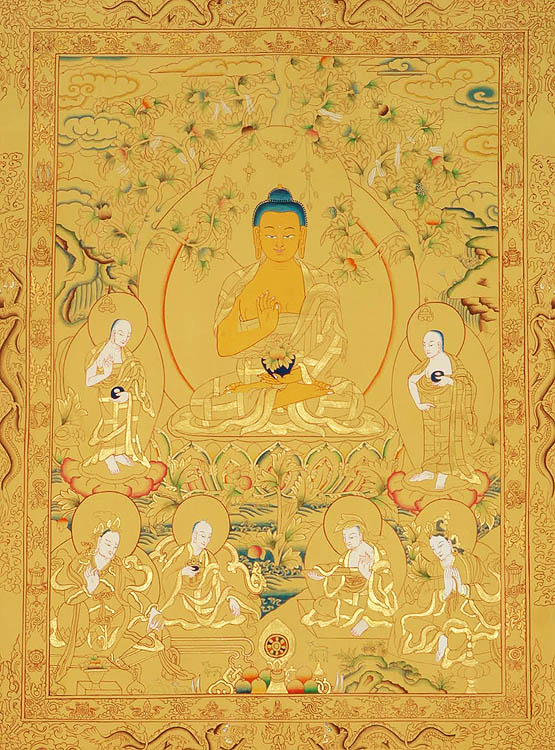 |
 |

III. Citta மனம் அதனுடைய அகநிலையை கூர்ந்து கவனித்தல்
மற்றும்
இப்போது எவ்வாறு பிக்குக்களுக்களே, ஒரு பிக்கு, Citta மனம் அதனுடைய
அகநிலையை in Citta மனம் அதனுடைய அகநிலையில் கூர்ந்து கவனித்து வாசம்
செய்கிரார்?
மற்றும் இப்போது எவ்வாறு பிக்குக்களுக்களே, ஒரு பிக்கு,
Citta மனம் அதனுடைய அகநிலை rāga ஆர்வ வேட்கையை ” Citta மனம் அதனுடைய
அகநிலை rāga ஆர்வ வேட்கையாக” என புரிந்துகொள்கிரார்,அல்லது Citta மனம்
அதனுடைய அகநிலை rāga ஆர்வ வேட்கையற்றதை, “Citta மனம் அதனுடைய அகநிலை rāga
ஆர்வ வேட்கையற்றது” என புரிந்துகொள்கிரார்,அல்லது
Citta மனம் அதனுடைய அகநிலை “dosa வெறுப்பு ஆர்வ வேட்கையை Citta மனம்
அதனுடைய அகநிலை dosa வெறுப்பு ஆர்வ வேட்கையாக” என
புரிந்துகொள்கிரார்,”Citta மனம் அதனுடைய அகநிலை dosa வெறுப்பு ஆர்வ
வேட்கையற்றதை, Citta மனம் அதனுடைய அகநிலை dosa வெறுப்பு ஆர்வ வேட்கையற்றது”
என புரிந்துகொள்கிரார், அல்லது Citta மனம் அதனுடைய அகநிலை moha மருட்சி
ஆர்வ வேட்கையை “Citta மனம் அதனுடைய அகநிலை moha மருட்சி ஆர்வ வேட்கை” என
புரிந்துகொள்கிரார்,”Citta மனம் அதனுடைய அகநிலை moha மருட்சி ஆர்வ
வேட்கையற்றதை, Citta மனம் அதனுடைய அகநிலை moha மருட்சி ஆர்வ வேட்கையற்றது”
என புரிந்துகொள்கிரார், அல்லது ஒரு சேர்த்த Citta மனம் அதனுடைய அகநிலை
“ஒரு சேர்த்த Citta மனம் அதனுடைய அகநிலை” என புரிந்துகொள்கிரார், ஒரு
சிதறலான
Citta மனம் அதனுடைய அகநிலை “ஒரு சிதறலான Citta மனம் அதனுடைய
அகநிலை” என புரிந்துகொள்கிரார்,அல்லது ஒரு விரிவாக்கம் செய்த Citta மனம்
அதனுடைய அகநிலை “ஒரு விரிவாக்கம் செய்த Citta மனம் அதனுடைய அகநிலை” என
புரிந்துகொள்கிரார், ஒரு விரிவாக்கம் செய்யாத Citta மனம் அதனுடைய அகநிலை
“ஒரு விரிவாக்கம் செய்யாத Citta மனம் அதனுடைய அகநிலை” என
புரிந்துகொள்கிரார்,அல்லது ஒரு மிக மேற்பட்ட Citta மனம் அதனுடைய அகநிலை
“ஒரு மிக மேற்பட்ட Citta மனம் அதனுடைய அகநிலை” என புரிந்துகொள்கிரார்,
ஒரு மிக மேற்படாத Citta மனம் அதனுடைய அகநிலை “ஒரு மிக மேற்படாத Citta
மனம் அதனுடைய அகநிலை” என புரிந்துகொள்கிரார்,அல்லது ஒரு திண்மையான Citta
மனம் அதனுடைய அகநிலை “ஒரு திண்மையான Citta மனம் அதனுடைய அகநிலை” என
புரிந்துகொள்கிரார், ஒரு திண்மையற்ற Citta மனம் அதனுடைய அகநிலை “ஒரு
திண்மையற்ற Citta மனம் அதனுடைய அகநிலை” என புரிந்துகொள்கிரார்,அல்லது ஒரு
விடுதலை செய்த Citta மனம் அதனுடைய அகநிலை “ஒரு விடுதலை செய்த Citta மனம்
அதனுடைய அகநிலை” என புரிந்துகொள்கிரார், ஒரு விடுதலை செய்யாத Citta மனம்
அதனுடைய அகநிலை “ஒரு விடுதலை செய்யாத Citta மனம் அதனுடைய அகநிலை” என
புரிந்துகொள்கிரார்.
இவ்வாறு அவர் Citta மனம் அதனுடைய அகநிலையை in Citta மனம் அதனுடைய
அகநிலையில் கூர்ந்து கவனித்து வாசம் செய்கிரார், அல்லது அதனுடைய அகநிலையை
in Citta மனம் அதனுடைய அகநிலையில் வெளியே கூர்ந்த கவனித்து வாசம்
செய்கிரார்;samudaya of phenomena புலன்களால் உணரத்தக்க தோற்றம் அதனுடைய
அகநிலையில் கூர்ந்து கவனித்து வாசம் செய்கிரார், புலன்களால் உணரத்தக்க
கழிதல் அதனுடைய அகநிலையில் கூர்ந்து கவனித்து வாசம் செய்கிரார், samudaya
and passing away of phenomena புலன்களால் உணரத்தக்க தோற்றம் மற்றும்
கழிதல் அதனுடைய அகநிலையில் கூர்ந்து கவனித்து வாசம் செய்கிரார்,
இல்லாவிடில் “இது citta அகநிலை” என உணர்ந்து, sati விழிப்பு நிலை
அவருக்குள் வந்திருக்கிறது, சும்மா வெறும் ñāṇa ஓர்அளவு ஞானம் மற்றும்
ஓர்அளவு paṭissati என எண்ணி பற்றறு வாசம் செய்கிரார். மற்றும் உலகத்தில்
சிறிதளவாவது பற்றிக்கொள்ளாது,அவ்வாறாக பிக்குக்களுக்களே, ஒரு பிக்கு, Citta
மனம் அதனுடைய அகநிலையை in Citta மனம் அதனுடைய அகநிலையில் கூர்ந்து
கவனித்து வாசம் செய்கிரார்.
III. Cittānupassanā
Kathaṃ ca pana, bhikkhave, bhikkhu citte cittānupassī viharati?
Idha, bhikkhave, bhikkhu sa·rāgaṃ vā cittaṃ ‘sa·rāgaṃ cittaṃ’ ti
pajānāti, vīta·rāgaṃ vā cittaṃ ‘vīta·rāgaṃ cittaṃ’ ti pajānāti, sa·dosaṃ
vā cittaṃ ‘sa·dosaṃ cittaṃ’ ti pajānāti, vīta·dosaṃ vā cittaṃ
‘vīta·dosaṃ cittaṃ’ ti pajānāti, sa·mohaṃ vā cittaṃ ‘sa·mohaṃ cittaṃ’ ti
pajānāti, vīta·mohaṃ vā cittaṃ ‘vīta·mohaṃ cittaṃ’ ti pajānāti,
saṅkhittaṃ vā cittaṃ ‘saṅkhittaṃ cittaṃ’ ti pajānāti, vikkhittaṃ vā
cittaṃ ‘vikkhittaṃ cittaṃ’ ti pajānāti, mahaggataṃ vā cittaṃ ‘mahaggataṃ
cittaṃ’ ti pajānāti, a·mahaggataṃ vā cittaṃ ‘a·mahaggataṃ cittaṃ’ ti
pajānāti, sa·uttaraṃ vā cittaṃ ‘sa·uttaraṃ cittaṃ’ ti pajānāti,
an·uttaraṃ vā cittaṃ ‘an·uttaraṃ cittaṃ’ ti pajānāti, samāhitaṃ vā
cittaṃ ‘samāhitaṃ cittaṃ’ ti pajānāti, a·samāhitaṃ vā cittaṃ
‘a·samāhitaṃ cittaṃ’ ti pajānāti, vimuttaṃ vā cittaṃ ‘vimuttaṃ cittaṃ’
ti
pajānāti, a·vimuttaṃ vā cittaṃ ‘a·vimuttaṃ cittaṃ’ ti pajānāti.
Iti ajjhattaṃ vā citte cittānupassī viharati, bahiddhā vā citte
cittānupassī viharati, ajjhatta-bahiddhā vā citte cittānupassī viharati;
samudaya-dhamm·ānupassī vā cittasmiṃ viharati, vaya-dhamm·ānupassī vā
cittasmiṃ viharati, samudaya-vaya-dhamm·ānupassī vā cittasmiṃ viharati;
‘atthi cittaṃ’ ti vā pan·assa sati paccupaṭṭhitā hoti, yāvadeva
ñāṇa·mattāya paṭissati·mattāya, a·nissito ca viharati, na ca kiñci loke
upādiyati. Evam·pi kho, bhikkhave, bhikkhu citte cittānupassī viharati.
III. Observation of Citta
III. Observation of Citta
And furthermore, bhikkhus, how does a bhikkhu dwell observing citta in citta?
Here, bhikkhus, a bhikkhu understands citta with rāga as “citta with rāga”, or he understands citta without rāga as “citta without rāga”, or he understands citta with dosa as “citta with dosa”, or he understands citta without dosa as “citta without dosa”, or he understands citta with moha as “citta with moha”, or he understands citta without moha as “citta without moha”, or he understands a collected citta as “a collected citta”, or he understands a scattered citta as “a scattered citta”, or he understands an expanded citta as “an expanded citta”, or he understands an unexpanded citta as “an unexpanded citta”, or he understands a surpassable citta as “a surpassable citta”, or he understands an unsurpassable citta as “an unsurpassable citta”, or he understands a concentrated citta as “a concentrated citta”, or he understands an unconcentrated citta as “an unconcentrated citta”, or he understands a liberated citta as “a liberated citta”, or he understands an unliberated citta as “an unliberated citta”.
Thus he dwells observing citta in citta internally, or he dwells observing citta in citta externally, or he dwells observing citta in citta internally and externally; he dwells observing the samudaya of phenomena in citta, or he dwells observing the passing away of phenomena in citta, or he dwells observing the samudaya and passing away of phenomena in citta; or else, [realizing:] “this is citta!” sati is present in him, just to the extent of mere ñāṇa and mere paṭissati, he dwells detached, and does not cling to anything in the world. Thus, bhikkhus, a bhikkhu dwells observing citta in citta.
IV. Observation of Dhammas
A. Section on the Nīvaraṇas
IV. சட்டத்துக்கு அடிப்படையான அற முறைகளின் கூர்ந்த கவனிப்பு
A. நிவாரணங்கள் மீதான பகுதி
மற்றும்
அதற்கு அப்பால், எவ்வாறு பிக்குக்களுக்களே, ஒரு பிக்கு, dhammas in
dhammas சட்டத்துக்கு அடிப்படையான அற முறைகளில் சட்டத்துக்கு அடிப்படையான
அற முறைகளூடன் கூர்ந்த கவனிப்புடன் வாசம் செய்கிரார்?
இங்கு, பிக்குக்களுக்களே, ஒரு பிக்கு, அங்கே kāmacchanda புலனுணர்வு
சிற்றின்ப ஆசை அதற்குள் உடனிருப்பதால், “எனக்குள் புலனுணர்வு சிற்றின்ப ஆசை
கிடக்கிறது என அவர் புரிந்து கொள்கிரார்,புலனுணர்வு சிற்றின்ப ஆசை
அதற்குள் உடனில்லையெனில், “எனக்குள் புலனுணர்வு சிற்றின்ப ஆசை கிடையாது என
அவர் புரிந்து கொள்கிரார்;எவ்வாறு புலனுணர்வு சிற்றின்ப ஆசை எழும்பாத
புலனுணர்வு சிற்றின்ப ஆசை எழும்பியது என அவர் புரிந்து கொள்கிரார்;
எவ்வாறு எழும்பிய புலனுணர்வு சிற்றின்ப ஆசை கைவிடப்பட்டது என அவர் புரிந்து
கொள்கிரார்; எவ்வாறு கைவிடப்பட்ட புலனுணர்வு சிற்றின்ப ஆசை எதிர்காலத்தில்
அணுகாது என அவர் புரிந்து கொள்கிரார்.
இங்கு, பிக்குக்களுக்களே, ஒரு பிக்கு, அங்கே byāpāda பிணங்கு/வைராக்கியம்
உடனிருப்பதால், “எனக்குள் பிணங்கு/வைராக்கியம் கிடக்கிறது என அவர் புரிந்து
கொள்கிரார்,பிணங்கு/வைராக்கியம் உடனில்லையெனில், “எனக்குள்
பிணங்கு/வைராக்கியம் கிடையாது என அவர் புரிந்து கொள்கிரார்; எவ்வாறு
பிணங்கு/வைராக்கியம் எழும்பாத புலனுணர்வு பிணங்கு/வைராக்கியம் என அவர்
புரிந்து கொள்கிரார்; எவ்வாறு எழும்பிய பிணங்கு/வைராக்கியம் கைவிடப்பட்டது
என அவர் புரிந்து கொள்கிரார்; எவ்வாறு கைவிடப்பட்ட பிணங்கு/வைராக்கியம்
எதிர்காலத்தில் அணுகாது என அவர் புரிந்து கொள்கிரார்.
இங்கு, பிக்குக்களுக்களே, ஒரு பிக்கு, அங்கே thīnamiddhā மந்தம் மற்றும்
அசதி உடனிருப்பதால், “எனக்குள் மந்தம் மற்றும் அசதி கிடக்கிறது என அவர்
புரிந்து கொள்கிரார்,மந்தம் மற்றும் அசதி அதற்குள் உடனில்லையெனில்,
“எனக்குள் மந்தம் மற்றும் அசதி கிடையாது என அவர் புரிந்து
கொள்கிரார்;எவ்வாறு மந்தம் மற்றும் அசதி எழும்பாத மந்தம் மற்றும் அசதி
எழும்பியது என அவர் புரிந்து கொள்கிரார்; எவ்வாறு எழும்பிய மந்தம் மற்றும்
அசதி கைவிடப்பட்டது என அவர் புரிந்து கொள்கிரார்; எவ்வாறு கைவிடப்பட்ட
மந்தம் மற்றும் அசதி எதிர்காலத்தில் அணுகாது என அவர் புரிந்து கொள்கிரார்.
இங்கு, பிக்குக்களுக்களே, ஒரு பிக்கு, அங்கே uddhacca-kukkucca மனதிற்குரிய
கிளர்ச்சி/பரபரப்பு மற்றும் கவலை உடனிருப்பதால், “எனக்குள் மனதிற்குரிய
கிளர்ச்சி/பரபரப்பு மற்றும் கவலை கிடக்கிறது என அவர் புரிந்து கொள்கிரார்,
மனதிற்குரிய கிளர்ச்சி/பரபரப்பு மற்றும் கவலை அதற்குள் உடனில்லையெனில்,
“எனக்குள் மனதிற்குரிய கிளர்ச்சி/பரபரப்பு மற்றும் கவலை கிடையாது என அவர்
புரிந்து கொள்கிரார்; எவ்வாறு மனதிற்குரிய கிளர்ச்சி/பரபரப்பு மற்றும்
கவலை எழும்பாத மனதிற்குரிய கிளர்ச்சி/பரபரப்பு மற்றும் கவலை எழும்பியது
என அவர் புரிந்து கொள்கிரார்; எவ்வாறு எழும்பிய மனதிற்குரிய
கிளர்ச்சி/பரபரப்பு மற்றும் கவலை கைவிடப்பட்டது என அவர் புரிந்து
கொள்கிரார்; எவ்வாறு கைவிடப்பட்ட மனதிற்குரிய கிளர்ச்சி/பரபரப்பு மற்றும்
கவலை எதிர்காலத்தில் அணுகாது என அவர் புரிந்து கொள்கிரார்.
இங்கு, பிக்குக்களுக்களே, ஒரு பிக்கு, அங்கே vicikicchā சந்தேகம்,
உறுதியின்மை உடனிருப்பதால், “எனக்குள் சந்தேகம், உறுதியின்மை கிடக்கிறது
என அவர் புரிந்து கொள்கிரார், சந்தேகம், உறுதியின்மை அதற்குள்
உடனில்லையெனில், “எனக்குள் சந்தேகம், உறுதியின்மை கிடையாது என அவர்
புரிந்து கொள்கிரார்; எவ்வாறு சந்தேகம், உறுதியின்மை எழும்பாத சந்தேகம்,
உறுதியின்மை எழும்பியது என அவர் புரிந்து கொள்கிரார்; எவ்வாறு எழும்பிய
சந்தேகம், உறுதியின்மை கைவிடப்பட்டது என அவர் புரிந்து கொள்கிரார்;
எவ்வாறு கைவிடப்பட்ட சந்தேகம், உறுதியின்மை எதிர்காலத்தில் அணுகாது என
அவர் புரிந்து கொள்கிரார்.
இவ்வாறு அவர் dhammas சட்டத்துக்கு அடிப்படையான அற முறைகளில் சட்டத்துக்கு அடிப்படையான அற முறைகளூடன்
கூர்ந்து
கவனித்து வாசம் செய்கிரார், அல்லது சட்டத்துக்கு அடிப்படையான அற
முறைகளில் சட்டத்துக்கு அடிப்படையான அற முறைகளூடன் வெளியே கூர்ந்த
கவனித்து வாசம் செய்கிரார்;samudaya of phenomena புலன்களால் உணரத்தக்க
தோற்றம் அதனுடைய அகநிலையில் கூர்ந்து கவனித்து வாசம் செய்கிரார்,
புலன்களால் உணரத்தக்க கழிதல் அதனுடைய அகநிலையில் கூர்ந்து கவனித்து வாசம்
செய்கிரார், samudaya and passing away of phenomena புலன்களால் உணரத்தக்க
தோற்றம் மற்றும் கழிதல் அதனுடைய அகநிலையில் கூர்ந்து கவனித்து வாசம்
செய்கிரார், இல்லாவிடில் “இது dhammas சட்டத்துக்கு அடிப்படையான அற
முறைகளில் சட்டத்துக்கு அடிப்படையான அற முறைகளூடன் ” என உணர்ந்து, sati
விழிப்பு நிலை அவருக்குள் வந்திருக்கிறது, சும்மா வெறும் ñāṇa ஓர்அளவு
ஞானம் மற்றும் ஓர்அளவு paṭissati என எண்ணி பற்றறு வாசம் செய்கிரார்.
மற்றும் உலகத்தில் சிறிதளவாவது பற்றிக்கொள்ளாது,அவ்வாறாக பிக்குக்களுக்களே,
ஒரு பிக்கு, dhammas சட்டத்துக்கு அடிப்படையான அற முறைகளில் சட்டத்துக்கு
அடிப்படையான அற முறைகளூடன் dhammas சட்டத்துக்கு அடிப்படையான அற முறைகளில்
சட்டத்துக்கு அடிப்படையான அற முறைகளூடன் கூர்ந்து கவனித்து வாசம்
செய்கிரார்.
IV. Dhammānupassanā
A. Nīvaraṇa Pabba
Kathaṃ ca pana,
bhikkhave, bhikkhu dhammesu dhammānupassī viharati? Idha, bhikkhave,
bhikkhu dhammesu dhammānupassī viharati, pañcasu nīvaraṇesu. Kathaṃ ca
pana, bhikkhave, bhikkhu dhammesu dhammānupassī viharati, pañcasu
nīvaraṇesu?
Idha, bhikkhave, bhikkhu santaṃ vā ajjhattaṃ kāmacchandaṃ ‘atthi me
ajjhattaṃ kāmacchando’ ti pajānāti; a·santaṃ vā ajjhattaṃ kāmacchandaṃ
‘n·atthi me ajjhattaṃ kāmacchando’ ti pajānāti; yathā ca an·uppannassa
kāmacchandassa uppādo hoti taṃ ca pajānāti; yathā ca uppannassa
kāmacchandassa pahānaṃ hoti taṃ ca pajānāti; yathā ca pahīnassa
kāmacchandassa āyatiṃ an·uppādo hoti taṃ ca pajānāti.
Idha, bhikkhave, bhikkhu santaṃ vā ajjhattaṃ byāpādaṃ ‘atthi me
ajjhattaṃ byāpādo’ ti pajānāti; a·santaṃ vā ajjhattaṃ byāpādaṃ ‘n·atthi
me ajjhattaṃ byāpādo’ ti pajānāti; yathā ca an·uppannassa byāpādassa
uppādo hoti taṃ ca pajānāti; yathā ca uppannassa byāpādassa pahānaṃ hoti
taṃ ca pajānāti; yathā ca pahīnassa byāpādassa āyatiṃ an·uppādo hoti
taṃ ca pajānāti.
Idha, bhikkhave, bhikkhu santaṃ vā ajjhattaṃ thinamiddhaṃ ‘atthi me
ajjhattaṃ thinamiddhaṃ’ ti pajānāti; a·santaṃ vā ajjhattaṃ thinamiddhaṃ
‘n·atthi me ajjhattaṃ thinamiddhaṃ’ ti pajānāti; yathā ca an·uppannassa
thinamiddhassa uppādo hoti taṃ ca pajānāti; yathā ca uppannassa
thinamiddhassa pahānaṃ hoti taṃ ca pajānāti; yathā ca pahīnassa
thinamiddhassa āyatiṃ an·uppādo hoti taṃ ca pajānāti.
Idha, bhikkhave, bhikkhu santaṃ vā ajjhattaṃ uddhacca-kukkuccaṃ ‘atthi
me ajjhattaṃ uddhacca-kukkuccaṃ’ ti pajānāti; a·santaṃ vā ajjhattaṃ
uddhacca-kukkuccaṃ ‘n·atthi me ajjhattaṃ uddhacca-kukkuccaṃ’ ti
pajānāti; yathā ca an·uppannassa uddhacca-kukkuccassa uppādo hoti taṃ ca
pajānāti; yathā ca uppannassa uddhacca-kukkuccassa pahānaṃ hoti taṃ ca
pajānāti; yathā ca pahīnassa uddhacca-kukkuccassa āyatiṃ an·uppādo hoti
taṃ ca pajānāti.
Idha, bhikkhave, bhikkhu santaṃ vā ajjhattaṃ vicikicchaṃ ‘atthi me
ajjhattaṃ vicikicchā’ ti pajānāti; a·santaṃ vā ajjhattaṃ vicikicchaṃ
‘n·atthi me ajjhattaṃ vicikicchā’ ti pajānāti; yathā ca an·uppannāya
vicikicchāya uppādo hoti taṃ ca pajānāti; yathā ca uppannāya
vicikicchāya pahānaṃ hoti taṃ ca pajānāti; yathā ca pahīnāya
vicikicchāya āyatiṃ an·uppādo hoti taṃ ca pajānāti.
Iti ajjhattaṃ vā dhammesu dhammānupassī viharati, bahiddhā vā
dhammesu dhammānupassī viharati, ajjhatta-bahiddhā vā dhammesu
dhammānupassī viharati; samudaya-dhamm·ānupassī vā dhammesu viharati,
vaya-dhamm·ānupassī vā dhammesu viharati, samudaya-vaya-dhamm·ānupassī
vā dhammesu viharati; ‘atthi dhammā’ ti vā pan·assa sati paccupaṭṭhitā
hoti, yāvadeva ñāṇa·mattāya paṭissati·mattāya, a·nissito ca viharati, na
ca kiñci loke upādiyati. Evam·pi kho, bhikkhave, bhikkhu dhammesu
dhammānupassī viharati, pañcasu nīvaraṇesu.
A. Section on the Nīvaraṇas( Obstacle, hindrance)
And furthermore, bhikkhus, how does a bhikkhu dwell observing dhammas in dhammas (and (dhammaṃ)Nature/ condition/ quality/ property/
characteristic; function/ practice/ duty; object/ thing/ idea/
phenomenon; doctrine; law; virtue/ piety; justice; the law or Truth of
the Buddha; the Buddhist scriptures; religion in threshold of and (dhammaṃ)Nature/ condition/ quality/ property/
characteristic; function/ practice/ duty; object/ thing/ idea/
phenomenon; doctrine; law; virtue/ piety; justice; the law or Truth of
the Buddha; the Buddhist scriptures; religion) ? Here, bhikkhus, a bhikkhu dwells observing dhammas in dhammas (and (dhammaṃ)Nature/ condition/ quality/ property/
characteristic; function/ practice/ duty; object/ thing/ idea/
phenomenon; doctrine; law; virtue/ piety; justice; the law or Truth of
the Buddha; the Buddhist scriptures; religion in threshold of and (dhammaṃ)Nature/ condition/ quality/ property/
characteristic; function/ practice/ duty; object/ thing/ idea/
phenomenon; doctrine; law; virtue/ piety; justice; the law or Truth of
the Buddha; the Buddhist scriptures; religion) with reference to the five nīvaraṇas( Obstacle, hindrance). And furthermore, bhikkhus, how does a bhikkhu dwell observing dhammas in dhammas (and (dhammaṃ)Nature/ condition/ quality/ property/
characteristic; function/ practice/ duty; object/ thing/ idea/
phenomenon; doctrine; law; virtue/ piety; justice; the law or Truth of
the Buddha; the Buddhist scriptures; religion in threshold of and (dhammaṃ)Nature/ condition/ quality/ property/
characteristic; function/ practice/ duty; object/ thing/ idea/
phenomenon; doctrine; law; virtue/ piety; justice; the law or Truth of
the Buddha; the Buddhist scriptures; religion) with reference to the five nīvaraṇas( Obstacle, hindrance)?
Here, bhikkhus, a bhikkhu, there being kāmacchanda(Wish for sensual enjoyment) present within, understands: “there is kāmacchanda(Wish for sensual enjoyment) within me”; there not being kāmacchanda(Wish for sensual enjoyment) present within, he understands: “there is no kāmacchanda(Wish for sensual enjoyment) within me”; he understands how the unarisen kāmacchanda(Wish for sensual enjoyment) comes to arise; he understands how the arisen kāmacchanda(Wish for sensual enjoyment) is abandoned; and he understands how the abandoned kāmacchanda(Wish for sensual enjoyment) does not come to arise in the future.
Here, bhikkhus, a bhikkhu, there being byāpāda(Wish to injure, malevolence, hatred, fury) present within, understands: “there is byāpāda(Wish to injure, malevolence, hatred, fury) within me”; there not being byāpāda(Wish to injure, malevolence, hatred, fury) present within, he understands: “there is no byāpāda(Wish to injure, malevolence, hatred, fury) within me”; he understands how the unarisen byāpāda(Wish to injure, malevolence, hatred, fury) comes to arise; he understands how the arisen byāpāda(Wish to injure, malevolence, hatred, fury) is abandoned; and he understands how the abandoned byāpāda(Wish to injure, malevolence, hatred, fury) does not come to arise in the future.
Here, bhikkhus, a bhikkhu, there being thīnamiddhā(Idleness, sloth, dullness) present within, understands: “there is thīnamiddhā(Idleness, sloth, dullness) within me”; there not being thīnamiddhā(Idleness, sloth, dullness) present within, he understands: “there is no thīnamiddhā(Idleness, sloth, dullness) within me”; he understands how the unarisen thīnamiddhā(Idleness, sloth, dullness) comes to arise; he understands how the arisen thīnamiddhā(Idleness, sloth, dullness) is abandoned; and he understands how the abandoned thīnamiddhā(Idleness, sloth, dullness) does not come to arise in the future.
Here, bhikkhus, a bhikkhu, there being uddhacca-kukkucca(Being puffed up, vanity, pride) present within, understands: “there is uddhacca-kukkucca(Being puffed up, vanity, pride) within me”; there not being uddhacca-kukkucca(Being puffed up, vanity, pride) present within, he understands: “there is no uddhacca-kukkucca(Being puffed up, vanity, pride) within me”; he understands how the unarisen uddhacca-kukkucca(Being puffed up, vanity, pride) comes to arise; he understands how the arisen uddhacca-kukkucca(Being puffed up, vanity, pride) is abandoned; and he understands how the abandoned uddhacca-kukkucca(Being puffed up, vanity, pride) does not come to arise in the future.
Here, bhikkhus, a bhikkhu, there being vicikicchā(Doubt, uncertainty) present within, understands: “there is vicikicchā(Doubt, uncertainty) within me”; there not being vicikicchā(Doubt, uncertainty) present within, he understands: “there is no vicikicchā(Doubt, uncertainty) within me”; he understands how the unarisen vicikicchā(Doubt, uncertainty) comes to arise; he understands how the arisen vicikicchā(Doubt, uncertainty) is abandoned; and he understands how the abandoned vicikicchā(Doubt, uncertainty) does not come to arise in the future.
Thus he dwells observing dhammas in dhammas(Name of the first book of the Abhidhamma piṭaka in threshold of Name of the first book of the Abhidhamma piṭaka and (dhammaṃ)Nature/ condition/ quality/ property/
characteristic; function/ practice/ duty; object/ thing/ idea/
phenomenon; doctrine; law; virtue/ piety; justice; the law or Truth of
the Buddha; the Buddhist scriptures; religion in threshold of and (dhammaṃ)Nature/ condition/ quality/ property/
characteristic; function/ practice/ duty; object/ thing/ idea/
phenomenon; doctrine; law; virtue/ piety; justice; the law or Truth of
the Buddha; the Buddhist scriptures; religion) ) internally, or he dwells observing dhammas in dhammas(Name of the first book of the Abhidhamma piṭaka in threshold of Name of the first book of the Abhidhamma piṭaka and (dhammaṃ)Nature/ condition/ quality/ property/
characteristic; function/ practice/ duty; object/ thing/ idea/
phenomenon; doctrine; law; virtue/ piety; justice; the law or Truth of
the Buddha; the Buddhist scriptures; religion in threshold of and (dhammaṃ)Nature/ condition/ quality/ property/
characteristic; function/ practice/ duty; object/ thing/ idea/
phenomenon; doctrine; law; virtue/ piety; justice; the law or Truth of
the Buddha; the Buddhist scriptures; religion) ) externally, or he dwells observing dhammas in dhammas(Name of the first book of the Abhidhamma piṭaka in threshold of Name of the first book of the Abhidhamma piṭaka and (dhammaṃ)Nature/ condition/ quality/ property/
characteristic; function/ practice/ duty; object/ thing/ idea/
phenomenon; doctrine; law; virtue/ piety; justice; the law or Truth of
the Buddha; the Buddhist scriptures; religion in threshold of and (dhammaṃ)Nature/ condition/ quality/ property/
characteristic; function/ practice/ duty; object/ thing/ idea/
phenomenon; doctrine; law; virtue/ piety; justice; the law or Truth of
the Buddha; the Buddhist scriptures; religion) ) internally and externally; he dwells observing the samudaya(Rise, origin, commencement; origination, cause; multitude) of phenomena(sapindus detergens) in dhammas(Name of the first book of the Abhidhamma piṭaka and (dhammaṃ)Nature/ condition/ quality/ property/
characteristic; function/ practice/ duty; object/ thing/ idea/
phenomenon; doctrine; law; virtue/ piety; justice; the law or Truth of
the Buddha; the Buddhist scriptures; religion), or he dwells observing the passing away of phenomena in dhammas, or he dwells observing the samudaya and passing away of phenomena in dhammas(Name of the first book of the Abhidhamma piṭaka and (dhammaṃ)Nature/ condition/ quality/ property/
characteristic; function/ practice/ duty; object/ thing/ idea/
phenomenon; doctrine; law; virtue/ piety; justice; the law or Truth of
the Buddha; the Buddhist scriptures; religion); or else, [realizing:] “these are dhammas(Name of the first book of the Abhidhamma piṭaka and (dhammaṃ)Nature/ condition/ quality/ property/
characteristic; function/ practice/ duty; object/ thing/ idea/
phenomenon; doctrine; law; virtue/ piety; justice; the law or Truth of
the Buddha; the Buddhist scriptures; religion)!” sati( Recollection; active state of mind, fixing the mind
strongly upon any subject, attention, attentiveness, thought,
reflection, consciousness) i is present in him, just to the extent of mere ñāṇa(Knowledge) and mere paṭissati(Assent, promise), he dwells detached, and does not cling to anything in the world. Thus, bhikkhus, a bhikkhu dwells observing dhammas in dhammas(Name of the first book of the Abhidhamma piṭaka and (dhammaṃ)Nature/ condition/ quality/ property/
characteristic; function/ practice/ duty; object/ thing/ idea/
phenomenon; doctrine; law; virtue/ piety; justice; the law or Truth of
the Buddha; the Buddhist scriptures; religion in threshold of Name of the first book of the Abhidhamma piṭaka and (dhammaṃ)Nature/ condition/ quality/ property/
characteristic; function/ practice/ duty; object/ thing/ idea/
phenomenon; doctrine; law; virtue/ piety; justice; the law or Truth of
the Buddha; the Buddhist scriptures; religion), with reference to the five nīvaraṇas( Obstacle, hindrance).

Please visit this site:
http://pilgrimage.asiasociety.org/?gclid=CIK03eqrr7QCFU576wodyHMA5Q
for
Pilgrimage, a journey to a sacred place as an act of
religious devotion, is important to many faiths. In Buddhism, the
practice is especially significant. Pilgrimage and Buddhist Art is the
first major exhibition to explore the relationship between Buddhist
pilgrimage and Asian art. Read More »
The Buddha & The Sacred Site

The historical Buddha, often called Shakyamuni (“Sage of the Shakyas”)
in later times, was born into an elite family of the Shakya clan…Read More.
The Journey

The earliest Buddhist sources make it clear that pilgrimage is both a
journey within and without, one that involves both the mind…Read More.
Memory, Memento, and Sacred Bond

Mementos are an integral part of the Buddhist pilgrimage experience. Pilgrims purchase souvenirs, such as votive plaques…Read More.
http://www.mahidol.ac.th/budsir/buddhism.htm
for

 |
We pay homage to the Buddha for
revealing to us the eternal truths of liberation
We pay homage to the Dhamma (the teaching of the Buddha) for making
known to us the nature of existence.
We pay homage to the Sangha (the order of monks) for preserving the
teaching and practicing its precepts.
|
http://www.blia.org/english/publications/booklet/pages/39.htm
for

 |
BUDDHISM
AND PSYCHOLOGY
佛教與心理學
Psychology is a science that investigates the mental activities of human life.
In the West, it originated from medical science, philosophy, natural science,
religion, education and sociology, and extends into a myriad of other
disciplines and practices. In today’s society, psychology is applied to
education, industry, business, health care, national defense, law, politics,
sociology, science, arts and even sports. Its importance increases as time goes
on.
|
|
III. Observation of Citta
And furthermore, bhikkhus, how does a bhikkhu dwell observing citta in citta?
|
 |
|
|
|
12/21/12
Filed under:
General
Posted by:
site admin @ 7:14 pm

221212 FRIDAY LESSON 788 -
from FREE ONLINE eNālāndā Research and
Practice UNIVERSITY through http://sarvajan.ambedkar.org


II. வேதனையை கூர்ந்த கவனித்தல்
மற்றும் இப்போது எவ்வாறு பிக்குக்களுக்களே, ஒரு பிக்கு, vedanā in vedanā வேதனையை வேதனையில் கூர்ந்து கவனித்து வாசம் செய்கிரார்?
இங்கு,
பிக்குக்களுக்களே, ஒரு பிக்கு, ஒரு sukha vedanā சுக வேதனையை
அனுபவிக்கும்போது, நான் ஒரு சுக வேதனையை அனுபவிக்றேன் என
புரிந்துகொள்கிரார்: ஒரு dukkha vedanā துக்க வேதனையை அனுபவிக்கும்போது,
நான் ஒரு துக்க வேதனையை அனுபவிக்றேன் என புரிந்துகொள்கிரார்: ஒரு
adukkham-asukhā vedanā அதுக்க-அசுக (துக்க-சுகமற்ற) வேதனையை
அனுபவிக்கும்போது, நான் ஒரு adukkham-asukhā vedanā அதுக்க-அசுக
(துக்க-சுகமற்ற) வேதனையை அனுபவிக்றேன் என புரிந்துகொள்கிரார்:ஒரு sukhā
vedanā sāmisa சுக வேதனையை உணவை மனப்பற்றுடன் அனுபவிக்கும்போது, நான் ஒரு
sukhā vedanā sāmisa சுக வேதனையை உணவை மனப்பற்றுடன் அனுபவிக்றேன் என
புரிந்துகொள்கிரார்:ஒரு sukhā vedanā nirāmisa சுக வேதனையை உணவை
மனப்பற்றறுடன் அனுபவிக்கும்போது, நான் ஒரு sukhā vedanā nirāmisa சுக
வேதனையை உணவை மனப்பற்றறுடன் அனுபவிக்றேன் என புரிந்துகொள்கிரார்:ஒரு dukkha
vedanā sāmisa துக்க வேதனையை உணவை மனப்பற்றுடன் அனுபவிக்கும்போது, நான்
ஒரு dukkha vedanā sāmisa துக்க வேதனையை உணவை மனப்பற்றுடன் அனுபவிக்றேன்
என புரிந்துகொள்கிரார்:ஒரு dukkha vedanā nirāmisa துக்க வேதனையை உணவை
மனப்பற்றறுடன் அனுபவிக்கும்போது, நான் ஒரு dukkha vedanā nirāmisa துக்க
வேதனையை உணவை மனப்பற்றறுடன் அனுபவிக்றேன் என புரிந்துகொள்கிரார்:ஒரு
adukkham-asukhā vedanā sāmisa அதுக்க-அசுக (துக்க-சுகமற்ற) வேதனையை உணவை
மனப்பற்றுடன் அனுபவிக்கும்போது, நான் ஒரு adukkham-asukhā vedanā sāmisa
அதுக்க-அசுக (துக்க-சுகமற்ற) வேதனையை உணவை மனப்பற்றுடன் அனுபவிக்றேன் என
புரிந்துகொள்கிரார்:ஒரு adukkham-asukhā vedanā nirāmisa அதுக்க-அசுக
(துக்க-சுகமற்ற) வேதனையை உணவை மனப்பற்றறுடன் அனுபவிக்கும்போது, நான் ஒரு
adukkham-asukhā vedanā nirāmisa அதுக்க-அசுக (துக்க-சுகமற்ற) வேதனையை
உணவை மனப்பற்றறுடன் அனுபவிக்றேன் என புரிந்துகொள்கிரார்:
இவ்வாறு
அவர் vedanā in vedanā வேதனையை வேதனையில் கூர்ந்த கவனித்து வாசம்
செய்கிரார், அல்லது வேதனையை வேதனைக்கு வெளியே கூர்ந்த கவனித்து வாசம்
செய்கிரார், அல்லது வேதனையை வேதனைக்கு உள்ளே மற்றும் வெளியே கண்காணி வாசம்
செய்கிரார்;புலன்களால் உணரத்தக்க எழுச்சி கண்காணி வாசம் செய்கிரார்,
மற்றும் புலன்களால் உணரத்தக்கதை கடந்துசெல்லுவதை கண்காணித்து வாசம்
செய்கிரார்; இல்லாவிடில் எச்சரிக்கையாயிருக்கிற உணர் உடனிருக்கிறதை,சும்மா
வெறும் ஓர்அளவு ஞானம் மற்றும் ஓர்அளவு paṭissati என எண்ணி பற்றறு வாசம்
செய்கிரார்.
II. வேதனானுபஸ்ஸனா
கதம் ச பன, பிக்காவெ, பிக்கு வேதனாஸு வேதனானுபஸ்ஸனா விஹாரதி ?
இத, பிக்காவெ, பிக்கு ஸுகங் வா வேதனங் வேதனயமானொ ‘ஸுகங் வா வேதனங் வேதனயாமி’தி பஜானாதி; துக்கங் வா வேதனங் வேதனயமானொ ‘துக்கங் வேதனங் வேதயாமி’தி பஜானாதி;அ.துக்கங் அ.ஸுகங் வா வேதனங் வேதனயமானொ அ.துக்கங் அ.ஸுகங் வேதனங் வேதயாமி’தி பஜானாதி. ஸாமிசங் வா ஸுகங் வேதனங் வேதனயமானொ‘ஸாமிசங் ஸுகங் வேதனங் வேதனயாமி’தி பஜானாதி; நிராமிஸங் வா ஸுகங் வேதனங் வேதனயமானொ ‘நிராமிஸங் வா ஸுகங் வேதனங் வேதனயாமி’தி பஜானாதி; ஸாமிசங் வா அ.துக்கங் அ.ஸுகங் வேதனங் வேதனயமானொ ‘ஸாமிசங் அ.துக்கங் அ.ஸுகங் வேதனங் வேதனயாமி’தி பஜானாதி; நிராமிஸங் வா அ.துக்கங் அ.ஸுகங் வேதனங் வேதனயமானொ ‘நிராமிஸங் அ.துக்கங் அ.ஸுகங் வேதனங் வேதனயாமி’தி பஜானாதி.
II. Observation of Vedanā (Feeling/ sensation/ perception; pain/suffering)
And furthermore, bhikkhus, how does a bhikkhu dwell observing vedanā in vedanā (Feeling/ sensation/ perception; pain/suffering in threshold of Feeling/ sensation/ perception; pain/suffering)?
Here, bhikkhus, a bhikkhu, experiencing a sukha vedanā(Having a feeling of ease or serenity Feeling, sensation, perception; pain, suffering), undersands: “I am experiencing a sukha vedanā(Having a feeling of ease or serenity Feeling, sensation, perception; pain, suffering),”; experiencing a dukkha vedanā(Cessation of suffering, nibbāṇa(ultimate goal for Eternal Bliss Feeling, sensation, perception; pain, suffering)), undersands: “I am experiencing a dukkha vedanā(Cessation of suffering, nibbāṇa(ultimate goal for Eternal Bliss Feeling, sensation, perception; pain, suffering))“; experiencing an adukkham-asukhā vedanā(ndifference, indifference to pain or pleasure, neither pleasant nor painful Feeling, sensation, perception; pain, suffering), undersands: “I am experiencing a adukkham-asukhā vedanā(ndifference, indifference to pain or pleasure, neither pleasant nor painful Feeling, sensation, perception; pain, suffering)”; experiencing a sukha vedanā sāmisa(Having a feeling of ease or serenity Feeling, sensation, perception; pain, suffering Having food), undersands: “I am experiencing a sukha vedanā sāmisa((Having a feeling of ease or serenity Feeling, sensation, perception; pain, suffering Having food)“; experiencing a sukha vedanā nirāmisa(Having a feeling of ease or serenity Feeling, sensation, perception; pain, suffering Free from worldly taint, disinterested, pureof doctrine), undersands: “I am experiencing a sukha vedanā nirāmisa(Having
a feeling of ease or serenity Feeling, sensation, perception; pain,
suffering Free from worldly taint, disinterested, pureof doctrine)“; experiencing a dukkha vedanā sāmisa(Cessation of suffering, nibbāṇa(Ultimate Goal for Eternal Bliss) Feeling, sensation, perception; pain, suffering Having food), undersands: “I am experiencing a dukkha vedanā sāmisa(Cessation of suffering, nibbāṇa(Ultimate Goal for Eternal Bliss) Feeling, sensation, perception; pain, suffering Having food)“; experiencing a dukkha vedanā nirāmisa(Cessation of suffering, nibbāṇa(Ultimate Goal for Eternal Bliss) Feeling, sensation, perception; pain, suffering Free from worldly taint, disinterested, pureof doctrine)), undersands: “I am experiencing a dukkha vedanā nirāmisa(Cessation
of suffering, nibbāṇa(Ultimate Goal for Eternal Bliss) Feeling,
sensation, perception; pain, suffering Free from worldly taint,
disinterested, pureof doctrine))”; experiencing an adukkham-asukhā vedanā sāmisa(Indifference,
indifference to pain or pleasure, neither pleasant nor painful Feeling,
sensation, perception; pain, suffering Having food), undersands: “I am experiencing a adukkham-asukhā vedanā sāmisa(Indifference, indifference to pain or pleasure, neither pleasant nor painful Feeling, sensation, perception; pain, suffering Having food)”; experiencing an adukkham-asukhā vedanā nirāmisa(Indifference, indifference to pain or pleasure, neither pleasant nor painful Feeling, sensation, perception; pain, suffering Free from worldly taint, disinterested, pureof doctrine), undersands: “I am experiencing a adukkham-asukhā vedanā nirāmisa(Indifference,
indifference to pain or pleasure, neither pleasant nor painful Feeling,
sensation, perception; pain, suffering Free from worldly taint,
disinterested, pureof doctrine)“.
Thus he dwells observing vedanā in vedanā (Feeling/ sensation/ perception; pain/suffering in threshold of Feeling/ sensation/ perception; pain/suffering) internally, or he dwells observing vedanā in vedanā (Feeling/ sensation/ perception; pain/suffering in threshold of Feeling/ sensation/ perception; pain/suffering) externally, or he dwells observing vedanā in vedanā (Feeling/ sensation/ perception; pain/suffering in threshold of Feeling/ sensation/ perception; pain/suffering) internally and externally; he dwells observing the samudaya(Rise, origin, commencement; origination, cause; multitude) of phenomena(sapindus detergens) in vedanā (Feeling/ sensation/ perception; pain/suffering), or he dwells observing the passing away of phenomena(sapindus detergens) in vedanā (Feeling/ sensation/ perception; pain/suffering), or he dwells observing the samudaya and passing away of phenomena(sapindus detergens) in vedanā (Feeling/ sensation/ perception; pain/suffering); or else, [realizing:] “this is vedanā (Feeling/ sensation/ perception; pain/suffering)!” sati( Recollection; active state of mind, fixing the mind
strongly upon any subject, attention, attentiveness, thought,
reflection, consciousness) is present in him, just to the extent of mere ñāṇa(Knowledge) and mere paṭissati(Assent, promise), he dwells detached, and does not cling to anything in the world. Thus, bhikkhus, a bhikkhu dwells observing vedanā in vedanā (Feeling/ sensation/ perception; pain/suffering in threshold of Feeling/ sensation/ perception; pain/suffering).
Filed under:
General
Posted by:
site admin @ 4:56 am

211212 FRIDAY LESSON 787 -
from FREE ONLINE eNālāndā Research and
Practice UNIVERSITY through http://sarvajan.ambedkar.org

206 MPs in Rajya Sabha proved that we too are broad minded like US people who elected Obama as President for the second time. But Lok sabha did not follow suit.Ms Mayawati has proved that she is a Sarvajan leader who is for the welfare, peace and happiness of the entire people and fit to be the next Prime Minister of PraBuddha Bharath. BJP and SP leaders must know that lack of a good decision in favour of SC/ST quota in Lok Sabha has only diminished their image in the public and that they are traditional haters of untouchables.They must understand that the principles of efficiency is for all the people irrespective of castes. Principles of efficiency will be proved if the upper castes supported the untouchables, as Dr.Ambedkar was responsible for drafting the Constitution. And also not to forget that Buddhism is a world classic religion which originated in this country and teaches that all are equal, since he did not believe in any soul, where people still believe in first, second, third fourth rate souls and that the untouchables have no soul, so that they can do any harm they wish to do to them. 2600 years back we were all Buddhists, we are Buddhists and we continue to be Buddhists.
Entire central, state govt, and the PSU account for just 2% of the entire population. The constitution provides 22% reservation for SC/ST and for Backward classes up to total 50%. Hence others must be happy to share the benefits without any grouse. In fact other 98% of the wealth should also be proportionally distributed among all sections of the society. It was so during Buddha’s and later during Ashoka’s period. Our constitution also enshrines the same. Hence, there must be proportional distribution of wealth for the benefit of all sections of society including reservation in promotions, in private sector, bank loan to all others who wish to do trading and business for true social justice. Now it is clear that the traditional haters with anger are still not broad minded.
Mayawati puts Congress on notice, to raise promotion quota bill issue again in Budget Session
BSP chief Mayawati said she always doubted the Centre’s sincerity on the issue.
Stung by the failure of the central government to get the bill on SC/ST quota in promotions passed in the Lok Sabha, BSP chief Mayawati put the Congress on a virtual notice.
Mayawati said she always doubted the Centre’s sincerity on the issue.
“We will write to the PM for a special session. We will give them one or
two more chances. We will raise the issue again in the Budget Session”, BSP chief said.
“The whole country has seen the drama by the government on the issue. We
condemn the Centre and Congress for not getting the bill passed,”
Mayawati said.
She said the government should have made efforts to have SP members
suspended from the House after one of them snatched the bill from Minister of State for Personnel V. Narayanasamy.
F. ஒன்பது இடுகாடு நிலத்தளங்கள் மேலான பிரிவு
மேலும், பிக்குக்களுக்களே, ஒரு பிக்கு, ஒருவேளை அவர் தொலைவான இடத்தில் ஒரு பிரேதம் இடுகாடு நிலத்தளத்தில் எறியப்பட்டு
இருப்பதைப்
பார்த்துக் கொண்டிருஇந்தால், ஒரு நாள் இறந்த, அல்லது இரண்டு நாட்கள்
இறந்த, அல்லது மூன்று நாட்கள் இறந்த, வீங்கிய, சற்றே நீலமான மற்றும்
புரைத்துச் சீக்கொண்ட நிலையில், அவர் இந்த மெய்ம்மூலமான kāya உடல்/காய
ஆழ்ந்து ஆராய: “இந்த kāya உடல்/காய கூட அவ்வகைப்பட்ட ஒரு இயற்கை ஆற்றல்
உடையதாக இருக்கிறது, அதுவும் இப்படி ஆகத்தொடங்கு போக இருக்கிறது, மற்றும்
அத்தகைய ஒரு கட்டுப்பாட்டு வரம்புகளற்ற
நிலைமை இருந்து வேறல்ல.
இவ்வாறு
அவர் kāya in kāya உடல்/காயத்தை காயதுக்குள் கண்காணி வாசம் செய்கிரார்,
அல்லது காயத்தை காயதுக்கு வெளியே கண்காணி வாசம் செய்கிரார், அல்லது காயத்தை
காயதுக்கு உள்ளே மற்றும் வெளியே கண்காணி வாசம் செய்கிரார்;புலன்களால்
உணரத்தக்க எழுச்சி கண்காணி வாசம் செய்கிரார், மற்றும் புலன்களால்
உணரத்தக்கதை கடந்துசெல்லுவதை கண்காணித்து வாசம் செய்கிரார்; இல்லாவிடில்
எச்சரிக்கையாயிருக்கிற உணர் உடனிருக்கிறதை,சும்மா வெறும் ஓர்அளவு ஞானம்
மற்றும் ஓர்அளவு paṭissati என எண்ணி பற்றறு வாசம் செய்கிரார்.
(2)
க்
கொண்டிருந்தால்,காகங்களால் தின்னப்பட்டு, பருந்துகளால் தின்னப்பட்டு,
பிணந்தின்னிக் கழுகுகளால் தின்னப்பட்டு, நாரைகளால் தின்னப்பட்டு, நாய்களால்
தின்னப்பட்டு, புலிகளால் தின்னப்பட்டு, சிறுத்தைகளால் தின்னப்பட்டு,
பல்வேறு வகைப்பட்ட அசரீரிவஸ்துக்களால் தின்னப்பட்டு, அவர் இந்த
மெய்ம்மூலமான kāya உடல்/காய ஆழ்ந்து ஆராய: “இந்த kāya உடல்/காய கூட
அவ்வகைப்பட்ட ஒரு இயற்கை ஆற்றல் உடையதாக இருக்கிறது, அதுவும் இப்படி
ஆகத்தொடங்கு போக இருக்கிறது, மற்றும் அத்தகைய ஒரு கட்டுப்பாட்டு
வரம்புகளற்ற நிலைமை இருந்து வேறல்ல.
இவ்வாறு அவர் kāya in kāya
உடல்/காயத்தை காயதுக்குள் கண்காணி வாசம் செய்கிரார், அல்லது காயத்தை
காயதுக்கு வெளியே கண்காணி வாசம் செய்கிரார், அல்லது காயத்தை காயதுக்கு
உள்ளே மற்றும் வெளியே கண்காணி வாசம் செய்கிரார்;புலன்களால் உணரத்தக்க
எழுச்சி கண்காணி வாசம் செய்கிரார், மற்றும் புலன்களால் உணரத்தக்கதை
கடந்துசெல்லுவதை கண்காணித்து வாசம் செய்கிரார்; இல்லாவிடில்
எச்சரிக்கையாயிருக்கிற உணர் உடனிருக்கிறதை,சும்மா வெறும் ஓர்அளவு ஞானம்
மற்றும் ஓர்அளவு paṭissati என எண்ணி பற்றறு வாசம் செய்கிரார்.
(3)
மேலும், பிக்குக்களுக்களே, ஒரு பிக்கு, ஒருவேளை அவர் தொலைவான இடத்தில் ஒரு பிரேதம் இடுகாடு நிலத்தளத்தில் எறியப்பட்டு இருப்பதைப்
பார்த்துக் கொண்டிருந்தால், ஒரு மனித எலும்புக் கூடு தசை மற்றும்
இரத்தத்துடன்,நரம்புகளால் ஒன்றாய் பிடிக்கப்பட்டு,அவர் இந்த மெய்ம்மூலமான
kāya உடல்/காய ஆழ்ந்து ஆராய: “இந்த kāya உடல்/காய கூட அவ்வகைப்பட்ட ஒரு
இயற்கை ஆற்றல் உடையதாக இருக்கிறது, அதுவும் இப்படி ஆகத்தொடங்கு போக
இருக்கிறது, மற்றும் அத்தகைய ஒரு கட்டுப்பாட்டு வரம்புகளற்ற நிலைமை இருந்து வேறல்ல.
இவ்வாறு
அவர் kāya in kāya உடல்/காயத்தை காயதுக்குள் கண்காணி வாசம் செய்கிரார்,
அல்லது காயத்தை காயதுக்கு வெளியே கண்காணி வாசம் செய்கிரார், அல்லது காயத்தை
காயதுக்கு உள்ளே மற்றும் வெளியே கண்காணி வாசம் செய்கிரார்;புலன்களால்
உணரத்தக்க எழுச்சி கண்காணி வாசம் செய்கிரார், மற்றும் புலன்களால்
உணரத்தக்கதை கடந்துசெல்லுவதை கண்காணித்து வாசம் செய்கிரார்; இல்லாவிடில்
எச்சரிக்கையாயிருக்கிற உணர் உடனிருக்கிறதை,சும்மா வெறும் ஓர்அளவு ஞானம்
மற்றும் ஓர்அளவு paṭissati என எண்ணி பற்றறு வாசம் செய்கிரார்.
(4)
மேலும், பிக்குக்களுக்களே, ஒரு பிக்கு, ஒருவேளை அவர் தொலைவான இடத்தில் ஒரு பிரேதம் இடுகாடு நிலத்தளத்தில் எறியப்பட்டு இருப்பதைப் பார்த்துக் கொண்டிருந்தால், ஒரு மனித எலும்புக் கூடு தசைகளில்லாமல் மற்றும் இரத்தம் பூசப்பட்டு,நரம்புகளால்
ஒன்றாய் பிடிக்கப்பட்டு,அவர் இந்த மெய்ம்மூலமான kāya உடல்/காய ஆழ்ந்து
ஆராய: “இந்த kāya உடல்/காய கூட அவ்வகைப்பட்ட ஒரு இயற்கை ஆற்றல் உடையதாக
இருக்கிறது, அதுவும் இப்படி ஆகத்தொடங்கு போக இருக்கிறது, மற்றும் அத்தகைய
ஒரு கட்டுப்பாட்டு வரம்புகளற்ற நிலைமை இருந்து வேறல்ல.
இவ்வாறு
அவர் kāya in kāya உடல்/காயத்தை காயதுக்குள் கண்காணி வாசம் செய்கிரார்,
அல்லது காயத்தை காயதுக்கு வெளியே கண்காணி வாசம் செய்கிரார், அல்லது காயத்தை
காயதுக்கு உள்ளே மற்றும் வெளியே கண்காணி வாசம் செய்கிரார்;புலன்களால்
உணரத்தக்க எழுச்சி கண்காணி வாசம் செய்கிரார், மற்றும் புலன்களால்
உணரத்தக்கதை கடந்துசெல்லுவதை கண்காணித்து வாசம் செய்கிரார்; இல்லாவிடில்
எச்சரிக்கையாயிருக்கிற உணர் உடனிருக்கிறதை,சும்மா வெறும் ஓர்அளவு ஞானம்
மற்றும் ஓர்அளவு paṭissati என எண்ணி பற்றறு வாசம் செய்கிரார்.
(5)
மேலும், பிக்குக்களுக்களே, ஒரு பிக்கு, ஒருவேளை அவர் தொலைவான இடத்தில் ஒரு பிரேதம் இடுகாடு நிலத்தளத்தில் எறியப்பட்டு இருப்பதைப் பார்த்துக் கொண்டிருந்தால், ஒரு மனித எலும்புக் கூடு தசைகளில்லாமல் மற்றும் இரத்தம் இல்லாமல்,நரம்புகளால்
ஒன்றாய் பிடிக்கப்பட்டு,அவர் இந்த மெய்ம்மூலமான kāya உடல்/காய ஆழ்ந்து
ஆராய: “இந்த kāya உடல்/காய கூட அவ்வகைப்பட்ட ஒரு இயற்கை ஆற்றல் உடையதாக
இருக்கிறது, அதுவும் இப்படி ஆகத்தொடங்கு போக இருக்கிறது, மற்றும் அத்தகைய
ஒரு கட்டுப்பாட்டு வரம்புகளற்ற நிலைமை இருந்து வேறல்ல.
இவ்வாறு
அவர் kāya in kāya உடல்/காயத்தை காயதுக்குள் கண்காணி வாசம் செய்கிரார்,
அல்லது காயத்தை காயதுக்கு வெளியே கண்காணி வாசம் செய்கிரார், அல்லது காயத்தை
காயதுக்கு உள்ளே மற்றும் வெளியே கண்காணி வாசம் செய்கிரார்;புலன்களால்
உணரத்தக்க எழுச்சி கண்காணி வாசம் செய்கிரார், மற்றும் புலன்களால்
உணரத்தக்கதை கடந்துசெல்லுவதை கண்காணித்து வாசம் செய்கிரார்; இல்லாவிடில்
எச்சரிக்கையாயிருக்கிற உணர் உடனிருக்கிறதை,சும்மா வெறும் ஓர்அளவு ஞானம்
மற்றும் ஓர்அளவு paṭissati என எண்ணி பற்றறு வாசம் செய்கிரார்.
(6)
மேலும், பிக்குக்களுக்களே, ஒரு பிக்கு, ஒருவேளை அவர் தொலைவான இடத்தில் ஒரு பிரேதம் இடுகாடு நிலத்தளத்தில் எறியப்பட்டு இருப்பதைப்
பார்த்துக் கொண்டிருந்தால், கழற்றபட்ட எலும்புகள் அங்குமிங்குமா சிதறலான,
இங்கே ஒரு கை எலும்பு, அங்கே ஒரு கால் எலும்பு, இங்கே ஒரு கணுக்கால்
எலும்பு, அங்கே ஒரு முழந்தாள் எலும்பு, இங்கே ஒரு தொடை எலும்பு, அங்கே ஒரு
இடுப்பு எலும்பு, இங்கே ஒரு தொடை எலும்பு, அங்கே ஒரு விலா எலும்பு, இங்கே
ஒரு தொடை எலும்பு, அங்கே ஒரு முதுகு எலும்பு, இங்கே ஒரு தண்டெலும்பு, அங்கே
ஒரு கழுத்து எலும்பு, இங்கே ஒரு தாடை எலும்பு, அங்கே ஒரு பல் எலும்பு,
அல்லது அங்கே ஒரு மண்டை ஓடு என அவர் இந்த மெய்ம்மூலமான kāya உடல்/காய
ஆழ்ந்து ஆராய: “இந்த kāya உடல்/காய கூட அவ்வகைப்பட்ட ஒரு இயற்கை ஆற்றல்
உடையதாக இருக்கிறது, அதுவும் இப்படி ஆகத்தொடங்கு போக இருக்கிறது, மற்றும்
அத்தகைய ஒரு கட்டுப்பாட்டு வரம்புகளற்ற நிலைமை இருந்து வேறல்ல.
இவ்வாறு
அவர் kāya in kāya உடல்/காயத்தை காயதுக்குள் கண்காணி வாசம் செய்கிரார்,
அல்லது காயத்தை காயதுக்கு வெளியே கண்காணி வாசம் செய்கிரார், அல்லது காயத்தை
காயதுக்கு உள்ளே மற்றும் வெளியே கண்காணி வாசம் செய்கிரார்;புலன்களால்
உணரத்தக்க எழுச்சி கண்காணி வாசம் செய்கிரார், மற்றும் புலன்களால்
உணரத்தக்கதை கடந்துசெல்லுவதை கண்காணித்து வாசம் செய்கிரார்; இல்லாவிடில்
எச்சரிக்கையாயிருக்கிற உணர் உடனிருக்கிறதை,சும்மா வெறும் ஓர்அளவு ஞானம்
மற்றும் ஓர்அளவு paṭissati என எண்ணி பற்றறு வாசம் செய்கிரார்.
(7)
மேலும், பிக்குக்களுக்களே, ஒரு பிக்கு, ஒருவேளை அவர் தொலைவான இடத்தில் ஒரு பிரேதம் இடுகாடு நிலத்தளத்தில் எறியப்பட்டு இருப்பதைப்
பார்த்துக் கொண்டிருந்தால்,எலும்புகள் கடல்நுரை போல் வெண்மையாக இருந்தால்,
அவர் இந்த மெய்ம்மூலமான kāya உடல்/காய ஆழ்ந்து ஆராய: “இந்த kāya
உடல்/காய கூட அவ்வகைப்பட்ட ஒரு இயற்கை ஆற்றல் உடையதாக இருக்கிறது, அதுவும்
இப்படி ஆகத்தொடங்கு போக இருக்கிறது, மற்றும் அத்தகைய ஒரு கட்டுப்பாட்டு
வரம்புகளற்ற நிலைமை இருந்து வேறல்ல.
இவ்வாறு அவர் kāya in kāya
உடல்/காயத்தை காயதுக்குள் கண்காணி வாசம் செய்கிரார், அல்லது காயத்தை
காயதுக்கு வெளியே கண்காணி வாசம் செய்கிரார், அல்லது காயத்தை காயதுக்கு
உள்ளே மற்றும் வெளியே கண்காணி வாசம் செய்கிரார்;புலன்களால் உணரத்தக்க
எழுச்சி கண்காணி வாசம் செய்கிரார், மற்றும் புலன்களால் உணரத்தக்கதை
கடந்துசெல்லுவதை கண்காணித்து வாசம் செய்கிரார்; இல்லாவிடில்
எச்சரிக்கையாயிருக்கிற உணர் உடனிருக்கிறதை,சும்மா வெறும் ஓர்அளவு ஞானம்
மற்றும் ஓர்அளவு paṭissati என எண்ணி பற்றறு வாசம் செய்கிரார்.
(8)
மேலும், பிக்குக்களுக்களே, ஒரு பிக்கு, ஒருவேளை அவர் தொலைவான இடத்தில் ஒரு பிரேதம் இடுகாடு நிலத்தளத்தில் எறியப்பட்டு இருப்பதைப்
பார்த்துக் கொண்டிருந்தால்,எலும்புகள் ஒரு ஆண்டுக்கு மேலே பழையதாகி
குவியல் போல் இருந்தால், அவர் இந்த மெய்ம்மூலமான kāya உடல்/காய ஆழ்ந்து
ஆராய: “இந்த kāya உடல்/காய கூட அவ்வகைப்பட்ட ஒரு இயற்கை ஆற்றல் உடையதாக
இருக்கிறது, அதுவும் இப்படி ஆகத்தொடங்கு போக இருக்கிறது, மற்றும் அத்தகைய
ஒரு கட்டுப்பாட்டு வரம்புகளற்ற நிலைமை இருந்து வேறல்ல.
இவ்வாறு
அவர் kāya in kāya உடல்/காயத்தை காயதுக்குள் கண்காணி வாசம் செய்கிரார்,
அல்லது காயத்தை காயதுக்கு வெளியே கண்காணி வாசம் செய்கிரார், அல்லது காயத்தை
காயதுக்கு உள்ளே மற்றும் வெளியே கண்காணி வாசம் செய்கிரார்;புலன்களால்
உணரத்தக்க எழுச்சி கண்காணி வாசம் செய்கிரார், மற்றும் புலன்களால்
உணரத்தக்கதை கடந்துசெல்லுவதை கண்காணித்து வாசம் செய்கிரார்; இல்லாவிடில்
எச்சரிக்கையாயிருக்கிற உணர் உடனிருக்கிறதை,சும்மா வெறும் ஓர்அளவு ஞானம்
மற்றும் ஓர்அளவு paṭissati என எண்ணி பற்றறு வாசம் செய்கிரார்.
(9)
மேலும், பிக்குக்களுக்களே, ஒரு பிக்கு, ஒருவேளை அவர் தொலைவான இடத்தில் ஒரு பிரேதம் இடுகாடு நிலத்தளத்தில் எறியப்பட்டு இருப்பதைப்
பார்த்துக் கொண்டிருந்தால்,சீரழிந்த எலும்புகள் பொடியாகி இருந்தால், அவர்
இந்த மெய்ம்மூலமான kāya உடல்/காய ஆழ்ந்து ஆராய: “இந்த kāya உடல்/காய கூட
அவ்வகைப்பட்ட ஒரு இயற்கை ஆற்றல் உடையதாக இருக்கிறது, அதுவும் இப்படி
ஆகத்தொடங்கு போக இருக்கிறது, மற்றும் அத்தகைய ஒரு கட்டுப்பாட்டு
வரம்புகளற்ற நிலைமை இருந்து வேறல்ல.
இவ்வாறு அவர் kāya in kāya
உடல்/காயத்தை காயதுக்குள் கண்காணி வாசம் செய்கிரார், அல்லது காயத்தை
காயதுக்கு வெளியே கண்காணி வாசம் செய்கிரார், அல்லது காயத்தை காயதுக்கு
உள்ளே மற்றும் வெளியே கண்காணி வாசம் செய்கிரார்;புலன்களால் உணரத்தக்க
எழுச்சி கண்காணி வாசம் செய்கிரார், மற்றும் புலன்களால் உணரத்தக்கதை
கடந்துசெல்லுவதை கண்காணித்து வாசம் செய்கிரார்; இல்லாவிடில்
எச்சரிக்கையாயிருக்கிற உணர் உடனிருக்கிறதை,சும்மா வெறும் ஓர்அளவு ஞானம்
மற்றும் ஓர்அளவு paṭissati என எண்ணி பற்றறு வாசம் செய்கிரார்.
(1)
Puna ca·paraṃ, bhikkhave, bhikkhu seyyathāpi passeyya sarīraṃ sivathikāya chaḍḍitaṃ ekāha·mataṃ vā dvīha·mataṃ vā tīha·mataṃ vā uddhumātakaṃ vinīlakaṃ vipubbaka·jātaṃ, so imam·eva kāyaṃ upasaṃharati: ‘ayaṃ pi kho kāyo evaṃ·dhammo evaṃ·bhāvī evaṃ·an·atīto’ ti.
Iti ajjhattaṃ
vā kāye kāyānupassī viharati, bahiddhā vā kāye kāyānupassī viharati,
ajjhatta-bahiddhā vā kāye kāyānupassī viharati; samudaya-dhamm·ānupassī
vā kāyasmiṃ viharati, vaya-dhamm·ānupassī vā kāyasmiṃ viharati,
samudaya-vaya-dhamm·ānupassī vā kāyasmiṃ viharati; ‘atthi kāyo’ ti vā
pan·assa sati paccupaṭṭhitā hoti, yāvadeva ñāṇa·mattāya
paṭissati·mattāya,{1} a·nissito ca viharati, na ca kiñci loke upādiyati.
Evam·pi kho, bhikkhave, bhikkhu kāye kāyānupassī viharati.
Puna ca·paraṃ,
bhikkhave, bhikkhu seyyathāpi passeyya sarīraṃ sivathikāya chaḍḍitaṃ
kākehi vā khajjamānaṃ kulalehi vā khajjamānaṃ gijjhehi vā khajjamānaṃ
kaṅkehi vā khajjamānaṃ sunakhehi vā khajjamānaṃ byagghehi vā khajjamānaṃ
dīpīhi vā khajjamānaṃ siṅgālehi vā khajjamānaṃ vividhehi vā
pāṇaka·jātehi khajjamānaṃ, so imam·eva kāyaṃ upasaṃharati: ‘ayaṃ pi kho
kāyo evaṃ·dhammo evaṃ·bhāvī evaṃ·an·atīto’ ti.
(2)
Puna ca·paraṃ, bhikkhave, bhikkhu
seyyathāpi passeyya sarīraṃ sivathikāya chaḍḍitaṃ aṭṭhika·saṅkhalikaṃ
sa·maṃsa·lohitaṃ nhāru·sambandhaṃ, so imam·eva kāyaṃ upasaṃharati: ‘ayaṃ
pi kho kāyo evaṃ·dhammo evaṃ·bhāvī evaṃ·an·atīto’ ti.
(3)
Puna ca·paraṃ, bhikkhave, bhikkhu
seyyathāpi passeyya sarīraṃ sivathikāya chaḍḍitaṃ aṭṭhika·saṅkhalikaṃ
ni·maṃsa·lohita·makkhitaṃ nhāru·sambandhaṃ, so imam·eva kāyaṃ
upasaṃharati: ‘ayaṃ pi kho kāyo evaṃ·dhammo evaṃ·bhāvī evaṃ·an·atīto’
ti.
(4)
una ca·paraṃ, bhikkhave, bhikkhu
seyyathāpi passeyya sarīraṃ sivathikāya chaḍḍitaṃ aṭṭhika·saṅkhalikaṃ
apagata·maṃsa·lohitaṃ nhāru·sambandhaṃ, so imam·eva kāyaṃ upasaṃharati:
‘ayaṃ pi kho kāyo evaṃ·dhammo evaṃ·bhāvī evaṃ·an·atīto’ ti.
(5)
Puna ca·paraṃ, bhikkhave, bhikkhu
seyyathāpi passeyya sarīraṃ sivathikāya chaḍḍitaṃ aṭṭhikāni
apagata·sambandhāni disā vidisā vikkhittāni, aññena hatth·aṭṭhikaṃ
aññena pād·aṭṭhikaṃ aññena gopphak·aṭṭhikaṃ aññena jaṅgh·aṭṭhikaṃ aññena
ūru·ṭṭhikaṃ aññena kaṭi·ṭṭhikaṃ aññena phāsuk·aṭṭhikaṃ aññena
piṭṭh·iṭṭhikaṃ aññena khandh·aṭṭhikaṃ aññena gīv·aṭṭhikaṃ aññena
hanuk·aṭṭhikaṃ aññena dant·aṭṭhikaṃ aññena sīsakaṭāhaṃ, so imam·eva
kāyaṃ upasaṃharati: ‘ayaṃ pi kho kāyo evaṃ·dhammo evaṃ·bhāvī
evaṃ·an·atīto’ ti.
(6)
Puna ca·paraṃ, bhikkhave, bhikkhu
seyyathāpi passeyya sarīraṃ sivathikāya chaḍḍitaṃ aṭṭhikāni setāni
saṅkha·vaṇṇa·paṭibhāgāni, so imam·eva kāyaṃ upasaṃharati: ‘ayaṃ pi kho
kāyo evaṃ·dhammo evaṃ·bhāvī evaṃ·an·atīto’ ti.
(7)
Puna ca·paraṃ, bhikkhave, bhikkhu
seyyathāpi passeyya sarīraṃ sivathikāya chaḍḍitaṃ aṭṭhikāni puñja·kitāni
terovassikāni, so imam·eva kāyaṃ upasaṃharati: ‘ayaṃ pi kho kāyo
evaṃ·dhammo evaṃ·bhāvī evaṃ·an·atīto’ ti.
(8)
Puna ca·paraṃ, bhikkhave, bhikkhu
seyyathāpi passeyya sarīraṃ sivathikāya chaḍḍitaṃ aṭṭhikāni pūtīni
cuṇṇaka·jātāni, so imam·eva kāyaṃ upasaṃharati: ‘ayaṃ pi kho kāyo
evaṃ·dhammo evaṃ·bhāvī evaṃ·an·atīto’ ti.
(9)
Iti ajjhattaṃ vā kāye kāyānupassī
viharati, bahiddhā vā kāye kāyānupassī viharati, ajjhatta-bahiddhā vā
kāye kāyānupassī viharati; samudaya-dhamm·ānupassī vā kāyasmiṃ viharati,
vaya-dhamm·ānupassī vā kāyasmiṃ viharati, samudaya-vaya-dhamm·ānupassī
vā kāyasmiṃ viharati; ‘atthi kāyo’ ti vā pan·assa sati paccupaṭṭhitā
hoti, yāvadeva ñāṇa·mattāya paṭissati·mattāya,{1} a·nissito ca viharati,
na ca kiñci loke upādiyati. Evam·pi kho, bhikkhave, bhikkhu kāye
kāyānupassī viharati.
F. Section on the nine charnel grounds
(1)
Furthermore, bhikkhus, a bhikkhu, just as if he was seeing a dead body,
cast away in a charnel ground, one day dead, or two days dead or three
days dead, swollen, bluish and festering, he considers this very kāya (body): “This kāya (body) also is of such a nature, it is going to become like this, and is not free from such a condition.”
Thus he dwells observing kāya in kāya (the body in the threshold of the body)internally, or he dwells observing kāya in kāya (the body in the threshold of the body) externally, or he dwells observing kāya in kāya (the body in the threshold of the body) internally and externally; he dwells observing the samudaya (Rise, origin, commencement; origination, cause; multitude) of phenomena (sapindus detergens)in kāya (body), or he dwells observing the passing away of phenomena in kāya, or he dwells observing the samudaya and passing away of phenomena (sapindus detergens) in kāya (body); or else, [realizing:] “this is kāya!” sati is present in him, just to the extent of mere ñāṇa and mere paṭissati, he dwells detached, and does not cling to anything in the world. Thus, bhikkhus, a bhikkhu dwells observing kāya in kāya (the body in the threshold of the body).
(2)
Furthermore, bhikkhus, a bhikkhu, just as if he was seeing a dead body,
cast away in a charnel ground, being eaten by crows, being eaten by
hawks, being eaten by vultures, being eaten by herons, being eaten by
dogs, being eaten by tigers, being eaten by panthers, being eaten by
various kinds of beings, he considers this very kāya (body): “This kāya (body) also is of such a nature, it is going to become like this, and is not free from such a condition.”
Thus he dwells observing kāya in kāya (the body in the threshold of the body)internally, or he dwells observing kāya in kāya (the body in the threshold of the body) externally, or he dwells observing kāya in kāya (the body in the threshold of the body) internally and externally; he dwells observing the samudaya (Rise, origin, commencement; origination, cause; multitude) of phenomena (sapindus detergens)in kāya (body), or he dwells observing the passing away of phenomena in kāya, or he dwells observing the samudaya and passing away of phenomena (sapindus detergens) in kāya (body); or else, [realizing:] “this is kāya!” sati is present in him, just to the extent of mere ñāṇa and mere paṭissati, he dwells detached, and does not cling to anything in the world. Thus, bhikkhus, a bhikkhu dwells observing kāya in kāya (the body in the threshold of the body).
(3)
Furthermore, bhikkhus, a bhikkhu, just as if he was seeing a dead body,
cast away in a charnel ground, a squeleton with flesh and blood, held
together by tendons, he considers this very kāya (body): “This kāya (body) also is of such a nature, it is going to become like this, and is not free from such a condition.”
Thus he dwells observing kāya in kāya (the body in the threshold of the body)internally, or he dwells observing kāya in kāya (the body in the threshold of the body) externally, or he dwells observing kāya in kāya (the body in the threshold of the body) internally and externally; he dwells observing the samudaya (Rise, origin, commencement; origination, cause; multitude) of phenomena (sapindus detergens)in kāya (body), or he dwells observing the passing away of phenomena in kāya, or he dwells observing the samudaya and passing away of phenomena (sapindus detergens) in kāya (body); or else, [realizing:] “this is kāya!” sati is present in him, just to the extent of mere ñāṇa and mere paṭissati, he dwells detached, and does not cling to anything in the world. Thus, bhikkhus, a bhikkhu dwells observing kāya in kāya (the body in the threshold of the body).
(4)
Furthermore, bhikkhus, a bhikkhu, just as if he was seeing a dead body,
cast away in a charnel ground, a squeleton without flesh and smeared
with blood, held together by tendons, he considers this very kāya (body): “This kāya (body) also is of such a nature, it is going to become like this, and is not free from such a condition.”
Thus he dwells observing kāya in kāya (the body in the threshold of the body)internally, or he dwells observing kāya in kāya (the body in the threshold of the body) externally, or he dwells observing kāya in kāya (the body in the threshold of the body) internally and externally; he dwells observing the samudaya (Rise, origin, commencement; origination, cause; multitude) of phenomena (sapindus detergens)in kāya (body), or he dwells observing the passing away of phenomena in kāya, or he dwells observing the samudaya and passing away of phenomena (sapindus detergens) in kāya (body); or else, [realizing:] “this is kāya!” sati is present in him, just to the extent of mere ñāṇa and mere paṭissati, he dwells detached, and does not cling to anything in the world. Thus, bhikkhus, a bhikkhu dwells observing kāya in kāya (the body in the threshold of the body).
(5)
Furthermore, bhikkhus, a bhikkhu, just as if he was seeing a dead body,
cast away in a charnel ground, a squeleton without flesh nor blood, held
together by tendons, he considers this very kāya (body): “This kāya (body) also is of such a nature, it is going to become like this, and is not free from such a condition.”
Thus he dwells observing kāya in kāya (the body in the threshold of the body)internally, or he dwells observing kāya in kāya (the body in the threshold of the body) externally, or he dwells observing kāya in kāya (the body in the threshold of the body) internally and externally; he dwells observing the samudaya (Rise, origin, commencement; origination, cause; multitude) of phenomena (sapindus detergens)in kāya (body), or he dwells observing the passing away of phenomena in kāya, or he dwells observing the samudaya and passing away of phenomena (sapindus detergens) in kāya (body); or else, [realizing:] “this is kāya!” sati is present in him, just to the extent of mere ñāṇa and mere paṭissati, he dwells detached, and does not cling to anything in the world. Thus, bhikkhus, a bhikkhu dwells observing kāya in kāya (the body in the threshold of the body).
(6)
Furthermore, bhikkhus, a bhikkhu, just as if he was seeing a dead body,
cast away in a charnel ground, disconnected bones scattered here and
there, here a hand bone, there a foot bone, here an ankle bone, there a
shin bone, here a thigh bone, there a hip bone, here a rib, there a back
bone, here a spine bone, there a neck bone, here a jaw bone, there a
tooth bone, or there the skull, he considers this very kāya (body): “This kāya (body) also is of such a nature, it is going to become like this, and is not free from such a condition.”
Thus he dwells observing kāya in kāya (the body in the threshold of the body)internally, or he dwells observing kāya in kāya (the body in the threshold of the body) externally, or he dwells observing kāya in kāya (the body in the threshold of the body) internally and externally; he dwells observing the samudaya (Rise, origin, commencement; origination, cause; multitude) of phenomena (sapindus detergens)in kāya (body), or he dwells observing the passing away of phenomena in kāya, or he dwells observing the samudaya and passing away of phenomena (sapindus detergens) in kāya (body); or else, [realizing:] “this is kāya!” sati is present in him, just to the extent of mere ñāṇa and mere paṭissati, he dwells detached, and does not cling to anything in the world. Thus, bhikkhus, a bhikkhu dwells observing kāya in kāya (the body in the threshold of the body).
(7)
Furthermore, bhikkhus, a bhikkhu, just as if he was seeing a dead body,
cast away in a charnel ground, the bones whitened like a seashell, he
considers this very kāya (body): “This kāya (body) also is of such a nature, it is going to become like this, and is not free from such a condition.”
Thus he dwells observing kāya in kāya (the body in the threshold of the body)internally, or he dwells observing kāya in kāya (the body in the threshold of the body) externally, or he dwells observing kāya in kāya (the body in the threshold of the body) internally and externally; he dwells observing the samudaya (Rise, origin, commencement; origination, cause; multitude) of phenomena (sapindus detergens)in kāya (body), or he dwells observing the passing away of phenomena in kāya, or he dwells observing the samudaya and passing away of phenomena (sapindus detergens) in kāya (body); or else, [realizing:] “this is kāya!” sati is present in him, just to the extent of mere ñāṇa and mere paṭissati, he dwells detached, and does not cling to anything in the world. Thus, bhikkhus, a bhikkhu dwells observing kāya in kāya (the body in the threshold of the body).
(8)
Furthermore, bhikkhus, a bhikkhu, just as if he was seeing a dead body,
cast away in a charnel ground, heaped up bones over a year old, he
considers this very kāya (body): “This kāya (body) also is of such a nature, it is going to become like this, and is not free from such a condition.”
Thus he dwells observing kāya in kāya (the body in the threshold of the body)internally, or he dwells observing kāya in kāya (the body in the threshold of the body) externally, or he dwells observing kāya in kāya (the body in the threshold of the body) internally and externally; he dwells observing the samudaya (Rise, origin, commencement; origination, cause; multitude) of phenomena (sapindus detergens)in kāya (body), or he dwells observing the passing away of phenomena in kāya, or he dwells observing the samudaya and passing away of phenomena (sapindus detergens) in kāya (body); or else, [realizing:] “this is kāya!” sati is present in him, just to the extent of mere ñāṇa and mere paṭissati, he dwells detached, and does not cling to anything in the world. Thus, bhikkhus, a bhikkhu dwells observing kāya in kāya (the body in the threshold of the body).
(9)
Furthermore, bhikkhus, a bhikkhu, just as if he was seeing a dead body,
cast away in a charnel ground, rotten bones reduced to powder, he
considers this very kāya (body): “This kāya (body)also is of such a nature, it is going to become like this, and is not free from such a condition.”
Thus he dwells observing kāya in kāya (the body in the threshold of the body)internally, or he dwells observing kāya in kāya (the body in the threshold of the body) externally, or he dwells observing kāya in kāya (the body in the threshold of the body) internally and externally; he dwells observing the samudaya (Rise, origin, commencement; origination, cause; multitude) of phenomena (sapindus detergens)in kāya (body), or he dwells observing the passing away of phenomena in kāya, or he dwells observing the samudaya and passing away of phenomena (sapindus detergens) in kāya (body); or else, [realizing:] “this is kāya!” sati is present in him, just to the extent of mere ñāṇa and mere paṭissati, he dwells detached, and does not cling to anything in the world. Thus, bhikkhus, a bhikkhu dwells observing kāya in kāya (the body in the threshold of the body).
12/19/12
Filed under:
General
Posted by:
site admin @ 4:06 pm

201212 THURSDAY LESSON 786 -
from FREE ONLINE eNālāndā Research and
Practice UNIVERSITY through http://sarvajan.ambedkar.org

Entire central, state govt, and the PSU account for just 2% of the entire population. The constitution provides 22% reservation for SC/ST and for Backward classes up to total 50%. Hence others must be happy to share the benefits without any grouse. In fact other 98% of the wealth should also be proportionally distributed among all sections of the society. It was so during Buddha’s and later during Ashoka’s period. Our constitution also enshrines the same. Hence, there must be proportional distribution of wealth for the benefit of all sections of society including reservation in promotions, in private sector, bank loan to all others who wish to do trading and business for true social justice.
E. நாற்பெரும் பூதங்கள் மேலான பிரிவு
மேலும்,
பிக்குக்களுக்களே, ஒரு பிக்கு, எவ்வகையிலேனும் அதை வைத்திருந்த போதும்,
எவ்வகையிலேனும் அதை அப்புறப்படுத்த போதும், இந்த உடல்/காயம் பிரதிபலிக்க
இந்த :”உடல்/காயத்தில் ,நிலவுலகம் மெய்ம்மூலம், தண்ணீர் மெய்ம்மூலம்,
நெருப்பு மெய்ம்மூலம், காற்று மெய்ம்மூலம் இருக்கிறது.
சம்மதம்போலே,பிக்குக்களுக்களே, ஒரு பயிற்சி பெற்ற கசாப்புக்காரர் அல்லது ஒரு
கசாப்புக்காரரிடம் தொழில் பழகுநர்,ஒரு பசு கொல்லுஞ் செயல் உடையவராயிரருந்து,
ஒரு
குறுக்கு வீதி உட்கார்ந்து எப்படி வெட்டி எடுக்கப்பட்டதோ; அதே போன்றே,
பிக்குக்களுக்களே, ஒரு பிக்கு, எவ்வகையிலேனும் அதை வைத்திருந்த போதும்,
எவ்வகையிலேனும் அதை அப்புறப்படுத்த போதும், இந்த உடல்/காயம் பிரதிபலிக்க
இந்த :”உடல்/காயத்தில் ,நிலவுலகம் மெய்ம்மூலம், தண்ணீர் மெய்ம்மூலம்,
நெருப்பு மெய்ம்மூலம், காற்று மெய்ம்மூலம் இருக்கிறது.
இவ்வாறு அவர்
kāya in kāya உடல்/காயத்தை காயதுக்குள் கண்காணி வாசம் செய்கிரார், அல்லது
காயத்தை காயதுக்கு வெளியே கண்காணி வாசம் செய்கிரார், அல்லது காயத்தை
காயதுக்கு உள்ளே மற்றும் வெளியே கண்காணி வாசம் செய்கிரார்;புலன்களால்
உணரத்தக்க எழுச்சி கண்காணி வாசம் செய்கிரார், மற்றும் புலன்களால்
உணரத்தக்கதை கடந்துசெல்லுவதை கண்காணித்து வாசம் செய்கிரார்; இல்லாவிடில்
எச்சரிக்கையாயிருக்கிற உணர் உடனிருக்கிறதை,சும்மா வெறும் ஓர்அளவு ஞானம்
மற்றும் ஓர்அளவு paṭissati என எண்ணி பற்றறு வாசம் செய்கிரார்.
E.தாடுமனஸிகார பப்ப Dhātumanasikāra Pabba
Puna ca·paraṃ, bhikkhave, bhikkhu imam·eva kāyaṃ yathā·ṭhitaṃ yathā·paṇihitaṃ dhātuso paccavekkhati: ‘Atthi imasmiṃ kāye pathavī·dhātu āpo·dhātū tejo·dhātū vāyo·dhātū’ ti.
Furthermore, bhikkhus, a bhikkhu reflects on this very kāya, however it is placed, however it is disposed: “In this kāya, there is the earth element, the water element, the fire element and the air element.”
Seyyathāpi, bhikkhave, dakkho goghātako vā goghātak·antevāsī vā gāviṃ vadhitvā catu·mahā·pathe bilaso vibhajitvā nisinno assa; evameva kho, bhikkhave, bhikkhu imam·eva kāyaṃ yathā·ṭhitaṃ yathā·paṇihitaṃ dhātuso paccavekkhati: ‘Atthi imasmiṃ kāye pathavī·dhātu āpo·dhātū tejo·dhātū vāyo·dhātū’ ti.
Iti
ajjhattaṃ vā kāye kāyānupassī viharati, bahiddhā vā kāye kāyānupassī
viharati, ajjhatta-bahiddhā vā kāye kāyānupassī viharati;
samudaya-dhamm·ānupassī vā kāyasmiṃ viharati, vaya-dhamm·ānupassī vā
kāyasmiṃ viharati, samudaya-vaya-dhamm·ānupassī vā kāyasmiṃ viharati;
‘atthi kāyo’ ti vā pan·assa sati paccupaṭṭhitā hoti, yāvadeva
ñāṇa·mattāya paṭissati·mattāya,{1} a·nissito ca viharati, na ca kiñci
loke upādiyati. Evam·pi kho, bhikkhave, bhikkhu kāye kāyānupassī
viharati.
E. Section on the Elements
Furthermore, bhikkhus, a bhikkhu reflects on this very kāya (body), however it is placed, however it is disposed: “In this kāya (body), there is the earth element, the water element, the fire element and the air element.”
Just as, bhikkhus, a skillful butcher or a butcher’s apprentice, having
killed a cow, would sit at a crossroads cutting it into pieces; in the
same way, bhikkhus, a bhikkhu reflects on this very kāya (body), however it is placed, however it is disposed: “In this kāya (body), there is the earth element, the water element, the fire element and the air element.”
Thus he dwells observing kāya in kāya (the body in the threshold of the body)internally, or he dwells observing kāya in kāya (the body in the threshold of the body) externally, or he dwells observing kāya in kāya (the body in the threshold of the body) internally and externally; he dwells observing the samudaya (Rise, origin, commencement; origination, cause; multitude) of phenomena (sapindus detergens)in kāya (body), or he dwells observing the passing away of phenomena in kāya, or he dwells observing the samudaya and passing away of phenomena (sapindus detergens) in kāya (body); or else, [realizing:] “this is kāya!” sati is present in him, just to the extent of mere ñāṇa and mere paṭissati, he dwells detached, and does not cling to anything in the world. Thus, bhikkhus, a bhikkhu dwells observing kāya in kāya (the body in the threshold of the body).
TIME & TEMPERATURE ALL OVER THE WORLD!
|
 Rome(Italy) |
|
 Berlin(Allemagne) |
|
 Moscow (Russia) |
 Madrid (Espagne) |
 Bruxelles National (Belgium) |
 San José(Guatemala) |
 Acapulco (Mexique) |
 Rio(Br azil) |
 Hong Kong (Chine)
|
 Tokyo (Japan) |
 Ovda(Israel) |
 Makokou(Gabon) |
 Puerto Plata (Rp. Dominican) |
 Nassau (Bahamas) |
 Port-au-Prince(Haiti) |
 Athens (Greece) |
 Zurich(Suisse) |
 Dublin(Ireland) |
 Bayreuth (L eban on) |
 Budapest (Hongrie) |
 Belgrade(Yugoslavia) |
|
 Kuwait (Kuwait) |
 New Delhi (India) |
 Paris (France) |
 Quebec(Quebec, Canada) |
 Ottawa(Ontario, Canada) |
 Le Cairo (Egypt) |
 Casablanca(Morocco) |
 Los Angeles(California, USA) |
 Tehran (Iran) |
 Addis Ababa-Bole(Ethiopia) |
 Lublin Radawiec(Bologna) |
 Sydney(Australia) |
 Miami, Florida(USA) |
 Easton Washington (USA) |
 Kodiak, Alaska(USA) |
 Vostok (Antartique) |
 Havana(Cuba) |
 Reykjavik(Islander) |
 Summit(Greenland) |
 Bagdad(Iraq) |
 Londres( Angleterre) |
 Honolulu (Hawk, USA) |
 Las Vegas (Nevada, USA) |
 Montreal(Quebec, Canada) |
 Prague(Rpublique Tchque) |
 San Andres(Colombia) |
 Barcelona (Espagne) |
 Saint Denis (Ile de la Reunion) |
 Tur key(Ankara) |
 Lausanne(La Suisse) |
 Jonquiere (Quebec, Canada) |
 Polynesia frenzies(Tahiti) |
 Niamey(Niger) |
 Shanghai(Chine) |
 Grenade(Espagne) |
 Gatineau(Quebec, Canada) |
 Amsterdam(Pays-Bas) |
 Mexico city(Mexico) |
 New York(USA) |
 San Francisco(California, USA) |
 Nairobi(Kenya) |
 Brisbane(Queensland, Australia) |
 Lisbon(Portugal) |
 Edmonton(Alberta, Canada) |
 Fredericton(N.B. Canada) |
 Tel Aviv(Israel) |
 Noemi(Nouvelle Caledonia) |
 Guatemala (Guatemala) |
 Tunis(Tunisia) |
 Strasbourg (France) |
 Portland Maine
|
|
|
|
|
|
12/18/12
Filed under:
General
Posted by:
site admin @ 4:15 pm

191212 WEDNESDAY LESSON 785 -
from FREE ONLINE eNālāndā Research and
Practice UNIVERSITY through http://sarvajan.ambedkar.org

D.தாக்கிக் துரத்திடுதல் பிரிவு
ஒருவேளை பிக்குக்களுக்களே,அங்கே ஒரு பை இரண்டு வாயில்கள்
உடையதாயிருப்பின், பல்வேறு வகைப்பட்ட தானியம், குன்று நெல் பயிர், நெல்
பயிர், பச்சைப்பருப்பு, மாட்டு பட்டாணி, எள்ளு விதை, தொலியல். ஒரு மனிதன்
நல்ல பார்வையாற்றல் உடையவராயிருத்தல் கட்டு அவிழ்க்கப் பட்டவுடன் ஆழ்ந்து
ஆராய விரும்பி ,”இது குன்று நெல் பயிர்,நெல் பயிர், பச்சைப்பருப்பு, மாட்டு
பட்டாணி, எள்ளு விதை, தொலியல்என அறீவார்.” அதே போல், பிக்குக்களுக்களே,
ஒரு பிக்கு, இதே உடம்பில்,உச்சைந்தலை முடியிலிருந்து கீழ்நோக்கி உள்ளங்கால்
வரை, மெல்லிய தோல் மற்றும் பல்வேறு வகைப்பட்ட அசுத்தம் நிறைந்த, ‘இந்த
kāya, உடம்பு தலை முடி, உடம்புமுடி, நகம், பற்கள், மெல்லியல் தோல், தசை,
தசை நாண், எலும்பு, எலும்புச்சோறு, சிறுநீரகம், இதயம், கல்லீரல்,மார்புவரி,
மண்ணீரல், சுவாசப்பை,குடல், குடல்தாங்கி, இரைப்பை அதனுடைய உள்ளடங்கல்,
மலம், பித்தநீர், கபம், சீழ், இரத்தம், வியர்வை, கொழுப்பு, கண்ணீர்,
மசகிடு, உமிழ்நீர், மூக்குச்சளி, உயவுநீர்மஞ் சார்ந்த நீர்த்தன்மையுள்ள
மற்றும் சிறுநீர் அதன் வரம்பிடலில் உள்ளது என அறீவார்.
மேலும்,
பிக்குக்களுக்களே, ஒரு பிக்கு, இதே உடம்பில்,உச்சைந்தலை முடியிலிருந்து
கீழ்நோக்கி உள்ளங்கால் வரை, மெல்லிய தோல் மற்றும் பல்வேறு வகைப்பட்ட
அசுத்தம் நிறைந்த, ‘இந்த kāya, உடம்பு தலை முடி, உடம்புமுடி, நகம், பற்கள்,
மெல்லியல் தோல், தசை, தசை நாண், எலும்பு, எலும்புச்சோறு, சிறுநீரகம்,
இதயம், கல்லீரல்,மார்புவரி, மண்ணீரல், சுவாசப்பை,குடல், குடல்தாங்கி,
இரைப்பை அதனுடைய உள்ளடங்கல், மலம், பித்தநீர், கபம், சீழ், இரத்தம்,
வியர்வை, கொழுப்பு, கண்ணீர், மசகிடு, உமிழ்நீர், மூக்குச்சளி, உயவுநீர்மஞ்
சார்ந்த நீர்த்தன்மையுள்ள மற்றும் சிறுநீர் அதன் வரம்பிடலில் உள்ளது என
அறீவார்.
இவ்வாறு அவர்
kāya in kāya உடல்/காயத்தை காயதுக்குள் கண்காணி வாசம் செய்கிரார், அல்லது
காயத்தை காயதுக்கு வெளியே கண்காணி வாசம் செய்கிரார், அல்லது காயத்தை
காயதுக்கு உள்ளே மற்றும் வெளியே கண்காணி வாசம் செய்கிரார்;புலன்களால்
உணரத்தக்க எழுச்சி கண்காணி வாசம் செய்கிரார், மற்றும் புலன்களால்
உணரத்தக்கதை கடந்துசெல்லுவதை கண்காணித்து வாசம் செய்கிரார்; இல்லாவிடில்
எச்சரிக்கையாயிருக்கிற உணர் உடனிருக்கிறதை,சும்மா வெறும் ஓர்அளவு ஞானம்
மற்றும் ஓர்அளவு paṭissati என எண்ணி பற்றறு வாசம் செய்கிரார்.D. Paṭikūlamanasikāra Pabba
D. பத்திகூலமனஸிகார பப்ப
புன ச பரங் பிக்காவெ, பிக்கு இமம்யெவ காயங், உத்தங் பாடத்தலா அதொ கெஸமத்தக, தச பரியந்தங் பூரங் நானப்பகாரஸ்ஸ அஸுசினொ பச்சவெக்கதி: ‘அத்தி இமஸ்மிங் காயெ கெஸா லொமா நகா தந்தா தகொ மங்ஸங் ந்ஹாரு அத்தி அதிமிஞ்ஜங் வக்கங் அடயங் யகனங் கிலொமகங் பிஹகங் பப்பாஹஸங் அந்தங் அந்தகுணங் உதரியங் கரிஸங் பித்தங் ஸெமஹங் புப்பொ லொஹிதங் ஸெடொ மெடொ அஸ்ஸு வஸ கெளொ ஸிங்ஹாணிகா லஸிகா முத்தங்’தி.
ஸெய்யதாபி, பிக்காவெ, உபதோமுகா புதொலி பூரா நானாவிஹிதஸ்ஸ தண்ணஸ்ஸ, ஸெய்யதிதங் ஸாலினங் விஹினங் முக்கனங்
மாஸானங் திலானங் தண்டுலானங். தமேனங் சக்குமா புரிஸொ முணிசித்வ ப்ச்சவெகெய்ய: ‘இமெ சஸாலி இமெ விஹி, இமெ முக்கா, இமெ மாஸா, இமெ திலா இமெ தண்டுலா’தி. ஏவமேவ கொ,பிக்காவெ, பிக்கு இமம்யெவ காயங், உத்தங் பாடத்தலா அதொ கெஸமத்தக, தச பரியந்தங் பூரங் நானப்பகாரஸ்ஸ அஸுசினொ பச்சவெக்கதி: ‘அத்தி இமஸ்மிங் காயெ கெஸா லொமா நகா தந்தா தகொ மங்ஸங் ந்ஹாரு அத்தி
அதிமிஞ்ஜங் வக்கங் அடயங் யகனங் கிலொமகங் பிஹகங் பப்பாஹஸங் அந்தங்
அந்தகுணங் உதரியங் கரிஸங் பித்தங் ஸெமஹங் புப்பொ லொஹிதங் ஸெடொ மெடொ
அஸ்ஸு வஸ கெளொ ஸிங்ஹாணிகா லஸிகா முத்தங்’தி.
இதி அஜ்ஜஹத்தங் வா காயெ காயானுபஸ்ஸி விஹாரதி, பஹித்தா வா
காயெ காயானுபஸ்ஸி விஹாரதி, அஜ்ஜஹத்த-பஹித்தா வா காயெ காயானுபஸ்ஸி விஹாரதி;
ஸமுதய-தம்மானுபஸ்ஸி வா காயஸமிங் விஹாரதி, வய-தம்மானுபஸ்ஸி வா காயஸமிங்
விஹாரதி, ஸமுதய- வய-தம்மானுபஸ்ஸி வா காயஸமிங் விஹாரதி; ‘அத்தி காயொ’தி வா
பணஸ்ஸ சதி பச்சுபத்திதா ஹோதி யாவதேவ நாணமத்தய பட்டிஸதி-மத்தாய,{1}
அனிஸிதொ ச விஹாரதி, ந ச கின்சி லோகெ உபாதியதி. ஏவம்பி கொ, பிக்காவெ, பிக்கு காயெ காயானுபஸ்ஸி விஹாரதி
D.Paṭikūlamanasikāra Pabba
Puna ca·paraṃ, bhikkhave, bhikkhu imam·eva kāyaṃ, uddhaṃ pādatalā adho kesa·matthakā, taca·pariyantaṃ pūraṃ nānappakārassa asucino paccavekkhati: ‘Atthi imasmiṃ kāye kesā lomā nakhā dantā taco maṃsaṃ nhāru aṭṭhi aṭṭhimiñjaṃ vakkaṃ hadayaṃ yakanaṃ kilomakaṃ pihakaṃ papphāsaṃ antaṃ antaguṇaṃ udariyaṃ karīsaṃ pittaṃ semhaṃ pubbo lohitaṃ sedo medo assu vasā kheḷo siṅghāṇikā lasikā muttaṃ’ ti.
Seyyathāpi, bhikkhave, ubhatomukhā
putoḷi pūrā nānāvihitassa dhaññassa, seyyathidaṃ sālīnaṃ vīhīnaṃ
muggānaṃ māsānaṃ tilānaṃ taṇḍulānaṃ. Tamenaṃ cakkhumā puriso muñcitvā
paccavekkheyya: ‘Ime sālī ime vīhī, ime muggā, ime māsā, ime tilā, ime
taṇḍulā’ ti; evameva kho, bhikkhave, bhikkhu imam·eva kāyaṃ, uddhaṃ
pādatalā adho kesa·matthakā, taca·pariyantaṃ pūraṃ nānappakārassa
asucino paccavekkhati: ‘Atthi imasmiṃ kāye kesā lomā nakhā dantā taco
maṃsaṃ nhāru aṭṭhi aṭṭhimiñjaṃ vakkaṃ hadayaṃ yakanaṃ kilomakaṃ pihakaṃ
papphāsaṃ antaṃ antaguṇaṃ udariyaṃ karīsaṃ pittaṃ semhaṃ pubbo lohitaṃ
sedo medo assu vasā kheḷo siṅghāṇikā lasikā muttaṃ’ ti.
Iti ajjhattaṃ vā kāye kāyānupassī viharati, bahiddhā vā kāye kāyānupassī viharati, ajjhatta-bahiddhā vā kāye kāyānupassī viharati; samudaya-dhamm·ānupassī vā kāyasmiṃ viharati, vaya-dhamm·ānupassī vā kāyasmiṃ viharati, samudaya-vaya-dhamm·ānupassī vā kāyasmiṃ viharati; ‘atthi kāyo’ ti vā pan·assa sati paccupaṭṭhitā hoti, yāvadeva ñāṇa·mattāya paṭissati·mattāya,{1} a·nissito ca viharati, na ca kiñci loke upādiyati. Evam·pi kho, bhikkhave, bhikkhu kāye kāyānupassī viharati.
D. Section on Repulsiveness
Furthermore, bhikkhus, a bhikkhu considers this very body, from the
soles of the feet up and from the hair on the head down, which is
delimited by its skin and full of various kinds of impurities: “In this kāya (body),
there are the hairs of the head, hairs of the body, nails, teeth, skin,
flesh, tendons, bones, bone marrow, kidneys, heart, liver, pleura,
spleen, lungs, intestines, mesentery, stomach with its contents, feces,
bile, phlegm, pus, blood, sweat, fat, tears, grease, saliva, nasal
mucus, synovial fluid and urine.”
Just as if, bhikkhus, there was a bag having two openings and filled
with various kinds of grain, such as hill-paddy, paddy, mung beans,
cow-peas, sesame seeds and husked rice. A man with good eyesight, having
unfastened it, would consider [its contents]: “This is hill-paddy, this
is paddy, those are mung beans, those are cow-peas, those are sesame
seeds and this is husked rice;” in the same way, bhikkhus, a bhikkhu
considers this very body, from the soles of the feet up and from the
hair on the head down, which is delimited by its skin and full of
various kinds of impurities: “In this kāya (body),
there are the hairs of the head, hairs of the body, nails, teeth, skin,
flesh, tendons, bones, bone marrow, kidneys, heart, liver, pleura,
spleen, lungs, intestines, mesentery, stomach with its contents, feces,
bile, phlegm, pus, blood, sweat, fat, tears, grease, saliva, nasal
mucus, synovial fluid and urine.”
Thus he dwells observing kāya in kāya (the body in the threshold of the body)internally, or he dwells observing kāya in kāya (the body in the threshold of the body) externally, or he dwells observing kāya in kāya (the body in the threshold of the body) internally and externally; he dwells observing the samudaya (Rise, origin, commencement; origination, cause; multitude) of phenomena (sapindus detergens)in kāya (body), or he dwells observing the passing away of phenomena in kāya, or he dwells observing the samudaya and passing away of phenomena (sapindus detergens) in kāya (body); or else, [realizing:] “this is kāya!” sati is present in him, just to the extent of mere ñāṇa and mere paṭissati, he dwells detached, and does not cling to anything in the world. Thus, bhikkhus, a bhikkhu dwells observing kāya in kāya (the body in the threshold of the body).
|
|
|

201212 THURSDAY LESSON 786 -
from FREE ONLINE eNālāndā Research and
Practice UNIVERSITY through http://sarvajan.ambedkar.org

MPs in Rajya Sabha proved that we too are broad minded like US people
who elected Obama as President for the second time. Lok sabha must
follow suit.Ms Mayawati has proved that she is a Sarvajan leader who is
for the welfare, peace and happiness of the entire people and fit to be
the next Prime Minister of PraBuddha Bharath. BJP leaders must know that
such a good decision in favour of SC/ST quota in Lok Sabha will only
enhance their image in the public and that they are not traditional
haters of untouchables.They must understand that the principles of
efficiency is for all the people irrespective of castes. Principles of
efficiency will be proved if the upper castes supported the untouchables
as Dr.Ambedkar was responsible for drafting the Constitution. And also
not to forget that Buddhism is a world classic religion which originated
in this country and teaches that all are equal, since he did not
believe in any soul where people still believe in first, second, third
fourth rate souls and that the untouchables have no soul, so that they
can do any harm they wish to do to them. 2600 years back we were all Buddhists, we are Buddhists and we continue to be Buddhists.
Entire
central, state govt, and the PSU account for just 2% of the entire
population. The constitution provides 22% reservation for SC/ST and for
Backward classes up to total 50%. Hence others must be happy to share
the benefits without any grouse. In fact other 98% of the wealth should
also be proportionally distributed among all sections of the society. It
was so during Buddha’s and later during Ashoka’s period. Our
constitution also enshrines the same. Hence, there must be proportional
distribution of wealth for the benefit of all sections of society
including reservation in promotions, in private sector, bank loan to all
others who wish to do trading and business for true social justice.
E. நாற்பெரும் பூதங்கள் மேலான பிரிவு
மேலும்,
பிக்குக்களுக்களே, ஒரு பிக்கு, எவ்வகையிலேனும் அதை வைத்திருந்த போதும்,
எவ்வகையிலேனும் அதை அப்புறப்படுத்த போதும், இந்த உடல்/காயம் பிரதிபலிக்க
இந்த :”உடல்/காயத்தில் ,நிலவுலகம் மெய்ம்மூலம், தண்ணீர் மெய்ம்மூலம்,
நெருப்பு மெய்ம்மூலம், காற்று மெய்ம்மூலம் இருக்கிறது.
சம்மதம்போலே,பிக்குக்களுக்களே, ஒரு பயிற்சி பெற்ற கசாப்புக்காரர் அல்லது ஒரு
கசாப்புக்காரரிடம் தொழில் பழகுநர்,ஒரு பசு கொல்லுஞ் செயல் உடையவராயிரருந்து,
ஒரு
குறுக்கு வீதி உட்கார்ந்து எப்படி வெட்டி எடுக்கப்பட்டதோ; அதே போன்றே,
பிக்குக்களுக்களே, ஒரு பிக்கு, எவ்வகையிலேனும் அதை வைத்திருந்த போதும்,
எவ்வகையிலேனும் அதை அப்புறப்படுத்த போதும், இந்த உடல்/காயம் பிரதிபலிக்க
இந்த :”உடல்/காயத்தில் ,நிலவுலகம் மெய்ம்மூலம், தண்ணீர் மெய்ம்மூலம்,
நெருப்பு மெய்ம்மூலம், காற்று மெய்ம்மூலம் இருக்கிறது.
இவ்வாறு அவர்
kāya in kāya உடல்/காயத்தை காயதுக்குள் கண்காணி வாசம் செய்கிரார், அல்லது
காயத்தை காயதுக்கு வெளியே கண்காணி வாசம் செய்கிரார், அல்லது காயத்தை
காயதுக்கு உள்ளே மற்றும் வெளியே கண்காணி வாசம் செய்கிரார்;புலன்களால்
உணரத்தக்க எழுச்சி கண்காணி வாசம் செய்கிரார், மற்றும் புலன்களால்
உணரத்தக்கதை கடந்துசெல்லுவதை கண்காணித்து வாசம் செய்கிரார்; இல்லாவிடில்
எச்சரிக்கையாயிருக்கிற உணர் உடனிருக்கிறதை,சும்மா வெறும் ஓர்அளவு ஞானம்
மற்றும் ஓர்அளவு paṭissati என எண்ணி பற்றறு வாசம் செய்கிரார்.
E.தாடுமனஸிகார பப்ப Dhātumanasikāra Pabba
Puna ca·paraṃ, bhikkhave, bhikkhu imam·eva kāyaṃ yathā·ṭhitaṃ yathā·paṇihitaṃ dhātuso paccavekkhati: ‘Atthi imasmiṃ kāye pathavī·dhātu āpo·dhātū tejo·dhātū vāyo·dhātū’ ti.
Furthermore, bhikkhus, a bhikkhu reflects on this very kāya, however
it is placed, however it is disposed: “In this kāya, there is the earth
element, the water element, the fire element and the air element.”
Seyyathāpi,
bhikkhave, dakkho goghātako vā goghātak·antevāsī vā gāviṃ vadhitvā
catu·mahā·pathe bilaso vibhajitvā nisinno assa; evameva kho, bhikkhave,
bhikkhu imam·eva kāyaṃ yathā·ṭhitaṃ yathā·paṇihitaṃ dhātuso
paccavekkhati: ‘Atthi imasmiṃ kāye pathavī·dhātu āpo·dhātū tejo·dhātū
vāyo·dhātū’ ti.
Iti
ajjhattaṃ vā kāye kāyānupassī viharati, bahiddhā vā kāye kāyānupassī
viharati, ajjhatta-bahiddhā vā kāye kāyānupassī viharati;
samudaya-dhamm·ānupassī vā kāyasmiṃ viharati, vaya-dhamm·ānupassī vā
kāyasmiṃ viharati, samudaya-vaya-dhamm·ānupassī vā kāyasmiṃ viharati;
‘atthi kāyo’ ti vā pan·assa sati paccupaṭṭhitā hoti, yāvadeva
ñāṇa·mattāya paṭissati·mattāya,{1} a·nissito ca viharati, na ca kiñci
loke upādiyati. Evam·pi kho, bhikkhave, bhikkhu kāye kāyānupassī
viharati.
E. Section on the Elements
Furthermore, bhikkhus, a bhikkhu reflects on this very kāya, however it is placed, however it is disposed: “In this kāya, there is the earth element, the water element, the fire element and the air element.”
Just as, bhikkhus, a skillful butcher or a butcher’s
apprentice, having killed a cow, would sit at a crossroads cutting it
into pieces; in the same way, bhikkhus, a bhikkhu reflects on this very
kāya, however it is placed, however it is disposed: “In this kāya, there
is the earth element, the water element, the fire element and the air
element.”
Thus he dwells observing kāya in kāya internally,
or he dwells observing kāya in kāya externally, or he dwells observing
kāya in kāya internally and externally; he dwells observing the samudaya
of phenomena in kāya, or he dwells observing the passing away of
phenomena in kāya, or he dwells observing the samudaya and passing away
of phenomena in kāya; or else, [realizing:] “this is kāya!” sati is
present in him, just to the extent of mere ñāṇa and mere paṭissati, he
dwells detached, and does not cling to anything in the world. Thus,
bhikkhus, a bhikkhu dwells observing kāya in kāya.
|
|
 Kuwait (Kuwait) Kuwait (Kuwait) |
 New Delhi (India) New Delhi (India) |
 Paris (France) Paris (France) |
 Quebec(Quebec, Canada) Quebec(Quebec, Canada) |
 Ottawa(Ontario, Canada) Ottawa(Ontario, Canada) |
 Le Cairo (Egypt) Le Cairo (Egypt) |
 Casablanca(Morocco) Casablanca(Morocco) |
 Los Angeles(California, USA) Los Angeles(California, USA) |
 Tehran (Iran) Tehran (Iran) |
 Addis Ababa-Bole(Ethiopia) Addis Ababa-Bole(Ethiopia) |
 Lublin Radawiec(Bologna) Lublin Radawiec(Bologna) |
 Sydney(Australia) Sydney(Australia) |
 Miami, Florida(USA) Miami, Florida(USA) |
 Easton Washington (USA) Easton Washington (USA) |
 Kodiak, Alaska(USA) Kodiak, Alaska(USA) |
 Vostok (Antartique) Vostok (Antartique) |
 Havana(Cuba) Havana(Cuba) |
 Reykjavik(Islander) Reykjavik(Islander) |
 Summit(Greenland) Summit(Greenland) |
 Bagdad(Iraq) Bagdad(Iraq) |
 Londres( Angleterre) Londres( Angleterre) |
 Honolulu (Hawk, USA) Honolulu (Hawk, USA) |
 Las Vegas (Nevada, USA) Las Vegas (Nevada, USA) |
 Montreal(Quebec, Canada) Montreal(Quebec, Canada) |
 Prague(Rpublique Tchque) Prague(Rpublique Tchque) |
 San Andres(Colombia) San Andres(Colombia) |
 Barcelona (Espagne) Barcelona (Espagne) |
 Saint Denis (Ile de la Reunion) Saint Denis (Ile de la Reunion) |
 Turkey(Ankara) Turkey(Ankara) |
 Lausanne(La Suisse) Lausanne(La Suisse) |
 Jonquiere (Quebec, Canada) Jonquiere (Quebec, Canada) |
 Polynesia frenzies(Tahiti) Polynesia frenzies(Tahiti) |
 Niamey(Niger) Niamey(Niger) |
 Shanghai(Chine) Shanghai(Chine) |
 Grenade(Espagne) Grenade(Espagne) |
 Gatineau(Quebec, Canada) Gatineau(Quebec, Canada) |
 Amsterdam(Pays-Bas) Amsterdam(Pays-Bas) |
 Mexico city(Mexico) Mexico city(Mexico) |
 New York(USA) New York(USA) |
 San Francisco(California, USA) San Francisco(California, USA) |
 Nairobi(Kenya) Nairobi(Kenya) |
 Brisbane(Queensland, Australia) Brisbane(Queensland, Australia) |
 Lisbon(Portugal) Lisbon(Portugal) |
 Edmonton(Alberta, Canada) Edmonton(Alberta, Canada) |
 Fredericton(N.B. Canada) Fredericton(N.B. Canada) |
 Tel Aviv(Israel) Tel Aviv(Israel) |
 Noemi(Nouvelle Caledonia) Noemi(Nouvelle Caledonia) |
 Guatemala (Guatemala) Guatemala (Guatemala) |
 Tunis(Tunisia) Tunis(Tunisia) |
 Strasbourg (France) Strasbourg (France) |
 Portland Maine Portland Maine
|
|
|
|
|
|
|
|
|
12/17/12
Filed under:
General
Posted by:
site admin @ 2:22 pm

181212 TUESDAY LESSON 784 -
from FREE ONLINE eNālāndā Research and
Practice UNIVERSITY through http://sarvajan.ambedkar.org
Entire SC/STs and the
Sarvajan Samaj were behind BSP’s Mayawati, the Sarvajan Leader who is
for the welfare, happiness and peace of the entire people for a Constitution amendment bill providing for quota for SCs and STs in
government job promotions was today passed by Rajya Sabha with an
overwhelming vote of 206.

Please Visit:
for 2012 Don’t Fear
https://mail.google.com/mail/?shva=1#inbox/13ba479576932f34
Anti-reservationists
got defeated very badly. Those who will oppose representation to
Bahujans will be termed as anti-nationals. Reservation is the process of
nation building. We all Bahujans wholeheartedly thank our leader and
true successor of Kanshiramji Sahab, Kum.Mayawatiji for her extrordinary
leadership and vision. With her great efforts SC/ST quota Bill passed
in Rajya Sabha with 206 for and 10 (SP) against. Let the Sarvajan Samaj
carry forward the Movement. Jai Bheem Jai KanshiramJi!
Mayawati has alleged that only the Yadavs were benefitting in Uttar Pradesh.
Mayawati claimed
credit for the victory of ‘promotion quota’ in the upper House and hoped
the bill would be passed in Lok Sabha too.
She said, “If we
had not fought hard for it, then perhaps we could not have achieved what
we got today. We are feeling good today and our supporters also must be
feeling so. I want to thank both the government and the opposition on
behalf of my party.”
A Constitution amendment bill providing for quota for SCs and STs in
government job promotions was today passed by Rajya Sabha with an
overwhelming vote of 206.
10 votes were polled against the proposed legislation, which was
strongly opposed by UPA ally Samajwadi Party but pushed by another
supporter BSP.
Those
who voted against the contentious Constitution (117th Amendment) Bill,
2012, were nine members of Samajwadi Party and an independent Md Adeeb.
Being
a Constitution amendment bill, there was a requirement of the two-third
majority, which was easily surpassed as 206 voted in favour in the
House, where 216 members were present.
All four members of Shiv Sena, which was also opposed to the Bill, were not present in the House.
The
bill, which provides for reservation proportionate to population of SCs
and STs, was approved by the Union Cabinet on September 5 against the
backdrop of Supreme Court quashing such a decision of the Uttar Pradesh
government earlier this year.
Replying to the two-day debate,
Minister of State for Personnel V Narayanasamy said the bill seeks to
correct the “inadequacy” in representation of SCs/STs in higher
positions in government jobs.
Reeling out figures, Narayanasamy pointed out
that discrimination against the SCs/STs/OBCs continue and they are
inadequately represented in the top bureaucracy.
He said quota in promotion existed since 1995 but the decision in Indira Sawhney case put spokes in it.
The Bill provides for amendments to Article 16(4) of
the Constitution that will allow states to reserve seats in promotion
for SCs and STs without collecting data to show the backwardness of
class and inadequacy of that class in public appointments.
After
the bill was passed, BSP chief Mayawati walked up to Prime Minister
Manmohan Singh to say thanks. She was also seen in an animated chat with
her party colleagues.
VOICE OF SARVAJAN.
Entire SC/STs and the
Sarvajan Samaj were behind BSP’s Mayawati, the Sarvajan Leader who is
for the welfare, happiness and peace of the entire people.
Comments by
12/16/12
Filed under:
General
Posted by:
site admin @ 4:07 pm

171212 MONDAY LESSON 783 -
from FREE ONLINE eNālāndā Research and
Practice UNIVERSITY through http://sarvajan.ambedkar.org
 Please Visit:
Please Visit:
for 2012 Don’t Fear
https://mail.google.com/mail/?shva=1#inbox/13ba479576932f34
Anti-reservationists got defeated very badly. Those who will oppose representation to Bahujans will be termed as anti-nationals. Reservation is the process of nation building. We all Bahujans wholeheartedly thank our leader and true successor of Kanshiramji Sahab, Kum.Mayawatiji for her extrordinary leadership and vision. With her great efforts SC/ST quota Bill passed in Rajya Sabha with 206 for and 10 (SP) against. Let the Sarvajan Samaj carry forward the Movement. Jai Bheem Jai KanshiramJi!
B. பதுமங்களின் பிரிவு
மேலும்,பிக்குக்களுக்களே,ஒரு பிக்கு, நடந்து செல்லும் பொழுது, ‘நான் நடந்து
செல்கிறேன்’,என அவர் அறிந்துகொள்கிறார்.அல்லது நின்று கொண்டிருக்கிற
பொழுது, ‘நான் நின்று கொண்டிருக்கிகிறேன்’, என அவர்
அறிந்துகொள்கிறார்:அல்லது உட்கார்ந்திருக்கிற பொழுது, ‘நான்
உட்கார்ந்திருக்கிறேன்’, என அவர் அறிந்துகொள்கிறார்: அல்லது
படுத்திருத்திருக்கிற பொழுது, ‘நான் படுத்திருத்திருக்கிறேன்’,என அவர்
அறிந்துகொள்கிறார்: தவிர அவர் kāya உடல்அமர்வுநிலை எதுவாக தீர்வு
செய்கிறாரோ அதன்படிபுரிந்து கொள்கிறார்.
இவ்வாறு அவர் kāya in kāya
உடல்/காயத்தை காயதுக்குள் கண்காணி வாசம் செய்கிரார், அல்லது காயத்தை
காயதுக்கு வெளியே கண்காணி வாசம் செய்கிரார், அல்லது காயத்தை காயதுக்கு
உள்ளே மற்றும் வெளியே கண்காணி வாசம் செய்கிரார்;புலன்களால் உணரத்தக்க
எழுச்சி கண்காணி வாசம் செய்கிரார், மற்றும் புலன்களால் உணரத்தக்கதை
கடந்துசெல்லுவதை கண்காணித்து வாசம் செய்கிரார்; இல்லாவிடில்
எச்சரிக்கையாயிருக்கிற உணர் உடனிருக்கிறதை,சும்மா வெறும் ஓர்அளவு ஞானம்
மற்றும் ஓர்அளவு paṭissati என எண்ணி பற்றறு வாசம் செய்கிரார்.
B. இரியாபாத பப்ப
புனசாபரங், பிக்கவெ, பிக்கு கச்சந்தொ வா கச்சாமி தி பஜானாதி, தித்தொ வா தித்தொமி தி பஜானாதி, நிஸின்னொ வ ‘நிஸின்னொமி’ தி பஜானாதி, ஸயானொ வா ஸயானொமி தி பஜானாதி. யதா யதா வ பணஸ்ஸ காயொ பணிஹிதொ ஹோதி, ததா ததா நங் பஜானதி.
இதி அஜ்ஜதம் வா காயெ காயானுபஸ்ஸி விஹாரதி, பஹித்தா வா காயெ காயானுபஸ்ஸி விஹாரதி,அஜ்ஜத்த-பஹித்தா வா காயெ காயானுபஸ்ஸி விஹாரதி; ஸமுதய-தம்மானுபஸ்ஸி வா காயஸ்மிங் விஹாரதி, யய-தம்மானுபஸ்ஸி வா காயஸ்மிங் விஹாரதி, ஸமுதய-யய-தம்மானுபஸ்ஸி வா காயஸ்மிங் விஹாரதி; ‘அதி காயொ’ தி வா பணஸ்ஸ சதி பச்சுபத்தித ஹோதி, யாவதெவ நணமத்தாய பதிஸ்ஸதிமத்தாய, (1) அனிஸ்ஸிதொ ச விஹாரதி, ந ச கின்சி லோகெ உபாதியதி.ஏவம்’பி கொ, பிக்கவெ, பிக்கு காயெ காயானுபஸ்ஸி விஹாரதி.
Puna ca·paraṃ, bhikkhave, bhikkhu gacchanto vā ‘gacchāmī’ ti pajānāti, ṭhito vā ‘ṭhitomhī’ ti pajānāti, nisinno vā ‘nisinnomhī’ ti pajānāti, sayāno vā ‘sayānomhī’ ti pajānāti. Yathā yathā vā pan·assa kāyo paṇihito hoti, tathā tathā naṃ pajānāti.
Iti ajjhattaṃ vā kāye kāyānupassī viharati, bahiddhā vā kāye kāyānupassī
viharati, ajjhatta-bahiddhā vā kāye kāyānupassī viharati;
samudaya-dhamm·ānupassī vā kāyasmiṃ viharati, vaya-dhamm·ānupassī vā
kāyasmiṃ viharati, samudaya-vaya-dhamm·ānupassī vā kāyasmiṃ viharati;
‘atthi kāyo’ ti vā pan·assa sati paccupaṭṭhitā hoti, yāvadeva
ñāṇa·mattāya paṭissati·mattāya,{1} a·nissito ca viharati, na ca kiñci
loke upādiyati. Evam·pi kho, bhikkhave, bhikkhu kāye kāyānupassī
viharati.
B. Section on postures
Furthermore, bhikkhus, a bhikkhu, while walking, understands: ‘I am
walking’, or while standing he understands: ‘I am standing’, or while
sitting he understands: ‘I am sitting’, or while lying down he
understands: ‘I am lying down’. Or else, in whichever position his kāya (body) is disposed, he understands it accordingly.
Thus he dwells observing kāya in kāya (the body in the threshold of the body)internally, or he dwells observing kāya in kāya (the body in the threshold of the body) externally, or he dwells observing kāya in kāya (the body in the threshold of the body) internally and externally; he dwells observing the samudaya (Rise, origin, commencement; origination, cause; multitude) of phenomena (sapindus detergens)in kāya (body), or he dwells observing the passing away of phenomena in kāya, or he dwells observing the samudaya and passing away of phenomena (sapindus detergens) in kāya (body); or else, [realizing:] “this is kāya!” sati is present in him, just to the extent of mere ñāṇa and mere paṭissati, he dwells detached, and does not cling to anything in the world. Thus, bhikkhus, a bhikkhu dwells observing kāya in kāya (the body in the threshold of the body).
12/15/12
Filed under:
General
Posted by:
site admin @ 7:21 pm
 161212 SUNDAY LESSON 782 -
161212 SUNDAY LESSON 782 -
from FREE ONLINE eNālāndā Research and
Practice UNIVERSITY through http://sarvajan.ambedkar.org


The Clear White Light

>>ஸுத்தபிடக-திக்க நிகாய-Iமெய்யார்வ தியானம் -A. உள்ளுயிர்ப்பு மற்றும் சுவாசித்தல் பிரிவு Sutta Piṭaka >> Digha Nikāya-I. Kāyānupassanā -A. Section on ānāpāna
தமிழ்
நான் இவ்வாறு கேட்டிருக்கேன்:
ஒரு குறிப்பிட்டதறுவாயில், ஒரு கடைத்தெருவு நகரமான Kammāsadhamma (கம்மாசதம்மா) வில், Kurus (பாரத்துவாசர்) இடையில் Bhagavā (பகவான்) தங்கி இருந்தார்.
அவ்விடம், பிக்குக்களுக்கு அவர் உரை நிகழ்த்தினார்:
- பிக்குக்களுக்களா
- பிக்குக்களுக்கு Bhaddante (பந்த்தே) பதில் அளித்தார்.Bhagavā (பகவா) சொற்றார்:
- இது, பிக்குக்களுக்களா,ஒன்றுமில்லை இனங்களை தூய்மைப்படுத்தும் பாதையில் நடத்திச் செல்லும், துயரம் மற்றும் புலம்பலை முறியடித்து, dukkha-domanassa(துக்கம்-துயரம்)மறைவு , Nibbāna(யாவுங் கடந்த நிலை உணர்தல்) மெய்யாகக் காண்டல்,அதுதான் நான்கு பொருள்கள் கொண்ட satipaṭṭhānas(விழிப்பு நிலை உளதாந்தன்மை) என கூறலாம்.
மற்றும் எப்படி,பிக்குக்களுக்களே,kāya in kāya (உடலில்
உடலை கவனித்து வசிக்கிரார்? இங்கு பிக்குக்களுக்களா,ஒரு
பிக்கு,காட்டுக்குச் சென்றோ அல்லது மரத்தடிக்குச் சென்றோ அல்லது காலி
அறைகுச் சென்றோ,காலை குறுக்காக கீழ்நோக்கி மடித்துக்கொண்டு அமர்கிரார்,உடலை
செங்குத்தாக சரிசெய்துக்கொண்டு,மற்றும் sati parimukhaṃ. மூச்சு உள்ளே
அல்லது வெளியே சரிசெய்துக்கொள்கிரார். sato இவ்வாறு கவனமான மூச்சு உள்ளே
அல்லது வெளியே செலுத்துகிரார். மூச்சு நீண்டதாக உள்ளே செலுத்தும்போது: நான்
நீண்டதாக உள்ளே செலுத்துககின்றேன் என அறிகிரார்.மூச்சு நீண்டதாக வெளியே
செலுத்தும்போது: நான் நீண்டதாக வெளியே செலுத்துககின்றேன் என
அறிகிரார்.மூச்சு குறைவாக உள்ளே செலுத்தும்போது: நான் குறைவாக உள்ளே
செலுத்துககின்றேன் என அறிகிரார்.மூச்சு குறைவாக வெளியே செலுத்தும்போது:நான்
குறைவாக வெளியே செலுத்துககின்றேன் என அறிகிரார்.அவர் தானே
பயிற்சித்துகொள்கிரார்: முழு kāya உடலை/காயாவையும் கூருணர்ச்சியுடன்,நான்
மூச்சை உள்ளே செலுத்துககின்றேன்:அவர் தானே பயிற்சித்துகொள்கிரார்:முழு
kāya உடலை/காயாவையும் கூருணர்ச்சியுடன்,நான் மூச்சை வெளியே
செலுத்துககின்றேன்:அவர் தானே பயிற்சித்துகொள்கிரார்: kāya-saṅkhāras
உடல்/காயா இச்சாசத்தியை அமைதி உண்டாக்கொண்டு.நான் மூச்சை உள்ளே
செலுத்துககின்றேன்:அவர் தானே பயிற்சித்துகொள்கிரார்:,நான் மூச்சை வெளியே
செலுத்துககின்றேன்:அவர் தானே பயிற்சித்துகொள்கிரார்:
சம்மதம்படி,பிக்குக்களுக்களே,திறமை கடைசல்காரர்
அல்லது கடைசல்காரின் தொழில் பழகுநர், ஒரு நீளமான சுழற்றுதல் உருவாக்குதல்
குறிப்பறிது: ‘நான் நீளமான சுழற்றுதல் உருவாக்குகிறேன்’;ஒரு குறைவான
சுழற்றுதல் உருவாக்குதல் குறிப்பறிது: ‘நான் குறைவான சுழற்றுதல்
உருவாக்குகிறேன்’;அவ்வழி,பிக்குக்களுக்களே,ஒரு பிக்கு,மூச்சு நீண்டதாக
உள்ளே செலுத்தும்போது: நான் நீண்டதாக உள்ளே செலுத்துககின்றேன் என
அறிகிரார்.மூச்சு நீண்டதாக வெளியே செலுத்தும்போது: நான் நீண்டதாக வெளியே
செலுத்துககின்றேன் என அறிகிரார்.மூச்சு குறைவாக உள்ளே செலுத்தும்போது: நான்
குறைவாக உள்ளே செலுத்துககின்றேன் என அறிகிரார்.மூச்சு குறைவாக வெளியே
செலுத்தும்போது:நான் குறைவாக வெளியே செலுத்துககின்றேன் என அறிகிரார்.அவர்
தானே பயிற்சித்துகொள்கிரார்: முழு kāya உடலை/காயாவையும்
கூருணர்ச்சியுடன்,நான் மூச்சை உள்ளே செலுத்துககின்றேன்:அவர் தானே
பயிற்சித்துகொள்கிரார்:முழு kāya உடலை/காயாவையும் கூருணர்ச்சியுடன்,நான்
மூச்சை வெளியே செலுத்துககின்றேன்:அவர் தானே பயிற்சித்துகொள்கிரார்:
kāya-saṅkhāras உடல்/காயா இச்சாசத்தியை அமைதி உண்டாக்கொண்டு.நான் மூச்சை
உள்ளே செலுத்துககின்றேன்:அவர் தானே பயிற்சித்துகொள்கிரார்:,நான் மூச்சை
வெளியே செலுத்துககின்றேன்:அவர் தானே பயிற்சித்துகொள்கிரார்:
இவ்வாறு அவர் kāya in kāya உடல்/காயத்தை காயதுக்குள் கண்காணி வாசம் செய்கிரார், அல்லது காயத்தை காயதுக்கு வெளியே கண்காணி வாசம் செய்கிரார், அல்லது காயத்தை காயதுக்கு உள்ளே மற்றும் வெளியே கண்காணி வாசம் செய்கிரார்;புலன்களால் உணரத்தக்க எழுச்சி கண்காணி வாசம் செய்கிரார், மற்றும் புலன்களால் உணரத்தக்கதை கடந்துசெல்லுவதை கண்காணித்து வாசம் செய்கிரார்; இல்லாவிடில் எச்சரிக்கையாயிருக்கிற உணர் உடனிருக்கிறதை,சும்மா வெறும் ஓர்அளவு ஞானம் மற்றும் ஓர்அளவு paṭissati என எண்ணி பற்றறு வாசம் செய்கிரார்.
பாளி
Katha·ñ·ca, bhikkhave, bhikkhu kāye kāyānupassī viharati? Idha, bhikkhave, bhikkhu arañña-gato vā rukkha-mūla-gato vā suññ’āgāra-gato vā nisīdati pallaṅkaṃ ābhujitvā ujuṃ kāyaṃ paṇidhāya parimukhaṃ satiṃ upaṭṭhapetvā. So sato’va assasati, sato’va passasati. Dīghaṃ vā assasanto ‘dīghaṃ assasāmī’ ti pajānāti; dīghaṃ vā passasanto ‘dīghaṃ passasāmī’ ti pajānāti; rassaṃ vā assasanto ‘rassaṃ assasāmī’ ti pajānāti; rassaṃ vā passasanto ‘rassaṃ passasāmī’ ti pajānāti; ’sabba-kāya-paṭisaṃvedī assasissāmī’ ti sikkhati; ’sabba-kāya-paṭisaṃvedī passasissāmī’ ti sikkhati; ‘passambhayaṃ kāya-saṅkhāraṃ assasissāmī’ ti sikkhati; ‘passambhayaṃ kāya-saṅkhāraṃ passasissāmī’ ti sikkhati.
Seyyathāpi, bhikkhave, dakkho bhamakāro vā bhamakār·antevāsī vā dīghaṃ vā añchanto ‘dīghaṃ añchāmī’ ti pajānāti; rassaṃ vā añchanto ‘rassaṃ añchāmī’ ti pajānāti; evameva kho, bhikkhave, bhikkhu dīghaṃ vā assasanto ‘dīghaṃ assasāmī’ ti pajānāti; dīghaṃ vā passasanto ‘dīghaṃ passasāmī’ ti pajānāti; rassaṃ vā assasanto ‘rassaṃ assasāmī’ ti pajānāti; rassaṃ vā passasanto ‘rassaṃ passasāmī’ ti pajānāti; ’sabba-kāya-paṭisaṃvedī assasissāmī’ ti sikkhati; ’sabba-kāya-paṭisaṃvedī passasissāmī’ ti sikkhati; ‘passambhayaṃ kāya-saṅkhāraṃ assasissāmī’ ti sikkhati; ‘passambhayaṃ kāya-saṅkhāraṃ passasissāmī’ ti sikkhati.
Iti ajjhattaṃ vā kāye
kāyānupassī viharati, bahiddhā vā kāye kāyānupassī viharati,
ajjhatta-bahiddhā vā kāye kāyānupassī viharati; samudaya-dhamm·ānupassī
vā kāyasmiṃ viharati, vaya-dhamm·ānupassī vā kāyasmiṃ viharati,
samudaya-vaya-dhamm·ānupassī vā kāyasmiṃ viharati; ‘atthi kāyo’ ti vā
pan·assa sati paccupaṭṭhitā hoti, yāvadeva ñāṇa·mattāya
paṭissati·mattāya,{1} a·nissito ca viharati, na ca kiñci loke upādiyati.
Evam·pi kho, bhikkhave, bhikkhu kāye kāyānupassī viharati.
English
Introduction
I. Observation of Kāya
I.Fixing the attention, earnest meditation
A. Section on ānāpāna
A.Section on the Basis of action. This term is applied to certain
religious exercises or meditations, by means of which samādhi, jhāna and
the four Paths are attained. Each of these is based on a certain
formula or rite, also called kammaṭṭhānaṃ
B. Section on postures
B.Section on Way of deportment. There are four iriyāpathas or postures, viz. walking, standing sitting, lying down.
C. Section on sampajañña
C.Section on Knowing, understanding, conscious.
D. Section on repulsiveness
D.Section on To expect, await, desire
E. Section on the Elements
E.Section on Primary or elementary substance; principle, element,
material; a property of a primary substance, as colour, taste, sound; an
organ of sense; a bodily principle or humour of which there are three,
phlegm, wind and bile; a constituent of the body, as flesh, blood,
bones; the remains of a body after cremation; a sacred relic; a fossil; a
metal
F. Section on the nine charnel grounds
II. Observation of Vedanā
III. Observation of Citta
IV. Observation of Dhammas
A. Section on the Nīvaraṇas
B. Section on the Khandhas
C. Section on the Sense Spheres
D. Section on the Bojjhaṅgas
E. Section on the Truths
E1. Exposition of Dukkhasacca
E2. Exposition of Samudayasacca
E3. Exposition of Nirodhasacca
E4. Exposition of Maggasacca
Introduction
Thus have I heard:
On one occasion, the Bhagavā was staying among the Kurus at Kammāsadhamma, a market town of the Kurus. There, he addressed the bhikkhus:
– Bhikkhus.
– Bhaddante answered the bhikkhus. The Bhagavā said:
–
This, bhikkhus, is the path that leads to nothing but the purification
of beings, the overcoming of sorrow and lamentation, the disappearance
of dukkha-domanassa ( Cessation of suffering- Nibbaṇa (Ultimate goal for eternal bliss), the attainment of the right way, the realization of Nibbāna (Ultimate goal for eternal bliss), that is to say the four satipaṭṭhānas(Fixing the attention, earnest meditation).
Which four? Here, bhikkhus, a bhikkhu dwells observing kāya in kāya (the body in the threshold of the body), ātāpī sampajāno (Ardent/ zealous/ strenuous/ active Knowing/ understanding conscious) satimā (Of retentive memory or active mind/ thoughtful/ reflecting) having given up abhijjhā-domanassa (Covetousness) towards the world. He dwells observing vedanā in vedanā (Feeling/ sensation/ perception; pain/suffering in threshold of Feeling/ sensation/ perception; pain/suffering) ātāpī sampajāno( Ardent/ zealous/ strenuous/ active Knowing/ understanding conscious), satimā(Of retentive memory or active mind/ thoughtful/ reflecting), having given up abhijjhā-domanassa ( Covetousness) towards the world. He dwells observing citta in citta (The heart; the mind; a thought, an idea; will/ intention in threshold of The heart; the mind; a thought, an idea; will/ intention), ātāpī sampajāno (Ardent/ zealous/ strenuous/ active Knowing/ understanding conscious), satimā (Of retentive memory or active mind/ thoughtful/ reflecting), having given up abhijjhā-domanassa (Covetousness) towards the world. He dwells observing dhamma·s in dhamma·s (and (dhammaṃ)Nature/ condition/ quality/ property/
characteristic; function/ practice/ duty; object/ thing/ idea/
phenomenon; doctrine; law; virtue/ piety; justice; the law or Truth of
the Buddha; the Buddhist scriptures; religion in threshold of and (dhammaṃ)Nature/ condition/ quality/ property/
characteristic; function/ practice/ duty; object/ thing/ idea/
phenomenon; doctrine; law; virtue/ piety; justice; the law or Truth of
the Buddha; the Buddhist scriptures; religion) ātāpī sampajāno (Ardent/ zealous/ strenuous/ active Knowing/ understanding conscious), satimā (Of retentive memory or active mind/ thoughtful/ reflecting), having given up abhijjhā-domanassa (Covetousness) towards the world.
I. Kāyānupassanā (Fixing the attention, earnest meditation)
A. Section on ānāpāna ( Inhaled and exhaled breath, inspiration and respiration) (Basis of action. This term is applied to certain
religious exercises or meditations, by means of which samādhi (Agreement, peace, reconciliation; tranquillity, self-concentration, calm), jhāna (Meditation, contemplation; religious meditation or abstraction of the mind, mystic or abstract meditation, ecstasy, trance) and
the four Paths are attained. Each of these is based on a certain
formula or rite, also called kammaṭṭhānaṃ)
And how, bhikkhus, does a bhikkhu dwell observing kāya in kāya
(the body in the threshold of the body)? Here, bhikkhus, a
bhikkhu, having gone to the forest or having gone at the root of a tree
or having gone to an empty room, sits down folding the legs crosswise,
setting kāya (body) upright, and setting sati parimukhaṃ (Recollection; active state of mind, fixing the mind
strongly upon any subject, attention, attentiveness, thought,
reflection, consciousness In front, before). Being
thus sato (Recollecting, mindful, attentive, thoughtful, conscious)he breathes in, being thus sato (Recollecting, mindful, attentive, thoughtful, conscious) he breathes out. Breathing in
long he understands: ‘I am breathing in long’; breathing out long he
understands: ‘I am breathing out long’; breathing in short he
understands: ‘I am breathing in short’; breathing out short he
understands: ‘I am breathing out short’; he
trains himself: ‘feeling the whole kāya (body), I will breathe in’; he trains
himself: ‘feeling the whole kāya (body), I will breathe out’; he trains
himself: ‘calming down the kāya-saṅkhāras (refering to body Constructing, preparing, perfecting, embellishing; aggregation; matter; karma ( Hail) ; the skandhas (own) , I will breathe in’; he trains
himself: ‘calming down the kāya-saṅkhāras (refering to body Constructing, preparing, perfecting, embellishing; aggregation; matter; karma ( Hail) ; the skandhas (own), I will breathe out’.
Just as, bhikkhus, a skillful turner or a turner’s apprentice, making a
long turn, understands: ‘I am making a long turn’; making a short turn,
he understands: ‘I am making a short turn’; in the same way, bhikkhus, a
bhikkhu, breathing in long, understands: ‘I am breathing in long’;
breathing out long he understands: ‘I am breathing out long’; breathing
in short he understands: ‘I am breathing in short’; breathing out short
he understands: ‘I am breathing out short’; he
trains himself: ‘feeling the whole kāya (body), I will breathe in’; he trains
himself: ‘feeling the whole kāya (body), I will breathe out’; he trains
himself: ‘calming down the kāya-saṅkhāras (refering to body Constructing, preparing, perfecting, embellishing; aggregation; matter; karma ( Hail) ; the skandhas (own), I will breathe in’; he trains
himself: ‘calming down the kāya-saṅkhāras (refering to body Constructing, preparing, perfecting, embellishing; aggregation; matter; karma ( Hail) ; the skandhas (own), I will breathe out’.
Thus he dwells observing kāya in kāya (the body in the threshold of the body) internally, or he dwells observing kāya in kāya (the body in the threshold of the body) externally, or he dwells observing kāya in kāya (the body in the threshold of the body) internally and externally; he dwells observing the samudaya (Rise, origin, commencement; origination, cause; multitude) of phenomena (sapindus detergens)in kāya (body), or he dwells observing the passing away of phenomena in kāya, or he dwells observing the samudaya and passing away of phenomena (sapindus detergens) in kāya (body); or else, [realizing:] “this is kāya!” sati is present in him, just to the extent of mere ñāṇa and mere paṭissati, he dwells detached, and does not cling to anything in the world. Thus, bhikkhus, a bhikkhu dwells observing kāya in kāya (the body in the threshold of the body).
http://thehamiltonproject.blogspot.in/2011/12/yogi-toobox-anapanasati-sutta.html
Lately, I have
returned to basics and have seen great things result from simply
following the Buddha’s anapana instructions found in the anapanasati sutta.
If practiced to the tee, the anapanasati instructions lead in sequence
to the cultivation of the very factors that come together to fabricate
the sutta style full bodied 100% sensuous 1st rupa jhana and beyond.
Here is the lowdown of how I am currently putting these instructions into action to great effect.
In
the initial instructions the Buddha talks of, notice that he gives a
secondary object/objective along with observing the incoming and
outgoing breath.
“1) Breathing
in long, he discerns, ‘I am breathing in long’; or breathing out long,
he discerns, ‘I am breathing out long.’ Or breathing in short, he
discerns, ‘I am breathing in short’; or breathing out short, he
discerns, ‘I am breathing out short.’ 2)
He trains himself, ‘I will breathe in sensitive to the entire body.’ He
trains himself, ‘I will breathe out sensitive to the entire body.’ 3)
He trains himself, ‘I will breathe in calming bodily fabrication.’ He
trains himself, ‘I will breathe out calming bodily fabrication.”
1)
Notice the first step is to observe the incoming and outgoing breath
discerning its length at the same time. One is not simply staring at the
breath but taking on board a secondary object/objective such as
discerning the length of the breath each time it comes in and out. One
can experiment with just staring at the breath VERSUS staring at it but
also actively discerning the length of it each time it goes in and out.
Notice a difference?
One
is directing thought towards discerning whether the breath is long ,
longer than before, short, shorter than before, becoming sensitive to
the whole body etc etc. Having this secondary object/objective will take
up more of the brain’s capacity so there will be less space to wander.
This
relates to something Tarin of the DhO has written about before. One
engages the mind’s proliferating tendency by giving it more things to
pay attention to as opposed to just the breath. Thus taking on the
secondary object/objective the Buddha gives along with the breath will
engage this very proliferating tendency:
“What
I mean by ‘the sense of seeing’ is, literally, what it is to experience
seeing directly; to perceive is to be engaged in a lively activity and
is what is meant by paying attention. Yet, such attention is likely to
tend toward proliferating stories and fabrications, from persistent
reflection and mental commentary on one hand (when concentration is weak
and/or scattered) to outright hallucination on the other (when
concentration is powerful and/or focused). Those proliferations are to
be avoided. How may these proliferations be avoided? By otherwise
engaging the proliferating tendency. How may the proliferating tendency
be otherwise engaged? By applying the mind further. To what further
apply the mind? To the apprehension (of more) of what is happening. What
more is happening (that is not yet engaged)? The apprehension of (the
apprehension of) perception itself.
To
apprehend perception directly is necessarily also to apprehend that
apprehension is occurring, and to experience in such a manner is to
experience cleanly and clearly, entirely engagedly and encompassedly,
incuding the bodily sense of such experience. To see not just what the
eye sees but what it is to see is therefore to see cleanly and clearly,
entirely engagedly and encompassedly, including the bodily sense of such
seeing. Seeing in this manner engages the energies which otherwise fuel
the proliferating tendency, and so avoids such proliferation. Further,
experiencing seeing as a bodily sense leads to deeper insight into what
the body is, and what perceiving is.”
NOTE:
A yogi should spend enough time on each secondary object/objective
until one is able to follow the instructions without much mind wandering
and distraction. If a whole formal sit is spent on just the 1st
instruction, all the better to master each part before moving onto the
next part.
2)
The Buddha goes onto give more secondary objects/objectives in
sequential order. Once one has mastered somewhat the discernment of the
length of the incoming and outgoing breath without being pulled here and
there by a wandering mind one can then proceed to the next step:
Becoming sensitive to the entire body.
There
are a couple of interpretations of what ‘entire body’ is meant to be.
One interpretation is that it is the ‘breath body’ (the trail of the
breath throughout the body) and another is sensing the entire physical
body as a mass of sensations. I have run with the latter interpretation
as it helps one become aware of one of the factors of the sutta rupa
jhanas: full bodied awareness. The other approach probably does as well.
In the samadhanga sutta the first rupa jhana has the entire body
pervaded and suffused with rapture (joy) and pleasure. It is quite clear
one becomes aware of the entire body, legs, arms, genitals, torso, butt
cheeks, head, shoulders knees and toes. This is coming also from my own
experience. I am able to become aware of the entire body buzzing with vibrations in every nook and cranny.
The
Blessed One said: “Now what, monks, is five-factored noble right
concentration? There is the case where a monk — quite withdrawn from
sensuality, withdrawn from unskillful qualities — enters and remains in
the first jhana: rapture and pleasure born from withdrawal, accompanied
by directed thought and evaluation. He permeates and pervades, suffuses and fills this very body with the rapture and pleasure born from withdrawal. There is nothing of his entire body unpervaded by rapture and pleasure born from withdrawal.
3)
When one has mastered this part of the instruction, one can move onto
the next instruction which is to breath in and out calming bodily
fabrications. I take ‘bodily fabrications’ to be any ‘tension’ felt
anywhere in the body subtle or gross. Once one has become aware of the
of the entire body, one can also become aware of any physical tensions.
They will generally be pretty obvious against the backdrop of the
uniform sensations of the rest of the body. I breath in actively and
mentally ‘letting go’ of the tension, perhaps with a mental ‘letting go’
gesture. One can get a feel for what works for them. Try and keep the
entire body still within view from a panoramic wide angle and simply
‘let go’ of any tensions as I once described in the letting go approach to jhana using the incoming and out going breath as the anchor to keep the mind’s attention suffused throughout the body.
“Once
the mind sees that subtle tension, it is allowed to relax around it. If
you could picture Mother Theresa gently embracing a sick child, that is
how you let the mind relax around it. Very gently not pushing nor
pulling at the tension. I will then continue to let the mind relax
around this tension, allowing it to be there for as long as the tension
is there. I will attentively allow the mind to do this until a natural
process of letting the tension subside and drop away occurs. There is no
manipulation of the tension. Just an acceptance of it and a gentle
action of letting it be and letting it go. Like you would an injured
bird that you have cared for. You take it outside and place it on the
ground and just sit with it till it remembers to use its wings again,
and suddenly it flies off into the air. That is the approach.”

4)
Once one has developed the ability to discern the length of the
incoming and outgoing breath continuously, then become sensitive to the
entire physical body continuously, then breath in and out calming bodily
tensions continuously, the ongoing experience should become quite
joyous. The body will become relaxed and will condition the arising of
‘joy’, or ‘rapture’ as ‘piti’ is translated below. One becomes sensitive
to the ‘joy’ that results from awareness of the body and the calming of
any bodily tensions. One can focus on the mental quality of lightness
of the relaxing mind and allow it to grow and pervade the entire body as
one anchors attention via the breath throughout it.
“4) He trains himself, ‘I will breathe in sensitive to rapture.’ He trains himself, ‘I will breathe out sensitive to rapture.’ 5)
He trains himself, ‘I will breathe in sensitive to pleasure.’ He trains
himself, ‘I will breathe out sensitive to pleasure.’ He trains himself,
6) ‘I
will breathe in sensitive to mental fabrication.’ He trains himself, ‘I
will breathe out sensitive to mental fabrication.’ He trains himself,
‘I will breathe in calming mental fabrication.’ He trains himself, ‘I
will breathe out calming mental fabrication.’
5)
When one has become sensitive to ‘joy/rapture’, one can then move onto
becoming aware of ‘pleasure’. For me, pleasure or sukkha will be the
sensations/vibrations felt throughout the body which can be seen to be
quite pleasurable. Allow this to take over the entire focus of the mind;
a body suffused with pleasure.
6) Once
one has mastered the last instruction, one moves onto
becoming sensitive to and calming the mental fabrications. Here any
mental movements at all, thought, images, moods can actively be relaxed
as one did with the bodily fabrications/tension. Simply follow the same
technique of ‘letting go’ of the mental movements and any desires to
maintain them.
If one masters
each of the instructions already mentioned one has actively developed
the very factors that give rise to the first rupa jhana. The first rupa
jhana has as its factors piti (joy/rapture), sukkha
(pleasure/happiness), vitakka (directed thought) and vicara (sustained
thought). What one has done so far with the anapana sati instructions is
to One
is ‘direct thought’ (directing to what? length of breath, rapture,
calming fabrications etc) which when done continuously leads to the flow
of the mind’s atttention and the flow of thought landing continuously
on the object/objective. Eventually it becomes ’sustained thought’. Piti
(joy/rapture) is actively taken as a secondary object/objective along
with the incoming and outgoing breath. So is sukkha (pleasure).
Thus
we have all the first rupa jhana factors in place. Following the
sequence to the tee will develop factors that support the following
factors that in turn support the following factors and so on. A mind
that has ‘engaged the proliferating tendencies’ will be able to become
aware more so of the entire body. When one becoems aware of the entire
body, one can become aware of any hidden physical tensions and actively
calm them down. When physical tensions have been calmed down,
the experience becomes much more pleasant which gives rise to ‘joy’ or
‘rapture’ which also is supported and supports ‘pleasure’.
7),  and 10) When
and 10) When
one keeps following the instructions that follow, becoming sensitive
then steadying then satisfying then releasing the mind, one strengthens
the qualities that have pervaded the body and mind up to this point.
“7) He trains himself, ‘I will breathe in sensitive to the mind.’ He trains himself, ‘I will breathe out sensitive to the mind.’ 8) He trains himself, ‘I will breathe in satisfying the mind.’ He trains himself, ‘I will breathe out satisfying the mind.’ (9) He trains himself, ‘I will breathe in steadying the mind.’ He trains himself, ‘I will breathe out steadying the mind.’ 10) He trains himself, ‘I will breathe in releasing the mind.’ He trains himself, ‘I will breathe out releasing the mind.’
11)
At this point one can start to focus on
the secondary objects/objectives of ‘inconstancy’ of the factors of the
state one finds themselves, i.e. first rupa jhana. 12)
When one is able to see that the fabricated factors of the first rupa
jhana are inherently transient, impermanent and inconstant, one will be
able to focus on cultivating dispassion for such fabrications. Seeing
their inherent transitory inconstant nature leads to dispassion for them
which leads to a reduction in grasping and the ability to focus on the
cessation of the factors of fabrication. When one focuses on the
cessation of such factors, one is able to relinquish them. When there is
no grasping at the factors, they will surely drop away to reveal an
even subtler state i.e. the 2nd rupa jhana. The factors of directed and
sustained thought are the first to drop away revealing the 2nd jhana.
“11) He
trains himself, ‘I will breathe in focusing on inconstancy.’ He trains
himself, ‘I will breathe out focusing on inconstancy.’ 12) He
trains himself, ‘I will breathe in focusing on dispassion [literally,
fading].’ He trains himself, ‘I will breathe out focusing on
dispassion.’ 13) He trains himself, ‘I will breathe in focusing on cessation.’ He trains himself, ‘I will breathe out focusing on cessation.’ 14) He
trains himself, ‘I will breathe in focusing on relinquishment.’ He
trains himself, ‘I will breathe out focusing on relinquishment.’
Continuing to do 11), 12), 13) and 14)
in each jhana, further factors will drop away to give rise to the next
jhana all the way up to the 8th jhana and then 9th with the cessation of
sanna and vedana.
All of this can
result from simply following the anapanasati sutta instructions to the
tee in sequence, thus engaging the mind’s proliferating tendencies
fueled by the 5 hindrances and
cultivating the very factors that gives rise to the jhanas. One should
make sure to master each instruction first before moving onto the next
as each instruction supports the next instruction.


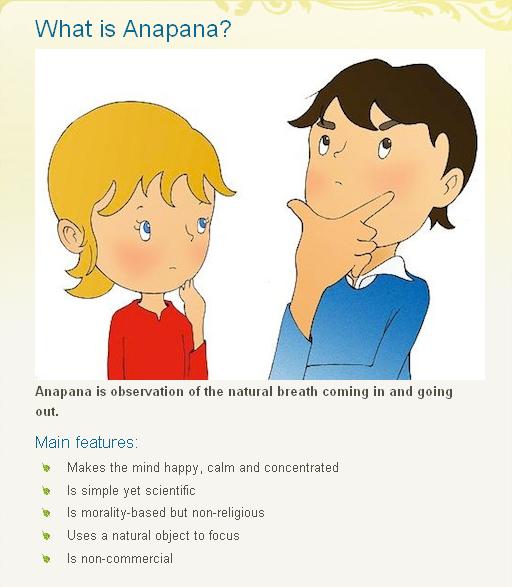

How meditation helps the mind
Q1. What is the mind?
The mind is what thinks! The mind can be helpful or harmful. If
the mind has poor habits, it will have negative feelings towards others.
If we make the effort to train the mind to improve itself, the thoughts
will be more good-natured and loving towards others and ourselves.
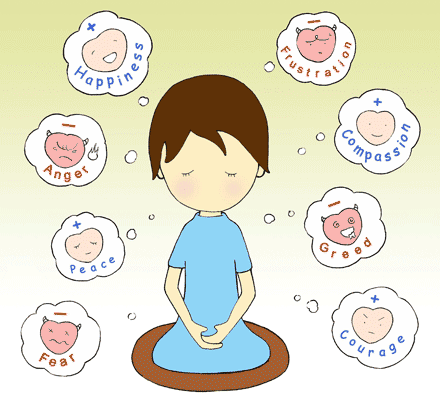
Q2. How can the mind improve?
The mind can purify itself. A part of the mind is always
observing what is happening and it can do the task of improving the
mind. If it learns to observe things as they are, then it will
understand that when there are negative thoughts or emotions, the mind
is distressed. As this observing part of the mind becomes stronger, the
reacting parts of the mind become weaker. The mind becomes more pure and
the suffering is removed.

Q3. How can Anapana meditation help?
You observe the breath coming in and going out, without allowing
any other thoughts. Usually when pleasant thoughts come in the mind, we
want something, and with unpleasant thoughts, there is dislike. But when
we are simply observing the breath, even for a few moments, there is
no negativity polluting the mind. As these moments of purity become
longer, the mind gradually becomes cleaner. It is initially at the
surface level, but this prepares you to later practice Vipassana
meditation, which will clean down to the roots.


Q4. How can we keep focused when the mind is full of thoughts?
That is exactly why we meditate. If the mind was already able to
stay focused, you would not need to meditate. The mind keeps wandering –
this is its habit. All kinds of thoughts come, mostly about the past or
the future. The important thing is how soon we become aware the mind
has wandered. Our job is to keep bringing the mind back to observing the
breath.
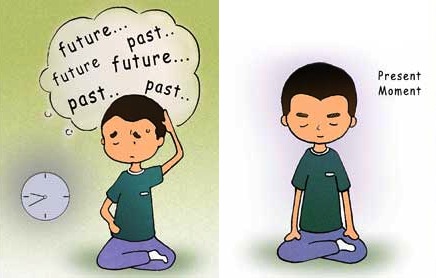
Q5. What is pure breath?
Pure breath is when there is only breath. The moment something
else, like a word or an image, is added to the breath it becomes impure.
In Anapana meditation, we work only with pure breath, nothing else
added.

Q6. What is natural breath?
The flow of breath that happens naturally, without making any
extra effort. It may be soft or hard, slow or fast, but we never try to
change how it is. The natural breath comes in and goes out without any
effort on our part. Our job is just to observe it.

Q7. Why do we observe only the breath?
Because we want to know the truth about ourselves. By meditating
with only pure breath, and nothing else, we start to experience this
truth. Our breath is related to our body and also to our mind. We are
observing the breath, and in the process, we begin to know our mind.
When thoughts come in the mind, the mind reacts to these thoughts, and
the breath changes. When we get angry or upset, we notice that the
breath becomes harder and faster. As the mind calms down, the breath
returns to normal. As we understand the mind through observing the
breath, we are able to strengthen our good qualities.
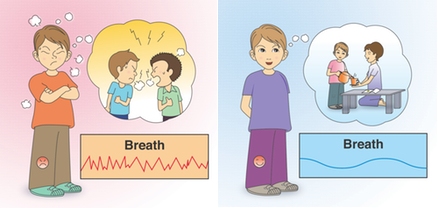
Q8. What are the qualities of a pure mind?
A pure mind is full of love, goodwill and compassion for
everyone. It does not generate anger, ill-will, hatred or greed. With a
pure mind, our thoughts and actions are kind and helpful to ourselves
and others.

Please watch:
http://www.youtube.com/watch?v=oLel1sMDpEM&list=LPWCeFjm-hYPo&index=1&feature=plcp
for
Buddhist Meditation - Lama Ole Nydahl
05:11 mins
http://www.youtube.com/watch?v=-49FV0Bs6mw&list=LPWCeFjm-hYPo&index=2&feature=plcp
for
Buddhas in Gardens - HD - Calming Nature Buddha Meditation -05:54 mins
http://www.youtube.com/watch?v=E2a5RZjzC8A&list=LPWCeFjm-hYPo&index=3&feature=plcp
for Buddhism, Meditation Nature & Water - Sublime,Inspiring Buddha Quotes HD Se- 04:08 mins
http://deoxy.org/annex/cwl.htm
http://www.thefullwiki.org/Meditation
12/14/12
Filed under:
General
Posted by:
site admin @ 5:09 pm
 151212 SATURDAY LESSON 781 -
151212 SATURDAY LESSON 781 -
from FREE ONLINE eNālāndā Research and
Practice UNIVERSITY through http://sarvajan.ambedkar.org

>>ஸுத்தபிடக-திக்க நிகாய Sutta Piṭaka >> Digha Nikāya
போதிசத்தா மேன்மை பொருந்திய நேர்த்தி வாய்ந்த மனிதர் ஸுத்த நீதி வாக்கியம்
- விழிப்புணர்வு மேல் ஆஜரா கிருத்தல் -
( மஹா+ ஸதிபத்தான)
Mahāsatipaṭṭhāna Sutta
இந்த ஸுத்த நீதி வாக்கியம் ஆழ்நிலைத் தியானத்திற்கு முக்கியமான தொடர்புள்ளதென விசாலமாக ஆய்ந்த கருத்து
This sutta is widely considered as a the main reference for meditation practice.
தமிழ்
உத்தேஸ (ஆயத்தப்படுத்தல்)
I. மெய்யார்வ தியான ஜாக்கிரதை ஸ்தாபித்தல்
A. உள்ளுயிர்ப்பு மற்றும் ஒரு தடவை மூச்சு வாங்கிவிடுதல் பிரிவு ( வினை அடிப்படை, ஒரு சில சமய சம்பந்தமான அப்பியாசம் பாடம் அல்லது ஆழ்நிலைத் தியான செயல்முறை சார்ந்த நியதி வழி, நீடமைதி, நினை விழந்த நிலை மெய்மறந்த மகிழ்ச்சி மற்றும் நாலடி பாதை எய்துதல்).
B. ஒழுக்க நடை பாதை பிரிவு ( நான்கு இரியாபத அங்கஸ்திதி இருக்கின்றது, அதாவது: நடத்தல், நிற்றல், உட்கார்ந்திருத்தல், சயனிப்பு)
C.முழு விழிப்புடனிருக்கிற, உணர் திறன், உணர்வு பிரிவு.
D. பின்வருங் காலத்துக்குரிய எதிர்நோக்கு ஆசை பிரிவு.
E.மூலக்கூறு அல்லது அடிப்படையான பொருள், அடிப்படை மெய்ம்மை, வண்ணம், நாச்சுவை, ஒலியலை, புலங்கொளி மூலப் பொருள்,உடலைச் சார்ந்த அடிப்படை மெய்ம்மை அல்லது மூன்று உயிரின உடற் கசிவுப்பொருள் சளி,
காற்று மற்றும் பித்தநீர், தகனம் செய்த பிந்திய உடல் சிதைவெச்சம் உடற்பகுதியான மூலக் கூறு தசை, இரத்தம், எலும்புகள்: ஒரு புனித திருச்சின்னம், ஒரு உயிரினப்படிவம், ஒரு மாழை.
F.ஒன்பது கல்லறை எலும்புகளைக் கொட்டும் மதிலகச் சுற்றுநில இடம். Note: infobubbles on all Pali words
Pāḷi
Uddesa
I. Kāyānupassanā
I.காயானுபஸ்ஸன
A. Ānāpāna Pabba
A.ஆனாபான பப்ப (கம்மத்தானங்)
B. Iriyāpatha Pabba
B.இரியாபத பப்ப
C. Sampajāna Pabba
C.ஸம்பஜான பப்ப
D. Paṭikūlamanasikāra Pabba
D.பதிகுலமானஸிகார பப்ப
E. Dhātumanasikāra Pabba
E.தாதுமானஸிகார பப்ப
F. Navasivathika Pabba
E.நவஸிவதக பப்ப
II. Vedanānupassanā
|
English
Introduction
I. Observation of Kāya
I.Fixing the attention, earnest meditation
A. Section on ānāpāna
A.Section on the Basis of action. This term is applied to certain
religious exercises or meditations, by means of which samādhi, jhāna and
the four Paths are attained. Each of these is based on a certain
formula or rite, also called kammaṭṭhānaṃ
B. Section on postures
B.Section on Way of deportment. There are four iriyāpathas or postures, viz. walking, standing sitting, lying down.
C. Section on sampajañña
C.Section on Knowing, understanding, conscious.
D. Section on repulsiveness
D.Section on To expect, await, desire
E. Section on the Elements
E.Section on Primary or elementary substance; principle, element,
material; a property of a primary substance, as colour, taste, sound; an
organ of sense; a bodily principle or humour of which there are three,
phlegm, wind and bile; a constituent of the body, as flesh, blood,
bones; the remains of a body after cremation; a sacred relic; a fossil; a
metal
F. Section on the nine charnel grounds
II. Observation of Vedanā
|
உத்தேஸ (ஆயத்தப்படுத்தல்)
அத்தகைய எம் வல்லமைமிக்க சவுகதநூல் இயற்கை ஆற்றல்:
எந்த நான்கு?இங்கு பிக்குக்களுக்களா,ஒரு பிக்கு kāye kāyānupassī
(உடலை உடல் கண்காணிப்புடன்) கவனித்து வசிக்கிரார் ātāpī sampajāno
satimā,வேறு வழியில்லாமல் பிரபஞ்சம் நோக்கி எச்சரிக்கையுடன் இருக்க
ஏகாந்தமாயிருக்கிரார்.வேறு வழியில்லாமல் பிரபஞ்சம் நோக்கி
எச்சரிக்கையுடன் இருக்க ஏகாந்தமாயிருக்க Vedanāsu vedanānupassī
உறுதலுணர்ச்சி கண்காணிப்புடன் வசிக்கிரார்.வேறு வழியில்லாமல் பிரபஞ்சம்
நோக்கி எச்சரிக்கையுடன் இருக்க ஏகாந்தமாயிருக Citte cittānupassī viharati
ātāpī sampajāno satimā, சித்த நலம் கருதி ண்காணிப்புடன் வசிக்கிரார்.
மனத்தால் இயக்கப்படுகிற அபூர்வமான வினயா(ஒழுக்கம்) காக்க வேறு
வழியில்லாமல் பிரபஞ்சம் நோக்கி எச்சரிக்கையுடன் இருக்க ஏகாந்தமாயிருக்க
கண்காணிப்புடன் வசிக்கிரார்.
பாளி
எவங் மெ ஸுத்தங்
கதமெ சத்தாரோ ?இத பிக்க்காவெ,காயெ
காயானுபஸ்ஸி விஹாரதி ஆதாபி ஸம்பஜானொ ஸதிமா, வினய்ய லோகெ அபிஜ்ஜா
தொமனஸம். வேதனாஸு வேதனானுபஸ்ஸி விஹாரதி ஆதாபி ஸம்பஜானொ ஸதிமா, வினய்ய லோகெ அபிஜ்ஜா தொமனஸம். சித்தெ சித்தானுபஸ்ஸி விஹாரதி ஆதாபி ஸம்பஜானொ ஸதிமா, வினய்ய லோகெ அபிஜ்ஜா தொமனஸம். தம்மெஸு தம்மானுபஸ்ஸி விஹாரதி ஆதாபி ஸம்பஜானொ ஸதிமா, வினய்ய லோகெ அபிஜ்ஜா தொமனஸம்.
English
Introduction
Thus have I heard:
On one occasion, the Bhagavā was staying among the Kurus at Kammāsadhamma, a market town of the Kurus. There, he addressed the bhikkhus:
– Bhikkhus.
– Bhaddante answered the bhikkhus. The Bhagavā said:
–
This, bhikkhus, is the path that leads to nothing but the purification
of beings, the overcoming of sorrow and lamentation, the disappearance
of dukkha-domanassa ( Cessation of suffering- Nibbaṇa (Ultimate goal for eternal bliss), the attainment of the right way, the realization of Nibbāna (Ultimate goal for eternal bliss), that is to say the four satipaṭṭhānas(Fixing the attention, earnest meditation).
Which four? Here, bhikkhus, a bhikkhu dwells observing kāya in kāya (the body in the threshold of the body), ātāpī sampajāno (Ardent/ zealous/ strenuous/ active Knowing/ understanding conscious) satimā (Of retentive memory or active mind/ thoughtful/ reflecting) having given up abhijjhā-domanassa (Covetousness) towards the world. He dwells observing vedanā in vedanā (Feeling/ sensation/ perception; pain/suffering in threshold of Feeling/ sensation/ perception; pain/suffering) ātāpī sampajāno( Ardent/ zealous/ strenuous/ active Knowing/ understanding conscious), satimā(Of retentive memory or active mind/ thoughtful/ reflecting), having given up abhijjhā-domanassa ( Covetousness) towards the world. He dwells observing citta in citta (The heart; the mind; a thought, an idea; will/ intention in threshold of The heart; the mind; a thought, an idea; will/ intention), ātāpī sampajāno (Ardent/ zealous/ strenuous/ active Knowing/ understanding conscious), satimā (Of retentive memory or active mind/ thoughtful/ reflecting), having given up abhijjhā-domanassa (Covetousness) towards the world. He dwells observing dhamma·s in dhamma·s (and (dhammaṃ)Nature/ condition/ quality/ property/
characteristic; function/ practice/ duty; object/ thing/ idea/
phenomenon; doctrine; law; virtue/ piety; justice; the law or Truth of
the Buddha; the Buddhist scriptures; religion in threshold of and (dhammaṃ)Nature/ condition/ quality/ property/
characteristic; function/ practice/ duty; object/ thing/ idea/
phenomenon; doctrine; law; virtue/ piety; justice; the law or Truth of
the Buddha; the Buddhist scriptures; religion) ātāpī sampajāno (Ardent/ zealous/ strenuous/ active Knowing/ understanding conscious), satimā (Of retentive memory or active mind/ thoughtful/ reflecting), having given up abhijjhā-domanassa (Covetousness) towards the world.
12/13/12
Filed under:
General
Posted by:
site admin @ 7:52 pm
141212 FRIDAY LESSON 780 -
from FREE ONLINE eNālāndā Research and
Practice UNIVERSITY through http://sarvajan.ambedkar.org


>>ஸுத்தபிடக-திக்க நிகாய Sutta Piṭaka >> Digha Nikāya
DN 16 - (D ii 137)
மஹாபரினிப்பண ஸுத்த (அபார வீடுபேற்றுநிலை குறிக்கோள் எய்தல்)
- இறுதி நெறிமுறைக் கட்டளைத்தொகுதி -
இந்த ஸுத்த (சூத்திரத்தொகுதி ) புத்தர் அவரை பின்பற்றுபவர்கள் பொருட்டு பற்பலவிதமான கொய்சகமாக்கப்பட்ட மிக முக்கியமான நெறிமுறைக் கட்டளைத்தொகுதி குழுமத்தை முன்னேற்றமுற்ற இக்காலத்திற்கு நமக்கு கொடுத்திறுக்கிறார்,
தமிழ்
(தம்மாவின் உருப்பளிங்கு)
நான்
Dhammādāsa (தம்மாவின் உருப்பளிங்கு) என கருதப்படும் தம்மாவை
வியாக்கியானம் பண்ண பிரசங்கம் செய்ய விரும்புகிரேன்,ariyasāvaka (புனிதமான
சீடர்)ஆக ஆட்கொண்டு, ஒருவேளை அவர் தானே விரும்பி உறுதியாக்கிக் கொண்டால்:
‘ஆக
எனக்கு, மேலும் niraya (நரகம்) இல்லை, மேலும்
tiracchāna-yoni ( மிருகம சாம்ராஜ்யம்) இல்லை,இன்னும் மேலும் pettivisaya
(ஆவிகள் சாம்ராஜ்யம்) இல்லை, மேலும்
பாக்கியவீனம், துரதிருஷ்டம், துக்க நிலை இல்லை, நான் sotāpanna (புனல்
பிரவேசி), இயற்கையாக துக்க நிலையில் இருந்து விடுவிக்கப்பட்டவன், sambodhi
(முழுக்க தூக்கத்திலிருந்து விழிப்பு) ஆக சேர இருத்தல் உறுதி.
மற்றும்
என்ன, Ānanda (ஆனந்தா), தம்மா மீதான அந்த பிரசங்கம் Dhammādāsa (தம்மாவின்
உருப்பளிங்கு) என கருதப்படும் தம்மாவை வியாக்கியானம் பண்ண பிரசங்கம் செய்ய
விரும்புகிரேன், ariyasāvaka (புனிதமான சீடர்) ஆக ஆட்கொண்டு, ஒருவேளை அவர்
தானே விரும்பி உறுதியாக்கிக் கொண்டால்:
‘ஆக எனக்கு, மேலும்
niraya (நரகம்) இல்லை, மேலும் tiracchāna-yoni ( மிருகம
சாம்ராஜ்யம்) இல்லை, மேலும் pettivisaya (ஆவிகள் சாம்ராஜ்யம்)
இல்லை, மேலும் பாக்கியவீனம், துரதிருஷ்டம், துக்க நிலை இல்லை, நான்
sotāpanna (புனல் பிரவேசி), இயற்கையாக துக்க நிலையில் இருந்து
விடுவிக்கப்பட்டவன், sambodhi (முழுக்க தூக்கத்திலிருந்து விழிப்பு) ஆக சேர
இருத்தல் உறுதி தானே?
இங்கு,ஆனந்தா,புனிதமான சீடர் Buddhe aveccappasāda (புத்தர் இடத்தில் தன்னம்பிக்கை)உடைய வராக குணிக்கப் படுகிரார்.
‘இதிபி ஸொ பகவா அரஹங் ஸம்மாஸம்புத்தொ
விஜ்ஜாசரணஸம்பனொ ஸுகதொ லோகவிது அனுத்தரொ
புரிஸதம்மஸாரதி ஸத்த தேவமனுசானங் புத்தொ
பகவா,தி.
பாளி
தம்மாதாஸ
தம்மாதாஸங் நாம தம்மா-பரியாயங், யேன ஸம்மன்னாகதொ ஆரியஸாவகொ ஆகன்கமானொ அட்டணாவ அட்டாணங் ப்யா - கரெய்ய: கின-நிரயோ-மி கின-திர்ச்சான-வொனி கின-பெட்டிவிசவொ கின் அப்பாவ-துக்கதி-வினிபாதொ, ஸோதாப்பன்னொ - ஹமஸ்மி அவினிபாதொ-தம்மொ நியதொ ஸம்போதி பரயனொ’தி.
கதமொ ச ஸொ, ஆனந்தா, தம்மாதாஸொ தம்மா-பரியாயவொ, யேன ஸம்மன்னாகதொ ஆரியஸாவகொ ஆகன்கமானொ அட்டணாவ அட்டாணங் ப்யா - கரெய்ய: கின-நிரயோ-மி கின-திர்ச்சான-வொனி கின-பெட்டிவிசவொ கின் அப்பாவ-துக்கதி-வினிபாதொ, ஸோதாப்பன்னொ - ஹமஸ்மி அவினிபாதொ-தம்மொ நியதொ ஸம்போதி பரயனொ’தி?
இத்’ஆனந்தா, ஆரியஸாவகொ புத்தே அவெச்சப்பஸாத ஸம்மன்னாகதொ ஹோதி
Idh‘ānanda, ariyasāvako Buddhe aveccappasāda samannāgato hoti
English
Mahāparinibbāna Sutta
{excerpts}
— The last instructions —
[mahā-parinibbāna]
(The Mirror of the Dhamma)
This sutta gathers various instructions the Buddha gave for the sake of his followers after his passing away, which makes it be a very important set of instructions for us nowadays.
I will expound the discourse on the Dhamma which is called Dhammādāsa, possessed of which the ariyasāvaka, if he so desires, can declare of himself: ‘For me, there is no more niraya, no more tiracchāna-yoni, no more pettivisaya, no more state of unhappiness, of misfortune, of misery, I am a sotāpanna, by nature free from states of misery, certain of being destined to sambodhi.
And
what, Ānanda, is that discourse on the Dhamma which is called
Dhammādāsa, possessed of which the ariyasāvaka, if he so desires, can
declare of himself: ‘For me, there is no more niraya, no more
tiracchāna-yoni, no more pettivisaya, no more state of unhappiness, of
misfortune, of misery, I am a sotāpanna, by nature free from states of
misery, certain of being destined to sambodhi?
Here, Ānanda, an ariyasāvaka is endowed with Buddhe aveccappasāda:
DN 16 - (D ii 137)
Mahāparinibbāna Sutta
{excerpts}
— The last instructions —
[mahā-parinibbāna]
சிறந்த வீடுபேற்றுநிலை குறிக்கோள் எய்தல் சவுகதநூலின் ஒரு பாகம் - எல்லாம் உணர்வுநிலையின் அடி எல்லை
இந்த சவுகதநூலின் ஒரு பாகம், புத்தரால், அவருடைய
முடிவுறுதல் அப்புறம், அவருடைய பின்பற்றுபவர்களின் நிமித்தம் கொடுக்கப்பட்ட
பற்பல விதிமுறைகள் கொய்சகமாக்கப்பட்டது. அவை, நமக்கு தற்காலத்தில் மிக
முக்கிய இணைகோப்பு விதிமுறைகளை உண்டாக்குகிறது.
இங்கு,ஆனந்தா,புனிதமான சீடர் Buddhe aveccappasāda (புத்தர் இடத்தில் தன்னம்பிக்கை)யாக குணிக்கப் படுகிரார்.
மற்றும்
என்ன,Ānanda (ஆனந்தா),தம்மா மீது ஆன அந்த பிரசங்கம் Dhammādāsa (தம்மாவின்
உருப்பளிங்கு) என கருதப்படும் தம்மாவை வியாக்கியானம் பண்ண பிரசங்கம் செய்ய
விரும்புகிரேன்,ariyasāvaka (புனிதமான சீடர்)ஆக ஆட்கொண்டு,ஒருவேளை அவர்
தானே விரும்பி உறுதியாக்கிக் கொண்டால்:
‘ஆக எனக்கு, இன்னும் மேலும்
niraya (நரகம்) இல்லை,இன்னும் மேலும் tiracchāna-yoni ( மிருகம
சாம்ராஜ்யம்) இல்லை,இன்னும் மேலும் pettivisaya (ஆவிகள் சாம்ராஜ்யம்)
இல்லை,இன்னும் மேலும் பாக்கியவீனம்,துரதிருஷ்டம்,துக்கம், நிலை இல்லை, நான்
sotāpanna (புனல் பிரவேசி), இயற்கையாக துக்க நிலையில் இருந்து
விடுவிக்கப்பட்டவன்,sambodhi (முழுக்க தூக்கத்திலிருந்து விழிப்பு) ஆக சேர
இருத்தல் உறுதி தானே?
இங்கு,ஆனந்தா,புனிதமான சீடர் Buddhe aveccappasāda (புத்தர் இடத்தில் தன்னம்பிக்கை)யாக குணிக்கப் படுகிரார்.
Dhamme aveccappasāda:(தம்மா இடத்தில் தன்னம்பிக்கை)யாக குணிக்கப் படுகிரார்.
நன்று
தெரிவித்த பகவதா தம்மம் (இயற்சக்தி, கட்டுப்பாடு, நிபந்தனை, வரையறை,
கட்டியம், நிலைமை, நன்னிலை, தகுதி, முறைமை, பண்பு, படிநிலை, தரம்,
உயர்நிலை, மனநிலை, உணர்ச்சிநிலை, ஒப்பந்த விதியின் வரையறைக்கூறு,
கட்டுப்பாடு, முன்னீடு, செயலுக்கு முன்பே பெற்றிருக்கவேண்டிய
இன்றியமையாக்கூறு, குணம், தனியியல்பு, தனித்திறம், தொனி, நயம், உள்ளார்ந்த
தனிக்கூறு, நயநலக்கூறு, பண்புநலம், பண்புக்கூறு, பண்புத்தரம், பண்புவகை,
பண்புப்படி, உடன்பாட்டு எதிர்மறை நிலைக்கூறு,இயற்கைப் பண்பு, தன்மை, உடைமை ,
சொத்து , உரிமைப்பொருள் , ஆதனம், இனப்பொதுப்பண்பு, ஆஸ்தி , செல்வம்,
தனித்தன்மை,சிறப்பியல்பு,இயல்பாய்வு , பண்பான, தனிச் சிறப்பான ,
குறிப்பிடத்தக்க, தனிச்சிறப்புப் பண்பு , வேறுபரத்திக் காட்டும் இயல்பு ,
பண்புருவாக்கும் அடிப்படைக்கூறு , மடர்க்கையின் நேர்க்கூறு , முனைப்பான ,
தனிச் சிறப்பான , குறிப்பிடத்தக்க , தனிப்பண்பு மூலமான , மரபுக் கூறான ,
மரபியைவான, வினை , வினைசெயல் , செய்கடமை , சமயவினைமுறை , நடைமுறைச்சடங்கு ,
நிகழ்ச்சிமுறை , செயற்படு , செயலாற்று , கடனாற்று, காரியம் , கடமை ,
சடங்கு, செயல் புரி , வேலை செய், சார்பு , சார்புலன், செயல்கூறு ,
செயல்படுத்து, பண்ணம், நடைமுறை வழக்கம் , பழக்கம் , வழக்கமான செயல் , சட்ட
நடைமுறை ஒழுங்கும , வாடிக்கை , நீடித்த பயிற்சி , பயிற்சித்தொடர்பு ,
அப்பியாசி , அப்பியாசம், பயிற்சி செய், கடமை , மேலோர்க்குக் காட்டத்தகும்
மட்டுமதிப்பு , பணிவிணக்கம் , அறமுறைக்கடப்பாடு , சட்டக்கட்டுப்
பாட்டுணர்ச்சி , நேர்மைப் பற்றுணர்வு , பொருள் , பருப்பொருள் ,
காட்சிப்பொருள் , புறப்பொருள் , புலனால் அறியப்படும்பொருள் , நானெனும்
தன்மைக்கப் புறம்பானது , கருத்துநோக்கம் , செயல் இலக்கு , குறிக்கோள் ,
நாடும்பொருள் , இலக்கானவர் , உரியவர் , ஆட்பட்டவ . இலக்கு , நோக்கம் ,
எண்ணம், செயப்படுபொருள், காரியம் , உளக்கருத்து , சிந்தனை , கருத்து,
வடிப்பு, இயற்காட்சி , இயல்நிகழ்ச்சி , காரண காரியத்தொடர்பு ஆய்ந்து
காணப்படாச் செய்தி , புலன்குறித்த செய்தி , மனங்குறித்துக் கண்ட செய்தி ,
ஆராய்ச்சிக்குரிய செய்தி , குறிப்பிடத்தக்க ஒன்று , குறிப்பிடத்தக்க
நிகழ்ச்சி , குறிப்பிடத்தக்க ஆள், உணரக்கூடியபொருள் , காட்சி, கவனிக்கப்பட
வேண்டிய நிகழ்வு, தோற்றப்பாடு, கோட்பாடு , வகுத்தமைத்த கொள்கை விளக்கம் ,
போதனைத் தொகுப்பு , சித்தாந்தம் , சமயமுடிபு விளக்கக் கோட்பாடு , அறிவியல்
விளக்க இணைப்புக் கோட்பாடு , அரசியல் தத்துவக் கோட்பாடு, போதனைகள்,
வியப்புணர்த்துஞ்சொல் , வியப்பிடைச்சொல், ஒழுக்கம் , நன்மை , நலம் , நேர்மை
, தகுதி , தன்மை , சிறப்பு , சிறந்த பண்பு , கடமையுணர்வு , நற்குணம் ,
நற்பண்புக்கூறு , புண்ணியம் , நற்கூறு , உள்ளார்ந்த நலம் , உள்ளார்ந்த
ஆற்றல் , பண்புறுதி , பயனுறுதிப்பாடு , கற்பு, கடமையுணர்ச்சி, சமய ஈடுபாடு,
வியப்புணர்த்துஞ்சொல் அல்லது புத்தரின் உண்மை , மெய்ம்மை , உண்மைச்
செய்திகளின் முழுத்தொகுதி , தத்துவம் , ஆழ்ந்த உண்மைச்செய்தி ,
மெய்றுதிப்பாடு , உண்மையுடைமை , இசைவு , பொருத்தம் , மெய்யான செய்தி ,
நிலையான மெய்ப் பொருள் , மெய்யான உரை , புத்தரால் தோற்று விக்கப்பட்ட சமயம
தர்ம சாஸ்திரம் , வேதப்புத்தகம், வேதவசனம், புனித நூல்.)சந்தித்துகோ(
கட்புலனாகிற , பார்க்கக்கூடிய , விளங்கக்கூடிய , வெளிப்படையான , மூடாக்கிற ,
மறைவற்ற, காணக்கூடிய , கண்ணுக்கு தெரிகிற, கண்ணுக்குப் புலப்படும்,
உண்மையாக உள்ள , உண்மையான , நடைமுறையில் உள்ள, நிஜமான , உள்ளபடியான, இந்த
வாழ்வுக்கு உரியதாயிருக்கிற) காலதாமதம் இன்றி உடனடியான அழைக்க , அழைத்தல் ,
உகந்த தனிமையாய், யாவும் ஒவ்வொன்றாக,
தனித்தனியே, ஓர் வழிபாட்டுத்
திருவினைக்குரிய இடம் , ஒரு நீதிப்பீடம் , ஒரு சுவர்ப்பக்க வரை விளிம்பு ,
அறைச்சுவர் உச்சி நெடுக கூரைக்கு அடுத்துக் கீழ் உள்ள அச்சுருவச் சிற்ப
வேலைப்பாடு , முன்கூரை , அறிவுத்திறம்வாய்ந்த , மெய்யறிவார்ந்த , கற்றறிந்த
, முன் விழிப்புடைய ,பார்க்க.
நன்று தெரிவித்த பகவதா தம்மம்
சந்தித்துகோ காலதாமதம் இன்றி உடனடியான அழைக்க , உகந்த தனிமையாய்,
அறைச்சுவர் உச்சி நெடுக கூரைக்கு அடுத்துக் கீழ் உள்ள அச்சுருவச் சிற்ப
வேலைப்பாடு , முன் விழிப்புடைய ,பார்க்க.
இது,
Ānanda (ஆனந்தா),தம்மா மீது ஆன அந்த பிரசங்கம் Dhammādāsa (தம்மாவின்
உருப்பளிங்கு) என கருதப்படும் தம்மாவை வியாக்கியானம் பண்ண பிரசங்கம் செய்ய
விரும்புகிரேன்,ariyasāvaka (புனிதமான சீடர்)ஆக ஆட்கொண்டு,ஒருவேளை அவர்
தானே விரும்பி உறுதியாக்கிக் கொண்டால்:
’ஆக எனக்கு, இன்னும் மேலும் niraya
(நரகம்) இல்லை,இன்னும் மேலும் tiracchāna-yoni ( மிருகம சாம்ராஜ்யம்)
இல்லை,இன்னும் மேலும் pettivisaya (ஆவிகள் சாம்ராஜ்யம்) இல்லை,இன்னும்
மேலும் பாக்கியவீனம்,துரதிருஷ்டம்,துக்கம், நிலை இல்லை, நான் sotāpanna
(புனல் பிரவேசி), இயற்கையாக துக்க நிலையில் இருந்து
விடுவிக்கப்பட்டவன்,sambodhi (முழுக்க தூக்கத்திலிருந்து விழிப்பு) ஆக சேர
இருத்தல் உறுதி.
Sato(கவனமான)
நீர் இருக்க வேண்டும்,bhikkhus (பிக்குக்கள்),மேலும் sampajānos(மாறா
இயல்பு அநித்தியத்தை பகுத்தறிதல்).இது தான் உமக்கு
எங்களுடைய போதனை.
மற்றும் எப்படி,பிக்கு, பிக்குக்கள் sato (கவனமான) இருக்கிரார்? இங்கு,பிக்குக்கள், ஒரு பிக்கு
இப்படி,பிக்குக்கள்,பிக்கு
sato (கவனமான) இருக்கிரார்.மற்றும் எப்படி,பிக்குக்கள், பிக்கு
sampajānos(மாறா இயல்பு அநித்தியத்தை பகுத்தறிதல்)ஆகிரார்?
இங்கு,பிக்குக்கள்,
இப்படி,பிக்குக்கள்,பிக்கு
sampajānos(மாறா இயல்பு அநித்தியத்தை பகுத்தறிதல்)ஆகிரார்,Sato(கவனமான)
நீர் இருக்க வேண்டும்,பிக்குக்கள்,மற்றும்sampajānos(மாறா இயல்பு
அநித்தியத்தை பகுத்தறிதல்),இது தான் உமக்கு
எங்களுடைய போதனை.
-ஆனந்தா,
பூவா பருவகாலமாக இருந்த போதிலும், இரட்டை sala (சாலா) மரங்கள் முழு
மலர்ச்சி அடைந்து இருக்கிறது. மற்றும் Tathagata (குறைபாடற்றவரை) வழிபாடு
செய்தல் போல் Tathagata(குறைபாடற்றவர்) உடல் மேலே பூமழை பொழிந்து, துளி
சிதற, இரத்தினப்பிரபையாகியது. மற்றும் தேவலோக பவழமலர்கள் மற்றும்
சுவர்க்கத்தைச் சேர்ந்த சந்தன மரத் தூள் வானத்தில் இருந்து மழை கீழ் நோக்கி
Tathagata (குறைபாடற்றவர்) உடல் மேலே பொழிந்து, மற்றும் Tathagata
(குறைபாடற்றவரை) வழிபாடு செய்தல் போல் Tathagata(குறைபாடற்றவர்) உடல் மேலே
பூமழை பொழிந்தது. மற்றும் Tathagata(குறைபாடற்றவர்) போற்றுதலைக் காட்டுஞ்
சமிக்கையால் சுவர்க்கத்தைச் சேர்ந்த குரல் ஒலி மற்றும் இசைகருவிகள்
காற்றுவெளியில் வெளிப்படுத்தியது.
இதனால் மட்டும் அல்ல, ஆனந்தா,Tathagata
(குறைபாடற்றவரை) உபசரித்தது, மரியாதை செலுத்தியது, நன்குமதிக்கப் பட்டது,
மனந்திறந்த புகழுரைத்தது, கெளரவம் செலுத்தியது. ஆனால், ஆனந்தா, எந்த ஒரு
பிக்குவோ அல்லது பிக்குனியோ, உபாசகன் அல்லது
உபாசகி,dhamm’ānudhamma’p'paṭipanna, sāmīci’p'paṭipanna, தம்மாவிற்கு
பொருந்துமாறு பயிற்சிக்கிராரோ அவர் Tathagata (குறைபாடற்றவரை) உபசரித்தது,
மரியாதை செலுத்தி, நன்குமதித்து, மனந்திறந்த புகழுரைத்தது, கெளரவம்
செலுத்தி. மிக உயர்ந்த அளவு நேர்த்திவாய்ந்த மனந்திறந்த புகழுரையாற்றுவர்.
இதுக்காக, ஆனந்தா, நீங்கள், நீங்களாகவே பயிற்சித்தல் இதுதான்: நாங்கள்
dhamm’ānudhamma’p'paṭipanna, sāmīci’p'paṭipanna, தம்மாவிற்கு
பொருந்துமாறு வாழ்க்கை முறையில் தொடர்ந்திருப்போம்.
உங்கள் சிலர்ருக்கு, ஆனந்தா,இவ்வாறு நேரிடக் கூடும்:
கற்பிப்பவர்
வார்த்தைகள் தீர்ந்து விட்டது, இனி கற்பிப்பவர் இல்லை. ஆனால் இது,
ஆனந்தா, அவ்வாறு ஆலோசனை பண்ணப்படாது. அது, ஆனந்தா,எவை நான் பாடம் படிப்பிது
மற்றும் உங்களை அறிந்திருக்க செய்துமுடித்த Dhamma and Vinaya (தம்மாவும்
வினயாவும்) அது என்னுடைய இறப்புக்கு அப்பால் உங்களுடைய கற்பிப்பவராக
இருக்கும்.
புனிதமானவர்கள் ஏற்றுக்கொள்ளத்தக்க சீலராக குணிக்கப் படுகிரார்.
பாளி
‘இதிபி ஸொ பகவா அரஹம்
ஸம்மாஸம்புத்தொ விஜ்ஜாசரனொஸம்பன்னொ ஸுகதொ லோகவிது அனுத்தரொ புரிஸதம்மஸாரதி
ஸத்தா தேவமனுஸ்ஸானம் புத்தொ பகவா’தி.
தம்மெ அவெச்சப்பஸ்ஸாத ஸம்மன்னாகததொ ஹோதி:
ஸ்வாகாதொ பகவதா தம்மொ ஸந்திதிகொ அகாலிகொ எதிபசஸ்ஸிகொ ஒபனேவிகொ பச்சதம் வெதிதப்பொ வின்னுஹி’தி.
ஸங்கே அவெச்சப்பஸ்ஸாத ஸம்மன்னாகததொ ஹோதி:
Saṅghe aveccappasāda (சான்றோர் இடத்தில் தன்னம்பிக்கை)யாக குணிக்கப் படுகிரார்.
ஸுப்பதிபன்னொ பகவதொ ஸாவகச்ங்கொ,
உஜ்ஜுபதிபன்னொ பகவதொ ஸாவகச்ங்கொ,
ஞாயபதிபன்னொ பகவதொ ஸாவகச்ங்கொ,
ஸாமிசிதிபன்னொ பகவதொ ஸாவகச்ங்கொ, வாதிதம் சத்தாரி புரிஸவுக்கானி, ஏஸ பகவதொ
ஸாவகச்ங்கொ, ஆஹுனெய்யொ பாஹுனெய்யொ அன்ஞலிகாரனியொ அனுத்தரம் புண்யக்கேதம்
லோகஸ்ஸ’தி.
அகந்தேஹி அச்சிதேஹி அஸபலேஹி அக்கம்மாசஸேஹி புஜ்ஜஸ்ஸேஹி வின்யுபஸத்தேஹி அபராமதேஹி ஸமாதிஸம்வதனிகேஹி.
அ
யங் கொ ஸொ,ஆனந்தா,தம்மதாஸொ தம்மா-பரியாயொ, வென ஸம்மன்னாகததொ ஆரியஸாவகொ
ஆக்கன்கமானொ அட்டனாவ அட்டானம் ப்வா-கரேவ்வா ‘
கின-நிரவொ-மி-கின-திரச்சானி-வொனி
கின-பெட்டிவிஸவொ’அபாயொ-துக்கதி-வினிபாதொ,ஸோதாபன்னொ-ஹமஸமி அவினிபாத-தம்மொ
நிவதொ ஸம்போதி-பராயனொ’ தி
ஸதொ, பிக்காவெ, பிக்கு
விஹாரெய்ய ஸம்பஜனொ அ யங் வொ அமாக்ஹம் அனுஸாஸனி.கதான்யச, பிக்காவெ, பிக்கு ஸாதொ ஹோதி? இதா, பிக்காவெ, பிக்கு
காயெ காயானுபஸ்ஸி விஹாரதி ஆதாபி ஸம்பஜானொ
ஸதிமா, வினய்ய லோகெ அபிஜ்ஜா-தொம்மஸம்; வெதன்னாஸு வெதனானுபஸ்ஸி விஹாரதி
ஆதாபி ஸம்பஜானொ ஸதிமா, வினய்ய லோகெ அபிஜ்ஜா-தொம்மஸம்; சித்தெ சித்தானுபஸ்ஸி
விஹாரதி ஆதாபி ஸம்பஜானொ ஸதிமா, வினய்ய லோகெ அபிஜ்ஜா-தொம்மஸம்; தம்மேஸு
தம்மானுபஸ்ஸி விஹாரதி ஆதாபி ஸம்பஜானொ ஸதிமா, வினய்ய லோகெ அபிஜ்ஜா-தொம்மஸம்.
ஏவங் கொ, பிக்காவெ, பிக்கு ஸாதொ ஹோதி.கதான்யச, பிக்காவெ, பிக்கு ஸம்பஜானொ ஹோதி? இதா, பிக்காவெ.
பிக்கு அபிஹிகந்தெ பதிக்கந்தெ ஸம்பஜானகாரி ஹோதி,
ஆலோகித விலோகித ஸம்பஜானகாரி ஹோதி.ஸமிஞ்ஜிதெ பஸாரிதெ ஸம்பஜானகாரி ஹோதி.
ஸங்காதிபட்டாசிவரதாரனெ ஸம்பஜானகாரி ஹோதி. அஸிதெ பிதெ காவிதெ ஸாவிதெ
ஸம்பஜானகாரி ஹோதி. உச்சாரபஸ்ஸவகம்மா ஸம்பஜானகாரி ஹோதி.
காதெ,திதெ,நிஸின்னெ ஸுதெ ஜாகரிதெ பாஸிதெ துனிஹிபாவெ ஸம்பஜானகாரி ஹோதி.
ஏவங் கொ, பிக்காவெ, பிக்கு ஸம்ப்ஜானொ ஹோதி.ஸாதொ,பிக்காவெ, பிக்கு விஹாரெய்ய ஸம்ப்ஜானொ. அ யங் வொ அம்ஹாகம் அனுஸாஸனி தி.
- ஸப்பாபாலிபுல்லா கொ,
ஆனந்தா, வமகஸாலா அகலப்புப்ஹேஹி. தெ ததாகதஸ்ஸ ஸரிரங் ஒகிரந்தி அஜ்ஜொகிரந்தி
அபிஹிப்பகிரந்தி ததாகதஸ்ஸ பூஜாய. திப்பானிபி மனதாரபுப்பாஹானிபி அந்தலிக்ஹா
பாபதந்தி. தானி ததாகதஸ்ஸ ஸரிரங் ஒகிரந்தி அஜ்ஜொகிரந்தி அபிஹிப்பகிரந்தி
ததாகதஸ்ஸ பூஜாய. திப்பானிபி சந்தனாசுன்னானி அந்தலிக்ஹா பாபதந்தி. தானி
ததாகதஸ்ஸ ஸரிரங் ஒகிரந்தி அஜ்ஜொகிரந்தி அபிஹிப்பகிரந்தி ததாகதஸ்ஸ பூஜாய.
திப்பானிபி துரியானி அந்தலிக்ஹெ வஜ்ஜந்தி ததாகதஸ்ஸ பூஜாய. திப்பானிபி
அந்தலிக்ஹெ வட்டந்தி ததாகதஸ்ஸ பூஜாய.
நா கொ, ஆனந்தா, எத்தவதா ததாகதொ ஸக்கதொ வ ஹோதி கருகதொ வ மானிதொ வ
பூஜிதொ வ அபசிதொ வ. யொ கொ. ஆனந்தா, பிக்கு வ பிக்குனி வ உபாஸகொ வ உபாஸிகா வ
தம்மனுதம்மாபதிபன்னொ விஹாரதி ஸாமிசிபதிபன்னொ அனுதம்மாசாரி, ஸொ ததாகதம்
ஸக்கரொதி கரும் கரோதி மானதி பூஜேதி அபசிவதி பரமாய பூஜெய. தஸ்மாத்ஹி ஆனந்தா,
தம்மனுதம்மாபதிபன்னா விஹாரிஸாம ஸாமிசிபதிபன்னா அனுதம்மாசாரி’னோதி.
ஏவன்ஹி வொ ஆனந்தா, ஸிக்ஹிதப்ப நிதி.
-ஸிவா கொ பன்’ஆனந்தா, தும்ஹாகம்ஏவம்’அஸ்ஸ: ‘அதித-ஸத்துக்கம்
பாவசனம், னத்தி நொ ஸத்தா தி. நா கொ பன்’னெதம்.ஆனந்தா, ஏவங் தத்தாத்தம். யொ
வொ, ஆனந்தா, மயா தம்மொ ச வினயொ ச தேஸிதொ பன்னதொ. ஸொ வொ மம்’அசவென ஸத்தா.
And what, Ānanda, is that discourse on the Dhamma
which is called Dhammādāsa, possessed of which the ariyasāvaka, if he so
desires, can declare of himself: ‘For me, there is no more niraya, no
more tiracchāna-yoni, no more pettivisaya, no more state of unhappiness,
of misfortune, of misery, I am a sotāpanna, by nature free from states
of misery, certain of being destined to sambodhi?
At Kusinara
Last Place of Rest





 t
t  .
. 
Here, Ānanda, an ariyasāvaka is endowed with Buddhe aveccappasāda:
Calamity,
accident Own Worshipful, venerable, blessed, holy. This word is
generally used as an epithet or name of a Buddha, in particular,
Sākyamuni Worthy, venerable, sanctified, holy A venerable person, a holy
man, a saint; one who has attained final sanctification, an arhat
Knowledge, learning, scholarship, science; wisdom Who walks well, happy,
blest Knowing the universe. A common epithet of a Buddha Unrivaled,
preeminent, incomparable, supreme second to none Manhood, virility A
teacher, master see devo Known, understood; possessing knowledge,
enlightened, wise; expanded, full-blown Worshipful, venerable, blessed,
holy. This word is generally used as an epithet or name of a Buddha, in
particular, Sākyamuni see
‘Itipi so bhagavā arahaṃ sammāsambuddho
vijjācaraṇasampanno sugato lokavidū anuttaro purisadammasārathi satthā
devamanussānaṃ buddho bhagavā’ ti.
Dhamme aveccappasāda samannāgato hoti:
He is endowed with Dhamme aveccappasāda:
‘Svākkhāto bhagavatā dhammo sandiṭṭhiko akāliko ehipassiko opaneyyiko paccattaṃ veditabbo viññūhī’ ti.
Saṅghe aveccappasāda samannāgato hoti:
He is endowed with Saṅghe aveccappasāda:
‘Suppaṭipanno
bhagavato sāvakasaṅgho, ujuppaṭipanno bhagavato
sāvakasaṅgho,
ñāyappaṭipanno bhagavato sāvakasaṅgho, sāmīcippaṭipanno bhagavato
sāvakasaṅgho yadidaṃ cattāri purisayugāni aṭṭha purisapuggalā, esa
bhagavato sāvakasaṅgho āhuneyyo pāhuneyyo dakkhiṇeyyo añjalikaraṇīyo
anuttaraṃ puññakkhettaṃ lokassā’ ti.
bhagavato (N|NOM) => Worshipful, venerable, blessed,
holy. This word is generally used as an epithet or name of a Buddha, in
particular, Sākyamuni
sāvakasaṅgho, => A hearer, listener, pupil; a disciple
ujuppaṭipanno (N|NOM) => Straight, right, direct; straightforward, honest, upright
bhagavato
(N|NOM) => Worshipful, venerable, blessed, holy. This word is
generally used as an epithet or name of a Buddha, in particular,
Sākyamuni
sāvakasaṅgho, => A hearer, listener, pupil; a disciple
ñāyappaṭipanno (N|NOM) => Method, manner, means; suitable manner, propriety, right conduct, justice
bhagavato
(N|NOM) => Worshipful, venerable, blessed, holy. This word is
generally used as an epithet or name of a Buddha, in particular,
Sākyamuni
sāvakasaṅgho, => A hearer, listener, pupil; a disciple
sāmīcippaṭipanno (N|NOM) => Correctness, propriety, proper or respectful act or duty
bhagavato
(N|NOM) => Worshipful, venerable, blessed, holy. This word is
generally used as an epithet or name of a Buddha, in particular,
Sākyamuni
sāvakasaṅgho (N|NOM) => A hearer, listener, pupil; a disciple
yadidaṃ (N|ACC) => Namely, that is to say
cattāri => Four
purisayugāni => Manhood, virility
aṭṭha => Eight
purisapuggalā, => Manhood, virility
esa => see eso
bhagavato
(N|NOM) => Worshipful, venerable, blessed, holy. This word is
generally used as an epithet or name of a Buddha, in particular,
Sākyamuni
sāvakasaṅgho (N|NOM) => A hearer, listener, pupil; a disciple
āhuneyyo (N|NOM) => Sacrificial, worthy of offerings, worshipful
pāhuneyyo (N|NOM) => Sufficient
dakkhiṇeyyo (N|NOM) => Worthy of offerings
añjalikaraṇīyo
(N|NOM) => The hollow of the joined hand; a respectful salutation
performed by raising the joined hands to the forehead
anuttaraṃ (N|ACC) => Pre-eminence, supremacy
puññakkhettaṃ (N|ACC) => Meritoriousness, merit, good works
lokassā’ => see akkhāyikā and lokāyataṃ
ti. => see iti
Ariya-kantehi sīlehi samannāgato hoti
He is endowed with a sīla which is agreeable to the ariyas,
akhaṇḍehi acchiddehi asabalehi akammāsehi bhujissehi viññūpasatthehi aparāmaṭṭhehi samādhisaṃvattanikehi.
akhaṇḍehi => Unbroken, intact, entire
acchiddehi => Uninjured, intact, faultless
asabalehi => Improper, wrong, sinful
akammāsehi => Intransitive
bhujissehi => A freed slave, a freedman; a freeman
viññūpasatthehi => Intelligent, wise, learned, discreet
aparāmaṭṭhehi => Unconquered
samādhisaṃvattanikehi. => Agreement, peace, reconciliation; tranquillity, self-concentration, calm
Ayaṃ
kho so, Ānanda, dhammādāso dhamma-pariyāyo, yena samannāgato
ariyasāvako ākaṅkhamāno attanāva attānaṃ byā-kareyya: ‘khīṇa-nirayo-mhi
khīṇa-tiracchāna-yoni khīṇa-pettivisayo khīṇ’āpāya-duggati-vinipāto,
sotāpanno-hamasmi avinipāta-dhammo niyato sambodhi-parāyaṇo’ ti
This, Ānanda, is the discourse on the Dhamma
which is called Dhammādāsa, possessed of which the ariyasāvaka, if he
so desires, can declare of himself: ‘For me, there is no more niraya, no
more tiracchāna-yoni, no more pettivisaya, no more state of
unhappiness, of misfortune, of misery, I am a sotāpanna, by nature free
from states of misery, certain of being destined to sambodhi.
…
…
Sato, bhikkhave, bhikkhu
vihareyya sampajāno. Ayaṃ vo amhākaṃ anusāsanī.
Sato should you remain, bhikkhus, and sampajānos. This is our intruction to you.
Katha’ñca, bhikkhave, bhikkhu sato hoti? Idha, bhikkhave, bhikkhu
And how, bhikkhus, is a bhikkhu sato? Here, bhikkhus, a bhikkhu
kāye
kāyānupassī viharati ātāpī sampajāno satimā, vineyya loke
abhijjhā-domanassaṃ; vedanāsu vedanānupassī viharati ātāpī sampajāno
satimā, vineyya loke abhijjhā-domanassaṃ; citte cittānupassī viharati
ātāpī sampajāno satimā, vineyya loke abhijjhā-domanassaṃ; dhammesu
dhammānupassī viharati ātāpī sampajāno satimā, vineyya loke
abhijjhā-domanassaṃ.
kāye => Referring to the body
kāyānupassī => see satipaṭṭhāno
viharati (VB) => To dwell, sojourn, live
ātāpī => Ardent, zealous, strenuous, active
sampajāno (N|NOM) => Knowing, understanding, conscious
satimā, => Of retentive memory or active mind, thoughtful, reflecting
vineyya => To remove, put away; to subdue, conquer, restrain; to instruct, educate, train
loke => Brahman
abhijjhā-domanassaṃ; => Covetousness
vedanāsu => Feeling, sensation, perception; pain, suffering
vedanānupassī => Feeling, sensation, perception; pain, suffering
viharati (VB) => To dwell, sojourn, live
ātāpī => Ardent, zealous, strenuous, active
sampajāno (N|NOM) => Knowing, understanding, conscious
satimā, => Of retentive memory or active mind, thoughtful, reflecting
vineyya => To remove, put away; to subdue, conquer, restrain; to instruct, educate, train
loke => Brahman
abhijjhā-domanassaṃ; => Covetousness
citte => To paint, to variegate
cittānupassī => Name of a nakkhatta
viharati (VB) => To dwell, sojourn, live
ātāpī => Ardent, zealous, strenuous, active
sampajāno (N|NOM) => Knowing, understanding, conscious
satimā, => Of retentive memory or active mind, thoughtful, reflecting
vineyya => To remove, put away; to subdue, conquer, restrain; to instruct, educate, train
loke => Brahman
abhijjhā-domanassaṃ; => Covetousness
dhammesu (N|LOC) => Justly, righteously
dhammānupassī => see anudhammo
viharati (VB) => To dwell, sojourn, live
ātāpī => Ardent, zealous, strenuous, active
sampajāno (N|NOM) => Knowing, understanding, conscious
satimā, => Of retentive memory or active mind, thoughtful, reflecting
vineyya => To remove, put away; to subdue, conquer, restrain; to instruct, educate, train
loke => Brahman
abhijjhā-domanassaṃ. => Covetousness
Evaṃ kho, bhikkhave, bhikkhu sato hoti. Katha’ñca, bhikkhave, bhikkhu sampajāno hoti? Idha, bhikkhave,
Thus, bhikkhus, is a bhikkhu sato. And how, bhikkhus, is a bhikkhu sampajāno? Here, bhikkhus,
bhikkhu abhikkante paṭikkante sampajānakārī
hoti, ālokite vilokite sampajānakārī hoti, samiñjite pasārite
sampajānakārī hoti, saṅghāṭipattacīvaradhāraṇe sampajānakārī hoti, asite
pīte khāyite sāyite sampajānakārī hoti, uccārapassāvakamme
sampajānakārī hoti, gate ṭhite nisinne sutte jāgarite bhāsite tuṇhībhāve
sampajānakārī hoti.
bhikkhu => A beggar; a mendicant friar; a Buddhist monk
abhikkante => Advanced, having approached
Beautiful; excellent,
Withered; exhausted
paṭikkante => To step backwards, retreat, depart; to return
sampajānakārī => Knowing, understanding, conscious
hoti, => see bhavati, To be; to exist; to become; to take place; to befall; to behave
ālokite => Looking at, regarding, seeing
vilokite => Looking, a look
sampajānakārī => Knowing, understanding, conscious
hoti, => see bhavati, To be; to exist; to become; to take place; to befall; to behave
samiñjite => To be moved, tremble, falter
pasārite => To stretch out, spread out, expand, exhibit, expose
sampajānakārī => Knowing, understanding, conscious
hoti, => see bhavati, To be; to exist; to become; to take place; to befall; to behave
saṅghāṭipattacīvaradhāraṇe => One of the three robes of a Buddhist monk
sampajānakārī => Knowing, understanding, conscious
hoti, => see bhavati, To be; to exist; to become; to take place; to befall; to behave
asite => A sickle
pīte => Yellow
khāyite => Eaten
sāyite => Lying, sleeping
sampajānakārī => Knowing, understanding, conscious
hoti, => see bhavati, To be; to exist; to become; to take place; to befall; to behave
uccārapassāvakamme => Utterance, pronunciation
sampajānakārī => Knowing, understanding, conscious
hoti, => see bhavati, To be; to exist; to become; to take place; to befall; to behave
gate => One whose journey is ended, who has reached his destination
ṭhite => Standing up
nisinne => Seated
sutte => A string, thread; a portion of the Buddhist scriptures; a rule, aphorism
jāgarite => Waking, watching, vigil
bhāsite => One who speaks or utters
tuṇhībhāve => Silently, without speaking
sampajānakārī => Knowing, understanding, conscious
hoti. => see bhavati, To be; to exist; to become; to take place; to befall; to behave
Evaṃ kho, bhikkhave, bhikkhu sampajāno hoti. Sato, bhikkhave, bhikkhu vihareyya sampajāno. Ayaṃ vo amhākaṃ anusāsanī ti.
Thus, bhikkhus, is a bhikkhu sampajāno. Sato should you remain, bhikkhus, and sampajānos. This is our intruction to you.
…
…
–
Sabbaphāliphullā kho, Ānanda, yamakasālā akālapupphehi. Te tathāgatassa
sarīraṃ okiranti ajjhokiranti abhippakiranti tathāgatassa pūjāya.
Dibbānipi mandāravapupphāni antalikkhā papatanti, tāni tathāgatassa
sarīraṃ okiranti ajjhokiranti abhippakiranti tathāgatassa pūjāya.
Dibbānipi candanacuṇṇāni antalikkhā papatanti, tāni tathāgatassa sarīraṃ
okiranti ajjhokiranti abhippakiranti tathāgatassa pūjāya. Dibbānipi
tūriyāni antalikkhe vajjanti tathāgatassa pūjāya. Dibbānipi saṅgītāni
antalikkhe vattanti tathāgatassa pūjāya.
– Ananda, the twin sala trees
are in full bloom, though it is not the season of flowering. And the
blossoms rain upon the body of the Tathagata and drop and scatter and
are strewn upon it in worship of the Tathagata. And celestial coral
flowers and heavenly sandalwood powder from the sky rain down upon the
body of the Tathagata, and drop and scatter and are strewn upon it in
worship of the Tathagata. And the sound of heavenly voices and heavenly
instruments makes music in the air out of reverence for the Tathagata.
Na kho, Ānanda, ettāvatā
Tathāgato sakkato vā hoti garukato vā mānito vā pūjito vā apacito vā. Yo
kho, Ānanda, bhikkhu vā bhikkhunī vā upāsako vā upāsikā vā
dhammānudhammappaṭipanno viharati sāmīcippaṭipanno anudhammacārī, so
Tathāgataṃ sakkaroti garuṃ karoti māneti pūjeti apaciyati, paramāya
pūjāya. Tasmātih’ānanda, dhammānudhammappaṭipannā viharissāma
sāmīcippaṭipannā anudhammacārin’oti. Evañ’hi vo, Ānanda, sikkhitabba
nti.
It is not by this, Ānanda, that
the Tathāgata is respected, venerated, esteemed, paid homage and
honored. But, Ananda, any bhikkhu or bhikkhuni, layman or laywoman,
remaining dhamm’ānudhamma’p'paṭipanna, sāmīci’p'paṭipanna, living in
accordance with the Dhamma, that one respects, venerates, esteems, pays
homage, and honors the Tathāgata with the most excellent homage.
Therefore, Ānanda, you should train yourselves thus: ‘We will remain
dhamm’ānudhamma’p'paṭipanna, sāmīci’p'paṭipanna, living in accordance
with the Dhamma’.
…
…
–
‘Siyā kho pan’ānanda, tumhākaṃ evam’assa: ‘atīta-satthukaṃ pāvacanaṃ,
natthi no satthā’ ti. Na kho pan’etaṃ, Ānanda, evaṃ daṭṭhabbaṃ. Yo vo,
Ānanda, mayā Dhammo ca Vinayo ca desito paññatto, so vo mam’accayena
satthā.
–
‘To some of you, Ānanda, it may occur thus: ‘The words of the Teacher
have ended, there is no longer a Teacher’. But this, Ānanda, should not,
be so considered. That, Ānanda, which I have taught and made known to
you as the Dhamma and the Vinaya, that will be your Teacher after my
passing away.
…
இத், ஆனந்தா, ஆரியஸாவகொ புத்தே அவெச்சப்பஸ்ஸாத ஸம்மன்னாகததொ ஹோதி:
Here, Ānanda, an ariyasāvaka is endowed with Buddhe aveccappasāda:
இங்கு,ஆனந்தா,புனிதமான சீடர் Buddhe aveccappasāda (புத்தர் இடத்தில் தன்னம்பிக்கை)யாக குணிக்கப் படுகிரார்.
Idh’ānanda, ariyasāvako Buddhe aveccappasāda samannāgato hoti:
இத், ஆனந்தா, ஆரியஸாவகொ புத்தே அவெச்சப்பஸ்ஸாத ஸம்மன்னாகததொ ஹோதி:
This sutta gathers various instructions the Buddha gave for the sake of his followers after his passing away, which makes it be a very important set of instructions for us nowadays.
இந்த சவுகதநூலின் ஒரு பாகம், புத்தரால், அவருடைய முடிவுறுதல் அப்புறம், அவருடைய பின்பற்றுபவர்களின் நிமித்தம் கொடுக்கப்பட்ட பற்பல விதிமுறைகள் கொய்சகமாக்கப்பட்டது. அவை, நமக்கு தற்காலத்தில் மிக முக்கிய இணைகோப்பு விதிமுறைகளை உண்டாக்குகிறது.
Note: infobubbles on all Pali words except in section with light green background color
Pāḷi
English
…
…
(Dhammādāsa)
Dhammādāsaṃ nāma dhamma-pariyāyaṃ desessāmi, yena samannāgato ariyasāvako ākaṅkhamāno attanāva attānaṃ byā-kareyya: ‘khīṇa-nirayo-mhi khīṇa-tiracchāna-yoni khīṇa-pettivisayo khīṇ’āpāya-duggati-vinipāto, sotāpanno-hamasmi avinipāta-dhammo niyato sambodhi-parāyaṇo’ ti.
தம்மதாஸம் நாம தம்மா-பரியாம் தெஸ்ஸாமி வென ஸம்மன்னாகததொ ஆரியஸாவகொ ஆக்கன்கமானொ அட்டனாவ அட்டானம் ப்வா-கரேவ்வா ‘ கின-நிரவொ-மி-கின-திரச்சானி-வொனி கின-பெட்டிவிஸவொ’அபாயொ-துக்கதி-வினிபாதொ,ஸோதாபன்னொ-ஹமஸமி அவினிபாத-தம்மொ நிவதொ ஸம்போதி-பராயனொ’ தி
(The Mirror of the Dhamma)
I will expound the discourse on the Dhamma which is called Dhammādāsa, possessed of which the ariyasāvaka, if he so desires, can declare of himself: ‘For me, there is no more niraya, no more tiracchāna-yoni, no more pettivisaya, no more state of unhappiness, of misfortune, of misery, I am a sotāpanna, by nature free from states of misery, certain of being destined to sambodhi.
தமிழ்
(தம்மாவின் உருப்பளிங்கு)
நான் Dhammādāsa (தம்மாவின் உருப்பளிங்கு) என கருதப்படும் தம்மாவை வியாக்கியானம் பண்ண பிரசங்கம் செய்ய விரும்புகிரேன்,ariyasāvaka (புனிதமான சீடர்)ஆக ஆட்கொண்டு,ஒருவேளை அவர் தானே விரும்பி உறுதியாக்கிக் கொண்டால்:
‘ஆக எனக்கு, இன்னும் மேலும் niraya (நரகம்) இல்லை,இன்னும் மேலும் tiracchāna-yoni ( மிருகம சாம்ராஜ்யம்) இல்லை,இன்னும் மேலும் pettivisaya (ஆவிகள் சாம்ராஜ்யம்) இல்லை,இன்னும் மேலும் பாக்கியவீனம்,துரதிருஷ்டம்,துக்கம், நிலை இல்லை, நான் sotāpanna (புனல் பிரவேசி), இயற்கையாக துக்க நிலையில் இருந்து விடுவிக்கப்பட்டவன்,sambodhi (முழுக்க தூக்கத்திலிருந்து விழிப்பு) ஆக சேர இருத்தல் உறுதி.
Katamo ca so, Ānanda, dhammādāso dhamma-pariyāyo, yena samannāgato ariyasāvako ākaṅkhamāno attanāva attānaṃ byā-kareyya: ‘khīṇa-nirayo-mhi khīṇa-tiracchāna-yoni khīṇa-pettivisayo khīṇ’āpāya-duggati-vinipāto, sotāpanno-hamasmi avinipāta-dhammo niyato sambodhi-parāyaṇo’ ti?
கதமொ சா ஸொ, ஆனந்தா,தம்மதாஸொ தம்மா-பரியாயொ, வென ஸம்மன்னாகததொ ஆரியஸாவகொ ஆக்கன்கமானொ அட்டனாவ அட்டானம் ப்வா-கரேவ்வா ‘ கின-நிரவொ-மி-கின-திரச்சானி-வொனி கின-பெட்டிவிஸவொ’அபாயொ-துக்கதி-வினிபாதொ,ஸோதாபன்னொ-ஹமஸமி அவினிபாத-தம்மொ நிவதொ ஸம்போதி-பராயனொ’ தி?
Idh’ānanda, ariyasāvako Buddhe aveccappasāda samannāgato hoti:
இத், ஆனந்தா, ஆரியஸாவகொ புத்தே அவெச்சப்பஸ்ஸாத ஸம்மன்னாகததொ ஹோதி:
And what, Ānanda, is that discourse on the Dhamma which is called Dhammādāsa, possessed of which the ariyasāvaka, if he so desires, can declare of himself: ‘For me, there is no more niraya, no more tiracchāna-yoni, no more pettivisaya, no more state of unhappiness, of misfortune, of misery, I am a sotāpanna, by nature free from states of misery, certain of being destined to sambodhi?
மற்றும் என்ன,Ānanda (ஆனந்தா),தம்மா மீது ஆன அந்த பிரசங்கம் Dhammādāsa (தம்மாவின் உருப்பளிங்கு) என கருதப்படும் தம்மாவை வியாக்கியானம் பண்ண பிரசங்கம் செய்ய விரும்புகிரேன்,ariyasāvaka (புனிதமான சீடர்)ஆக ஆட்கொண்டு,ஒருவேளை அவர் தானே விரும்பி உறுதியாக்கிக் கொண்டால்:
‘ஆக எனக்கு, இன்னும் மேலும் niraya (நரகம்) இல்லை,இன்னும் மேலும் tiracchāna-yoni ( மிருகம சாம்ராஜ்யம்) இல்லை,இன்னும் மேலும் pettivisaya (ஆவிகள் சாம்ராஜ்யம்) இல்லை,இன்னும் மேலும் பாக்கியவீனம்,துரதிருஷ்டம்,துக்கம், நிலை இல்லை, நான் sotāpanna (புனல் பிரவேசி), இயற்கையாக துக்க நிலையில் இருந்து விடுவிக்கப்பட்டவன்,sambodhi (முழுக்க தூக்கத்திலிருந்து விழிப்பு) ஆக சேர இருத்தல் உறுதி தானே?
Here, Ānanda, an ariyasāvaka is endowed with Buddhe aveccappasāda:
இங்கு,ஆனந்தா,புனிதமான சீடர் Buddhe aveccappasāda (புத்தர் இடத்தில் தன்னம்பிக்கை)யாக குணிக்கப் படுகிரார்.
Calamity, accident Own Worshipful, venerable, blessed, holy. This word is generally used as an epithet or name of a Buddha, in particular, Sākyamuni Worthy, venerable, sanctified, holy A venerable person, a holy man, a saint; one who has attained final sanctification, an arhat Knowledge, learning, scholarship, science; wisdom Who walks well, happy, blest Knowing the universe. A common epithet of a Buddha Unrivaled, preeminent, incomparable, supreme second to none Manhood, virility A teacher, master see devo Known, understood; possessing knowledge, enlightened, wise; expanded, full-blown Worshipful, venerable, blessed, holy. This word is generally used as an epithet or name of a Buddha, in particular, Sākyamuni see
‘Itipi so bhagavā arahaṃ sammāsambuddho vijjācaraṇasampanno sugato lokavidū anuttaro purisadammasārathi satthā devamanussānaṃ buddho bhagavā’ ti.
‘இதிபி ஸொ பகவா அரஹம் ஸம்மாஸம்புத்தொ விஜ்ஜாசரனொஸம்பன்னொ ஸுகதொ லோகவிது அனுத்தரொ புரிஸதம்மஸாரதி ஸத்தா தேவமனுஸ்ஸானம் புத்தொ பகவா’தி.
Dhamme aveccappasāda samannāgato hoti:
தம்மெ அவெச்சப்பஸ்ஸாத ஸம்மன்னாகததொ ஹோதி:
He is endowed with Dhamme aveccappasāda:
Dhamme aveccappasāda:(தம்மா இடத்தில் தன்னம்பிக்கை)யாக குணிக்கப் படுகிரார்.
‘Svākkhāto bhagavatā dhammo sandiṭṭhiko akāliko ehipassiko opaneyyiko paccattaṃ veditabbo viññūhī’ ti.
ஸ்வாகாதொ பகவதா தம்மொ ஸந்திதிகொ அகாலிகொ எதிபசஸ்ஸிகொ ஒபனேவிகொ பச்சதம் வெதிதப்பொ வின்னுஹி’தி.
நன்று தெரிவித்த பகவதா தம்மம் (இயற்சக்தி, கட்டுப்பாடு, நிபந்தனை, வரையறை, கட்டியம், நிலைமை, நன்னிலை, தகுதி, முறைமை, பண்பு, படிநிலை, தரம், உயர்நிலை, மனநிலை, உணர்ச்சிநிலை, ஒப்பந்த விதியின் வரையறைக்கூறு, கட்டுப்பாடு, முன்னீடு, செயலுக்கு முன்பே பெற்றிருக்கவேண்டிய இன்றியமையாக்கூறு, குணம், தனியியல்பு, தனித்திறம், தொனி, நயம், உள்ளார்ந்த தனிக்கூறு, நயநலக்கூறு, பண்புநலம், பண்புக்கூறு, பண்புத்தரம், பண்புவகை, பண்புப்படி, உடன்பாட்டு எதிர்மறை நிலைக்கூறு,இயற்கைப் பண்பு, தன்மை, உடைமை , சொத்து , உரிமைப்பொருள் , ஆதனம், இனப்பொதுப்பண்பு, ஆஸ்தி , செல்வம், தனித்தன்மை,சிறப்பியல்பு,இயல்பாய்வு , பண்பான, தனிச் சிறப்பான , குறிப்பிடத்தக்க, தனிச்சிறப்புப் பண்பு , வேறுபரத்திக் காட்டும் இயல்பு , பண்புருவாக்கும் அடிப்படைக்கூறு , மடர்க்கையின் நேர்க்கூறு , முனைப்பான , தனிச் சிறப்பான , குறிப்பிடத்தக்க , தனிப்பண்பு மூலமான , மரபுக் கூறான , மரபியைவான, வினை , வினைசெயல் , செய்கடமை , சமயவினைமுறை , நடைமுறைச்சடங்கு , நிகழ்ச்சிமுறை , செயற்படு , செயலாற்று , கடனாற்று, காரியம் , கடமை , சடங்கு, செயல் புரி , வேலை செய், சார்பு , சார்புலன், செயல்கூறு , செயல்படுத்து, பண்ணம், நடைமுறை வழக்கம் , பழக்கம் , வழக்கமான செயல் , சட்ட நடைமுறை ஒழுங்கும , வாடிக்கை , நீடித்த பயிற்சி , பயிற்சித்தொடர்பு , அப்பியாசி , அப்பியாசம், பயிற்சி செய், கடமை , மேலோர்க்குக் காட்டத்தகும் மட்டுமதிப்பு , பணிவிணக்கம் , அறமுறைக்கடப்பாடு , சட்டக்கட்டுப் பாட்டுணர்ச்சி , நேர்மைப் பற்றுணர்வு , பொருள் , பருப்பொருள் , காட்சிப்பொருள் , புறப்பொருள் , புலனால் அறியப்படும்பொருள் , நானெனும் தன்மைக்கப் புறம்பானது , கருத்துநோக்கம் , செயல் இலக்கு , குறிக்கோள் , நாடும்பொருள் , இலக்கானவர் , உரியவர் , ஆட்பட்டவ . இலக்கு , நோக்கம் , எண்ணம், செயப்படுபொருள், காரியம் , உளக்கருத்து , சிந்தனை , கருத்து, வடிப்பு, இயற்காட்சி , இயல்நிகழ்ச்சி , காரண காரியத்தொடர்பு ஆய்ந்து காணப்படாச் செய்தி , புலன்குறித்த செய்தி , மனங்குறித்துக் கண்ட செய்தி , ஆராய்ச்சிக்குரிய செய்தி , குறிப்பிடத்தக்க ஒன்று , குறிப்பிடத்தக்க நிகழ்ச்சி , குறிப்பிடத்தக்க ஆள், உணரக்கூடியபொருள் , காட்சி, கவனிக்கப்பட வேண்டிய நிகழ்வு, தோற்றப்பாடு, கோட்பாடு , வகுத்தமைத்த கொள்கை விளக்கம் , போதனைத் தொகுப்பு , சித்தாந்தம் , சமயமுடிபு விளக்கக் கோட்பாடு , அறிவியல் விளக்க இணைப்புக் கோட்பாடு , அரசியல் தத்துவக் கோட்பாடு, போதனைகள், வியப்புணர்த்துஞ்சொல் , வியப்பிடைச்சொல், ஒழுக்கம் , நன்மை , நலம் , நேர்மை , தகுதி , தன்மை , சிறப்பு , சிறந்த பண்பு , கடமையுணர்வு , நற்குணம் , நற்பண்புக்கூறு , புண்ணியம் , நற்கூறு , உள்ளார்ந்த நலம் , உள்ளார்ந்த ஆற்றல் , பண்புறுதி , பயனுறுதிப்பாடு , கற்பு, கடமையுணர்ச்சி, சமய ஈடுபாடு, வியப்புணர்த்துஞ்சொல் அல்லது புத்தரின் உண்மை , மெய்ம்மை , உண்மைச் செய்திகளின் முழுத்தொகுதி , தத்துவம் , ஆழ்ந்த உண்மைச்செய்தி , மெய்றுதிப்பாடு , உண்மையுடைமை , இசைவு , பொருத்தம் , மெய்யான செய்தி , நிலையான மெய்ப் பொருள் , மெய்யான உரை , புத்தரால் தோற்று விக்கப்பட்ட சமயம தர்ம சாஸ்திரம் , வேதப்புத்தகம், வேதவசனம், புனித நூல்.)சந்தித்துகோ( கட்புலனாகிற , பார்க்கக்கூடிய , விளங்கக்கூடிய , வெளிப்படையான , மூடாக்கிற , மறைவற்ற, காணக்கூடிய , கண்ணுக்கு தெரிகிற, கண்ணுக்குப் புலப்படும், உண்மையாக உள்ள , உண்மையான , நடைமுறையில் உள்ள, நிஜமான , உள்ளபடியான, இந்த வாழ்வுக்கு உரியதாயிருக்கிற) காலதாமதம் இன்றி உடனடியான அழைக்க , அழைத்தல் , உகந்த தனிமையாய், யாவும் ஒவ்வொன்றாக,
தனித்தனியே, ஓர் வழிபாட்டுத் திருவினைக்குரிய இடம் , ஒரு நீதிப்பீடம் , ஒரு சுவர்ப்பக்க வரை விளிம்பு , அறைச்சுவர் உச்சி நெடுக கூரைக்கு அடுத்துக் கீழ் உள்ள அச்சுருவச் சிற்ப வேலைப்பாடு , முன்கூரை , அறிவுத்திறம்வாய்ந்த , மெய்யறிவார்ந்த , கற்றறிந்த , முன் விழிப்புடைய ,பார்க்க.
நன்று தெரிவித்த பகவதா தம்மம் சந்தித்துகோ காலதாமதம் இன்றி உடனடியான அழைக்க , உகந்த தனிமையாய், அறைச்சுவர் உச்சி நெடுக கூரைக்கு அடுத்துக் கீழ் உள்ள அச்சுருவச் சிற்ப வேலைப்பாடு , முன் விழிப்புடைய ,பார்க்க.
Saṅghe aveccappasāda samannāgato hoti:
ஸங்கே அவெச்சப்பஸ்ஸாத ஸம்மன்னாகததொ ஹோதி:
He is endowed with Saṅghe aveccappasāda:
Saṅghe aveccappasāda (சான்றோர் இடத்தில் தன்னம்பிக்கை)யாக குணிக்கப் படுகிரார்.
‘Suppaṭipanno bhagavato sāvakasaṅgho, ujuppaṭipanno bhagavato sāvakasaṅgho, ñāyappaṭipanno bhagavato sāvakasaṅgho, sāmīcippaṭipanno bhagavato sāvakasaṅgho yadidaṃ cattāri purisayugāni aṭṭha purisapuggalā, esa bhagavato sāvakasaṅgho āhuneyyo pāhuneyyo dakkhiṇeyyo añjalikaraṇīyo anuttaraṃ puññakkhettaṃ lokassā’ ti.
ஸுப்பதிபன்னொ பகவதொ ஸாவகச்ங்கொ, உஜ்ஜுபதிபன்னொ பகவதொ ஸாவகச்ங்கொ,
ஞாயபதிபன்னொ பகவதொ ஸாவகச்ங்கொ, ஸாமிசிதிபன்னொ பகவதொ ஸாவகச்ங்கொ, வாதிதம் சத்தாரி புரிஸவுக்கானி, ஏஸ பகவதொ ஸாவகச்ங்கொ, ஆஹுனெய்யொ பாஹுனெய்யொ அன்ஞலிகாரனியொ அனுத்தரம் புண்யக்கேதம் லோகஸ்ஸ’தி.
bhagavato (N|NOM) => Worshipful, venerable, blessed, holy. This word is generally used as an epithet or name of a Buddha, in particular, Sākyamuni
sāvakasaṅgho, => A hearer, listener, pupil; a disciple
ujuppaṭipanno (N|NOM) => Straight, right, direct; straightforward, honest, upright
bhagavato (N|NOM) => Worshipful, venerable, blessed, holy. This word is generally used as an epithet or name of a Buddha, in particular, Sākyamuni
sāvakasaṅgho, => A hearer, listener, pupil; a disciple
ñāyappaṭipanno (N|NOM) => Method, manner, means; suitable manner, propriety, right conduct, justice
bhagavato (N|NOM) => Worshipful, venerable, blessed, holy. This word is generally used as an epithet or name of a Buddha, in particular, Sākyamuni
sāvakasaṅgho, => A hearer, listener, pupil; a disciple
sāmīcippaṭipanno (N|NOM) => Correctness, propriety, proper or respectful act or duty
bhagavato (N|NOM) => Worshipful, venerable, blessed, holy. This word is generally used as an epithet or name of a Buddha, in particular, Sākyamuni
sāvakasaṅgho (N|NOM) => A hearer, listener, pupil; a disciple
yadidaṃ (N|ACC) => Namely, that is to say
cattāri => Four
purisayugāni => Manhood, virility
aṭṭha => Eight
purisapuggalā, => Manhood, virility
esa => see eso
bhagavato (N|NOM) => Worshipful, venerable, blessed, holy. This word is generally used as an epithet or name of a Buddha, in particular, Sākyamuni
sāvakasaṅgho (N|NOM) => A hearer, listener, pupil; a disciple
āhuneyyo (N|NOM) => Sacrificial, worthy of offerings, worshipful
pāhuneyyo (N|NOM) => Sufficient
dakkhiṇeyyo (N|NOM) => Worthy of offerings
añjalikaraṇīyo (N|NOM) => The hollow of the joined hand; a respectful salutation performed by raising the joined hands to the forehead
anuttaraṃ (N|ACC) => Pre-eminence, supremacy
puññakkhettaṃ (N|ACC) => Meritoriousness, merit, good works
lokassā’ => see akkhāyikā and lokāyataṃ
ti. => see iti
Ariya-kantehi sīlehi samannāgato hoti
He is endowed with a sīla which is agreeable to the ariyas,
புனிதமானவர்கள் ஏற்றுக்கொள்ளத்தக்க சீலராக குணிக்கப் படுகிரார்.
akhaṇḍehi acchiddehi asabalehi akammāsehi bhujissehi viññūpasatthehi aparāmaṭṭhehi samādhisaṃvattanikehi.
அகந்தேஹி அச்சிதேஹி அஸபலேஹி அக்கம்மாசஸேஹி புஜ்ஜஸ்ஸேஹி வின்யுபஸத்தேஹி அபராமதேஹி ஸமாதிஸம்வதனிகேஹி.
akhaṇḍehi => Unbroken, intact, entire
acchiddehi => Uninjured, intact, faultless
asabalehi => Improper, wrong, sinful
akammāsehi => Intransitive
bhujissehi => A freed slave, a freedman; a freeman
viññūpasatthehi => Intelligent, wise, learned, discreet
aparāmaṭṭhehi => Unconquered
samādhisaṃvattanikehi. => Agreement, peace, reconciliation; tranquillity, self-concentration, calm
Ayaṃ kho so, Ānanda, dhammādāso dhamma-pariyāyo, yena samannāgato ariyasāvako ākaṅkhamāno attanāva attānaṃ byā-kareyya: ‘khīṇa-nirayo-mhi khīṇa-tiracchāna-yoni khīṇa-pettivisayo khīṇ’āpāya-duggati-vinipāto, sotāpanno-hamasmi avinipāta-dhammo niyato sambodhi-parāyaṇo’ ti
அ யங் கொ ஸொ,ஆனந்தா,தம்மதாஸொ தம்மா-பரியாயொ, வென ஸம்மன்னாகததொ ஆரியஸாவகொ ஆக்கன்கமானொ அட்டனாவ அட்டானம் ப்வா-கரேவ்வா ‘ கின-நிரவொ-மி-கின-திரச்சானி-வொனி கின-பெட்டிவிஸவொ’அபாயொ-துக்கதி-வினிபாதொ,ஸோதாபன்னொ-ஹமஸமி அவினிபாத-தம்மொ நிவதொ ஸம்போதி-பராயனொ’ தி
This, Ānanda, is the discourse on the Dhamma which is called Dhammādāsa, possessed of which the ariyasāvaka, if he so desires, can declare of himself: ‘For me, there is no more niraya, no more tiracchāna-yoni, no more pettivisaya, no more state of unhappiness, of misfortune, of misery, I am a sotāpanna, by nature free from states of misery, certain of being destined to sambodhi.
இது, Ānanda (ஆனந்தா),தம்மா மீது ஆன அந்த பிரசங்கம் Dhammādāsa (தம்மாவின் உருப்பளிங்கு) என கருதப்படும் தம்மாவை வியாக்கியானம் பண்ண பிரசங்கம் செய்ய விரும்புகிரேன்,ariyasāvaka (புனிதமான சீடர்)ஆக ஆட்கொண்டு,ஒருவேளை அவர் தானே விரும்பி உறுதியாக்கிக் கொண்டால்:
’ஆக எனக்கு, இன்னும் மேலும் niraya (நரகம்) இல்லை,இன்னும் மேலும் tiracchāna-yoni ( மிருகம சாம்ராஜ்யம்) இல்லை,இன்னும் மேலும் pettivisaya (ஆவிகள் சாம்ராஜ்யம்) இல்லை,இன்னும் மேலும் பாக்கியவீனம்,துரதிருஷ்டம்,துக்கம், நிலை இல்லை, நான் sotāpanna (புனல் பிரவேசி), இயற்கையாக துக்க நிலையில் இருந்து விடுவிக்கப்பட்டவன்,sambodhi (முழுக்க தூக்கத்திலிருந்து விழிப்பு) ஆக சேர இருத்தல் உறுதி.
…
…
Sato, bhikkhave, bhikkhu vihareyya sampajāno. Ayaṃ vo amhākaṃ anusāsanī.
ஸதொ, பிக்காவெ, பிக்கு விஹாரெய்ய ஸம்பஜனொ அ யங் வொ அமாக்ஹம் அனுஸாஸனி.
Sato should you remain, bhikkhus, and sampajānos. This is our intruction to you.
Sato(கவனமான) நீர் இருக்க வேண்டும்,bhikkhus (பிக்குக்கள்),மேலும் sampajānos(மாறா இயல்பு அநித்தியத்தை பகுத்தறிதல்).இது தான் உமக்கு
எங்களுடைய போதனை.
Katha’ñca, bhikkhave, bhikkhu sato hoti? Idha, bhikkhave, bhikkhu
கதான்யச, பிக்காவெ, பிக்கு ஸாதொ ஹோதி? இதா, பிக்காவெ, பிக்கு
And how, bhikkhus, is a bhikkhu sato? Here, bhikkhus, a bhikkhu
மற்றும் எப்படி,பிக்கு, பிக்குக்கள் sato (கவனமான) இருக்கிரார்? இங்கு,பிக்குக்கள், ஒரு பிக்கு
kāye kāyānupassī viharati ātāpī sampajāno satimā, vineyya loke abhijjhā-domanassaṃ; vedanāsu vedanānupassī viharati ātāpī sampajāno satimā, vineyya loke abhijjhā-domanassaṃ; citte cittānupassī viharati ātāpī sampajāno satimā, vineyya loke abhijjhā-domanassaṃ; dhammesu dhammānupassī viharati ātāpī sampajāno satimā, vineyya loke abhijjhā-domanassaṃ.
காயெ காயானுபஸ்ஸி விஹாரதி ஆதாபி ஸம்பஜானொ ஸதிமா, வினய்ய லோகெ அபிஜ்ஜா-தொம்மஸம்; வெதன்னாஸு வெதனானுபஸ்ஸி விஹாரதி ஆதாபி ஸம்பஜானொ ஸதிமா, வினய்ய லோகெ அபிஜ்ஜா-தொம்மஸம்; சித்தெ சித்தானுபஸ்ஸி விஹாரதி ஆதாபி ஸம்பஜானொ ஸதிமா, வினய்ய லோகெ அபிஜ்ஜா-தொம்மஸம்; தம்மேஸு தம்மானுபஸ்ஸி விஹாரதி ஆதாபி ஸம்பஜானொ ஸதிமா, வினய்ய லோகெ அபிஜ்ஜா-தொம்மஸம்.
kāye => Referring to the body
kāyānupassī => see satipaṭṭhāno
viharati (VB) => To dwell, sojourn, live
ātāpī => Ardent, zealous, strenuous, active
sampajāno (N|NOM) => Knowing, understanding, conscious
satimā, => Of retentive memory or active mind, thoughtful, reflecting
vineyya => To remove, put away; to subdue, conquer, restrain; to instruct, educate, train
loke => Brahman
abhijjhā-domanassaṃ; => Covetousness
vedanāsu => Feeling, sensation, perception; pain, suffering
vedanānupassī => Feeling, sensation, perception; pain, suffering
viharati (VB) => To dwell, sojourn, live
ātāpī => Ardent, zealous, strenuous, active
sampajāno (N|NOM) => Knowing, understanding, conscious
satimā, => Of retentive memory or active mind, thoughtful, reflecting
vineyya => To remove, put away; to subdue, conquer, restrain; to instruct, educate, train
loke => Brahman
abhijjhā-domanassaṃ; => Covetousness
citte => To paint, to variegate
cittānupassī => Name of a nakkhatta
viharati (VB) => To dwell, sojourn, live
ātāpī => Ardent, zealous, strenuous, active
sampajāno (N|NOM) => Knowing, understanding, conscious
satimā, => Of retentive memory or active mind, thoughtful, reflecting
vineyya => To remove, put away; to subdue, conquer, restrain; to instruct, educate, train
loke => Brahman
abhijjhā-domanassaṃ; => Covetousness
dhammesu (N|LOC) => Justly, righteously
dhammānupassī => see anudhammo
viharati (VB) => To dwell, sojourn, live
ātāpī => Ardent, zealous, strenuous, active
sampajāno (N|NOM) => Knowing, understanding, conscious
satimā, => Of retentive memory or active mind, thoughtful, reflecting
vineyya => To remove, put away; to subdue, conquer, restrain; to instruct, educate, train
loke => Brahman
abhijjhā-domanassaṃ. => Covetousness
Evaṃ kho, bhikkhave, bhikkhu sato hoti. Katha’ñca, bhikkhave, bhikkhu sampajāno hoti? Idha, bhikkhave,
ஏவங் கொ, பிக்காவெ, பிக்கு ஸாதொ ஹோதி.கதான்யச, பிக்காவெ, பிக்கு ஸம்பஜானொ ஹோதி? இதா, பிக்காவெ.
Thus, bhikkhus, is a bhikkhu sato. And how, bhikkhus, is a bhikkhu sampajāno? Here, bhikkhus,
இப்படி,பிக்குக்கள்,பிக்கு sato (கவனமான) இருக்கிரார்.மற்றும் எப்படி,பிக்குக்கள், பிக்கு sampajānos(மாறா இயல்பு அநித்தியத்தை பகுத்தறிதல்)ஆகிரார்? இங்கு,பிக்குக்கள்,
bhikkhu abhikkante paṭikkante sampajānakārī hoti, ālokite vilokite sampajānakārī hoti, samiñjite pasārite sampajānakārī hoti, saṅghāṭipattacīvaradhāraṇe sampajānakārī hoti, asite pīte khāyite sāyite sampajānakārī hoti, uccārapassāvakamme sampajānakārī hoti, gate ṭhite nisinne sutte jāgarite bhāsite tuṇhībhāve sampajānakārī hoti.
பிக்கு அபிஹிகந்தெ பதிக்கந்தெ ஸம்பஜானகாரி ஹோதி, ஆலோகித விலோகித ஸம்பஜானகாரி ஹோதி.ஸமிஞ்ஜிதெ பஸாரிதெ ஸம்பஜானகாரி ஹோதி. ஸங்காதிபட்டாசிவரதாரனெ ஸம்பஜானகாரி ஹோதி. அஸிதெ பிதெ காவிதெ ஸாவிதெ ஸம்பஜானகாரி ஹோதி. உச்சாரபஸ்ஸவகம்மா ஸம்பஜானகாரி ஹோதி.
காதெ,திதெ,நிஸின்னெ ஸுதெ ஜாகரிதெ பாஸிதெ துனிஹிபாவெ ஸம்பஜானகாரி ஹோதி.
bhikkhu => A beggar; a mendicant friar; a Buddhist monk
abhikkante => Advanced, having approached
Beautiful; excellent,
Withered; exhausted
paṭikkante => To step backwards, retreat, depart; to return
sampajānakārī => Knowing, understanding, conscious
hoti, => see bhavati, To be; to exist; to become; to take place; to befall; to behave
ālokite => Looking at, regarding, seeing
vilokite => Looking, a look
sampajānakārī => Knowing, understanding, conscious
hoti, => see bhavati, To be; to exist; to become; to take place; to befall; to behave
samiñjite => To be moved, tremble, falter
pasārite => To stretch out, spread out, expand, exhibit, expose
sampajānakārī => Knowing, understanding, conscious
hoti, => see bhavati, To be; to exist; to become; to take place; to befall; to behave
saṅghāṭipattacīvaradhāraṇe => One of the three robes of a Buddhist monk
sampajānakārī => Knowing, understanding, conscious
hoti, => see bhavati, To be; to exist; to become; to take place; to befall; to behave
asite => A sickle
pīte => Yellow
khāyite => Eaten
sāyite => Lying, sleeping
sampajānakārī => Knowing, understanding, conscious
hoti, => see bhavati, To be; to exist; to become; to take place; to befall; to behave
uccārapassāvakamme => Utterance, pronunciation
sampajānakārī => Knowing, understanding, conscious
hoti, => see bhavati, To be; to exist; to become; to take place; to befall; to behave
gate => One whose journey is ended, who has reached his destination
ṭhite => Standing up
nisinne => Seated
sutte => A string, thread; a portion of the Buddhist scriptures; a rule, aphorism
jāgarite => Waking, watching, vigil
bhāsite => One who speaks or utters
tuṇhībhāve => Silently, without speaking
sampajānakārī => Knowing, understanding, conscious
hoti. => see bhavati, To be; to exist; to become; to take place; to befall; to behave
Evaṃ kho, bhikkhave, bhikkhu sampajāno hoti. Sato, bhikkhave, bhikkhu vihareyya sampajāno. Ayaṃ vo amhākaṃ anusāsanī ti.
ஏவங் கொ, பிக்காவெ, பிக்கு ஸம்ப்ஜானொ ஹோதி.ஸாதொ,பிக்காவெ, பிக்கு விஹாரெய்ய ஸம்ப்ஜானொ. அ யங் வொ அம்ஹாகம் அனுஸாஸனி தி.
Thus, bhikkhus, is a bhikkhu sampajāno. Sato should you remain, bhikkhus, and sampajānos. This is our intruction to you.
இப்படி,பிக்குக்கள்,பிக்கு sampajānos(மாறா இயல்பு அநித்தியத்தை பகுத்தறிதல்)ஆகிரார்,Sato(கவனமான) நீர் இருக்க வேண்டும்,பிக்குக்கள்,மற்றும்sampajānos(மாறா இயல்பு அநித்தியத்தை பகுத்தறிதல்),இது தான் உமக்கு
எங்களுடைய போதனை.
…
…
– Sabbaphāliphullā kho, Ānanda, yamakasālā akālapupphehi. Te tathāgatassa sarīraṃ okiranti ajjhokiranti abhippakiranti tathāgatassa pūjāya. Dibbānipi mandāravapupphāni antalikkhā papatanti, tāni tathāgatassa sarīraṃ okiranti ajjhokiranti abhippakiranti tathāgatassa pūjāya. Dibbānipi candanacuṇṇāni antalikkhā papatanti, tāni tathāgatassa sarīraṃ okiranti ajjhokiranti abhippakiranti tathāgatassa pūjāya. Dibbānipi tūriyāni antalikkhe vajjanti tathāgatassa pūjāya. Dibbānipi saṅgītāni antalikkhe vattanti tathāgatassa pūjāya.
- ஸப்பாபாலிபுல்லா கொ, ஆனந்தா, வமகஸாலா அகலப்புப்ஹேஹி. தெ ததாகதஸ்ஸ ஸரிரங் ஒகிரந்தி அஜ்ஜொகிரந்தி அபிஹிப்பகிரந்தி ததாகதஸ்ஸ பூஜாய. திப்பானிபி மனதாரபுப்பாஹானிபி அந்தலிக்ஹா பாபதந்தி. தானி ததாகதஸ்ஸ ஸரிரங் ஒகிரந்தி அஜ்ஜொகிரந்தி அபிஹிப்பகிரந்தி ததாகதஸ்ஸ பூஜாய. திப்பானிபி சந்தனாசுன்னானி அந்தலிக்ஹா பாபதந்தி. தானி ததாகதஸ்ஸ ஸரிரங் ஒகிரந்தி அஜ்ஜொகிரந்தி அபிஹிப்பகிரந்தி ததாகதஸ்ஸ பூஜாய. திப்பானிபி துரியானி அந்தலிக்ஹெ வஜ்ஜந்தி ததாகதஸ்ஸ பூஜாய. திப்பானிபி அந்தலிக்ஹெ வட்டந்தி ததாகதஸ்ஸ பூஜாய.
– Ananda, the twin sala trees are in full bloom, though it is not the season of flowering. And the blossoms rain upon the body of the Tathagata and drop and scatter and are strewn upon it in worship of the Tathagata. And celestial coral flowers and heavenly sandalwood powder from the sky rain down upon the body of the Tathagata, and drop and scatter and are strewn upon it in worship of the Tathagata. And the sound of heavenly voices and heavenly instruments makes music in the air out of reverence for the Tathagata.
-ஆனந்தா, பூவா பருவகாலமாக இருந்த போதிலும், இரட்டை sala (சாலா) மரங்கள் முழு மலர்ச்சி அடைந்து இருக்கிறது. மற்றும் Tathagata (குறைபாடற்றவரை) வழிபாடு செய்தல் போல் Tathagata(குறைபாடற்றவர்) உடல் மேலே பூமழை பொழிந்து, துளி சிதற, இரத்தினப்பிரபையாகியது. மற்றும் தேவலோக பவழமலர்கள் மற்றும் சுவர்க்கத்தைச் சேர்ந்த சந்தன மரத் தூள் வானத்தில் இருந்து மழை கீழ் நோக்கி Tathagata (குறைபாடற்றவர்) உடல் மேலே பொழிந்து, மற்றும் Tathagata (குறைபாடற்றவரை) வழிபாடு செய்தல் போல் Tathagata(குறைபாடற்றவர்) உடல் மேலே பூமழை பொழிந்தது. மற்றும் Tathagata(குறைபாடற்றவர்) போற்றுதலைக் காட்டுஞ் சமிக்கையால் சுவர்க்கத்தைச் சேர்ந்த குரல் ஒலி மற்றும் இசைகருவிகள் காற்றுவெளியில் வெளிப்படுத்தியது.
Na kho, Ānanda, ettāvatā Tathāgato sakkato vā hoti garukato vā mānito vā pūjito vā apacito vā. Yo kho, Ānanda, bhikkhu vā bhikkhunī vā upāsako vā upāsikā vā dhammānudhammappaṭipanno viharati sāmīcippaṭipanno anudhammacārī, so Tathāgataṃ sakkaroti garuṃ karoti māneti pūjeti apaciyati, paramāya pūjāya. Tasmātih’ānanda, dhammānudhammappaṭipannā viharissāma sāmīcippaṭipannā anudhammacārin’oti. Evañ’hi vo, Ānanda, sikkhitabba nti.
நா கொ, ஆனந்தா, எத்தவதா ததாகதொ ஸக்கதொ வ ஹோதி கருகதொ வ மானிதொ வ பூஜிதொ வ அபசிதொ வ. யொ கொ. ஆனந்தா, பிக்கு வ பிக்குனி வ உபாஸகொ வ உபாஸிகா வ தம்மனுதம்மாபதிபன்னொ விஹாரதி ஸாமிசிபதிபன்னொ அனுதம்மாசாரி, ஸொ ததாகதம் ஸக்கரொதி கரும் கரோதி மானதி பூஜேதி அபசிவதி பரமாய பூஜெய. தஸ்மாத்ஹி ஆனந்தா, தம்மனுதம்மாபதிபன்னா விஹாரிஸாம ஸாமிசிபதிபன்னா அனுதம்மாசாரி’னோதி. ஏவன்ஹி வொ ஆனந்தா, ஸிக்ஹிதப்ப நிதி.
It is not by this, Ānanda, that the Tathāgata is respected, venerated, esteemed, paid homage and honored. But, Ananda, any bhikkhu or bhikkhuni, layman or laywoman, remaining dhamm’ānudhamma’p'paṭipanna, sāmīci’p'paṭipanna, living in accordance with the Dhamma, that one respects, venerates, esteems, pays homage, and honors the Tathāgata with the most excellent homage. Therefore, Ānanda, you should train yourselves thus: ‘We will remain dhamm’ānudhamma’p'paṭipanna, sāmīci’p'paṭipanna, living in accordance with the Dhamma’.
இதனால் மட்டும் அல்ல, ஆனந்தா,Tathagata (குறைபாடற்றவரை) உபசரித்தது, மரியாதை செலுத்தியது, நன்குமதிக்கப் பட்டது, மனந்திறந்த புகழுரைத்தது, கெளரவம் செலுத்தியது. ஆனால், ஆனந்தா, எந்த ஒரு பிக்குவோ அல்லது பிக்குனியோ, உபாசகன் அல்லது உபாசகி,dhamm’ānudhamma’p'paṭipanna, sāmīci’p'paṭipanna, தம்மாவிற்கு பொருந்துமாறு பயிற்சிக்கிராரோ அவர் Tathagata (குறைபாடற்றவரை) உபசரித்தது, மரியாதை செலுத்தி, நன்குமதித்து, மனந்திறந்த புகழுரைத்தது, கெளரவம் செலுத்தி. மிக உயர்ந்த அளவு நேர்த்திவாய்ந்த மனந்திறந்த புகழுரையாற்றுவர். இதுக்காக, ஆனந்தா, நீங்கள், நீங்களாகவே பயிற்சித்தல் இதுதான்: நாங்கள் dhamm’ānudhamma’p'paṭipanna, sāmīci’p'paṭipanna, தம்மாவிற்கு
பொருந்துமாறு வாழ்க்கை முறையில் தொடர்ந்திருப்போம்.
…
…
– ‘Siyā kho pan’ānanda, tumhākaṃ evam’assa: ‘atīta-satthukaṃ pāvacanaṃ, natthi no satthā’ ti. Na kho pan’etaṃ, Ānanda, evaṃ daṭṭhabbaṃ. Yo vo, Ānanda, mayā Dhammo ca Vinayo ca desito paññatto, so vo mam’accayena satthā.
-ஸிவா கொ பன்’ஆனந்தா, தும்ஹாகம்ஏவம்’அஸ்ஸ: ‘அதித-ஸத்துக்கம் பாவசனம், னத்தி நொ ஸத்தா தி. நா கொ பன்’னெதம்.ஆனந்தா, ஏவங் தத்தாத்தம். யொ வொ, ஆனந்தா, மயா தம்மொ ச வினயொ ச தேஸிதொ பன்னதொ. ஸொ வொ மம்’அசவென ஸத்தா.
– ‘To some of you, Ānanda, it may occur thus: ‘The words of the Teacher have ended, there is no longer a Teacher’. But this, Ānanda, should not, be so considered. That, Ānanda, which I have taught and made known to you as the Dhamma and the Vinaya, that will be your Teacher after my passing away.
உங்கள் சிலர்ருக்கு, ஆனந்தா,இவ்வாறு நேரிடக் கூடும்:
கற்பிப்பவர் வார்த்தைகள் தீர்ந்து விட்டது, இனி கற்பிப்பவர் இல்லை. ஆனால் இது, ஆனந்தா, அவ்வாறு ஆலோசனை பண்ணப்படாது. அது, ஆனந்தா,எவை நான் பாடம் படிப்பிது மற்றும் உங்களை அறிந்திருக்க செய்துமுடித்த Dhamma and Vinaya (தம்மாவும் வினயாவும்) அது என்னுடைய இறப்புக்கு அப்பால் உங்களுடைய கற்பிப்பவராக இருக்கும்.
…
http://www.buddha-vacana.org/suttapitaka.html
http://www.bali3d.com/highres/bud1-shockwave.php
http://www.bali3d.com/buddhist-temple.php
http://www.youtube.com/watch?v=mafxI1YiED4&feature=related
for
Wellness & Harmony: Pure Relaxation - Enjoy The Silence
http://www.youtube.com/watch?v=lVeCx0bM7Xg&feature=related
for
Zen Garden ♫✿
http://www.youtube.com/watch?v=d9SCrpXN3EE&feature=related
for
Meditation (Zen Music)
http://www.sharewareconnection.com/software.php?list=Chakra+Mandala
http://www.sharewareconnection.com/shiny-clock-screensaver.htm
http://www.sacbee.com/2012/07/18/4640066/website-lets-you-create-free-animated.html
http://www.youtube.com/watch?v=IjB6l3Qz2HE
http://www.youtube.com/watch?v=x6U7xIZKrBM
Best top class Buddhist chantings and music
Thousand Hand Guan Yin
http://www.youtube.com/watch?v=gcYLO8haYas
Top class High definition Buddhist chantings
Buddhist Chants & Peace Music - Hanshan Temple
http://www.youtube.com/watch?feature=endscreen&NR=1&v=3GhE_lUQrok
Lin Feng Ting Mu Chan-pipa,erhu,dizi
http://www.youtube.com/watch?feature=endscreen&NR=1&v=bbgHZWwyhcQ
Om Mani Padme Hum - Original Extended Version.wmv
http://www.youtube.com/watch?v=-c9-XaA2f00&feature=relmfu
Buddhist Chant - Heart Sutra (Sanskrit) by Imee Ooi
http://www.youtube.com/watch?v=CR3dM-GlZK8
Relax - Buddhist Meditation Music - Zen Garden - Kokin Gumi
13,484,371 Views
http://www.youtube.com/watch?v=EuJdzRcW174&feature=related
meditacion - musica para dormir (excelente)
8,122,639 Views
http://www.youtube.com/watch?v=-No-226O0tg&feature=related
Música de relajación
8 Hrs
2,171,656 Views
Quota in promotions: Mayawati threatens tough stand
BSP supremo Mayawati on Monday issued a veiled ultimatum of “tough
stand” against the government for failing to honour its commitment of
Constitutional amendment to provide for SC/ST reservation in promotion
in government jobs.
“I want to tell the UPA government that running the House is their
responsibility. Now, it is the government’s duty to run the House
properly and get this Bill debated and passed. We will see for two-three
days. We will see the government’s stand on the issue. What they do and
what the Chairman of Rajya Sabha says. Then, we will take a tough
stand. The SC/ST Bill is a very serious issue for us,” she told
reporters after SP members disrupted the RS, protesting against the
Bill.
Mayawati, on her part, said: “The BJP and SP are hand in glove to stall this Bill.”
A substantial section of BJP, particularly those from UP, are not enthused by the Bill.
What is SC/ST quota bill for reservation in promotion?
- Union Cabinet cleared SC/ST quota bill for promotion in state jobs on September 4, 2012
- Bill seeks to amend at least four Articles of the Constitution to provide quota in promotions to SC/STs
- Previous UP government led by
Mayawati had provided reservation benefits for SCs, STs in promotions to
higher posts in government jobs
- The Supreme Court on April 28, 2012
quashed previous UP government’s move, terming it as unconstitutional
and done without any sufficient data
- Subsequently, at the onset of
Monsoon session of Parliament on August 8, several parties vociferously
demanded that a bill be brought to circumvent the SC decision
- In view of these demands, the government promised on August 9 that a Bill would be brought in Parliament
VOICE OF SARVAJAN
We
must honestly congradulate and support Bahenji for taking aggressive
stand on reservation in promotions. Shoot up with articles, banners,
posters, smses, emails etc. exposing SP, BJP, being
anti-reservation. We all have to stand unitedly stand together in the
interest of the society.
There
must be reservation for SC/STs in jobs, promotions, private sector and
proportional allotment of national wealth to start business by SC/ST as
long as they come on par with other non-SC/STs in all walks of life.For
this they must acquire the MASTER KEY as desired by Dr. Ambedkar and
Kanshiram to unlock all doors of development and hand it over to BSP.
Baba
saheb Ambedkar wanted reservation for Scheduled castes and Scheduled
Tribes and also KanshiramJi and Ms Mayawati wanted to implement it in
the right spirit because of the prevailing discrimination. This is not casteism. SC/STs
are Scheduled Castes and Tribes unlike Brahmins, Baniyas, vaishiyas
etc. are castes which becomes mad when they come to know that a person
belongs to untouchable community. They think that they are the only castes which are meritorious, efficient performers and so and are the ruling castes. These anti-reservationists are the true casteist elements. Their right place should be mental hospital. Ms. mayawati and the BSP believe in welfare, happiness, and peace for the entire people “Sarvajan Hithay Sarvajan Sukhay”.Hence they must acquire the MASTER KEY as desired by Dr. Ambedkar and
Kanshiramji to unlock all doors of development.
12/12/12
Filed under:
General
Posted by:
site admin @ 4:08 pm
 131212 THURSDAY LESSON 779 -
131212 THURSDAY LESSON 779 -
தமிழில் திரிபிடக மூன்று தொகுப்புகள்
மற்றும்
பன்னிரண்டாகவுள்ள மண்டலங்கள்
சுருக்கமான வரலாற்று முன் வரலாறு
ஸுத்தபிடக
புத்தசமய நெறி முறைகளின் பன்னிரண்டாகவுள்ள மண்டலங்கள்
புத்தசமய நெறி முறைகளின் ஒன்பது மண்டலங்கள்
TIPITAKA-ஸுத்தபிடக-பொத்தபாத ஸுத்த - Poṭṭhapāda Sutta
from FREE ONLINE eNālāndā Research and
Practice UNIVERSITY through http://sarvajan.ambedkar.org

திக்க (நீளமான) நிகாய (திரட்டுகள்)
புத்தரால் கொடுக்கப்பட்ட 34 நீளமான போதனையுரைகள் கொய்சகமாக்கப்பட்டது.
- பொத்தபாத ஸுத்த - enhanced translation
- பொத்தபாதா புலனுணர்வு,விழிப்புணர்வுநிலை,மனத்தின்
அறிவுத்திறம், சிந்தனா சக்தி, ஆகியவற்றின் இயற்கை ஆற்றல் குறித்து பல்வேறு
வகைப்பட்ட கேள்விகள் வினவுகிறார்.
- மஹாபரினிப்பண ஸுத்த (அபார வீடுபேற்றுநிலை குறிக்கோள் எய்தல்) - word by word
- இறுதி நெறிமுறைக் கட்டளைத்தொகுதி -
இந்த
ஸுத்த (சூத்திரத்தொகுதி ) புத்தர் அவரை பின்பற்றுபவர்கள் பொருட்டு
பற்பலவிதமான கொய்சகமாக்கப்பட்ட மிக முக்கியமான நெறிமுறைக் கட்டளைத்தொகுதி
குழுமத்தை முன்னேற்றமுற்ற இக்காலத்திற்கு நமக்கு கொடுத்திறுக்கிறார்,
- Mahāsatipaṭṭhāna Sutta (DN 22) {excerpt} - word by word
- This sutta is widely considered as a fundamental reference for meditation practice.
——————oooOooo——————

— The questions of Poṭṭhapāda —
பொத்தபாதா புலனுணர்வு,விழிப்புணர்வுநிலை,மனத்தின் அறிவுத்திறம், சிந்தனா சக்தி, ஆகியவற்றின் இயற்கை ஆற்றல் குறித்து பல்வேறு வகைப்பட்ட கேள்விகள் வினவுகிறார்.
Poṭṭhapāda asks various questions reagrding the nature of Saññā.
தமிழ்
இப்பொழுது, பந்த்தே, எது முதலாவது எழும்புவது புலனுணர்வா, அடுத்து ஞானமா? அல்லது ஞானம் முதலாவது மற்றும் புலனுணர்வு அடுத்ததா? அல்லது ஒரே நேரத்தில் புலனுணர்வும் ஞானமும் எழும்புகிறதா?
பொத்தபாதா,முதலாவது
புலனுணர்வும் பின்னால் ஞானம் எழும்புகிறது. மற்றும் புலனுணர்வு
எழும்புகிறபோது ஞானம் எழும்புகிறது. ஒரு பிரித்தறியும் நிலை சார்ந்துள்ள
என்னுடைய இந்த ஞானம் எழும்பியது. இவ்வழியான வரம்பின் காரண ஆய்வால் ஒருவர்
எப்படி முதலாவது புலனுணர்வு எழும்புகிறது மற்றும் ஞானம் அடுத்து என்று உணர
முடியும் மற்றும் எவ்வாறு புலனுணர்வு எழும்பியதால், ஞானம் எழும்பிமயது
என்றும்.
பாளி
ஸங்யா நு கொ பந்தே பதமம் உப்பஜ்ஜத்தி பச்சா ஞானம்? உதஹு ஞானம்
பதமம் உப்பஜ்ஜத்தி பச்சா ஸங்யா? உதஹு ஸங்யா ச ஞானச அனுப்பம் ஆசரிமம்
உப்பஜ்ஜன்தி?’தி.
ஸங்யா நு கொ பொத்தபாதா பதமம் உப்பஜ்ஜத்தி பச்சா ஞானம். ஸங்யுபாத ச பன ஞானுப்பாதொ ஹோதி. ஸோ ஏவங் பஜானாதி: இதப்பச்சயா ச ஞானம் உதபாடிதி. இமினா கொ ஏதங் பொத்தபாதா பரிவாவென வெதித்தப்பம். யதா ஸங்யா பதமம் உப்பஜ்ஜத்தி பச்சா ஞானம். ஸங்யுபாத ச பன ஞானுப்பாதொ ஹோதி’தி.
English
Now, lord, does perception arise first, and knowledge after; or does
knowledge arise first, and perception after; or do perception &
knowledge arise simultaneously?
Potthapada, perception arises first, and knowledge after. And the
arising of knowledge comes from the arising of perception. One discerns,
‘It’s in dependence on this that my knowledge has arisen.’ Through this
line of reasoning one can realize how perception arises first, and
knowledge after, and how the arising of knowledge comes from the arising
of perception.
12/11/12
Filed under:
General
Posted by:
site admin @ 4:12 pm
 121212 WEDNESDAY LESSON 778 -
121212 WEDNESDAY LESSON 778 -
தமிழில் திரிபிடக மூன்று தொகுப்புகள்
மற்றும்
பன்னிரண்டாகவுள்ள மண்டலங்கள்
சுருக்கமான வரலாற்று முன் வரலாறு
ஸுத்தபிடக
வினயபிடகே
அபிதம்மபிடக
புத்தசமய நெறி முறைகளின் பன்னிரண்டாகவுள்ள மண்டலங்கள்
புத்தசமய நெறி முறைகளின் ஒன்பது மண்டலங்கள்
TIPITAKA-ஸுத்தபிடக-Section-A
from FREE ONLINE eNālāndā Research and
Practice UNIVERSITY through http://sarvajan.ambedkar.org

ஸுத்தபிடக, புத்தர் பெரும் அளவு அவரே வெவ்வேறு
சந்தர்ப்பங்களில் வழங்கிய போதனைகள் உளதாகும். ஒரு சில போதனைகள் அவருடைய மேன்மைதங்கிய கெளரவம் நிறைந்த சீடர்களால்ல கூட வழங்கப்பட்டுள்ளது (எடுத்துக்காட்டு.ஸாரிபுத்தா,ஆனந்தா,மொக்கல்லனா) அவற்றில் உள்ளடங்கியுள்ளது. விவரமாக எடுத்துக்கூறி வெவ்வேறு
சந்தர்ப்பங்களில் மற்றும் வெவ்வேறு நபர்கள் மனப்போகிற்குப் பொருந்தும் பிரகாரம் நீதிபோதனைகள் விவரமாக எடுத்துக்கூறி அதில் உள்ளடக்கியதால் அது ஒரு மருந்துக் குறிப்பு புத்தகம் போன்றதாகும். முரண்பாடானது என்பது போன்று அறிக்கைகள் இருக்கக்கூடும், ஆனால் அவைகள் தறுவாய்க்கு ஏற்ற புத்தர் கூற்று என்பதால் தவறாகத் தீர்மானி வேண்டியதில்லை. இந்த பிடக ஐந்து நிகாய அல்லது திரட்டுகள் பாகங்களாகப் பிரிப்பட்டுள்ளது. அதாவது:-
The
Sutta Pitaka consists mainly of discourses delivered by the Buddha
himself on various occasions. There were also a few discourses delivered
by some of his distinguished disciples (e.g. Sariputta, Ananda,
Moggallana) included in it. It is like a book of prescriptions, as the
sermons embodied therein were expounded to suit the different occasions
and the temperaments of various persons. There may be seemingly
contradictory statements, but they should not be misconstrued as they
were opportunely uttered by the Buddha to suit a particular purpose.
This Pitaka is divided into five Nikayas or collections, viz.:-
திக்க (நீளமான) நிகாய (திரட்டுகள்)
புத்தரால் கொடுக்கப்பட்ட 34 நீளமான போதனையுரைகள் கொய்சகமாக்கப்பட்டது.
Dīgha Nikāya
[dīgha:
long] The Dīgha Nikāya gathers 34 of the longest discourses given by
the Buddha. There are various hints that many of them are late additions
to the original corpus and of questionable authenticity.
மஜ்ஜிம (மத்திம) (நடுத்தரமான) நிகாய (திரட்டுகள்)
புத்தரால்
கொடுக்கப்பட்ட 152 மத்திம ( நடுத்தரமான நீட்சி ) பல்வேறு வகைப்பட்ட
விஷயங்கள் செயல் தொடர்பு உடன் போதனையுரைகள் கொய்சகமாக்கப்பட்டது.
Majjhima Nikāya
[majjhima:
medium] The Majjhima Nikāya gathers 152 discourses of the Buddha of
intermediate length, dealing with diverse matters.
ஸம்யுத்த (குவியல்) நிகாய (திரட்டுகள்)
குவியல்
நிகாய (திரட்டுகள்) என அழைக்கப்படும் நெறி முறைக் கட்டளை ஆணை அவற்றினுடைய
பொருளுக்கு ஏற்ப 56 பங்குவரி குவியலாக கொய்சகமாக்கப்பட்டது. அது மூவாயிரம்
விஞ்சி மிகுதியாக மாறும் தன்மையுள்ள நீளம் ஆனால் பெரும்பாலும் ஒப்பு
நோக்காக சுருக்கமான நெறி முறைக் கட்டளை ஆணை நிரம்பியது.
Saṃyutta Nikāya
[samyutta:
group] The Saṃyutta Nikāya gathers the suttas according to their
subject in 56 sub-groups called saṃyuttas. It contains more than three
thousand discourses of variable length, but generally relatively short.
அங்குத்தர (கூடுதல் அங்கமான) (ஆக்கக்கூறு) நிகாய (திரட்டுகள்)
இறங்குதல்
காரணி, கருத்தைக் கவர்கிற, கீழ் நோக்கி அல்லது ஏறத்தாழ தற்போதைக்கு
உதவுகிற என அழைக்கப்படும் பதினொன்று பங்குவரி, ஒவ்வொன்று
கொய்சகமாக்கப்பட்டது நெறி முறைக் கட்டளை ஆணை கணக்கிடல் ஆக்கை ஒரு
குறிப்பிட்ட கூடுதல் ஆக்கக் கூறு எதிராக அவை முன்னோடி மாதிரி இறங்குதல்
காரணி. அது ஆயிரக்கணக்கான பெரும்பாலும் சுருக்கமான நெறி முறைக் கட்டளை ஆணை
நிரம்பியது. தன்னகம் கொண்டிரு
Aṅguttara Nikāya
[aṅg:
factor | uttara: additionnal] The Aṅguttara Nikāya is subdivized in
eleven sub-groups called nipātas, each of them gathering discourses
consisting of enumerations of one additional factor versus those of the
precedent nipāta. It contains thousands of suttas which are generally
short.
குத்தக (சுருக்கமான, சிறிய) நிகாய (திரட்டுகள்)
சுருக்கமான,
சிறிய நிகாய (திரட்டுகள்) வாசகம் மற்றும் ஆலோசனை மிக்க மாதிரி தணிந்த
இரண்டு படுகைகள் : தம்மபத (ஒரு சமய சம்பந்தமான முற்றுத் தொடர் வாக்கியம் ,
மூன்று கூடைகள் நூட்கள் ஒன்றின் பெயர் , தம்மாவின் உடற்பகுதி அல்லது
பாகம்), உதான (வார்த்தைகளால்,
மேல்நோக்கிய பேரார்வம், ஆவல் கொண்ட அல்லது
மகிழ்ச்சி கூற்று, சொற்றொடர் , உணர்ச்சிமிக்க உறுதலுணர்ச்சி, மகிழ்ச்சி
அல்லது மனத்துயரம் இரண்டனுள் ஒன்று), இதிவுத்தக ( இது குத்தகனிகாய நான்காம்
புத்தகம் பெயர்), ஸுத்த ( ஒரு சரம், இழை ,: புத்தசமயம், சவுகதநூல் ஒரு
பாகம்; ஒரு விதி, நீதி வாக்கியம் இறங்குதல் காரணி),தேரகாத-தேரிகாத(
தேராக்களுக்கு உரியதானது), மற்றும் ஒரு சரடு ஜாதக ( பிறப்பு , பிறப்பிடம் ,
ஒரு பிறப்பு அல்லது : புத்தசமயம் விவேகம் வாழ்தல் , ஒரு ஜாதக, அல்லது
புத்தரின் முந்திய பிறப்பு கதைளில் ஒன்று.)
Khuddaka Nikāya
[khuddha: short,
small] The Khuddhaka Nikāya short texts and is considered as been
composed of two stratas: Dhammapada, Udāna, Itivuttaka, Sutta Nipāta,
Theragāthā-Therīgāthā and Jātaka form the ancient strata, while other
books are late additions and their authenticity is more questionable.
இந்த ஐந்தாவது பதினைந்து நூட்களாக பிரிக்கப்பட்டுள்ளது:-
The fifth is subdivided into fifteen books:-
சுருக்கமான பாதை (சமய விரிவுரை)
Khuddaka Patha (Shorter Texts)
தம்மபத (மெய்ம்மை பாதை)
Dhammapada (The Way of Truth)
உதன (மனப்பூர்வமான முதுமொழி அல்லது ஓரசை நீண்ட நாலசைச்சீர்களான மகிழ்ச்சி)
Udana (Heartfelt sayings or Paeons of Joy)
இதி உத்தக (இவ்வாறாக அல்லது அவ்வாறாக கூறிய போதனைகள்)
Iti Vuttaka (’Thus said’ Discourses)
ஸுத்த நிபட (சேர்த்த போதனைகள்)
Sutta Nipata (Collected Discourses)
விமான வத்து (வானியல் குடும்பங்கள் தனித்தனியாகத் தங்குதற்கேற்பப் பிரிக்கப்பட்ட பெரிய கட்டிட கதைகள்)
Vimana Vatthu (Stories of Celestial Mansions)
பேடா வத்து (இறந்து போன,மாண்டவர் கதைகள்)
Peta Vatthu (Stories of Petas)
தேராகாதா (சகோதரர்கள் வழிபாட்டுப் பாடல்கள்)
Theragatha (Psalms of the Brethren)
தேரிகாதா (சகோதரிகள் வழிபாட்டுப் பாடல்கள்)
Therigatha (Psalms of the Sisters)
ஜாதகா (பிறப்பு கதைகள்)
Jataka (Birth Stories)
நித்தேச (விளக்கிக்காட்டுதல்)
Niddesa (Expositions)
பதிசம்பித (பகுத்து ஆராய்கிற அறிவு)
Patisambhida (Analytical Knowledge)
அபதான (ஞானிகள் வாழ்க்கை)
Apadana (Lives of Saints)
புத்தவம்ஸ (புத்தரின் வரலாறு)
Buddhavamsa (The History of Buddha)
சாரிய பிடக (நடத்தை முறைகள்)
Cariya Pitaka (Modes of Conduct)
Vinaya Pitaka
The Vinaya Pitaka mainly deals with the rules and
regulations of the Order of monks (Bhikhus) and nuns (Bhikhunis). It
also gives an account of the life and ministry of the Buddha. Indirectly
it reveals some useful information about ancient history, Indian
customs, arts, sciences, etc.
For nearly twenty years since his
enlightenment, the Buddha did not lay down rules for the control of the
Sangha. Later, as the occasion arose, the Buddha promulgated rules for
the future discipline of the Sangha.
This Pitaka consists of the
following five books:-
Parajika Pali (Major Offences)
Pacittiya Pali (Minor Offences)
Mahavagga Pali (Greater Section)
Cullavagga Pali (Smaller Section)
Parivara Pali (Epitome of the Vinaya)
Abhidhamma Pitaka
The Abhidhamma, is the most important and
interesting, as it contains the profound philosophy of the Buddha’s
teaching in contrast to the illuminating but simpler discourses in the
Sutta Pitaka.
In the Sutta Pitaka one often finds references to
individual, being, etc., but in the Abhidhamma, instead of such
conventional terms, we meet with ultimate terms, such as aggregates,
mind, matter etc.
In the Abhidhamma everything is analyzed and
explained in detail, and as such it is called analytical doctrine
(Vibhajja Vada).
Four ultimate things (Paramattha) are enumerated in
the Abhidhamma. They are Citta (Consciousness), Cetasika (Mental
concomitants). Rupa (Matter) and Nibbana.
The so-called being is
microscopically analyzed and its component parts are minutely described.
Finally the ultimate goal and the method to achieve it is explained
with all necessary details.
The Abhidhamma Pitaka is composed of the
following works:
Dhamma-Sangani (Enumeration of Phenomena)
Vibhanaga (The Book of the Treatises)
Ikatha Vatthu (Point of Controversy)
Puggala Pannatti (Description of Individuals)
Dhatu Katha (Discussion with reference to Elements)
Yamaka (The Book of Pairs)
Patthana (The Book of Relations)
Twelve Divisions of Buddhist Canons
The content of Buddhist canons
is divided into twelve divisions, categorized by the types of forms of
literature (i.e., Sutta, Geyya and Gatha) and the context (i.e., all
other nine divisions). It is known as the Twelve Divisions.
Sutta - These are the short, medium, and long discourses expounded by
the Buddha on various occasions. The whole Vinaya Pitaka is also
included in this respect.
Geyya - i.e., the metrical pieces. These are discourses/proses mixed with Gathas or verses.
Gatha - i.e., verses, chants or poems. These include verses formed in
the Dharmapada, etc., and those isolated verses which are not classified
amongst the Sutta.
Nidana - i.e., the causes and conditions of the Buddha’s teachings.
Itivrttaka - i.e., the suttas in which the Buddhas tell of the deeds of their disciples and others in previous lives.
Jataka - i.e., stories of the former lives of Buddhas. These are the 547 birth-stories.
Abbhuta-dhamma - i.e., miracles, etc. These are the few discourses that
deal with wonderful and inconceivable powers of the Buddhas.
Avadana - i.e., parables, metaphors. Illustrations are used to
facilitate the human beings to understand the profound meanings of the
Buddhist Dhamma.
Upadesa - i.e.,
dogmatic treatises. The discourse and discussions by questions and
answers regarding the Buddhist doctrines. It is a synonym for Abhidhamma
Pitaka.
Udana - i.e.,
impromptu or unsolicited addresses. The Buddha speaks voluntarily and
not in reply to questions or appeals, e.g., the Amitabha Sutta.
Vaipulya - i.e., interpretation by elaboration or deeper explanation of
the doctrines. It is the broad school or wider teachings, in contrast
with the “narrow” school. The term covers the whole of the specifically
Mahayana suttas. The Suttas are also known as the scriptures of
measureless meaning, i.e., infinite and universalistic.
Veyyakarama - i.e. prophecies, prediction by the Buddha of the future attainment of Buddhahood by his disciples.
Nine Divisions of Buddhist Canons
The term is generally referred to
Hinayana. There are only nine divisions excluding Udana, Vaipulya and
Veyyakarana.
However, there is also a Mahayana division of nine of the
Twelve Divisions, i.e., all except Nidana, Avadana and Upadesa.




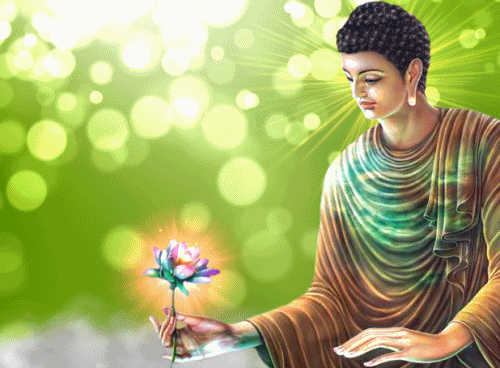
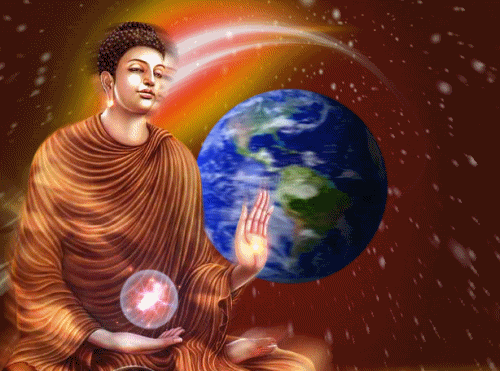

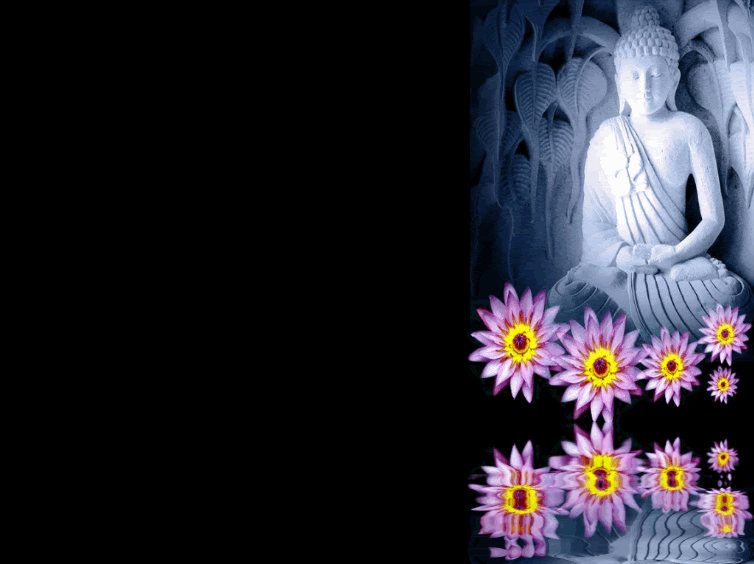


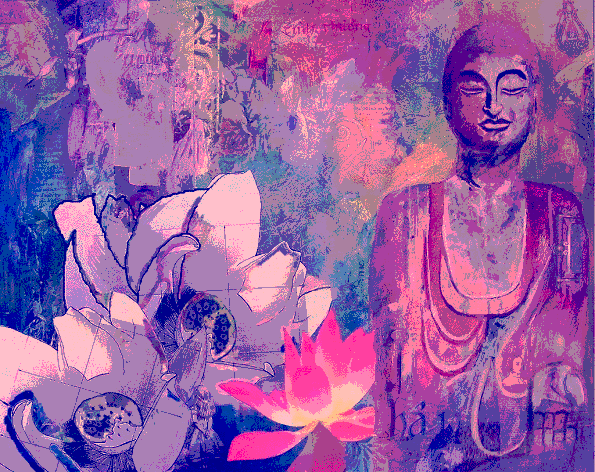
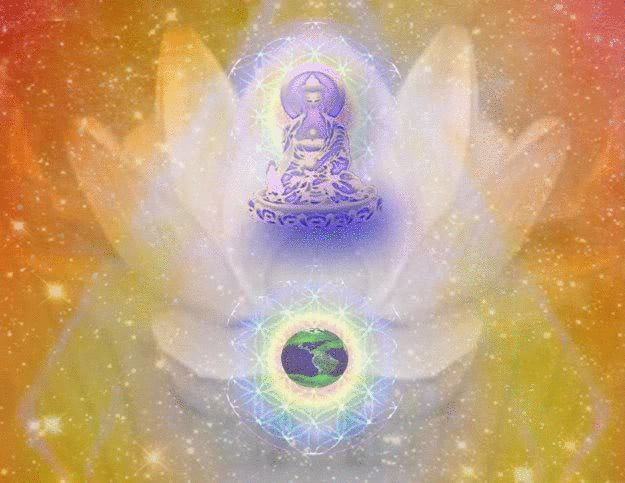


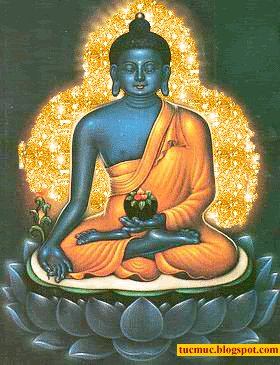

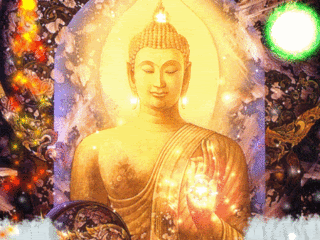







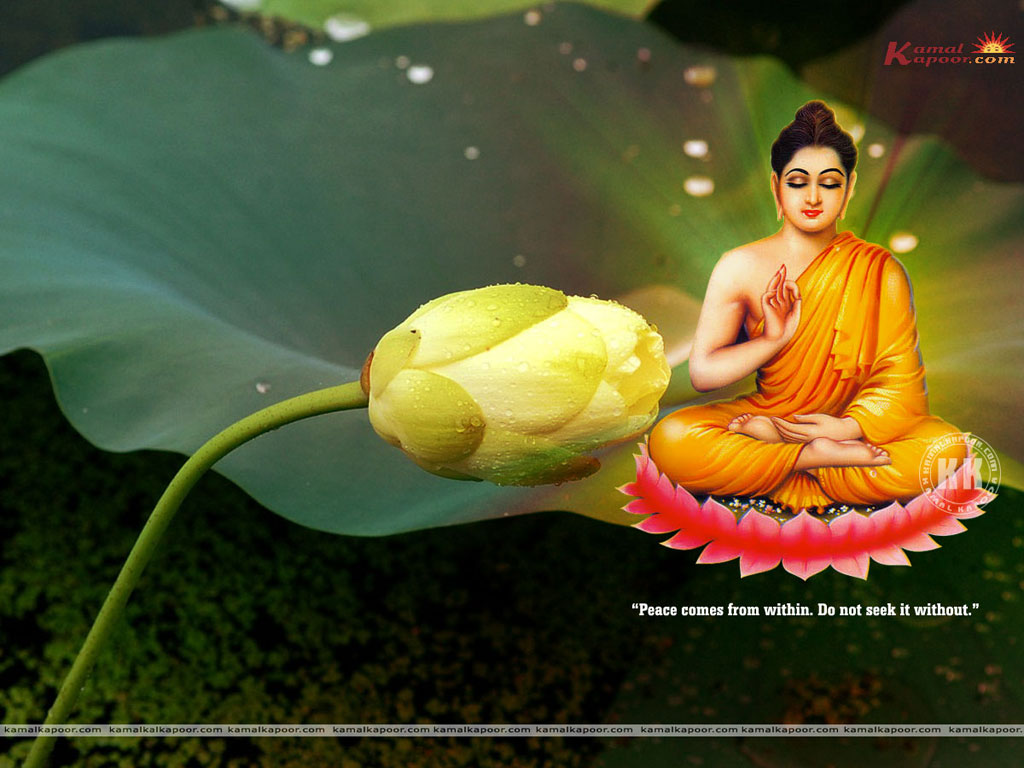
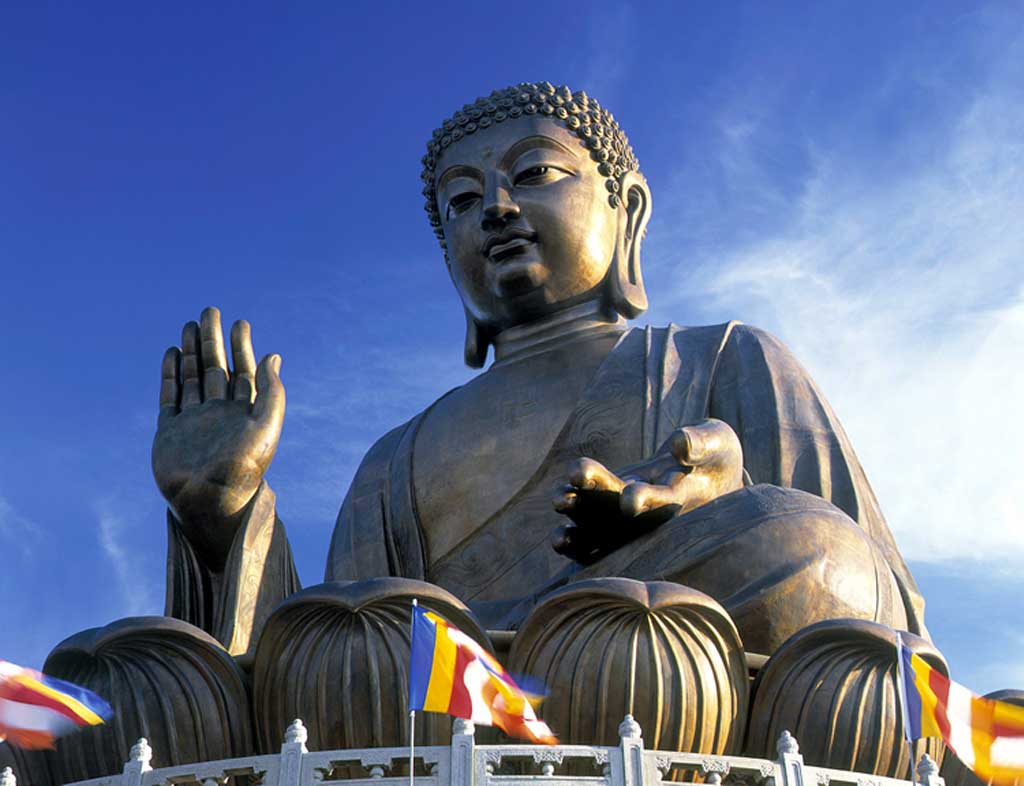





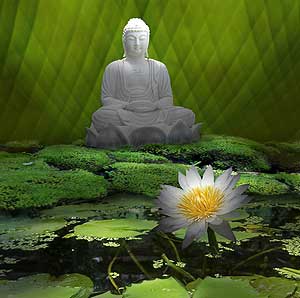








































![[Main ROKPA Homepage]](http://www.samye.org/images/anilonew.gif)

















































































































































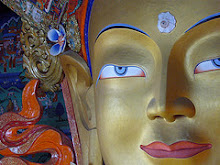
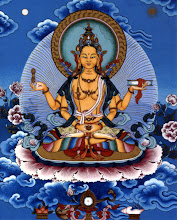








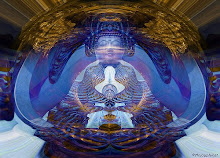



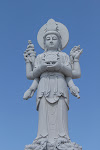


















































Anti-reservationists got defeated very badly. Those who will oppose
representation to Bahujans will be termed as anti-nationals. Reservation
is the process of nation building. We all Sarvajans wholeheartedly thank
our leader and true successor of Kanshiramji Sahab, Kum.Mayawatiji for
her extrordinary leadership and vision. With her great efforts SC/ST
quota Bill passed in Rajya Sabha with 206 for and 10 (SP) against. Let
the Sarvajan Samaj carry forward the Movement. Jai Bheem Jai
KanshiramJi!
People of US had once again proved that they are broad-minded by again
electing Obama as their president. here also Sarvajan Samaj proved that
they no where inferior to the People of US. May they hand over the
MASTERKEY to BSP as desired by Dr Ambedkar to unlock all the doors of
progress and development.
Sampajañña
C. பதுமம் பிரிவு
மேலும்,பிக்குக்களுக்களே,ஒரு பிக்கு, அணுகும்
பொழுது மற்றும் விட்டு நீங்கும் பொழுது, sampajañña நிரந்தரமான தீர்க்கமான
உணருந்திறனுடன் நுணுகிக்கண்டு செயல் படுகிரார், முன் நோக்கி கவனித்துப்
பார்க்கும் பொழுது மற்றும் எல்லாப் பக்கங்களிலும் கவனித்துப் பார்க்கும்
பொழுது,sampajañña நிரந்தரமான தீர்க்கமான உணருந்திறனுடன் நுணுகிக்கண்டு
செயல் படுகிரார், வளைக்கிற பொழுது மற்றும் நெட்டிமுறியும்
பொழுது,sampajañña நிரந்தரமான தீர்க்கமான உணருந்திறனுடன் நுணுகிக்கண்டு
செயல் படுகிரார், பதவிக்குரிய நீண்ட மேலங்கி அணிந்து கொள் பொழுது மற்றும்
தளர்த்தியான மேலங்கி மற்றும் ஐயக்கடிஞை எடுத்துச் செல்லும்
பொழுது,sampajañña நிரந்தரமான தீர்க்கமான உணருந்திறனுடன் நுணுகிக்கண்டு
செயல் படுகிரார், உண்ணும் பொழுது, குடிக்கும் பொழுது, மெல்லும் பொழுது,
சுவைக்கும் பொழுது,sampajañña நிரந்தரமான தீர்க்கமான உணருந்திறனுடன்
நுணுகிக்கண்டு செயல் படுகிரார், வண்டலகற்றும் மற்றும் சிறுநீர் கழிக்கும்
பணி கவனிக்கும் பொழுது,sampajañña நிரந்தரமான தீர்க்கமான உணருந்திறனுடன்
நுணுகிக்கண்டு செயல் படுகிரார், நடந்து செல்கிறே பொழுது நின்று
கொண்டிருக்கிற பொழுது,
உட்கார்ந்திருக்கிற பொழுது, படுத்திருத்திருக்கிற
பொழுது, விழிதிருக்கிற பொழுது, உரையாடுகிற பொழுது, பேசாமலிருக்கிற பொழுது,
sampajañña நிரந்தரமான தீர்க்கமான உணருந்திறனுடன் நுணுகிக்கண்டு செயல்
படுகிரார்.
இவ்வாறு அவர் kāya in kāya உடல்/காயத்தை காயதுக்குள்
கண்காணி வாசம் செய்கிரார், அல்லது காயத்தை காயதுக்கு வெளியே கண்காணி வாசம்
செய்கிரார், அல்லது காயத்தை காயதுக்கு உள்ளே மற்றும் வெளியே கண்காணி வாசம்
செய்கிரார்;புலன்களால் உணரத்தக்க எழுச்சி கண்காணி வாசம் செய்கிரார்,
மற்றும் புலன்களால் உணரத்தக்கதை கடந்துசெல்லுவதை கண்காணித்து வாசம்
செய்கிரார்; இல்லாவிடில் எச்சரிக்கையாயிருக்கிற உணர் உடனிருக்கிறதை,சும்மா
வெறும் ஓர்அளவு ஞானம் மற்றும் ஓர்அளவு paṭissati என எண்ணி பற்றறு வாசம்
செய்கிரார்.
C- -ஸம்பஞான
புனசாபரங், பிக்காவெ, பிக்கு அபிக்கந்தெ பட்டிக்கந்தெ ஸம்பஜானகாரி ஹோதி, ஆலொகித விலொகிதெ ஸம்பஜானகாரி ஹோதி, ஸமிஞிதெ பஸாரிதெ ஸம்பஜானகாரி ஹோதி, ஸங்காதி-பட்ட-சிவர-தாரணெ ஸம்பஜானகாரி ஹோதி, அஸிதெ பீதெ காயிதெ ஸாயிதெ ஸம்பஜானகாரி ஹோதி, உச்சார-பஸ்ஸாவ-கம்மெ ஸம்பஜானகாரி ஹோதி, காதெ தித்தெ நிஸ்ஸினெ ஸுத்தெ ஜாகரிதெ பாஸிதெ துனிஹீபாவெ ஸம்பஜானகாரி ஹோதி.
இதி அஜ்ஜஹதங் வா காயெ காயானுபஸ்ஸி விஹாரதி, பஹிதா வா காயெ காயானுபஸ்ஸி விஹாரதி, அஜ்ஜஹத-பஹிதா வா காயெ காயானுபஸ்ஸி விஹாரதி: ஸமுதய தம்மானுபஸ்ஸி வா காயாஸ்மிங் விஹாரதி, வாய-தம்மானுபஸ்ஸி வா காயாஸ்மிங் விஹாரதி, ஸமுதய-வாய-தம்மானுபஸ்ஸி வா காயாஸ்மிங் விஹாரதி; ‘அத்தி காயொ, தி வா பண்ணஸ்ஸ சதி பச்சுபத்திதா ஹோதி. யாவதேவ ஞானமத்தாய பதிஸ்ஸதிமத்தாய. அனிஸ்ஸிதொ ச விஹாரதி. ந ச கின்சி லோகெ உபாதியதி. ஏவம்பி கொ,பிக்காவெ, பிக்கு காயெ காயானுபஸ்ஸி விஹாரதி.
C. Sampajāna Pabba
Puna ca·paraṃ,
bhikkhave, bhikkhu abhikkante paṭikkante sampajānakārī hoti, ālokite
vilokite sampajānakārī hoti, samiñjite pasārite sampajānakārī hoti,
saṅghāṭi-patta-cīvara-dhāraṇe sampajānakārī hoti, asite pīte khāyite
sāyite sampajānakārī hoti, uccāra-passāva-kamme sampajānakārī hoti, gate
ṭhite nisinne sutte jāgarite bhāsite tuṇhībhāve sampajānakārī hoti.
Iti ajjhattaṃ vā kāye kāyānupassī viharati, bahiddhā vā kāye kāyānupassī viharati, ajjhatta-bahiddhā vā kāye kāyānupassī viharati; samudaya-dhamm·ānupassī vā kāyasmiṃ viharati, vaya-dhamm·ānupassī vā kāyasmiṃ viharati, samudaya-vaya-dhamm·ānupassī vā kāyasmiṃ viharati; ‘atthi kāyo’ ti vā pan·assa sati paccupaṭṭhitā hoti, yāvadeva ñāṇa·mattāya paṭissati·mattāya, a·nissito ca viharati, na ca kiñci loke upādiyati. Evam·pi kho, bhikkhave, bhikkhu kāye kāyānupassī viharati.
Furthermore, bhikkhus, a bhikkhu, while approaching and while departing,
acts with sampajañña (
Consciousness, intelligence), while looking ahead and while looking around, he
acts with sampajañña (Consciousness, intelligence), while bending and while stretching, he acts with
sampajañña (Consciousness, intelligence), while wearing the robes and the upper robe and while
carrying the bowl, he acts with sampajañña (Consciousness, intelligence), while eating, while
drinking, while chewing, while tasting, he acts with sampajañña (Consciousness, intelligence),
while
attending to the business of defecating and urinating, he acts with
sampajañña (Consciousness, intelligence), while walking, while standing, while sitting, while
sleeping, while being awake, while talking and while being silent, he
acts with sampajañña (Consciousness, intelligence). Thus he dwells observing kāya in kāya (the body in the threshold of the body)internally, or he dwells observing kāya in kāya (the body in the threshold of the body) externally, or he dwells observing kāya in kāya (the body in the threshold of the body) internally and externally; he dwells observing the samudaya (Rise, origin, commencement; origination, cause; multitude) of phenomena (sapindus detergens)in kāya (body), or he dwells observing the passing away of phenomena in kāya, or he dwells observing the samudaya and passing away of phenomena (sapindus detergens) in kāya (body); or else, [realizing:] “this is kāya!” sati is present in him, just to the extent of mere ñāṇa and mere paṭissati, he dwells detached, and does not cling to anything in the world. Thus, bhikkhus, a bhikkhu dwells observing kāya in kāya (the body in the threshold of the body).